Tag #concept
1380 papers:
 EDM-2019-AiCGZWFW #learning #online #recommendation
EDM-2019-AiCGZWFW #learning #online #recommendation- Concept-Aware Deep Knowledge Tracing and Exercise Recommendation in an Online Learning System (FA, YC, YG, YZ, ZW, GF, GW).
 EDM-2019-KolbFP
EDM-2019-KolbFP - Generalizing Expert Misconception Diagnoses Through Common Wrong Answer Embedding (JK, SF, ZAP).
 EDM-2019-LiangYZPG #case study #learning #partial order #strict
EDM-2019-LiangYZPG #case study #learning #partial order #strict- Active Learning of Strict Partial Orders: A Case Study on Concept Prerequisite Relations (CL0, JY, HZ0, BP, CLG).
 EDM-2019-Venantd #complexity #graph #predict #semantics #towards
EDM-2019-Venantd #complexity #graph #predict #semantics #towards- Towards the Prediction of Semantic Complexity Based on Concept Graphs (RV, Md).
 EDM-2019-WileyBPL
EDM-2019-WileyBPL - Beyond Autoscoring: Extracting Conceptual Connections from Essays for Classroom Instruction (KJW, AB, ZAP, MCL).
 EDM-2019-WileyBPL19a
EDM-2019-WileyBPL19a - Beyond Autoscoring: Extracting Conceptual Connections from Essays for Classroom Instruction (KJW, AB, ZAP, MCL).
 MSR-2019-LeSB #assessment #automation
MSR-2019-LeSB #assessment #automation- Automated software vulnerability assessment with concept drift (THML, BS, MAB), pp. 371–382.
 FM-2019-Eschbach #data analysis #industrial #monitoring
FM-2019-Eschbach #data analysis #industrial #monitoring- Industrial Application of Event-B to a Wayside Train Monitoring System: Formal Conceptual Data Analysis (RE), pp. 738–745.
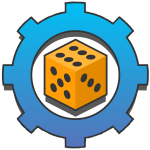 CoG-2019-NygrenD #case study #game studies #self #using
CoG-2019-NygrenD #case study #game studies #self #using- Using Simple Games to Evaluate Self-Organization Concepts: a Whack-a-mole Case Study (NN, JD), pp. 1–8.
 FDG-2019-JemmaliKBARE #design #game studies #learning #programming #using
FDG-2019-JemmaliKBARE #design #game studies #learning #programming #using- Using game design mechanics as metaphors to enhance learning of introductory programming concepts (CJ, EK, SB, MVA, ER, MSEN), p. 5.
 FDG-2019-ZhuAFNCSVO #education #game studies #how #parallel #programming
FDG-2019-ZhuAFNCSVO #education #game studies #how #parallel #programming- Programming in game space: how to represent parallel programming concepts in an educational game (JZ, KA, AF, JN, BC, BKS, JV, SO), p. 10.
 VS-Games-2019-Gabriel #design #game studies #using
VS-Games-2019-Gabriel #design #game studies #using- We Make Games. Using Serious Game Design Concepts in Secondary School (SG), pp. 1–4.
 CIKM-2019-GozuacikBBC #classification #detection
CIKM-2019-GozuacikBBC #classification #detection- Unsupervised Concept Drift Detection with a Discriminative Classifier (ÖG, AB, HRB, FC), pp. 2365–2368.
 CIKM-2019-LuoYZGY #e-commerce
CIKM-2019-LuoYZGY #e-commerce- Conceptualize and Infer User Needs in E-commerce (XL, YY, KQZ, YG, KY), pp. 2517–2525.
 CIKM-2019-TianKA0C #adaptation #detection #health #monitoring #online
CIKM-2019-TianKA0C #adaptation #detection #health #monitoring #online- Concept Drift Adaption for Online Anomaly Detection in Structural Health Monitoring (HT, NLDK, AA, YW0, FC0), pp. 2813–2821.
 ICML-2019-KaplanMMS #geometry #learning
ICML-2019-KaplanMMS #geometry #learning- Differentially Private Learning of Geometric Concepts (HK, YM, YM, US), pp. 3233–3241.
 KDD-2019-HaoCYSW #knowledge base #learning #ontology #representation
KDD-2019-HaoCYSW #knowledge base #learning #ontology #representation- Universal Representation Learning of Knowledge Bases by Jointly Embedding Instances and Ontological Concepts (JH, MC, WY, YS, WW), pp. 1709–1719.
 KDD-2019-JhaXWZ #co-evolution #generative
KDD-2019-JhaXWZ #co-evolution #generative- Hypothesis Generation From Text Based On Co-Evolution Of Biomedical Concepts (KJ, GX, YW, AZ), pp. 843–851.
 KDD-2019-LiuGNWXLLX #comprehension #documentation #mining #query
KDD-2019-LiuGNWXLLX #comprehension #documentation #mining #query- A User-Centered Concept Mining System for Query and Document Understanding at Tencent (BL, WG, DN, CW, SX, JL, KL, YX), pp. 1831–1841.
 Onward-2019-Rosso0ALM #assembly #declarative #web
Onward-2019-Rosso0ALM #assembly #declarative #web- Declarative assembly of web applications from predefined concepts (SPDR, DJ0, MA, CL, BAMI), pp. 79–93.
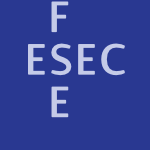 ESEC-FSE-2019-WidderHKV #integration #replication
ESEC-FSE-2019-WidderHKV #integration #replication- A conceptual replication of continuous integration pain points in the context of Travis CI (DGW, MH, CK, BV), pp. 647–658.
 EDM-2018-AlsaadBGSZ #dependence #graph #mining
EDM-2018-AlsaadBGSZ #dependence #graph #mining- Mining MOOC Lecture Transcripts to Construct Concept Dependency Graphs (FA, AB, CG, HS, CZ).
 EDM-2018-Perez-LemoncheD #mining #student
EDM-2018-Perez-LemoncheD #mining #student- Mining Student Misconceptions from Pre- and Post-Testing Data (ÁPL, BD, DEP).
 ICSME-2018-WangK #debugging #open source #replication
ICSME-2018-WangK #debugging #open source #replication- A Conceptual Replication Study on Bugs that Get Fixed in Open Source Software (HW, HHK), pp. 299–310.
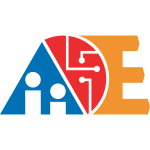 AIIDE-2018-GuzdialR #automation #design #game studies
AIIDE-2018-GuzdialR #automation #design #game studies- Automated Game Design via Conceptual Expansion (MG, MR), pp. 31–37.
 DiGRA-2018-BoonenCISN #game studies
DiGRA-2018-BoonenCISN #game studies- Contextualizing Pathological Gaming - A Proof-of-Concept Study (CSB, MVC, AWI, MMS, RKLN).
 DiGRA-2018-FerriHHS #design #game studies
DiGRA-2018-FerriHHS #design #game studies- Design Concepts for Empowerment through Urban Play (GF, NBH, AvH, BAMS).
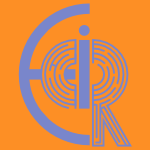 ECIR-2018-Abdulahhad #information retrieval
ECIR-2018-Abdulahhad #information retrieval- Concept Embedding for Information Retrieval (KA), pp. 563–569.
 ICML-2018-KimWGCWVS #testing
ICML-2018-KimWGCWVS #testing- Interpretability Beyond Feature Attribution: Quantitative Testing with Concept Activation Vectors (TCAV) (BK, MW, JG, CJC, JW, FBV, RS), pp. 2673–2682.
 ICPR-2018-RosenfeldU #classification
ICPR-2018-RosenfeldU #classification- Action Classification via Concepts and Attributes (AR, SU), pp. 1499–1505.
 KDD-2018-JhaXWGZ #evolution #named
KDD-2018-JhaXWGZ #evolution #named- Concepts-Bridges: Uncovering Conceptual Bridges Based on Biomedical Concept Evolution (KJ, GX, YW, VG, AZ), pp. 1599–1607.
 ESEC-FSE-2018-Meijer #framework #learning #programming language
ESEC-FSE-2018-Meijer #framework #learning #programming language- Behind every great deep learning framework is an even greater programming languages concept (keynote) (EM0), p. 1.
- ICSE-2018-LaraG #analysis #modelling #type system
- A posteriori typing for model-driven engineering: concepts, analysis, and applications (JdL, EG), p. 1136.
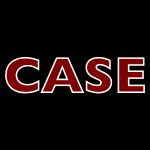 CASE-2018-HuaH #induction #learning #logic programming #semantics
CASE-2018-HuaH #induction #learning #logic programming #semantics- Concept Learning in AutomationML with Formal Semantics and Inductive Logic Programming (YH, BH), pp. 1542–1547.
 CASE-2018-WangKZY #data type #detection #learning #multi
CASE-2018-WangKZY #data type #detection #learning #multi- A Multiscale Concept Drift Detection Method for Learning from Data Streams (XW, QK, MZ, SY), pp. 786–790.
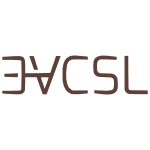 CSL-2018-GradelH #dependence #equivalence
CSL-2018-GradelH #dependence #equivalence- Dependency Concepts up to Equivalence (EG, MH), p. 21.
 CSEET-2017-DaunBOPMSR #education #feedback #modelling #online
CSEET-2017-DaunBOPMSR #education #feedback #modelling #online- Teaching Conceptual Modeling in Online Courses: Coping with the Need for Individual Feedback to Modeling Exercises (MD, JB, PAO, KP, SM, HS, MR), pp. 134–143.
 EDM-2017-MichalenkoLWGB
EDM-2017-MichalenkoLWGB - Data-Mining Textual Responses to Uncover Misconception Patterns (JJM, ASL, AEW, PG, RGB).
 MSR-2017-Patil #classification #fault
MSR-2017-Patil #classification #fault- Concept-based classification of software defect reports (SP), pp. 182–186.
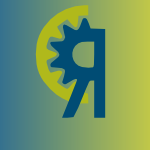 SANER-2017-RahmanR #identification #information retrieval #named #strict
SANER-2017-RahmanR #identification #information retrieval #named #strict- STRICT: Information retrieval based search term identification for concept location (MMR0, CKR), pp. 79–90.
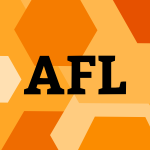 AFL-2017-NagyPS #automaton
AFL-2017-NagyPS #automaton- A New Sensing 5'->3' Watson-Crick Automata Concept (BN, SP, HMMS), pp. 195–204.
 CIKM-2017-Duong-TrungS #documentation #on the #topic
CIKM-2017-Duong-TrungS #documentation #on the #topic- On Discovering the Number of Document Topics via Conceptual Latent Space (NDT, LST), pp. 2051–2054.
 CIKM-2017-KrishnanSZ0 #categorisation #documentation
CIKM-2017-KrishnanSZ0 #categorisation #documentation- Unsupervised Concept Categorization and Extraction from Scientific Document Titles (AK, AS, SZ, JH0), pp. 1339–1348.
 CIKM-2017-OsickaT #composition #matrix
CIKM-2017-OsickaT #composition #matrix- Boolean Matrix Decomposition by Formal Concept Sampling (PO, MT), pp. 2243–2246.
 KDD-2017-LiHG #enterprise #spreadsheet #using
KDD-2017-LiHG #enterprise #spreadsheet #using- Discovering Enterprise Concepts Using Spreadsheet Tables (KL, YH, KG), pp. 1873–1882.
 ASE-2017-LinZZX #retrieval #source code #using
ASE-2017-LinZZX #retrieval #source code #using- Improving software text retrieval using conceptual knowledge in source code (ZL, YZ, JZ, BX), pp. 123–134.
 ASE-2017-RahmanR #documentation #query #using
ASE-2017-RahmanR #documentation #query #using- Improved query reformulation for concept location using CodeRank and document structures (MMR, CKR), pp. 428–439.
 CASE-2017-WakabayashiKKK #named #process
CASE-2017-WakabayashiKKK #named #process- KitPaDy: Robot co-worker in kitting process: Basic concept and computation of working time (YW, MK, JK, KK), pp. 320–327.
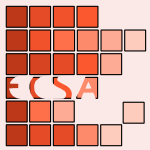 ECSA-2016-AbukwaikAR #analysis #api #automation #constraints #documentation #identification #towards
ECSA-2016-AbukwaikAR #analysis #api #automation #constraints #documentation #identification #towards- Towards Seamless Analysis of Software Interoperability: Automatic Identification of Conceptual Constraints in API Documentation (HA, MA, HDR), pp. 67–83.
 CSEET-2016-WeiDCS #education #framework #graph #modelling #requirements #uml
CSEET-2016-WeiDCS #education #framework #graph #modelling #requirements #uml- A Conceptual Graphs Framework for Teaching UML Model-Based Requirements Acquisition (BW, HSD, EC, CS), pp. 71–75.
 EDM-2016-JiangLZL #generative #semantics
EDM-2016-JiangLZL #generative #semantics- Generating Semantic Concept Map for MOOCs (ZJ, PL, YZ, XL), pp. 595–596.
 EDM-2016-Rau #learning #mining #physics #social
EDM-2016-Rau #learning #mining #physics #social- Pattern mining uncovers social prompts of conceptual learning with physical and virtual representations (MAR), pp. 478–483.
 EDM-2016-Wang #design #interactive #learning #personalisation
EDM-2016-Wang #design #interactive #learning #personalisation- Designing Interactive and Personalized Concept Mapping Learning Environments (SW0), pp. 678–680.
 EDM-2016-ZhengKTG #clustering #physics #using
EDM-2016-ZhengKTG #clustering #physics #using- Soft Clustering of Physics Misconceptions Using a Mixed Membership Model (GZ, SK, YT, AG), pp. 658–659.
 ICSME-2016-StanciulescuBWW
ICSME-2016-StanciulescuBWW - Concepts, Operations, and Feasibility of a Projection-Based Variation Control System (SS, TB, EW, AW), pp. 323–333.
 SANER-2016-FontanaDWYZ #classification #smell
SANER-2016-FontanaDWYZ #classification #smell- Antipattern and Code Smell False Positives: Preliminary Conceptualization and Classification (FAF, JD0, BW, AY, MZ), pp. 609–613.
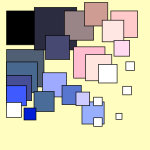 SCAM-2016-LossingGI #c #compilation #dependence #graph #text-to-text
SCAM-2016-LossingGI #c #compilation #dependence #graph #text-to-text- Effects Dependence Graph: A Key Data Concept for C Source-to-Source Compilers (NL, PG, FI), pp. 167–176.
 CIKM-2016-Balaneshinkordan #graph #query #using
CIKM-2016-Balaneshinkordan #graph #query #using- Sequential Query Expansion using Concept Graph (SB, AK), pp. 155–164.
 CIKM-2016-PiaoB #modelling #personalisation #recommendation #twitter
CIKM-2016-PiaoB #modelling #personalisation #recommendation #twitter- User Modeling on Twitter with WordNet Synsets and DBpedia Concepts for Personalized Recommendations (GP, JGB), pp. 2057–2060.
 CIKM-2016-TutekGSMB #detection #knowledge base #ranking #using
CIKM-2016-TutekGSMB #detection #knowledge base #ranking #using- Detecting and Ranking Conceptual Links between Texts Using a Knowledge Base (MT, GG, JS, NMF, BDB), pp. 2077–2080.
 CIKM-2016-WangOWWLPG #using
CIKM-2016-WangOWWLPG #using- Using Prerequisites to Extract Concept Maps fromTextbooks (SW, AO, ZW0, KW, CL0, BP, CLG), pp. 317–326.
 ECIR-2016-TamineS #collaboration #evaluation #information retrieval #modelling
ECIR-2016-TamineS #collaboration #evaluation #information retrieval #modelling- Collaborative Information Retrieval: Concepts, Models and Evaluation (LT, LS), pp. 885–888.
 ICPR-2016-KaremF #learning #multi
ICPR-2016-KaremF #learning #multi- Multiple Instance Learning with multiple positive and negative target concepts (AK, HF), pp. 474–479.
 KDD-2016-ChoiBSCTBTS #learning #multi #representation
KDD-2016-ChoiBSCTBTS #learning #multi #representation- Multi-layer Representation Learning for Medical Concepts (EC, MTB, ES, CC, MT, JB, JTS, JS), pp. 1495–1504.
 SKY-2016-Exman #composition #matrix
SKY-2016-Exman #composition #matrix- The Modularity Matrix as a Source of Software Conceptual Integrity (IE), pp. 27–35.
 SKY-2016-Exman16a #overview #perspective
SKY-2016-Exman16a #overview #perspective- Conceptual Integrity of Software Systems - An Overview (IE), pp. 81–83.
 SKY-2016-ExmanK #analysis #named
SKY-2016-ExmanK #analysis #named- Modulaser: A Tool for Conceptual Analysis of Software Systems (IE, PK), pp. 19–26.
 SKY-2016-Martins #assessment #modelling #quality
SKY-2016-Martins #assessment #modelling #quality- Some Blends Are Better Than Others: Blend Quality Assessment in Computational Models of Concept Blending (PM), p. 5.
 SKY-2016-Speicher
SKY-2016-Speicher - Concept Lattices as a Versatile Tool to Discover Knowledge in Software (DS), p. 3.
 ECMFA-2016-ZhangSAYON #comprehension #cyber-physical #nondeterminism
ECMFA-2016-ZhangSAYON #comprehension #cyber-physical #nondeterminism- Understanding Uncertainty in Cyber-Physical Systems: A Conceptual Model (MZ, BS, SA, TY, OO, RN), pp. 247–264.
 MoDELS-2016-Kuhne #modelling #ontology #towards
MoDELS-2016-Kuhne #modelling #ontology #towards- Unifying explanatory and constructive modeling: towards removing the gulf between ontologies and conceptual models (TK), pp. 95–102.
 OOPSLA-2016-RossoJ #git
OOPSLA-2016-RossoJ #git- Purposes, concepts, misfits, and a redesign of git (SPDR, DJ0), pp. 292–310.
 ASE-2016-RahmanR #automation #crowdsourcing #named #query #using
ASE-2016-RahmanR #automation #crowdsourcing #named #query #using- QUICKAR: automatic query reformulation for concept location using crowdsourced knowledge (MMR, CKR), pp. 220–225.
 CASE-2016-StenzelL #distributed #mobile
CASE-2016-StenzelL #distributed #mobile- Concept of decentralized cooperative path conflict resolution for heterogeneous mobile robots (JS, DL), pp. 715–720.
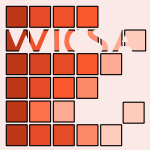 WICSA-2015-AbukwaikNR #analysis
WICSA-2015-AbukwaikNR #analysis- A Proactive Support for Conceptual Interoperability Analysis in Software Systems (HA, MN, HDR), pp. 119–122.
 WICSA-2015-BarnettVT #architecture #mobile
WICSA-2015-BarnettVT #architecture #mobile- A Conceptual Model for Architecting Mobile Applications (SB, RV, AT), pp. 105–114.
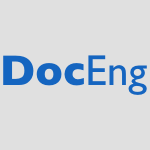 DocEng-2015-WangLWWPBSWBG
DocEng-2015-WangLWWPBSWBG - Concept Hierarchy Extraction from Textbooks (SW, CL, ZW, KW, BP, BB, SS, HW, KB, CLG), pp. 147–156.
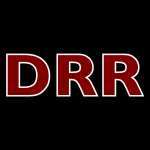 DRR-2015-LamiroyBBCGHL #documentation #parametricity
DRR-2015-LamiroyBBCGHL #documentation #parametricity- Re-typograph phase I: a proof-of-concept for typeface parameter extraction from historical documents (BL, TB, JB, HC, SG, RH, ML).
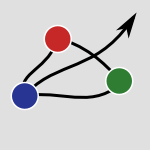 HT-2015-AhlersM #challenge #collaboration #network #semantics
HT-2015-AhlersM #challenge #collaboration #network #semantics- Everything is Filed under “File”: Conceptual Challenges in Applying Semantic Search to Network Shares for Collaborative Work (DA, MM), pp. 327–328.
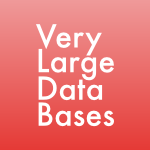 VLDB-2015-SeahBS #image #named #social #summary
VLDB-2015-SeahBS #image #named #social #summary- PRISM: Concept-preserving Summarization of Top-K Social Image Search Results (BSS, SSB, AS), pp. 1868–1879.
 EDM-2015-BoseDB
EDM-2015-BoseDB - Discovering Concept Maps from Textual Sources (RPJCB, OD, RB), pp. 624–625.
 EDM-2015-BumbacherSWB #behaviour #comprehension #development #how #learning #physics
EDM-2015-BumbacherSWB #behaviour #comprehension #development #how #learning #physics- Learning Environments and Inquiry Behaviors in Science Inquiry Learning: How Their Interplay Affects the Development of Conceptual Understanding in Physics (EB, SS, MW, PB), pp. 61–68.
 ITiCSE-2015-AtapattuFF #adaptation #online
ITiCSE-2015-AtapattuFF #adaptation #online- Task-Adapted Concept Map Scaffolding to Support Quizzes in an Online Environment (TA, KEF, NJGF), pp. 272–277.
 ITiCSE-2015-MartinezGB #comparison #framework #learning #multi #platform #programming
ITiCSE-2015-MartinezGB #comparison #framework #learning #multi #platform #programming- A Comparison of Preschool and Elementary School Children Learning Computer Science Concepts through a Multilanguage Robot Programming Platform (MCM, MJG, LB), pp. 159–164.
 SANER-2015-NagyMC #approach #query #sql
SANER-2015-NagyMC #approach #query #sql- Where was this SQL query executed? a static concept location approach (CN, LM, AC), pp. 580–584.
 FM-2015-SchutsH #development #formal method
FM-2015-SchutsH #development #formal method- Formalizing the Concept Phase of Product Development (MS, JH), pp. 605–608.
 CHI-PLAY-2015-ZendleCK #game studies #video #visual notation
CHI-PLAY-2015-ZendleCK #game studies #video #visual notation- Higher Graphical Fidelity Decreases Players' Access to Aggressive Concepts in Violent Video Games (DZ, PAC, DK), pp. 241–251.
 DiGRA-2015-Friman #game studies #gender #research
DiGRA-2015-Friman #game studies #gender #research- The Concept and Research of Gendered Game Culture (UF).
 FDG-2015-ChauNSP #api #education #game studies #programming
FDG-2015-ChauNSP #api #education #game studies #programming- Building Casual Games and APIs for Teaching Introductory Programming Concepts (BC, RN, KS, JP).
 FDG-2015-TanenbaumT15a #future of #game studies #modelling #smarttech
FDG-2015-TanenbaumT15a #future of #game studies #modelling #smarttech- Envisioning the Future of Wearable Play: Conceptual Models for Props and Costumes as Game Controllers (JGT0, KT).
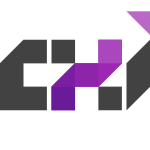 CHI-2015-Baumer #design
CHI-2015-Baumer #design- Reflective Informatics: Conceptual Dimensions for Designing Technologies of Reflection (EPSB), pp. 585–594.
 CHI-2015-CartwrightP #named #sketching
CHI-2015-CartwrightP #named #sketching- VocalSketch: Vocally Imitating Audio Concepts (MC, BP), pp. 43–46.
 CHI-2015-MayerHJ #challenge #design #social
CHI-2015-MayerHJ #challenge #design #social- Making Social Matching Context-Aware: Design Concepts and Open Challenges (JMM, SRH, QJ), pp. 545–554.
 CHI-2015-VigoJS #authoring #ontology #process
CHI-2015-VigoJS #authoring #ontology #process- Constructing Conceptual Knowledge Artefacts: Activity Patterns in the Ontology Authoring Process (MV, CJ, RS), pp. 3385–3394.
 CSCW-2015-LeeP #coordination #framework #matrix
CSCW-2015-LeeP #coordination #framework #matrix- From The Matrix to a Model of Coordinated Action (MoCA): A Conceptual Framework of and for CSCW (CPL, DP), pp. 179–194.
 DUXU-DD-2015-HakkilaCIAR
DUXU-DD-2015-HakkilaCIAR - Exploring Digital Service Concepts for Healthy Lifestyles (JH, AC, VI, MA, JR), pp. 470–480.
 DUXU-IXD-2015-Ovesleova #adaptation #motivation #online #platform #student #user interface
DUXU-IXD-2015-Ovesleova #adaptation #motivation #online #platform #student #user interface- E-Learning Platforms and Lacking Motivation in Students: Concept of Adaptable UI for Online Courses (HO), pp. 218–227.
 DUXU-UI-2015-AmaralBBM #human-computer #women
DUXU-UI-2015-AmaralBBM #human-computer #women- Introducing Computer Science to Brazilian Girls in Elementary School Through HCI Concepts (MAA, SAB, CB, CM), pp. 141–152.
 HCI-DE-2015-BoscarioliBSB #challenge #education #how #human-computer #industrial
HCI-DE-2015-BoscarioliBSB #challenge #education #how #human-computer #industrial- How to Join Theoretical Concepts, Industry Needs and Innovative Technologies in HCI Courses? The Big Challenge of Teaching HCI (CB, SAB, MSS, SDJB), pp. 27–36.
 HCI-DE-2015-StopkaPF #requirements
HCI-DE-2015-StopkaPF #requirements- User Requirements for Intermodal Mobility Applications and Acceptance of Operating Concepts (US, RP, KF), pp. 415–425.
 HCI-IT-2015-ZhaoH #game studies #online
HCI-IT-2015-ZhaoH #game studies #online- A Conceptual Model of Online Game Continuance Playing (FZ, QH), pp. 660–669.
 HCI-UC-2015-GandyBLLMCS
HCI-UC-2015-GandyBLLMCS - Midtown Buzz: Bridging the Gap Between Concepts and Impact in a Civic Computing Initiative (MG, LDB, LML, AJL, EDM, RJC, MS), pp. 303–313.
 HCI-UC-2015-ZhaoH15a #assessment #enterprise
HCI-UC-2015-ZhaoH15a #assessment #enterprise- Post-Implementation ERP Success Assessment: A Conceptual Model (FZ, EH), pp. 246–255.
 HIMI-IKC-2015-HayashiH #analysis #learning #process
HIMI-IKC-2015-HayashiH #analysis #learning #process- Analysis of the Relationship Between Metacognitive Ability and Learning Activity with Kit-Build Concept Map (YH, TH), pp. 304–312.
 HIMI-IKC-2015-HoriguchiTH #comprehension #physics #problem #sequence #student
HIMI-IKC-2015-HoriguchiTH #comprehension #physics #problem #sequence #student- The Effect of Problem Sequence on Students’ Conceptual Understanding in Physics (TH, TT, TH), pp. 313–322.
 HIMI-IKC-2015-SouzaBSBCA #framework
HIMI-IKC-2015-SouzaBSBCA #framework- Conceptual Framework to Enrich Situation Awareness of Emergency Dispatchers (JOdS, LCB, JESS, CBB, MRdC, RBdA), pp. 33–44.
 HIMI-IKD-2015-KaoW #interface #web
HIMI-IKD-2015-KaoW #interface #web- Narrower Conceptual Scope in the App Than the Web Store Interface — The Size Does It and the Ad Has It (CLK, MYW), pp. 204–214.
 HIMI-IKD-2015-ProssHTH #interactive #visualisation
HIMI-IKD-2015-ProssHTH #interactive #visualisation- A Concept for Visualizing Psychophysiological Data in Human Computer Interaction: The FeaturePlotter (FP, DH, HCT, HH), pp. 97–106.
 LCT-2015-Alvarez-Montero #feedback #overview #perspective #tool support
LCT-2015-Alvarez-Montero #feedback #overview #perspective #tool support- Feedback in Computer-Based Concept Mapping Tools: A Short Review (FJÁM, HJG, ERR), pp. 187–198.
 LCT-2015-KlockCCRAG #adaptation #gamification #student
LCT-2015-KlockCCRAG #adaptation #gamification #student- Gamification in e-Learning Systems: A Conceptual Model to Engage Students and Its Application in an Adaptive e-Learning System (ACTK, LFDC, MFdC, BER, AJA, IG), pp. 595–607.
 ICEIS-v1-2015-KnoblauchB #framework
ICEIS-v1-2015-KnoblauchB #framework- Conceptual Framework of Anything Relationship Management (JPK, RB), pp. 108–120.
 ICEIS-v1-2015-Roos-FrantzBFSF #integration #modelling #petri net #simulation #using
ICEIS-v1-2015-Roos-FrantzBFSF #integration #modelling #petri net #simulation #using- Using Petri Nets to Enable the Simulation of Application Integration Solutions Conceptual Models (FRF, MB, RZF, SS, VBF), pp. 87–96.
 ICEIS-v1-2015-YanguiNG #design #multi #network #social #towards
ICEIS-v1-2015-YanguiNG #design #multi #network #social #towards- Towards Data Warehouse Schema Design from Social Networks — Dynamic Discovery of Multidimensional Concepts (RY, AN, FG), pp. 338–345.
 ICEIS-v2-2015-CuencaBBT #case study #development #framework #multi
ICEIS-v2-2015-CuencaBBT #case study #development #framework #multi- Conceptual Interoperability Barriers Framework (CIBF) — A Case Study of Multi-organizational Software Development (LC, AB, ÁOB, JJMT), pp. 521–531.
 CIKM-2015-WangA #information retrieval #modelling #semantics
CIKM-2015-WangA #information retrieval #modelling #semantics- Concept-Based Relevance Models for Medical and Semantic Information Retrieval (CW, RA), pp. 173–182.
 ECIR-2015-SaracIGD #classification #flexibility #framework #named
ECIR-2015-SaracIGD #classification #flexibility #framework #named- ConceptFusion: A Flexible Scene Classification Framework (MIS, AI, EG, PD), pp. 55–60.
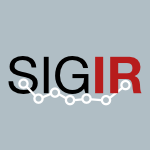 SIGIR-2015-ParkC #retrieval #using
SIGIR-2015-ParkC #retrieval #using- Using Key Concepts in a Translation Model for Retrieval (JHP, WBC), pp. 927–930.
 SKY-2015-Exman #composition #design #matrix
SKY-2015-Exman #composition #design #matrix- Software Design with the Modularity Matrix and the Modularity Conceptual Lattice (IE), pp. 72–73.
 SKY-2015-ExmanS #game studies
SKY-2015-ExmanS #game studies- Conceptual Object Exchanges among Software Games by Non-programmers (IE, GS), pp. 18–25.
 ICMT-2015-HilkenNGW #modelling #ocl #uml #validation #verification
ICMT-2015-HilkenNGW #modelling #ocl #uml #validation #verification- From UML/OCL to Base Models: Transformation Concepts for Generic Validation and Verification (FH, PN, MG, RW), pp. 149–165.
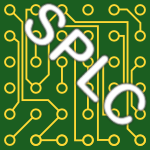 SPLC-2015-FontAHC #product line
SPLC-2015-FontAHC #product line- Building software product lines from conceptualized model patterns (JF, LA, ØH, CC), pp. 46–55.
 Onward-2015-Jackson #design #formal method #towards
Onward-2015-Jackson #design #formal method #towards- Towards a theory of conceptual design for software (DJ), pp. 282–296.
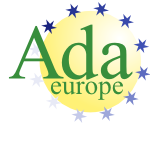 AdaEurope-2015-PerezGTT #clustering #manycore #safety
AdaEurope-2015-PerezGTT #clustering #manycore #safety- A Safety Concept for an IEC-61508 Compliant Fail-Safe Wind Power Mixed-Criticality System Based on Multicore and Partitioning (JP, DG, ST, TT), pp. 3–17.
 ASE-2015-Greene #framework #re-engineering
ASE-2015-Greene #framework #re-engineering- A Generic Framework for Concept-Based Exploration of Semi-Structured Software Engineering Data (GJG), pp. 894–897.
 ESEC-FSE-2015-JohnsonPMH #adaptation #developer #tool support
ESEC-FSE-2015-JohnsonPMH #adaptation #developer #tool support- Bespoke tools: adapted to the concepts developers know (BJ, RP, ERMH, SH), pp. 878–881.
 ICSE-v2-2015-AnvariRHB #design #effectiveness
ICSE-v2-2015-AnvariRHB #design #effectiveness- Effectiveness of Persona with Personality Traits on Conceptual Design (FA, DR, MH, MAB), pp. 263–272.
 SAC-2015-NwokejiCBK #enterprise #framework
SAC-2015-NwokejiCBK #enterprise #framework- A conceptual framework for enterprise agility (JCN, TC, BSB, VK), pp. 1242–1244.
 SAC-2015-StracciaM #estimation #fuzzy #learning #named #owl #probability #using
SAC-2015-StracciaM #estimation #fuzzy #learning #named #owl #probability #using- pFOIL-DL: learning (fuzzy) EL concept descriptions from crisp OWL data using a probabilistic ensemble estimation (US, MM), pp. 345–352.
 SAC-2015-ZhangYLC #debugging #mining #predict #repository
SAC-2015-ZhangYLC #debugging #mining #predict #repository- Predicting severity of bug report by mining bug repository with concept profile (TZ, GY, BL, ATSC), pp. 1553–1558.
 DAC-2015-MiuraFNHHA
DAC-2015-MiuraFNHHA - EM attack sensor: concept, circuit, and design-automation methodology (NM, DF, MN, NH, YiH, TA), p. 6.
 DATE-2015-KanounS #big data #data type #detection #learning #online #scheduling #streaming
DATE-2015-KanounS #big data #data type #detection #learning #online #scheduling #streaming- Big-data streaming applications scheduling with online learning and concept drift detection (KK, MvdS), pp. 1547–1550.
 DATE-2015-ShulakerWSWWM #3d #integration
DATE-2015-ShulakerWSWWM #3d #integration- Monolithic 3D integration: a path from concept to reality (MMS, TFW, MMS, HW, HSPW, SM), pp. 1197–1202.
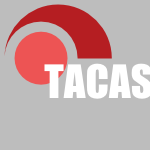 TACAS-2015-KumarSK #scalability #slicing
TACAS-2015-KumarSK #scalability #slicing- Value Slice: A New Slicing Concept for Scalable Property Checking (SK, AS, UPK), pp. 101–115.
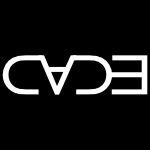 CADE-2015-AlamaOZ #automation
CADE-2015-AlamaOZ #automation- Automating Leibniz’s Theory of Concepts (JA, PEO, ENZ), pp. 73–97.
 ICST-2015-AlegrothGOM #component #empirical #evaluation #testing #user interface #visual notation
ICST-2015-AlegrothGOM #component #empirical #evaluation #testing #user interface #visual notation- Conceptualization and Evaluation of Component-Based Testing Unified with Visual GUI Testing: An Empirical Study (EA, ZG, RAPdO, AM), pp. 1–10.
 DocEng-2014-NourashrafeddinMA #approach #clustering #documentation #using #wiki
DocEng-2014-NourashrafeddinMA #approach #clustering #documentation #using #wiki- An ensemble approach for text document clustering using Wikipedia concepts (SN, EEM, DVA), pp. 107–116.
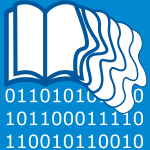 JCDL-2014-GonanoTMVP #formal method #linked data #open data
JCDL-2014-GonanoTMVP #formal method #linked data #open data- Zeri e LODE. Extracting the Zeri photo archive to linked open data: formalizing the conceptual model (CMG, FT, FM, FV, SP), pp. 289–298.
 JCDL-2014-SultanBS #automation #education #identification #towards
JCDL-2014-SultanBS #automation #education #identification #towards- Towards automatic identification of core concepts in educational resources (MAS, SB, TS), pp. 379–388.
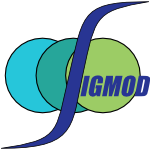 SIGMOD-2014-TermehchyVCW #question
SIGMOD-2014-TermehchyVCW #question- Which concepts are worth extracting? (AT, AV, YC, MW), pp. 779–790.
 ITiCSE-2014-FeasterAZH #education
ITiCSE-2014-FeasterAZH #education- Serious toys: three years of teaching computer science concepts in K-12 classrooms (YF, FA, JZ, JOH), pp. 69–74.
 ITiCSE-2014-Hidalgo-CespedesRL #design #game studies #learning #programming #video
ITiCSE-2014-Hidalgo-CespedesRL #design #game studies #learning #programming #video- Playing with metaphors: a methodology to design video games for learning abstract programming concepts (JHC, GMR, VLV), p. 348.
 ITiCSE-2014-MagnenatSRSB #education
ITiCSE-2014-MagnenatSRSB #education- Teaching a core CS concept through robotics (SM, JS, FR, RS, MBA), pp. 315–320.
 ITiCSE-2014-PorterTW #development #flexibility #open source
ITiCSE-2014-PorterTW #development #flexibility #open source- Leveraging open source principles for flexible concept inventory development (LP, CT, KCW), pp. 243–248.
 ITiCSE-2014-TedreBMC #classification #education #identification #towards
ITiCSE-2014-TedreBMC #classification #education #identification #towards- Towards identification and classification of core and threshold concepts in methodology education in computing (MT, DB, SMB, JCC), pp. 237–242.
 ITiCSE-2014-Tirronen #case study #type system
ITiCSE-2014-Tirronen #case study #type system- Study on difficulties and misconceptions with modern type systems (VT), pp. 303–308.
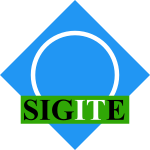 SIGITE-2014-Kussmaul #process #student
SIGITE-2014-Kussmaul #process #student- Guiding students to discover concepts and develop process skills with POGIL (CK), pp. 159–160.
 SFM-2014-AlbertAGR #concurrent #execution #generative #symbolic computation #testing
SFM-2014-AlbertAGR #concurrent #execution #generative #symbolic computation #testing- Test Case Generation by Symbolic Execution: Basic Concepts, a CLP-Based Instance, and Actor-Based Concurrency (EA, PA, MGZ, JMR), pp. 263–309.
 CHI-PLAY-2014-ApkenHM #ad hoc #game studies
CHI-PLAY-2014-ApkenHM #ad hoc #game studies- Ad hoc genre switching: a concept for generalized parametrizable game mechanics (DA, MH, RM), pp. 401–402.
 CHI-PLAY-2014-ChenBRGM #education #float #interactive #simulation
CHI-PLAY-2014-ChenBRGM #education #float #interactive #simulation- ASPECT sinking and floating: an interactive playable simulation for teaching buoyancy concepts (STC, DB, MR, RG, JM), pp. 327–330.
 DiGRA-2014-OlssonBD #comprehension #design #game studies
DiGRA-2014-OlssonBD #comprehension #design #game studies- The Conceptual Relationship Model: Understanding Patterns and Mechanics in Game Design (CMO, SB, SD).
 CHI-2014-BetzW #communication #named
CHI-2014-BetzW #communication #named- EmergencyMessenger: a text based communication concept for indoor firefighting (MB, VW), pp. 1515–1524.
 CHI-2014-DalsgardD #human-computer #research #theory and practice
CHI-2014-DalsgardD #human-computer #research #theory and practice- Between theory and practice: bridging concepts in HCI research (PD, CD), pp. 1635–1644.
 CHI-2014-KuleszaACFC #evolution #machine learning
CHI-2014-KuleszaACFC #evolution #machine learning- Structured labeling for facilitating concept evolution in machine learning (TK, SA, RC, DF, DXC), pp. 3075–3084.
 CHI-2014-LieberBM #programming #visualisation
CHI-2014-LieberBM #programming #visualisation- Addressing misconceptions about code with always-on programming visualizations (TL, JRB, RCM), pp. 2481–2490.
 CHI-2014-NancelC #interactive #named
CHI-2014-NancelC #interactive #named- Causality: a conceptual model of interaction history (MN, AC), pp. 1777–1786.
 DHM-2014-GoreW #process
DHM-2014-GoreW #process- A Task Analytic Process to Define Future Concepts in Aviation (BFG, CW), pp. 236–246.
 DUXU-DI-2014-MushtahaT #design #locality
DUXU-DI-2014-MushtahaT #design #locality- The Cultural Conceptual Model for Simplifying the Design of Localized Websites (AM, ODT), pp. 158–169.
 DUXU-DP-2014-SilvaPS #analysis #using
DUXU-DP-2014-SilvaPS #analysis #using- Brands Analysis Using Informational Ergonomics Concepts: A Proposal (JCRPdS, LCP, JCPdS), pp. 90–101.
 HCI-AIMT-2014-MeyerBDS #development #human-computer #information management #interactive
HCI-AIMT-2014-MeyerBDS #development #human-computer #information management #interactive- Development of Interaction Concepts for Touchless Human-Computer Interaction with Geographic Information Systems (RM, JB, JD, CMS), pp. 589–599.
 HCI-AIMT-2014-RederMFK #arduino #human-computer #interactive #interface #proving
HCI-AIMT-2014-RederMFK #arduino #human-computer #interactive #interface #proving- Neural Interface Emotiv EPOC and Arduino: Brain-Computer Interaction in a Proof of Concept (EER, ARdQM, VRTF, FK), pp. 612–623.
 HCI-TMT-2014-PereiraB #comprehension #design
HCI-TMT-2014-PereiraB #comprehension #design- Value Pie: A Culturally Informed Conceptual Scheme for Understanding Values in Design (RP, MCCB), pp. 122–133.
 HIMI-AS-2014-HaysahiH #collaboration
HIMI-AS-2014-HaysahiH #collaboration- Kit-Build Concept Mapping for Being Aware of the Gap of Exchanged Information in Collaborative Reading of the Literature (YH, TH), pp. 32–41.
 HIMI-AS-2014-KhaoulaOSO
HIMI-AS-2014-KhaoulaOSO - Concepts and Applications of Human-Dependent Robots (YK, NO, PRSDS, MO), pp. 435–444.
 HIMI-AS-2014-SeigerSMS #cyber-physical #interactive #process
HIMI-AS-2014-SeigerSMS #cyber-physical #interactive #process- A Resilient Interaction Concept for Process Management on Tabletops for Cyber-Physical Systems (RS, SS, SM, TS), pp. 347–358.
 HIMI-DE-2014-ZimmerKS #mobile #visualisation
HIMI-DE-2014-ZimmerKS #mobile #visualisation- A Visualization Concept for Mobile Faceted Search (BZ, RK, TS), pp. 128–136.
 LCT-NLE-2014-YusoffS #framework #overview #tool support
LCT-NLE-2014-YusoffS #framework #overview #tool support- A Review of Storyboard Tools, Concepts and Frameworks (NMY, SSS), pp. 73–82.
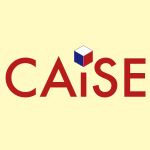 CAiSE-2014-EngelsmanW #architecture #enterprise #requirements
CAiSE-2014-EngelsmanW #architecture #enterprise #requirements- Understandability of Goal-Oriented Requirements Engineering Concepts for Enterprise Architects (WE, RW), pp. 105–119.
 CAiSE-2014-NeumayrJSS #implementation
CAiSE-2014-NeumayrJSS #implementation- Dual Deep Instantiation and Its ConceptBase Implementation (BN, MAJ, MS, CGS), pp. 503–517.
 ICEIS-v1-2014-Olive #agile #development #information management #modelling
ICEIS-v1-2014-Olive #agile #development #information management #modelling- Conceptual Modeling in Agile Information Systems Development (AO), p. XI.
 ICEIS-v1-2014-SoaresA #information management
ICEIS-v1-2014-SoaresA #information management- Reflections on the Concept of Interoperability in Information Systems (DS, LA), pp. 331–339.
 ICEIS-v2-2014-FonsecaC #reuse #using
ICEIS-v2-2014-FonsecaC #reuse #using- Reuse of Service Concepts Based on Service Patterns (WRF, PLPC), pp. 290–297.
 ICEIS-v3-2014-RohlfsGP #architecture #comprehension #enterprise
ICEIS-v3-2014-RohlfsGP #architecture #comprehension #enterprise- Understanding Enterprise Architecture through Bodies of Knowledge — A Conceptual Model (CLdRR, GG, FSP), pp. 249–259.
 ICEIS-v3-2014-WissotzkiK #architecture #enterprise #evaluation
ICEIS-v3-2014-WissotzkiK #architecture #enterprise #evaluation- Evaluation Concept of the Enterprise Architecture Management Capability Navigator (MW, HK), pp. 319–327.
 CIKM-2014-AgrawalGKK #graph #similarity #using
CIKM-2014-AgrawalGKK #graph #similarity #using- Similarity Search using Concept Graphs (RA, SG, AK, KK), pp. 719–728.
 CIKM-2014-WangWLW #classification #ranking
CIKM-2014-WangWLW #classification #ranking- Concept-based Short Text Classification and Ranking (FW, ZW, ZL, JRW), pp. 1069–1078.
 ECIR-2014-GrausTBR #generative #predict #pseudo #social
ECIR-2014-GrausTBR #generative #predict #pseudo #social- Generating Pseudo-ground Truth for Predicting New Concepts in Social Streams (DG, MT, LB, MdR), pp. 286–298.
 ICML-c2-2014-HarelMEC #detection
ICML-c2-2014-HarelMEC #detection- Concept Drift Detection Through Resampling (MH, SM, REY, KC), pp. 1009–1017.
 KDD-2014-ShaoAK #data type #learning #prototype
KDD-2014-ShaoAK #data type #learning #prototype- Prototype-based learning on concept-drifting data streams (JS, ZA, SK), pp. 412–421.
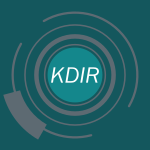 KDIR-2014-AlahmadiJM #classification #representation #using
KDIR-2014-AlahmadiJM #classification #representation #using- Arabic Text Classification using Bag-of-Concepts Representation (AA, AJ, AEM), pp. 374–380.
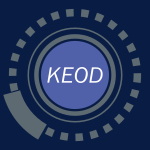 KEOD-2014-ChamekhTB #multi #ontology
KEOD-2014-ChamekhTB #multi #ontology- Ontology Modification in a Multi-User Concept — Conflict Resolution (FC, GT, DB), pp. 296–303.
 KEOD-2014-Grabska #approach #ontology #process
KEOD-2014-Grabska #approach #ontology #process- An Ontology based Approach for Assisting Conceptualisation in CAD Processes (EG), pp. 272–279.
 KEOD-2014-KarkalasS #learning #modelling #student
KEOD-2014-KarkalasS #learning #modelling #student- Intelligent Student Support in the FLIP Learning System based on Student Initial Misconceptions and Student Modelling (SK, SGS), pp. 353–360.
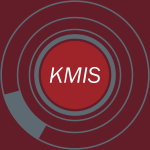 KMIS-2014-ThomasN #process
KMIS-2014-ThomasN #process- Quantitative Process Maps — A Concept for Prioritization of Business Process Improvement Projects (CT, TN), pp. 441–446.
 KMIS-2014-Wagner #memory management
KMIS-2014-Wagner #memory management- The Concept of Team Transactive Memory Systems — Developing an Extended Model for Organizational Contexts (VW), pp. 319–325.
 KR-2014-DistelAB #difference
KR-2014-DistelAB #difference- Concept Dissimilarity with Triangle Inequality (FD, JA, IB).
 KR-2014-EckePT #query #similarity
KR-2014-EckePT #query #similarity- Answering Instance Queries Relaxed by Concept Similarity (AE, RP, AYT).
 KR-2014-Morgenstern #reasoning #representation
KR-2014-Morgenstern #reasoning #representation- Representing and Reasoning about Time Travel Narratives: Foundational Concepts (LM).
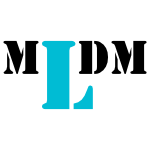 MLDM-2014-WaiyamaiKSR #classification #data type #named
MLDM-2014-WaiyamaiKSR #classification #data type #named- ACCD: Associative Classification over Concept-Drifting Data Streams (KW, TK, BS, TR), pp. 78–90.
 SEKE-2014-DaubalDDA
SEKE-2014-DaubalDDA - Tracing Domain Data Concepts in Layered Applications (MD, ND, DBD, HUA), pp. 292–297.
 SIGIR-2014-SeahBS #image #named #social #summary
SIGIR-2014-SeahBS #image #named #social #summary- PRISM: concept-preserving social image search results summarization (BSS, SSB, AS), pp. 737–746.
 PPDP-2014-Karczmarczuk #declarative #on the #quantum
PPDP-2014-Karczmarczuk #declarative #on the #quantum- On the Declarative Structure of Quantum Concepts: States and Observables (JK), pp. 105–110.
 ASE-2014-Kleffmann #design #evaluation #interactive #named
ASE-2014-Kleffmann #design #evaluation #interactive #named- AugIR: the conceptual design and evaluation of an augmented interaction room (MK), pp. 883–886.
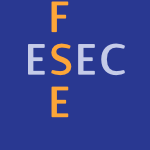 FSE-2014-GreeneF #named
FSE-2014-GreeneF #named- ConceptCloud: a tagcloud browser for software archives (GJG, BF), pp. 759–762.
 SAC-2014-BarddalGE #classification #named #network #social
SAC-2014-BarddalGE #classification #named #network #social- SFNClassifier: a scale-free social network method to handle concept drift (JPB, HMG, FE), pp. 786–791.
 SAC-2014-EngielCL #approach #elicitation #using
SAC-2014-EngielCL #approach #elicitation #using- Eliciting concepts from the Brazilian access law using a combined approach (PE, CC, JCSdPL), pp. 1001–1006.
 SLE-J-2012-GuizzardiZ #modelling #ontology #using
SLE-J-2012-GuizzardiZ #modelling #ontology #using- Using a trope-based foundational ontology for bridging different areas of concern in ontology-driven conceptual modeling (GG, VZ), pp. 417–443.
 DAC-2014-ShankarSWP #analysis #design #specification
DAC-2014-ShankarSWP #analysis #design #specification- Ontology-guided Conceptual Analysis of Design Specifications (AS, BPS, FGW, CAP), p. 6.
 PDP-2014-TradowskyGBSMB #adaptation #locality #named #power management
PDP-2014-TradowskyGBSMB #adaptation #locality #named #power management- SmartLoCore: A Concept for an Adaptive Power-Aware Localization Processor (CT, TG, TB, WS, KDMG, JB), pp. 478–481.
 DocEng-2013-YelogluMZ #clustering #documentation #wiki
DocEng-2013-YelogluMZ #clustering #documentation #wiki- Beyond term clusters: assigning Wikipedia concepts to scientific documents (OY, EEM, ANZH), pp. 233–234.
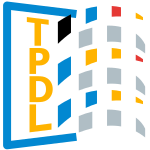 TPDL-2013-Chowdhury #library
TPDL-2013-Chowdhury #library- Sustainability of Digital Libraries: A Conceptual Model (GGC), pp. 1–12.
 VLDB-2013-DengJLLY #knowledge base #scalability #using #web
VLDB-2013-DengJLLY #knowledge base #scalability #using #web- Scalable Column Concept Determination for Web Tables Using Large Knowledge Bases (DD, YJ, GL, JL, CY), pp. 1606–1617.
 ITiCSE-2013-BeltranGP #architecture #in the cloud #using
ITiCSE-2013-BeltranGP #architecture #in the cloud #using- Using CloudSim to learn cloud computing architecture/system concepts in a graduate course (MB, AG, MP), pp. 82–87.
 ITiCSE-2013-BergesH #game studies #specification
ITiCSE-2013-BergesH #game studies #specification- Concept specification maps: displaying content structures (MB, PH), pp. 291–296.
 ITiCSE-2013-Gordon #mobile #programming
ITiCSE-2013-Gordon #mobile #programming- Concepts for mobile programming (AJG), pp. 58–63.
 ITiCSE-2013-PorterGTZ #architecture #comprehension #student
ITiCSE-2013-PorterGTZ #architecture #comprehension #student- Evaluating student understanding of core concepts in computer architecture (LP, SG, HWT, DZ), pp. 279–284.
 ITiCSE-2013-Rodriguez-CerezoGS #compilation #comprehension #education #interactive #simulation
ITiCSE-2013-Rodriguez-CerezoGS #compilation #comprehension #education #interactive #simulation- Interactive educational simulations for promoting the comprehension of basic compiler construction concepts (DRC, MGA, JLSR), pp. 28–33.
 ITiCSE-2013-SabitzerS #education #programming
ITiCSE-2013-SabitzerS #education #programming- Brain-based programming: a new concept for computer science education (BS, SS), p. 345.
 ITiCSE-2013-Trakhtenbrot #algorithm #analysis #complexity #problem #student
ITiCSE-2013-Trakhtenbrot #algorithm #analysis #complexity #problem #student- Students misconceptions in analysis of algorithmic and computational complexity of problems (MT), pp. 353–354.
 SIGITE-2013-HelpsP #cyber-physical #student
SIGITE-2013-HelpsP #cyber-physical #student- Cyber-physical system concepts for IT students (CRGH, SJP), pp. 7–12.
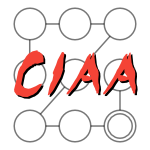 CIAA-2013-DemailleDLS #implementation
CIAA-2013-DemailleDLS #implementation- Implementation Concepts in Vaucanson 2 (AD, ADL, SL, JS), pp. 122–133.
 DiGRA-2013-Conde-Pumpido #case study #game studies #persuasion
DiGRA-2013-Conde-Pumpido #case study #game studies #persuasion- A Conceptual Model for the Study of Persuasive Games (TdlHCP).
 FDG-2013-Karhulahti #framework #game studies
FDG-2013-Karhulahti #framework #game studies- Adventure games in kinesthetic videogame theory - A demand-based framework for conceptualizing the narrative (VMK), pp. 472–473.
 FDG-2013-VoulgariK
FDG-2013-VoulgariK - Players' perceptions on the concept of the “good player” in MMOGs (IV, VK), pp. 79–85.
 CHI-2013-Feinberg13a #human-computer #physics
CHI-2013-Feinberg13a #human-computer #physics- Beyond digital and physical objects: the intellectual work as a concept of interest for HCI (MF), pp. 3317–3326.
 DUXU-PMT-2013-LuhCK #design #development #process
DUXU-PMT-2013-LuhCK #design #development #process- A Design Process for New Concept Development (DBL, F(HC, V(HK), pp. 545–553.
 DUXU-WM-2013-GotzeCKSB #evaluation
DUXU-WM-2013-GotzeCKSB #evaluation- Evaluation of a New Cockpit Color Concept under Mesopic Lighting for Urban Driving (MG, ASC, AK, TS, KB), pp. 359–366.
 DUXU-WM-2013-InoueHSAFY #design #interface #process
DUXU-WM-2013-InoueHSAFY #design #interface #process- Developing a Concept Interface Design of ATM Systems Based on Human-Centred Design Processes (SI, HH, TS, HA, YF, KY), pp. 506–514.
 DUXU-WM-2013-SchneidermeierMS #approach #communication
DUXU-WM-2013-SchneidermeierMS #approach #communication- Human-Centered Communication Planning: A Conceptual Approach (TS, FM, JS), pp. 94–102.
 HCI-AMTE-2013-Kurosu #experience
HCI-AMTE-2013-Kurosu #experience- The Conceptual Model of Experience Engineering (XE) (MK), pp. 95–102.
 HCI-AS-2013-KalwarHP #internet #named
HCI-AS-2013-KalwarHP #internet #named- SWord: A Concept Application for Mitigating Internet Terminology Anxiety (SKK, KH, JP), pp. 239–248.
 HCI-AS-2013-SanchezE #design #game studies
HCI-AS-2013-SanchezE #design #game studies- Designing Serious Videogames through Concept Maps (JS, ME), pp. 299–308.
 HCI-III-2013-BlezingerSH #human-computer
HCI-III-2013-BlezingerSH #human-computer- Unifying Conceptual and Spatial Relationships between Objects in HCI (DB, AFgS, CH), pp. 10–18.
 HCI-III-2013-FunkeBKS #interactive #ontology
HCI-III-2013-FunkeBKS #interactive #ontology- An Ontology-Based Interaction Concept for Social-Aware Applications (AF, SB, RK, TS), pp. 46–55.
 HCI-IMT-2013-KuhnLS #interactive #mobile
HCI-IMT-2013-KuhnLS #interactive #mobile- An Interaction Concept for Public Displays and Mobile Devices in Public Transport (RK, DL, TS), pp. 698–705.
 HCI-IMT-2013-OblaenderE #3d #interactive
HCI-IMT-2013-OblaenderE #3d #interactive- Study of Interaction Concepts in 3D Virtual Environment (VO, ME), pp. 706–711.
 HCI-UC-2013-HermannSTKS #distributed #multi #network #social #user interface
HCI-UC-2013-HermannSTKS #distributed #multi #network #social #user interface- The di.me User Interface: Concepts for Sharing Personal Information via Multiple Identities in a Decentralized Social Network (FH, AS, ST, CK, SS), pp. 29–38.
 HIMI-D-2013-LiaoLH #modelling #ontology #perspective #security #towards
HIMI-D-2013-LiaoLH #modelling #ontology #perspective #security #towards- Towards an Ontological Interpretation on the i* Modeling Language Extended with Security Concepts: A Bunge-Wand-Weber Model Perspective (GYL, PJL, LTH), pp. 322–328.
 HIMI-LCCB-2013-YoshidaOSNSH #assessment #comprehension #using
HIMI-LCCB-2013-YoshidaOSNSH #assessment #comprehension #using- Instantaneous Assessment of Learners’ Comprehension for Lecture by Using Kit-Build Concept Map System (KY, TO, KS, YN, MS, TH), pp. 175–181.
 CAiSE-2013-AguileraGO #development #ide #quality
CAiSE-2013-AguileraGO #development #ide #quality- Enforcement of Conceptual Schema Quality Issues in Current Integrated Development Environments (DA, CG, AO), pp. 626–640.
 EDOC-2013-BraunE #network #online #overview #risk management #social #towards
EDOC-2013-BraunE #network #online #overview #risk management #social #towards- Towards a Conceptualization of Corporate Risks in Online Social Networks: A Literature Based Overview of Risks (RB, WE), pp. 267–274.
 ICEIS-v1-2013-FominaEV #induction #modelling
ICEIS-v1-2013-FominaEV #induction #modelling- Noise Models in Inductive Concept Formation (MVF, APE, VNV), pp. 444–450.
 ICEIS-v1-2013-KozminaNG #requirements
ICEIS-v1-2013-KozminaNG #requirements- Deriving the Conceptual Model of a Data Warehouse from Information Requirements (NK, LN, MG), pp. 136–144.
 ICEIS-v1-2013-LaurierP #representation
ICEIS-v1-2013-LaurierP #representation- An Enterprise-ontology based Conceptual-modeling Grammar for Representing Value Chain and Supply Chain Scripts (WL, GP), pp. 103–111.
 ICEIS-v2-2013-EldinMHZ #effectiveness #information management
ICEIS-v2-2013-EldinMHZ #effectiveness #information management- A Conceptual Model for Effective Early Warning Information Systems (EEWIS) (MSE, SAM, EEH, HZ), pp. 134–142.
 ICEIS-v2-2013-KandjaniMAS #framework #information management
ICEIS-v2-2013-KandjaniMAS #framework #information management- A Conceptual Framework to Classify Strategic Information Systems Planning Methodologies (HK, AM, AEA, RS), pp. 190–196.
 ICEIS-v2-2013-RibeiroSFO #constraints #ocl #validation
ICEIS-v2-2013-RibeiroSFO #constraints #ocl #validation- Extending OCL to Specify and Validate Integrity Constraints in UML-GeoFrame Conceptual Data Model (AAdAR, SMS, JLF, ILO), pp. 286–293.
 ICEIS-v2-2013-TrindadeGG #collaboration #community #design #framework
ICEIS-v2-2013-TrindadeGG #collaboration #community #design #framework- Conceptual Framework for Design of Collaborative Environments — Cultivating Communities of Practices for Deaf Inclusion (DdFGT, CG, LSG), pp. 206–215.
 ICEIS-v3-2013-LambeckG #complexity #enterprise #scalability #user interface
ICEIS-v3-2013-LambeckG #complexity #enterprise #scalability #user interface- Mastering ERP Interface Complexity — A Scalable User Interface Concept for ERP Systems (CL, RG), pp. 170–178.
 ICEIS-v3-2013-MarciniakO #grid #usability
ICEIS-v3-2013-MarciniakO #grid #usability- Usability of Knowledge Grid in Smart City Concepts (KM, MLO), pp. 341–346.
 ECIR-2013-CarpinetoR #graph #query #semantics
ECIR-2013-CarpinetoR #graph #query #semantics- Semantic Search Log k-Anonymization with Generalized k-Cores of Query Concept Graph (CC, GR), pp. 110–121.
 ECIR-2013-PatilDV
ECIR-2013-PatilDV - Leveraging Latent Concepts for Retrieving Relevant Ads for Short Text (AP, KSD, VV), pp. 780–783.
 KDD-2013-RautiainenSHYK #mining #online
KDD-2013-RautiainenSHYK #mining #online- An online system with end-user services: mining novelty concepts from tv broadcast subtitles (MR, JS, AH, MY, VK), pp. 1486–1489.
 KDIR-KMIS-2013-Aveiro #case study #enterprise #ontology
KDIR-KMIS-2013-Aveiro #case study #enterprise #ontology- Enterprise Ontology and DEMO — Benefits, Core Concepts and a Case-study (DA), pp. 1–7.
 KDIR-KMIS-2013-CostaS #assessment #enterprise #security #using
KDIR-KMIS-2013-CostaS #assessment #enterprise #security #using- Enterprise to Cloud Security Assessment — A Method using OSSTMM 3.0 Concepts (RC, CS), pp. 571–578.
 KDIR-KMIS-2013-LaneL #prototype
KDIR-KMIS-2013-LaneL #prototype- Managing Knowledge in the Three States of Conceptual Discovery, Prototype Invention — Commercial Innovation (JPL, RML), pp. 539–542.
 KDIR-KMIS-2013-OliveiraCL #analysis
KDIR-KMIS-2013-OliveiraCL #analysis- Business Analytics — Analysis of an Emerging Concept (MPVdO, CXC, MBL), pp. 547–551.
 KEOD-2013-FrancescomarinoGK #modelling #ontology
KEOD-2013-FrancescomarinoGK #modelling #ontology- Grounding Conceptual Modelling Templates on Existing Ontologies — A Delicate Balance (CDF, CG, MTK), pp. 199–206.
 KEOD-2013-Liang #collaboration #design #framework #ontology
KEOD-2013-Liang #collaboration #design #framework #ontology- Applying Ontology-based Knowledge Methodology in Product Innovative Collaborative Conceptual Design Framework (JSL), pp. 324–330.
 MLDM-2013-ZhaiHOHH
MLDM-2013-ZhaiHOHH - Shifting Concepts to Their Associative Concepts via Bridges (HZ, MH, YO, KH, SH), pp. 586–600.
 SEKE-2013-Alegroth #proving #random #testing #user interface #visual notation
SEKE-2013-Alegroth #proving #random #testing #user interface #visual notation- Random Visual GUI Testing: Proof of Concept (EA), pp. 178–183.
 SEKE-2013-ShahinLL #architecture #documentation #using
SEKE-2013-ShahinLL #architecture #documentation #using- Recovering Software Architectural Knowledge from Documentation using Conceptual Model (MS, PL, ZL), pp. 556–561.
 SIGIR-2013-MahdabiGHC #ambiguity #proximity #query #retrieval #using
SIGIR-2013-MahdabiGHC #ambiguity #proximity #query #retrieval #using- Leveraging conceptual lexicon: query disambiguation using proximity information for patent retrieval (PM, SG, JXH, FC), pp. 113–122.
 MoDELS-2013-HamannG #metamodelling #semantics #uml
MoDELS-2013-HamannG #metamodelling #semantics #uml- Endogenous Metamodeling Semantics for Structural UML 2 Concepts (LH, MG), pp. 488–504.
 Onward-2013-RossoJ #analysis #design #git #what
Onward-2013-RossoJ #analysis #design #git #what- What’s wrong with git?: a conceptual design analysis (SPDR, DJ), pp. 37–52.
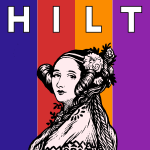 HILT-2013-BolengS #architecture #implementation
HILT-2013-BolengS #architecture #implementation- Service-oriented architecture (SOA) concepts and implementations (JB, RES), pp. 11–12.
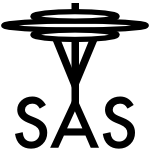 SAS-2013-0001GHAN #geometry #learning #verification
SAS-2013-0001GHAN #geometry #learning #verification- Verification as Learning Geometric Concepts (RS, SG, BH, AA, AVN), pp. 388–411.
 ICSE-2013-Carvalho #comprehension #ontology #problem #tool support
ICSE-2013-Carvalho #comprehension #ontology #problem #tool support- An ontology toolkit for problem domain concept location in program comprehension (NRC), pp. 1415–1418.
 SAC-2013-BucchiaroneMMP #adaptation #framework
SAC-2013-BucchiaroneMMP #adaptation #framework- A conceptual framework for collective adaptive systems (AB, AM, CAM, MP), pp. 1935–1936.
 SAC-2013-MeloAOAMB #analysis #approach #visual notation
SAC-2013-MeloAOAMB #analysis #approach #visual notation- A conceptual approach to gene expression analysis enhanced by visual analytics (CAM, MAA, CO, SA, KM, AB), pp. 1314–1319.
 CASE-2013-RossanoMHMF #industrial #perspective #programming
CASE-2013-RossanoMHMF #industrial #perspective #programming- Easy robot programming concepts: An industrial perspective (GFR, CM, MH, SM, TAF), pp. 1119–1126.
 DATE-2013-KappelHHHHH #energy #power management #self
DATE-2013-KappelHHHHH #energy #power management #self- Alternative power supply concepts for self-sufficient wireless sensor nodes by energy harvesting (RK, GH, GH, TH, GH, GH), p. 481.
 JCDL-2012-FosterSDOS #education #identification
JCDL-2012-FosterSDOS #education #identification- Identifying core concepts in educational resources (JMF, MAS, HD, IO, TS), pp. 35–42.
 JCDL-2012-Watrous-deVersterreWS
JCDL-2012-Watrous-deVersterreWS - Concept chaining utilizing meronyms in text characterization (LWd, CW, MS), pp. 241–248.
 CSEET-2012-BollinHS #education #experience #project management #simulation #using
CSEET-2012-BollinHS #education #experience #project management #simulation #using- Teaching Software Project Management using Simulations — The AMEISE Environment: from Concepts to Class Room Experience (AB, EH, LS), pp. 85–86.
 ITiCSE-2012-AsadB #aspect-oriented #image #learning
ITiCSE-2012-AsadB #aspect-oriented #image #learning- Are children capable of learning image processing concepts?: cognitive and affective aspects (KA, MB), pp. 227–231.
 ITiCSE-2012-MussaiL #animation #learning #object-oriented
ITiCSE-2012-MussaiL #animation #learning #object-oriented- An animation as an illustrate tool for learning concepts in oop (YM, NL), p. 386.
 SIGITE-2012-EavesS #as a service #proving
SIGITE-2012-EavesS #as a service #proving- Desktop as a service proof of concept (AE, MS), pp. 85–86.
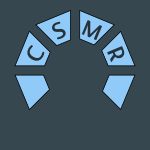 CSMR-2012-OlszakJ #composition #how #legacy #question
CSMR-2012-OlszakJ #composition #how #legacy #question- Modularization of Legacy Features by Relocation and Reconceptualization: How Much is Enough? (AO, BNJ), pp. 171–180.
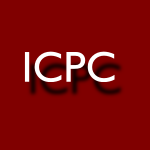 ICPC-2012-RajlichW #comprehension
ICPC-2012-RajlichW #comprehension- A retrospective view on: The role of concepts in program comprehension: (MIP award) (VR, NW), pp. 12–13.
 ICSM-2012-BinkleyLU #normalisation
ICSM-2012-BinkleyLU #normalisation- Vocabulary normalization improves IR-based concept location (DB, DL, CU), pp. 588–591.
 SCAM-2012-GethersAP #database #dependence #detection
SCAM-2012-GethersAP #database #dependence #detection- Combining Conceptual and Domain-Based Couplings to Detect Database and Code Dependencies (MG, AA, DP), pp. 144–153.
 ICGT-2012-Golas #modelling
ICGT-2012-Golas #modelling- A General Attribution Concept for Models in M-Adhesive Transformation Systems (UG), pp. 187–202.
 CHI-2012-VinesBLDMO #design
CHI-2012-VinesBLDMO #design- Questionable concepts: critique as resource for designing with eighty somethings (JV, MB, SL, PD, AM, PO), pp. 1169–1178.
 CAiSE-2012-Guizzardi12a #modelling #ontology
CAiSE-2012-Guizzardi12a #modelling #ontology- Ontological Foundations for Conceptual Modeling with Applications (GG), pp. 695–696.
 CAiSE-2012-Kabicher-FuchsR #experience #metric
CAiSE-2012-Kabicher-FuchsR #experience #metric- Work Experience in PAIS — Concepts, Measurements and Potentials (SKF, SRM), pp. 678–694.
 ICEIS-J-2012-BonacinHRPB12a #aspect-oriented #collaboration #framework #problem #towards
ICEIS-J-2012-BonacinHRPB12a #aspect-oriented #collaboration #framework #problem #towards- Pragmatic Aspects of Collaborative Problem Solving: Towards a Framework for Conceptualizing Dynamic Knowledge (RB, HHH, JCdR, RP, MCCB), pp. 410–426.
 ICEIS-v1-2012-LambeckSAG #enterprise #realtime
ICEIS-v1-2012-LambeckSAG #enterprise #realtime- Changing Concepts in Human-Computer-Interaction in Real-time Enterprise Systems — Introducing a Concept for Intuitive Decision Support in SCM Scenarios (CL, DS, RA, RG), pp. 139–144.
 ICEIS-v2-2012-NishiokaO #enterprise #information management #integration #process
ICEIS-v2-2012-NishiokaO #enterprise #information management #integration #process- Systematic Process of Conceptualization — For Enterprise Information System Renewal and Integration (KN, KO), pp. 63–69.
 ICEIS-v2-2012-SousaPS #approach
ICEIS-v2-2012-SousaPS #approach- A Pragmatic Approach to Conceptual Negotiation Support (CS, CP, ALS), pp. 349–354.
 CIKM-2012-BambaSGBF #recommendation #scalability #using
CIKM-2012-BambaSGBF #recommendation #scalability #using- The twitaholic next door.: scalable friend recommender system using a concept-sensitive hash function (PB, JS, CG, NB, JF), pp. 2275–2278.
 CIKM-2012-JeongWL #towards
CIKM-2012-JeongWL #towards- Towards measuring the visualness of a concept (JWJ, XJW, DHL), pp. 2415–2418.
 CIKM-2012-KoopmanZBSL #evaluation #information retrieval #metric #similarity
CIKM-2012-KoopmanZBSL #evaluation #information retrieval #metric #similarity- An evaluation of corpus-driven measures of medical concept similarity for information retrieval (BK, GZ, PB, LS, ML), pp. 2439–2442.
 CIKM-2012-ZhengFY
CIKM-2012-ZhengFY - Exploiting concept hierarchy for result diversification (WZ, HF, CY), pp. 1844–1848.
 ICPR-2012-FengB #detection #image #semantics
ICPR-2012-FengB #detection #image #semantics- Utilizing co-occurrence patterns for semantic concept detection in images (LF, BB), pp. 2918–2921.
 ICPR-2012-SjobergKIL #classification #detection #linear #realtime #scalability #visual notation
ICPR-2012-SjobergKIL #classification #detection #linear #realtime #scalability #visual notation- Real-time large-scale visual concept detection with linear classifiers (MS, MK, SI, JL), pp. 421–424.
 ICPR-2012-TurkovKM #pattern matching #pattern recognition #problem #recognition
ICPR-2012-TurkovKM #pattern matching #pattern recognition #problem #recognition- The Bayesian logistic regression in pattern recognition problems under concept drift (PAT, OK, VM), pp. 2976–2979.
 KEOD-2012-AliG #named #novel
KEOD-2012-AliG #named #novel- Conceptualization — A Novel Intensional-based Model (IA, HG), pp. 257–264.
 KEOD-2012-Exman
KEOD-2012-Exman - A Non-concept is Not a ¬Concept (IE), pp. 401–404.
 KEOD-2012-FrixioneL #prototype #representation
KEOD-2012-FrixioneL #prototype #representation- Prototypes Vs Exemplars in Concept Representation (MF, AL), pp. 226–232.
 KEOD-2012-GhezaielLA #documentation #ontology
KEOD-2012-GhezaielLA #documentation #ontology- Ontology Enrichment based on Generic Basis of Association Rules for Conceptual Document Indexing (LBG, CCL, MBA), pp. 53–65.
 KMIS-2012-SaadKAR #information management
KMIS-2012-SaadKAR #information management- Soft Systems Methodology — A Conceptual Model of Knowledge Management Systems Initiatives in Malaysian Public Universities (NHMS, HK, RAA, AAR), pp. 60–69.
 KMIS-2012-Vaiyavuth #approach #challenge #energy #framework #how #modelling
KMIS-2012-Vaiyavuth #approach #challenge #energy #framework #how #modelling- How Open Innovation Models Might Help the Thai Energy Sector to Address the Climate Change Challenge? — A Conceptual Framework on an Approach to Measure the Impact of Adoption of Open Innovation (RV), pp. 229–234.
 MLDM-2012-TurkovKM #approach #pattern matching #pattern recognition #problem #recognition
MLDM-2012-TurkovKM #approach #pattern matching #pattern recognition #problem #recognition- Bayesian Approach to the Concept Drift in the Pattern Recognition Problems (PAT, OK, VM), pp. 1–10.
 MLDM-2012-XuCG #learning #multi #using
MLDM-2012-XuCG #learning #multi #using- Constructing Target Concept in Multiple Instance Learning Using Maximum Partial Entropy (TX, DKYC, IG), pp. 169–182.
 SEKE-2012-BhattiAHD #re-engineering
SEKE-2012-BhattiAHD #re-engineering- A Catalog of Patterns for Concept Lattice Interpretation in Software Reengineering (MUB, NA, MH, SD), pp. 118–123.
 SEKE-2012-CookN #aspect-oriented #programming #towards
SEKE-2012-CookN #aspect-oriented #programming #towards- Towards More Generic Aspect-Oriented Programming: Rethinking the AOP Joinpoint Concept (JC, AN), pp. 154–157.
 SEKE-2012-El-SherifFE #learning #multi #network #social #using
SEKE-2012-El-SherifFE #learning #multi #network #social #using- Using Social Networks for Learning New Concepts in Multi-Agent Systems (SMES, BHF, AE), pp. 261–266.
 SEKE-2012-HossianG #process #requirements
SEKE-2012-HossianG #process #requirements- Phases, Activities, and Techniques for a Requirements Conceptualization Process (AH, RGM), pp. 25–32.
 SIGIR-2012-AdeyanjuSAKRF #adaptation #query #recommendation
SIGIR-2012-AdeyanjuSAKRF #adaptation #query #recommendation- Adaptation of the concept hierarchy model with search logs for query recommendation on intranets (IAA, DS, MDA, UK, ANDR, MF), pp. 5–14.
 SIGIR-2012-Eickhoff #multi
SIGIR-2012-Eickhoff #multi- Relevance as a subjective and situational multidimensional concept (CE), p. 998.
 SIGIR-2012-MahdabiAKC #automation #predict #query #refinement #using
SIGIR-2012-MahdabiAKC #automation #predict #query #refinement #using- Automatic refinement of patent queries using concept importance predictors (PM, LA, MK, FC), pp. 505–514.
 SIGIR-2012-ShenPWY #modelling #music #scalability
SIGIR-2012-ShenPWY #modelling #music #scalability- Modeling concept dynamics for large scale music search (JS, HP, MW, SY), pp. 455–464.
 AdaEurope-2012-Tempelmeier #ada #education #programming language
AdaEurope-2012-Tempelmeier #ada #education #programming language- Teaching “Concepts of Programming Languages” with Ada (TT), pp. 60–74.
 HILT-2012-SwardB #architecture #implementation
HILT-2012-SwardB #architecture #implementation- Service-oriented architecture (SOA) concepts and implementations (RES, JB), pp. 11–12.
 FSE-2012-DiGiuseppeJ12a #clustering
FSE-2012-DiGiuseppeJ12a #clustering- Concept-based failure clustering (ND, JAJ), p. 29.
 ICSE-2012-Dilshener #information retrieval #using
ICSE-2012-Dilshener #information retrieval #using- Improving information retrieval-based concept location using contextual relationships (TD), pp. 1499–1502.
 ICSE-2012-UddinDR #analysis #api
ICSE-2012-UddinDR #analysis #api- Temporal analysis of API usage concepts (GU, BD, MPR), pp. 804–814.
 SAC-2012-MinervinidF #learning #logic #probability
SAC-2012-MinervinidF #learning #logic #probability- Learning probabilistic Description logic concepts: under different Assumptions on missing knowledge (PM, Cd, NF), pp. 378–383.
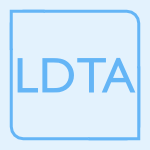 LDTA-2012-LinckeS #higher-order #object-oriented
LDTA-2012-LinckeS #higher-order #object-oriented- From HOT to COOL: transforming higher-order typed languages to concept-constrained object-oriented languages (DL, SS), p. 3.
 SLE-2012-GuizzardiZ #modelling
SLE-2012-GuizzardiZ #modelling- A Common Foundational Theory for Bridging Two Levels in Ontology-Driven Conceptual Modeling (GG, VZ), pp. 286–310.
 DAC-2012-SinhaVVXZ #statistics
DAC-2012-SinhaVVXZ #statistics- Reversible statistical max/min operation: concept and applications to timing (DS, CV, NV, JX, VZ), pp. 1067–1073.
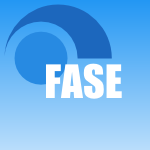 FASE-2012-BruniCGLV #adaptation #framework
FASE-2012-BruniCGLV #adaptation #framework- A Conceptual Framework for Adaptation (RB, AC, FG, ALL, AV), pp. 240–254.
 CSL-2012-Kuroda #axiom #bound #proving
CSL-2012-Kuroda #axiom #bound #proving- Axiomatizing proof tree concepts in Bounded Arithmetic (SK), pp. 440–454.
 ECSA-2011-OrlicDML #architecture #component #configuration management #framework #resource management
ECSA-2011-OrlicDML #architecture #component #configuration management #framework #resource management- Dynamically Reconfigurable Resource-Aware Component Framework: Architecture and Concepts (BO, ID, RHM, JJL), pp. 212–215.
 JCDL-2011-HaqueG #topic
JCDL-2011-HaqueG #topic- Phrases as subtopical concepts in scholarly text (AuH, PG), pp. 25–28.
 ITiCSE-2011-EckerdalLLS #perspective #programming
ITiCSE-2011-EckerdalLLS #perspective #programming- Relationship between text and action conceptions of programming: a phenomenographic and quantitative perspective (AE, MJL, ML, AS), pp. 33–37.
 ITiCSE-2011-MselleM #education #memory management #programming
ITiCSE-2011-MselleM #education #memory management #programming- The impact of memory transfer language (MTL) in reducing misconceptions in teaching programming to novices (LJM, RM), p. 388.
 SIGITE-2011-Li #framework #open source #using
SIGITE-2011-Li #framework #open source #using- Introducing virtualization management concepts using open source cloud infrastructure managers (PL), pp. 309–310.
 ICPC-2011-HaiducM #on the #query
ICPC-2011-HaiducM #on the #query- On the Effect of the Query in IR-based Concept Location (SH, AM), pp. 234–237.
 ICPC-2011-Medini #automation #execution #mining #scalability
ICPC-2011-Medini #automation #execution #mining #scalability- Scalable Automatic Concept Mining from Execution Traces (SM), pp. 238–241.
 ICPC-2011-OhlemacherM #automation #benchmark #metric #towards
ICPC-2011-OhlemacherM #automation #benchmark #metric #towards- Towards a Benchmark and Automatic Calibration for IR-Based Concept Location (SDO, AM), pp. 246–249.
 ICPC-2011-PirzadehSHM #execution
ICPC-2011-PirzadehSHM #execution- The Concept of Stratified Sampling of Execution Traces (HP, SS, AHL, AM), pp. 225–226.
 ICPC-2011-ScannielloM #clustering #source code
ICPC-2011-ScannielloM #clustering #source code- Clustering Support for Static Concept Location in Source Code (GS, AM), pp. 1–10.
 ICSM-2011-DilshenerW #developer
ICSM-2011-DilshenerW #developer- Relating developers’ concepts and artefact vocabulary in a financial software module (TD, MW), pp. 412–417.
 ICSM-2011-QusefBOLB #named #slicing #traceability #using
ICSM-2011-QusefBOLB #named #slicing #traceability #using- SCOTCH: Test-to-code traceability using slicing and conceptual coupling (AQ, GB, RO, ADL, DB), pp. 63–72.
 SCAM-2011-AbebeHTM #smell #source code
SCAM-2011-AbebeHTM #smell #source code- The Effect of Lexicon Bad Smells on Concept Location in Source Code (SLA, SH, PT, AM), pp. 125–134.
 WCRE-2011-AbebeT #identifier #towards
WCRE-2011-AbebeT #identifier #towards- Towards the Extraction of Domain Concepts from the Identifiers (SLA, PT), pp. 77–86.
 WCRE-2011-GrantCS #analysis #reverse engineering #source code #using
WCRE-2011-GrantCS #analysis #reverse engineering #source code #using- Reverse Engineering Co-maintenance Relationships Using Conceptual Analysis of Source Code (SG, JRC, DBS), pp. 87–91.
 WCRE-2011-Qusef #slicing #traceability
WCRE-2011-Qusef #slicing #traceability- Recovering Test-to-Code Traceability Via Slicing and Conceptual Coupling (AQ), pp. 417–420.
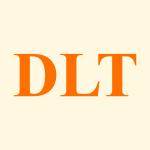 DLT-2011-Yoshinaka #context-free grammar #learning #towards
DLT-2011-Yoshinaka #context-free grammar #learning #towards- Towards Dual Approaches for Learning Context-Free Grammars Based on Syntactic Concept Lattices (RY), pp. 429–440.
 AIIDE-2011-MagerkoDD #fuzzy
AIIDE-2011-MagerkoDD #fuzzy- Employing Fuzzy Concept for Digital Improvisational Theatre (BM, PD, CD).
 DiGRA-2011-Brown #game studies
DiGRA-2011-Brown #game studies- Players and the Love Game: Conceptualizing Cheating with Erotic Role Players in World of Warcraft (AB).
 DiGRA-2011-Lenhart #design #named
DiGRA-2011-Lenhart #design #named- Kairotopos: A reflection on Greek space/time concepts as design implications in Minecraft (IL).
 FDG-2011-FowlerC #game studies #learning #motivation #programming
FDG-2011-FowlerC #game studies #learning #motivation #programming- Kodu game lab: improving the motivation for learning programming concepts (AF, BC), pp. 238–240.
 AGTIVE-2011-GreenyerR #automaton #diagrams #game studies #graph grammar #sequence chart #specification
AGTIVE-2011-GreenyerR #automaton #diagrams #game studies #graph grammar #sequence chart #specification- Applying Advanced TGG Concepts for a Complex Transformation of Sequence Diagram Specifications to Timed Game Automata (JG, JR), pp. 222–237.
 AGTIVE-2011-MantzJT #consistency #evolution #graph transformation #metamodelling #migration
AGTIVE-2011-MantzJT #consistency #evolution #graph transformation #metamodelling #migration- Graph Transformation Concepts for Meta-model Evolution Guaranteeing Permanent Type Conformance throughout Model Migration (FM, SJ, GT), pp. 3–18.
 CHI-2011-GerkenJZMR #api #usability
CHI-2011-GerkenJZMR #api #usability- The concept maps method as a tool to evaluate the usability of APIs (JG, HCJ, MZ, MM, HR), pp. 3373–3382.
 CHI-2011-HowisonTRA #interactive #learning
CHI-2011-HowisonTRA #interactive #learning- The mathematical imagery trainer: from embodied interaction to conceptual learning (MH, DT, DR, DA), pp. 1989–1998.
 DUXU-v1-2011-LeeR #architecture #collaboration #learning #mobile
DUXU-v1-2011-LeeR #architecture #collaboration #learning #mobile- Suggested Collaborative Learning Conceptual Architecture and Applications for Mobile Devices (KL, AR), pp. 611–620.
 DUXU-v1-2011-Liem #approach #design #development #user interface
DUXU-v1-2011-Liem #approach #design #development #user interface- A Culturally Driven Approach for the Development of Innovative User Interface Design Concepts (AL), pp. 84–93.
 DUXU-v2-2011-KimJH #design #experience #implementation #user interface
DUXU-v2-2011-KimJH #design #experience #implementation #user interface- Different UI, Same UX: A Design Concept for Implementing a Locally-Optimized and Globally-Unified User Experience (SWK, HKJ, DYH), pp. 440–448.
 DUXU-v2-2011-TengC #design
DUXU-v2-2011-TengC #design- The Application of the Concept of Affordance to a Creative Design Method (CKT, MCC), pp. 215–224.
 HCI-DDA-2011-EstevesA #agile #design #development #interactive
HCI-DDA-2011-EstevesA #agile #design #development #interactive- Designing Interaction Concepts, Managing Customer Expectation and Mastering Agile Development in Rich Application Product Development (ME, VA), pp. 54–62.
 HCI-DDA-2011-HornungB #design #framework #interactive #towards #web
HCI-DDA-2011-HornungB #design #framework #interactive #towards #web- Towards a Conceptual Framework for Interaction Design for the Pragmatic Web (HHH, MCCB), pp. 72–81.
 HCI-DDA-2011-SchlegelK #interactive #modelling #ubiquitous
HCI-DDA-2011-SchlegelK #interactive #modelling #ubiquitous- Model-Based Ubiquitous Interaction Concepts and Contexts in Public Systems (TS, CK), pp. 288–298.
 HCI-ITE-2011-SpiesBLWBH #development #industrial #metric
HCI-ITE-2011-SpiesBLWBH #development #industrial #metric- Measurement of Driver’s Distraction for an Early Prove of Concepts in Automotive Industry at the Example of the Development of a Haptic Touchpad (RS, AB, CL, MW, KB, WH), pp. 125–132.
 HCI-UA-2011-HymelLBSB #interactive
HCI-UA-2011-HymelLBSB #interactive- The Interaction of Children’s Concepts about Agents and Their Ability to Use an Agent-Based Tutoring System (AMH, DTL, JB, MMS, GB), pp. 580–589.
 HIMI-v1-2011-GuoPS #axiom #evaluation #usability
HIMI-v1-2011-GuoPS #axiom #evaluation #usability- A Conceptual Model of the Axiomatic Usability Evaluation Method (YG, RWP, GS), pp. 93–102.
 HIMI-v2-2011-SutoS #communication
HIMI-v2-2011-SutoS #communication- Local Communication Media Based on Concept of Media Biotope (HS, MS), pp. 396–402.
 CAiSE-2011-BoseAZP #mining #process
CAiSE-2011-BoseAZP #mining #process- Handling Concept Drift in Process Mining (RPJCB, WMPvdA, IZ, MP), pp. 391–405.
 CAiSE-2011-Guizzardi #ontology
CAiSE-2011-Guizzardi #ontology- Ontological Foundations for Conceptual Part-Whole Relations: The Case of Collectives and Their Parts (GG), pp. 138–153.
 CAiSE-2011-VicenteS
CAiSE-2011-VicenteS - A Conceptual Model for Integrated Governance, Risk and Compliance (PV, MMdS), pp. 199–213.
 EDOC-2011-Halpin #logic
EDOC-2011-Halpin #logic- Fact-Orientation and Conceptual Logic (TAH), pp. 14–19.
 ICEIS-J-2011-LezocheAP #information management #model transformation #semantics
ICEIS-J-2011-LezocheAP #information management #model transformation #semantics- Formal Fact-Oriented Model Transformations for Cooperative Information Systems Semantic Conceptualisation (ML, AA, HP), pp. 117–131.
 ICEIS-v1-2011-LezochePA #approach #information management
ICEIS-v1-2011-LezochePA #approach #information management- Conceptualisation Approach for Cooperative Information Systems Interoperability (ML, HP, AA), pp. 101–110.
 CIKM-2011-JiangLN #personalisation
CIKM-2011-JiangLN #personalisation- Context-aware search personalization with concept preference (DJ, KWTL, WN), pp. 563–572.
 CIKM-2011-WuXPZHL #wiki
CIKM-2011-WuXPZHL #wiki- Leveraging Wikipedia concept and category information to enhance contextual advertising (ZW, GX, RP, YZ, ZH, JL), pp. 2105–2108.
 KDD-2011-JiangBSZL #adaptation #learning #ontology
KDD-2011-JiangBSZL #adaptation #learning #ontology- Ontology enhancement and concept granularity learning: keeping yourself current and adaptive (SJ, LB, BS, YZ, WL), pp. 1244–1252.
 KDIR-2011-ArmanoGV #semantics #using
KDIR-2011-ArmanoGV #semantics #using- Semantic Enrichment of Contextual Advertising by using Concepts (GA, AG, EV), pp. 232–237.
 KDIR-2011-CamelinDHQL #comprehension
KDIR-2011-CamelinDHQL #comprehension- Concept Discovery for Language Understanding in an Information-query Dialogue System (NC, BD, SH, DQ, FL), pp. 24–29.
 KEOD-2011-GaignardMWG #parametricity #runtime #semantics
KEOD-2011-GaignardMWG #parametricity #runtime #semantics- Characterizing Semantic Service Parameters with Role Concepts to Infer Domain-specific Knowledge at Runtime (AG, JM, BW, BG), pp. 59–70.
 KEOD-2011-Grabska #design #ontology #visual notation
KEOD-2011-Grabska #design #ontology #visual notation- Computer Aided Conceptual Visual Design based on Ontology (EG), pp. 396–399.
 KEOD-2011-Karbe #formal method #implementation #information management #representation
KEOD-2011-Karbe #formal method #implementation #information management #representation- Formalizing and Implementing Knowledge Representation on the Basis of Conceptions — Position Statement (TK), pp. 317–321.
 KEOD-2011-NousiainenK #education #information management #physics #student
KEOD-2011-NousiainenK #education #information management #physics #student- Knowledge Organization in Concept Maps — Teacher Students’ Representations of the Relatedness of Physics Concepts (MN, IK), pp. 139–144.
 KEOD-2011-OkumuraH #using
KEOD-2011-OkumuraH #using- A Refining Method of Obtained Attributes to Characterize Undefined Concepts using Search Engine (NO, YH), pp. 493–497.
 KEOD-2011-OmraneNS #ontology #process
KEOD-2011-OmraneNS #ontology #process- From Linguistics to Ontologies — The Role of Named Entities in the Conceptualisation Process (NO, AN, SS), pp. 249–254.
 KEOD-2011-OtcenaskovaBC #health #modelling
KEOD-2011-OtcenaskovaBC #health #modelling- Conceptual Modelling for Management of Public Health in Case of Emergency Situations (TO, VB, PC), pp. 344–348.
 KMIS-2011-Silva #approach #learning
KMIS-2011-Silva #approach #learning- Learning Organization — Concept and Proposal of a New Approach (AFdS), pp. 384–389.
 SIGIR-2011-BenderskyMC #query
SIGIR-2011-BenderskyMC #query- Parameterized concept weighting in verbose queries (MB, DM, WBC), pp. 605–614.
 SIGIR-2011-Carterette #effectiveness #framework #modelling
SIGIR-2011-Carterette #effectiveness #framework #modelling- System effectiveness, user models, and user utility: a conceptual framework for investigation (BC), pp. 903–912.
 SIGIR-2011-LiDS #recommendation #semantics #using
SIGIR-2011-LiDS #recommendation #semantics #using- Semantic tag recommendation using concept model (CL, AD, AS), pp. 1159–1160.
 BX-2011-Kindler #graph grammar #implementation
BX-2011-Kindler #graph grammar #implementation- Triple Graph Grammars: Concepts, Extensions, Implementations, and Application Scenarios (EK), p. 60.
 ECMFA-2011-BehjatiYNBS #architecture #modelling
ECMFA-2011-BehjatiYNBS #architecture #modelling- Extending SysML with AADL Concepts for Comprehensive System Architecture Modeling (RB, TY, SN, LCB, BS), pp. 236–252.
 MoDELS-2011-KainzBK #automation #metamodelling #model transformation
MoDELS-2011-KainzBK #automation #metamodelling #model transformation- Automated Model-to-Metamodel Transformations Based on the Concepts of Deep Instantiation (GK, CB, AK), pp. 17–31.
 SIGAda-2011-SwardB #architecture #implementation
SIGAda-2011-SwardB #architecture #implementation- Service-oriented architecture (SOA)concepts and implementations (RES, JB), pp. 3–4.
 ASE-2011-Haiduc #automation #detection #quality #query
ASE-2011-Haiduc #automation #detection #quality #query- Automatically detecting the quality of the query and its implications in IR-based concept location (SH), pp. 637–640.
 SAC-2011-DinhT #order #word
SAC-2011-DinhT #order #word- Biomedical concept extraction based on combining the content-based and word order similarities (DD, LT), pp. 1159–1163.
 SAC-2011-GomesRS #data type #learning
SAC-2011-GomesRS #data type #learning- Learning recurring concepts from data streams with a context-aware ensemble (JBG, EMR, PACS), pp. 994–999.
 SAC-2011-SpoelstraIS #agile #development #reuse
SAC-2011-SpoelstraIS #agile #development #reuse- Software reuse in agile development organizations: a conceptual management tool (WS, MEI, MvS), pp. 315–322.
 SAC-2011-ZouaqGH #graph #using
SAC-2011-ZouaqGH #graph #using- Ontologizing concept maps using graph theory (AZ, DG, MH), pp. 1687–1692.
 SLE-2011-SuttonS #c++ #design #library
SLE-2011-SuttonS #c++ #design #library- Design of Concept Libraries for C++ (AS, BS), pp. 97–118.
 DATE-2011-KernST #automation #data type #embedded #migration
DATE-2011-KernST #automation #data type #embedded #migration- An automated data structure migration concept — From CAN to Ethernet/IP in automotive embedded systems (CANoverIP) (AK, TS, JT), pp. 112–117.
 DATE-2011-LukasiewyczCM #network #scheduling
DATE-2011-LukasiewyczCM #network #scheduling- FlexRay switch scheduling — A networking concept for electric vehicles (ML, SC, PM), pp. 76–81.
 CADE-2011-BaaderBBM #logic #unification
CADE-2011-BaaderBBM #logic #unification- Unification in the Description Logic EL without the Top Concept (FB, TBN, SB, BM), pp. 70–84.
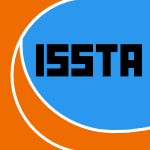 ISSTA-2011-McGillDS #analysis #modelling #scalability
ISSTA-2011-McGillDS #analysis #modelling #scalability- Scalable analysis of conceptual data models (MJM, LKD, REKS), pp. 56–66.
 JCDL-2010-EckertNNBAS #assembly #crowdsourcing
JCDL-2010-EckertNNBAS #assembly #crowdsourcing- Crowdsourcing the assembly of concept hierarchies (KE, MN, CN, CB, CA, HS), pp. 139–148.
 JCDL-2010-PopescuG #wiki
JCDL-2010-PopescuG #wiki- Spatiotemporal mapping of Wikipedia concepts (AP, GG), pp. 129–138.
 VLDB-2010-GunnemannFKS #clustering #interactive #named
VLDB-2010-GunnemannFKS #clustering #interactive #named- CoDA: Interactive Cluster Based Concept Discovery (SG, IF, HK, TS), pp. 1633–1636.
 VLDB-2010-ParameswaranGR #dataset #scalability #towards #web
VLDB-2010-ParameswaranGR #dataset #scalability #towards #web- Towards The Web of Concepts: Extracting Concepts from Large Datasets (AGP, HGM, AR), pp. 566–577.
 EDM-2010-MozinaGSGKB #student
EDM-2010-MozinaGSGKB #student- Conceptualizing Procedural Knowledge Targeted at Students with Different Skill Levels (MM, MG, AS, VG, JK, IB), pp. 309–310.
 CSMR-2010-AsadiPAG #approach #execution #heuristic #identification
CSMR-2010-AsadiPAG #approach #execution #heuristic #identification- A Heuristic-Based Approach to Identify Concepts in Execution Traces (FA, MDP, GA, YGG), pp. 31–40.
 ICPC-2010-AbebeT #natural language #parsing
ICPC-2010-AbebeT #natural language #parsing- Natural Language Parsing of Program Element Names for Concept Extraction (SLA, PT), pp. 156–159.
 ICSM-2010-ArnaoudovaEOGA #fault #identifier #metric #physics
ICSM-2010-ArnaoudovaEOGA #fault #identifier #metric #physics- Physical and conceptual identifier dispersion: Measures and relation to fault proneness (VA, LME, RO, YGG, GA), pp. 1–5.
 ICSM-2010-Wilson #ontology #using
ICSM-2010-Wilson #ontology #using- Using ontology fragments in concept location (LAW), pp. 1–2.
 SCAM-2010-GrantC #analysis #source code
SCAM-2010-GrantC #analysis #source code- Estimating the Optimal Number of Latent Concepts in Source Code Analysis (SG, JRC), pp. 65–74.
 SCAM-2010-UjhaziFPG #metric #object-oriented
SCAM-2010-UjhaziFPG #metric #object-oriented- New Conceptual Coupling and Cohesion Metrics for Object-Oriented Systems (BU, RF, DP, TG), pp. 33–42.
 WCRE-2010-Guerrouj #analysis #automation #identifier #source code
WCRE-2010-Guerrouj #analysis #automation #identifier #source code- Automatic Derivation of Concepts Based on the Analysis of Source Code Identifiers (LG), pp. 301–304.
 WCRE-2010-KagdiGPC #impact analysis #source code
WCRE-2010-KagdiGPC #impact analysis #source code- Blending Conceptual and Evolutionary Couplings to Support Change Impact Analysis in Source Code (HHK, MG, DP, MLC), pp. 119–128.
 ICGT-2010-JurackT #component #graph #inheritance
ICGT-2010-JurackT #component #graph #inheritance- A Component Concept for Typed Graphs with Inheritance and Containment Structures (SJ, GT), pp. 187–202.
 CHI-2010-AmershiFKT #interactive #learning #modelling #multi
CHI-2010-AmershiFKT #interactive #learning #modelling #multi- Examining multiple potential models in end-user interactive concept learning (SA, JF, AK, DST), pp. 1357–1360.
 CHI-2010-WangC #evaluation #multi #prototype
CHI-2010-WangC #evaluation #multi #prototype- Multitasking bar: prototype and evaluation of introducing the task concept into a browser (QW, HC), pp. 103–112.
 CAiSE-2010-KohlbornLKFRRK #approach #bottom-up
CAiSE-2010-KohlbornLKFRRK #approach #bottom-up- Conceptualizing a Bottom-Up Approach to Service Bundling (TK, CL, AK, EF, MR, CR, HK), pp. 129–134.
 CAiSE-2010-RamdoyalCH #analysis #database #interactive #reverse engineering #user interface
CAiSE-2010-RamdoyalCH #analysis #database #interactive #reverse engineering #user interface- Reverse Engineering User Interfaces for Interactive Database Conceptual Analysis (RR, AC, JLH), pp. 332–347.
 CAiSE-2010-SidorovaST #correctness #workflow
CAiSE-2010-SidorovaST #correctness #workflow- Workflow Soundness Revisited: Checking Correctness in the Presence of Data While Staying Conceptual (NS, CS, NT), pp. 530–544.
 ICEIS-AIDSS-2010-SantosBC #composition #named #ontology #plugin
ICEIS-AIDSS-2010-SantosBC #composition #named #ontology #plugin- FONTE — A Protégé Plugin for Engineering Complex Ontologies by Assembling Modular Ontologies of Space, Time and Domain Concepts (JS, LB, AGC), pp. 93–102.
 ICEIS-DISI-2010-BarczynskiFBS #adaptation #information management #modelling #named #using
ICEIS-DISI-2010-BarczynskiFBS #adaptation #information management #modelling #named #using- AdaptIE — Using Domain Language Concept to Enable Domain Experts in Modeling of Information Extraction Plans (WMB, FF, FB, DS), pp. 249–256.
 ICEIS-DISI-2010-HernandesSF #named #ontology #process
ICEIS-DISI-2010-HernandesSF #named #ontology #process- ONTOP — A Process to Support Ontology Conceptualization (EMH, DS, SF), pp. 58–65.
 ICEIS-DISI-2010-MoraesZF #algorithm #distributed
ICEIS-DISI-2010-MoraesZF #algorithm #distributed- A Distributed Algorithm for Formal Concepts Processing based on Search Subspaces (NRMdM, LEZ, HCF), pp. 105–111.
 ICEIS-ISAS-2010-LopesSVS #development #framework
ICEIS-ISAS-2010-LopesSVS #development #framework- A Conceptual Framework for the Development of Applications Centred on Context and Evidence-based Practice (ECL, US, VV, ACS), pp. 60–69.
 ICEIS-ISAS-2010-Tagg #modelling #ontology #towards
ICEIS-ISAS-2010-Tagg #modelling #ontology #towards- Towards a More Relationship-friendly Ontology Foundation for Conceptual Modelling (RT), pp. 368–373.
 ICEIS-J-2010-HernandesSF10a #collaboration #ontology #taxonomy #using #visualisation
ICEIS-J-2010-HernandesSF10a #collaboration #ontology #taxonomy #using #visualisation- Using Visualization and a Collaborative Glossary to Support Ontology Conceptualization (EMH, DS, SF), pp. 90–103.
 ICEIS-J-2010-PreisslerHL10a #execution #process #streaming #xml
ICEIS-J-2010-PreisslerHL10a #execution #process #streaming #xml- An XML-Based Streaming Concept for Business Process Execution (SP, DH, WL), pp. 60–75.
 CIKM-2010-JinW #ranking
CIKM-2010-JinW #ranking- Discovering, ranking and annotating cross-document relationships between concepts (WJ, XW), pp. 1929–1930.
 CIKM-2010-LangMWL #markov #random #using
CIKM-2010-LangMWL #markov #random #using- Improved latent concept expansion using hierarchical markov random fields (HL, DM, BW, JTL), pp. 249–258.
 CIKM-2010-MelliE #identification #ontology
CIKM-2010-MelliE #identification #ontology- Supervised identification and linking of concept mentions to a domain-specific ontology (GM, ME), pp. 1717–1720.
 CIKM-2010-SzumlanskiG #automation #network #semantics
CIKM-2010-SzumlanskiG #automation #network #semantics- Automatically acquiring a semantic network of related concepts (SRS, FG), pp. 19–28.
 CIKM-2010-WoodLH #image #using
CIKM-2010-WoodLH #image #using- Searching consumer image collections using web-based concept expansion (MDW, ACL, SH), pp. 679–688.
 CIKM-2010-XiaoLC #bound
CIKM-2010-XiaoLC #bound- K-farthest-neighbors-based concept boundary determination for support vector data description (YX, BL, LC), pp. 1701–1704.
 CIKM-2010-ZhangZTG #data type #framework #named
CIKM-2010-ZhangZTG #data type #framework #named- SKIF: a data imputation framework for concept drifting data streams (PZ, XZ, JT, LG), pp. 1869–1872.
 ECIR-2010-AlyDHS #modelling #retrieval #using
ECIR-2010-AlyDHS #modelling #retrieval #using- Beyond Shot Retrieval: Searching for Broadcast News Items Using Language Models of Concepts (RA, ARD, DH, AFS), pp. 241–252.
 ICPR-2010-HanCR10a #interactive #learning #recognition #semantics
ICPR-2010-HanCR10a #interactive #learning #recognition #semantics- Semi-supervised and Interactive Semantic Concept Learning for Scene Recognition (XHH, YWC, XR), pp. 3045–3048.
 ICPR-2010-SuXCWM #identification
ICPR-2010-SuXCWM #identification- EEG-based Personal Identification: from Proof-of-Concept to A Practical System (FS, LX, AC, YW, JM), pp. 3728–3731.
 ICPR-2010-TahirYBAMK #detection #visual notation
ICPR-2010-TahirYBAMK #detection #visual notation- The University of Surrey Visual Concept Detection System at ImageCLEF@ICPR: Working Notes (MAT, FY, MB, MA, KM, JK), pp. 850–853.
 ICPR-2010-TaxHVP #clustering #detection #learning #multi #using
ICPR-2010-TaxHVP #clustering #detection #learning #multi #using- The Detection of Concept Frames Using Clustering Multi-instance Learning (DMJT, EH, MFV, MP), pp. 2917–2920.
 KDD-2010-LiLZ #algorithm #collaboration #correlation
KDD-2010-LiLZ #algorithm #collaboration #correlation- Negative correlations in collaboration: concepts and algorithms (JL, QL, TZ), pp. 463–472.
 KDIR-2010-Pastor #challenge #modelling
KDIR-2010-Pastor #challenge #modelling- Conceptual Modeling for the Human Genome Challenge (OP), p. 11.
 KDIR-2010-Pavlovic-LazeticG #classification #documentation
KDIR-2010-Pavlovic-LazeticG #classification #documentation- Ontology-driven Conceptual Document Classification (GPL, JG), pp. 383–386.
 KDIR-2010-WangSFR
KDIR-2010-WangSFR - A Meta-learning Method for Concept Drift (RW, LS, MÓF, ER), pp. 257–262.
 KEOD-2010-BoinskiOSK #design #ontology
KEOD-2010-BoinskiOSK #design #ontology- Influence and Selection of Basic Concepts on Ontology Design (TB, PO, PS, HK), pp. 364–369.
 KEOD-2010-FrixioneL #ontology #representation
KEOD-2010-FrixioneL #ontology #representation- The Computational Representation of Concepts in Formal Ontologies — Some General Considerations (MF, AL), pp. 396–403.
 KEOD-2010-LeraJP #algorithm #ambiguity #ontology #semantics
KEOD-2010-LeraJP #algorithm #ambiguity #ontology #semantics- Unsupervised Algorithm for the Concept Disambiguation in Ontologies — Semantic Rules and Voting System to Determine Suitable Senses (IL, CJ, RP), pp. 388–391.
 KEOD-2010-LettnerHFD #architecture #evolution #integration #metadata #modelling
KEOD-2010-LettnerHFD #architecture #evolution #integration #metadata #modelling- Conceptual Models for Metadata Integration and Architecture Evolution (CL, CH, BF, ED), pp. 269–275.
 SEKE-2010-ChavesHVS #development #distributed
SEKE-2010-ChavesHVS #development #distributed- A Context Conceptual Model for a Distributed Software Development Environment (APC, EHMH, VV, IS), pp. 437–442.
 SIGIR-2010-RudinacLH #query #retrieval #visual notation
SIGIR-2010-RudinacLH #query #retrieval #visual notation- Visual concept-based selection of query expansions for spoken content retrieval (SR, ML, AH), pp. 891–892.
 SIGIR-2010-XuWHL #image
SIGIR-2010-XuWHL #image- Image search by concept map (HX, JW, XSH, SL), pp. 275–282.
 MoDELS-v1-2010-ArendtBJKT #emf #model transformation #named #tool support
MoDELS-v1-2010-ArendtBJKT #emf #model transformation #named #tool support- Henshin: Advanced Concepts and Tools for In-Place EMF Model Transformations (TA, EB, SJ, CK, GT), pp. 121–135.
 MoDELS-v1-2010-LaraG #metamodelling #mixin
MoDELS-v1-2010-LaraG #metamodelling #mixin- Generic Meta-modelling with Concepts, Templates and Mixin Layers (JdL, EG), pp. 16–30.
 SPLC-2010-CarbonM
SPLC-2010-CarbonM - Introducing a Conceptual Model of Software Production (RC, DM), pp. 492–493.
 OOPSLA-2010-OssherBSAACDVFK #analysis #architecture #challenge #flexibility #modelling #research #tool support
OOPSLA-2010-OssherBSAACDVFK #analysis #architecture #challenge #flexibility #modelling #research #tool support- Flexible modeling tools for pre-requirements analysis: conceptual architecture and research challenges (HO, RKEB, IS, DA, AAT, MC, MD, JdV, AF, SK), pp. 848–864.
 RE-2010-LockerbieBMBE #analysis #modelling #simulation #using
RE-2010-LockerbieBMBE #analysis #modelling #simulation #using- Using i* Modelling as a Bridge between Air Traffic Management Operational Concepts and Agent-based Simulation Analysis (JL, DB, NAMM, HAPB, MHCE), pp. 351–356.
 SAC-OOPS-J-2008-PirkelbauerPMS10 #algorithm #runtime
SAC-OOPS-J-2008-PirkelbauerPMS10 #algorithm #runtime- Dynamic algorithm selection for runtime concepts (PP, SP, MM, BS), pp. 773–786.
 ICSE-2010-Brondum #architecture #detection
ICSE-2010-Brondum #architecture #detection- Software architecture for systems of software intensive systems (S3): the concepts and detection of inter-system relationships (JB), pp. 355–356.
 ICSE-2010-GorschekTA #empirical #object-oriented #scalability #using
ICSE-2010-GorschekTA #empirical #object-oriented #scalability #using- A large-scale empirical study of practitioners’ use of object-oriented concepts (TG, EDT, LA), pp. 115–124.
 SAC-2010-DrumondG #logic #markov #ontology #using
SAC-2010-DrumondG #logic #markov #ontology #using- Extracting ontology concept hierarchies from text using Markov logic (LD, RG), pp. 1354–1358.
 SAC-2010-FrantiKTS #architecture #prototype
SAC-2010-FrantiKTS #architecture #prototype- MOPSI location-based search engine: concept, architecture and prototype (PF, JK, AT, LS), pp. 872–873.
 SAC-2010-Makela #array
SAC-2010-Makela #array- Concept for providing guaranteed service level over an array of unguaranteed commodity connections (AM), pp. 678–683.
 SAC-2010-TangJ #c++ #optimisation
SAC-2010-TangJ #c++ #optimisation- Generic flow-sensitive optimizing transformations in C++ with concepts (XT, JJ), pp. 2111–2118.
 GPCE-J-2007-JarviMS10 #c++ #programming
GPCE-J-2007-JarviMS10 #c++ #programming- Programming with C++ concepts (JJ, MM, JNS), pp. 596–614.
 LDTA-2009-BaggeH10 #matter #why
LDTA-2009-BaggeH10 #matter #why- Interfacing Concepts: Why Declaration Style Shouldn’t Matter (AHB, MH), pp. 37–50.
 LDTA-2009-HerrmannsdorferH10 #library #reuse
LDTA-2009-HerrmannsdorferH10 #library #reuse- Library Concepts for Model Reuse (MH, BH), pp. 121–134.
 PDP-2010-GrossBS #parallel #persistent
PDP-2010-GrossBS #parallel #persistent- The PPPSpace: Innovative Concepts for Permanent Capturing, Persistent Storing, and Parallel Processing and Distributing Events (TG, CB, MS), pp. 359–366.
 ICST-2010-Laurent #formal method #process #testing #using #validation #verification
ICST-2010-Laurent #formal method #process #testing #using #validation #verification- Using Formal Methods and Testability Concepts in the Avionics Systems Validation and Verification (V&V) Process (OL), pp. 1–10.
 ICST-2010-Panesar-WalawegeSBC #modelling #safety #standard
ICST-2010-Panesar-WalawegeSBC #modelling #safety #standard- Characterizing the Chain of Evidence for Software Safety Cases: A Conceptual Model Based on the IEC 61508 Standard (RKPW, MS, LCB, TC), pp. 335–344.
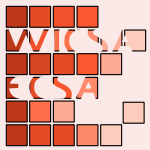 WICSA-ECSA-2009-AboudAFHTUV #architecture #automation #classification #component #using
WICSA-ECSA-2009-AboudAFHTUV #architecture #automation #classification #component #using- Automated architectural component classification using concept lattices (NAA, GA, JRF, MH, CT, CU, SV), pp. 21–30.
 WICSA-ECSA-2009-Konemann #modelling #tool support #uml
WICSA-ECSA-2009-Konemann #modelling #tool support #uml- Integrating decision management with UML modeling concepts and tools (PK), pp. 297–300.
 DRR-2009-HalimaA #recognition #segmentation #using
DRR-2009-HalimaA #recognition #segmentation #using- Simultaneous segmentation and recognition of Arabic printed text using linguistic concepts of vocabulary (MBH, AMA), pp. 1–10.
 ECDL-2009-DammKFC #library #multimodal #music #query #using
ECDL-2009-DammKFC #library #multimodal #music #query #using- A Concept for Using Combined Multimodal Queries in Digital Music Libraries (DD, FK, CF, MC), pp. 261–272.
 ECDL-2009-SuttonG #education #learning
ECDL-2009-SuttonG #education #learning- Conceptual Discovery of Educational Resources through Learning Objectives (SAS, DG), pp. 380–383.
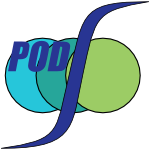 PODS-2009-DalviKPRTBKM #web
PODS-2009-DalviKPRTBKM #web- A web of concepts (NND, RK, BP, RR, AT, PB, SK, SM), pp. 1–12.
 EDM-2009-SimkoB #adaptation #automation
EDM-2009-SimkoB #adaptation #automation- Automatic Concept Relationships Discovery for an Adaptive E-course (MS, MB), pp. 171–180.
 ITiCSE-2009-MiuraSK #interactive #object-oriented #programming language
ITiCSE-2009-MiuraSK #interactive #object-oriented #programming language- Anchor garden: an interactive workbenchfor basic data concept learningin object oriented programming languages (MM, TS, SK), pp. 141–145.
 ITiCSE-2009-WiesnerB #how #learning #question
ITiCSE-2009-WiesnerB #how #learning #question- How do robots foster the learning of basic concepts in informatics? (BW, TB), p. 403.
 SIGITE-2009-RigbyDER
SIGITE-2009-RigbyDER - The efficacy of cross-discipline representations for ill-defined concepts (SR, MJD, JJE, MKR), pp. 229–234.
 SIGITE-2009-SmarkuskyT #approach
SIGITE-2009-SmarkuskyT #approach- An interdisciplinary approach in applying fundamental concepts (DLS, SAT), pp. 224–228.
 ICPC-2009-SchauerK #source code
ICPC-2009-SchauerK #source code- A case for concept programs (RS, RKK), pp. 258–262.
 ICSM-2009-GayHMM #feedback #on the #using
ICSM-2009-GayHMM #feedback #on the #using- On the use of relevance feedback in IR-based concept location (GG, SH, AM, TM), pp. 351–360.
 MSR-2009-EkanayakeTGB #fault #predict #quality #using
MSR-2009-EkanayakeTGB #fault #predict #quality #using- Tracking concept drift of software projects using defect prediction quality (JE, JT, HCG, AB), pp. 51–60.
 SCAM-2009-DavidH
SCAM-2009-DavidH - Concepts as Syntactic Sugar (VD, MH), pp. 147–156.
 AIIDE-2009-VelsenWV #interactive
AIIDE-2009-VelsenWV #interactive- Concepts for Interactive Digital Storytelling: From Table-top to Game-AI (MVV, JW, GV).
 HCD-2009-GuessardPBMS #approach
HCD-2009-GuessardPBMS #approach- Ergonomic Approach for the Conception of a Theatre Medical Regulation System (WG, AP, RB, POM, AS), pp. 965–971.
 HCD-2009-Kushi #case study #design #interface #process #research #student #video #visualisation
HCD-2009-Kushi #case study #design #interface #process #research #student #video #visualisation- Organized Reframing Process with Video Ethnography: A Case Study of Students’ Design Project for New Interface Concept from Research to Visualization (KK), pp. 239–246.
 HCD-2009-LiuLCLW #design #development #mobile #research
HCD-2009-LiuLCLW #design #development #mobile #research- Design for China Migrant Workers: A Case of User Research and Mobile Product Concepts Development (XL, JL, JC, YL, XW), pp. 482–491.
 HCD-2009-MejiaMFOP #communication #design #development #evaluation
HCD-2009-MejiaMFOP #communication #design #development #evaluation- Evaluating Design Concepts to Support Informal Communication in Hospitals through the Development of a Tool Based on an Iterative Evaluation (DAM, ALM, JF, SFO, JAP), pp. 1013–1022.
 HCD-2009-MerlinHR #evolution #multi
HCD-2009-MerlinHR #evolution #multi- Bridging Software Evolution’s Gap: The Multilayer Concept (BM, CH, MR), pp. 266–275.
 HCD-2009-NaumannWS #difference #experience #industrial #metric #usability #user interface
HCD-2009-NaumannWS #difference #experience #industrial #metric #usability #user interface- Measurements and Concepts of Usability and User Experience: Differences between Industry and Academia (AN, IW, RS), pp. 618–626.
 HCD-2009-NieminenT #development #problem
HCD-2009-NieminenT #development #problem- Concept Development with Real Users: Involving Customers in Creative Problem Solving (MPN, MT), pp. 869–878.
 HCD-2009-PalviainenV #automation #design #experience #user interface
HCD-2009-PalviainenV #automation #design #experience #user interface- User Experience in Machinery Automation: From Concepts and Context to Design Implications (JP, KVVM), pp. 1042–1051.
 HCD-2009-RomeroCAMVC #development
HCD-2009-RomeroCAMVC #development- Proactive Ergonomics in Refrigerator Concept Development (MR, FC, GA, MM, JV, LC), pp. 627–634.
 HCD-2009-RunonenM #development #research #tool support
HCD-2009-RunonenM #development #research #tool support- Shaping the Future with Users — Futures Research Methods as Tools for User-Centered Concept Development (MR, PM), pp. 904–911.
 HCI-AUII-2009-BekiarisKMP #paradigm #smarttech
HCI-AUII-2009-BekiarisKMP #paradigm #smarttech- An Interoperable Concept for Controlling Smart Homes — The ASK-IT Paradigm (EB, KK, AM, MP), pp. 377–386.
 HCI-AUII-2009-PaelkeN #agile #design #navigation #user interface
HCI-AUII-2009-PaelkeN #agile #design #navigation #user interface- Dynamic Maps for Future Navigation Systems: Agile Design Exploration of User Interface Concepts (VP, KN), pp. 169–178.
 HCI-NIMT-2009-SchreiberWB #interactive #using
HCI-NIMT-2009-SchreiberWB #interactive #using- New Interaction Concepts by Using the Wii Remote (MS, MvWM, RB), pp. 261–270.
 HCI-NT-2009-Wang09a #design
HCI-NT-2009-Wang09a #design- Learn as Babies Learn: A Conceptual Model of Designing Optimum Learnability (DXW), pp. 745–751.
 HCI-VAD-2009-MitsuishiKHG #distance #interactive #realtime
HCI-VAD-2009-MitsuishiKHG #distance #interactive #realtime- The Concept of IMPRESSION: An Interactive Instruction System and Its Practice for Real-Time Distance Lessons between U.S. and Japan (TM, FK, YH, KG), pp. 176–185.
 HCI-VAD-2009-ThiesK #implementation #interactive
HCI-VAD-2009-ThiesK #implementation #interactive- Electronic Glassboard — Conception and Implementation of an Interactive Tele-presence Application (PT, BK), pp. 632–640.
 HIMI-II-2009-DwyerL #assurance #generative
HIMI-II-2009-DwyerL #assurance #generative- Separation Assurance and Collision Avoidance Concepts for the Next Generation Air Transportation System (JPD, SJL), pp. 748–757.
 HIMI-II-2009-HoMBB #requirements
HIMI-II-2009-HoMBB #requirements- Information Requirements and Sharing for NGATS Function Allocation Concepts (NTH, PM, JB, BB), pp. 776–785.
 OCSC-2009-WangWLWC #case study #design #network #social #user study
OCSC-2009-WangWLWC #case study #design #network #social #user study- Ethnographic User Study and Concept Design for Chinese Migrant Workers’ Social Networks (JW, WW, YL, XW, QC), pp. 710–718.
 CAiSE-2009-Guizzardi #modelling #problem #revisited #transitive
CAiSE-2009-Guizzardi #modelling #problem #revisited #transitive- The Problem of Transitivity of Part-Whole Relations in Conceptual Modeling Revisited (GG), pp. 94–109.
 CAiSE-2009-Haller #implementation #migration #standard #towards
CAiSE-2009-Haller #implementation #migration #standard #towards- Towards the Industrialization of Data Migration: Concepts and Patterns for Standard Software Implementation Projects (KH), pp. 63–78.
 CAiSE-2009-QueraltT #reasoning #uml
CAiSE-2009-QueraltT #reasoning #uml- Reasoning on UML Conceptual Schemas with Operations (AQ, ET), pp. 47–62.
 ICEIS-AIDSS-2009-CastroAP #approach #implementation #metadata #named #using
ICEIS-AIDSS-2009-CastroAP #approach #implementation #metadata #named #using- K-annotations — An Approach for Conceptual Knowledge Implementation using Metadata Annotations (ESEC, MA, RTP), pp. 66–72.
 ICEIS-DISI-2009-ReyesOPGMD #quality #towards
ICEIS-DISI-2009-ReyesOPGMD #quality #towards- Toward a Quality Model for CBSE — Conceptual Model Proposal (MAR, MO, MAP, AG, LEM, KD), pp. 101–106.
 ICEIS-DISI-2009-StempliucFAB #modelling #network
ICEIS-DISI-2009-StempliucFAB #modelling #network- Extending the UML-GeoFrame Data Model for Conceptual Modeling of Network Applications (SMS, JLF, MVAA, KAVB), pp. 164–170.
 ICEIS-ISAS-2009-PereiraSS #approach #process #scalability #semantics
ICEIS-ISAS-2009-PereiraSS #approach #process #scalability #semantics- A Socio-semantic Approach to the Conceptualisation of Domains, Processes and Tasks in Large Projects (CP, CS, ALS), pp. 237–242.
 ICEIS-J-2009-BenevidesG #modelling #ontology
ICEIS-J-2009-BenevidesG #modelling #ontology- A Model-Based Tool for Conceptual Modeling and Domain Ontology Engineering in OntoUML (ABB, GG), pp. 528–538.
 ICEIS-J-2009-FritzscheML #analysis #data mining #design #industrial #interactive #mining #quality
ICEIS-J-2009-FritzscheML #analysis #data mining #design #industrial #interactive #mining #quality- Interactive Quality Analysis in the Automotive Industry: Concept and Design of an Interactive, Web-Based Data Mining Application (SF, MM, CL), pp. 402–414.
 ICEIS-J-2009-NollR #traceability #using
ICEIS-J-2009-NollR #traceability #using- Concepts-Based Traceability: Using Experiments to Evaluate Traceability Techniques (RPN, MBR), pp. 539–550.
 CIKM-2009-GunnemannMFS #detection #orthogonal
CIKM-2009-GunnemannMFS #detection #orthogonal- Detection of orthogonal concepts in subspaces of high dimensional data (SG, EM, IF, TS), pp. 1317–1326.
 ECIR-2009-MaisonnasseGC #modelling
ECIR-2009-MaisonnasseGC #modelling- Model Fusion in Conceptual Language Modeling (LM, ÉG, JPC), pp. 240–251.
 ECIR-2009-TollariDMFAG #image #retrieval #visual notation
ECIR-2009-TollariDMFAG #image #retrieval #visual notation- Exploiting Visual Concepts to Improve Text-Based Image Retrieval (ST, MD, CM, AFT, MRA, PG), pp. 701–705.
 KDD-2009-ChenLTW #adaptation #mining
KDD-2009-ChenLTW #adaptation #mining- Extracting discriminative concepts for domain adaptation in text mining (BC, WL, IWT, TLW), pp. 179–188.
 KDIR-2009-Chmielewski #3d #interactive #interface #metadata
KDIR-2009-Chmielewski #3d #interactive #interface #metadata- Building Extensible 3D Interaction Metadata with Interaction Interface Concept (JC), pp. 160–167.
 KDIR-2009-FatemiPRS #mining #retrieval #semantics #using #video
KDIR-2009-FatemiPRS #mining #retrieval #semantics #using #video- Using Association Rule Mining to Enrich Semantic Concepts for Video Retrieval (NF, FP, LER, AFS), pp. 119–126.
 KDIR-2009-KulkarniC #semantics #using #word
KDIR-2009-KulkarniC #semantics #using #word- Computation of the Semantic Relatedness between Words using Concept Clouds (SK, DC), pp. 183–188.
 KEOD-2009-Kop #ontology #owl #question #what
KEOD-2009-Kop #ontology #owl #question #what- What are Main Concepts in an OWL Domain Ontology? (CK), pp. 404–407.
 KEOD-2009-Zarri #industrial #knowledge base
KEOD-2009-Zarri #industrial #knowledge base- Creation and Management of a Conceptual Knowledge Base in an Industrial Domain (GPZ), pp. 214–219.
 KMIS-2009-BuchnerMN #analysis #enterprise #open source #tool support
KMIS-2009-BuchnerMN #analysis #enterprise #open source #tool support- A Concept and Service based Analysis of Commercial and Open Source Enterprise 2.0 Tools (TB, FM, CN), pp. 37–45.
 KMIS-2009-MichelP #education #information management #project management
KMIS-2009-MichelP #education #information management #project management- Knowledge Management Concepts for Training by Project — An Observation of the Case of Project Management Education (CM, PP), pp. 129–134.
 MLDM-2009-BouthinonSV #ambiguity #learning
MLDM-2009-BouthinonSV #ambiguity #learning- Concept Learning from (Very) Ambiguous Examples (DB, HS, VV), pp. 465–478.
 MLDM-2009-LiHLG #detection #random #streaming
MLDM-2009-LiHLG #detection #random #streaming- Concept Drifting Detection on Noisy Streaming Data in Random Ensemble Decision Trees (PPL, XH, QL, YG), pp. 236–250.
 MLDM-2009-OkuboH #pseudo
MLDM-2009-OkuboH #pseudo- Finding Top-N Pseudo Formal Concepts with Core Intents (YO, MH), pp. 479–493.
 RecSys-2009-PudhiyaveetilGLE #recommendation
RecSys-2009-PudhiyaveetilGLE #recommendation- Conceptual recommender system for CiteSeerX (AKP, SG, HPL, JE), pp. 241–244.
 SEKE-2009-FarZYA #documentation #learning #semantics #using
SEKE-2009-FarZYA #documentation #learning #semantics #using- Realization of Semantic Search Using Concept Learning and Document Annotation Agents (BHF, CZ, Z(Y, MA), pp. 164–169.
 SEKE-2009-KumeS #comprehension #interactive #object-oriented
SEKE-2009-KumeS #comprehension #interactive #object-oriented- A Conceptual Model for Comprehension of Object-oriented Interactive Systems (IK, ES), pp. 376–381.
 SEKE-2009-LudwigTA #analysis #database #deduction #performance #reasoning #semantics #web
SEKE-2009-LudwigTA #analysis #database #deduction #performance #reasoning #semantics #web- Performance Analysis of a Deductive Database with a Semantic Web Reasoning Engine: ConceptBase and Racer (SAL, CT, KA), pp. 688–693.
 SEKE-2009-RachevaD #agile #development #perspective #requirements #towards
SEKE-2009-RachevaD #agile #development #perspective #requirements #towards- Reprioritizing the Requirements in Agile Software Development: Towards a Conceptual Model from Clients’ Perspective (ZR, MD), pp. 73–80.
 SEKE-2009-SarkarCCB #graph #multi #specification
SEKE-2009-SarkarCCB #graph #multi #specification- Object Specification Language for Graph Based Conceptual level Multidimensional Data Model (AS, SC, NC, SB), pp. 694–607.
 SIGIR-2009-PascaA #information retrieval #web
SIGIR-2009-PascaA #information retrieval #web- Web-derived resources for web information retrieval: from conceptual hierarchies to attribute hierarchies (MP, EA), pp. 596–603.
 SIGIR-2009-WangSH #representation #video
SIGIR-2009-WangSH #representation #video- Concept representation based video indexing (MW, YS, XSH), pp. 654–655.
 MoDELS-2009-JurackT #distributed #graph transformation #model transformation #towards #using
MoDELS-2009-JurackT #distributed #graph transformation #model transformation #towards #using- Towards Composite Model Transformations Using Distributed Graph Transformation Concepts (SJ, GT), pp. 226–240.
 MoDELS-2009-YueBL #analysis #approach #case study #empirical #evaluation #modelling #towards
MoDELS-2009-YueBL #analysis #approach #case study #empirical #evaluation #modelling #towards- A Use Case Modeling Approach to Facilitate the Transition towards Analysis Models: Concepts and Empirical Evaluation (TY, LCB, YL), pp. 484–498.
 MoDELS-2009-JurackT #distributed #graph transformation #model transformation #towards #using
MoDELS-2009-JurackT #distributed #graph transformation #model transformation #towards #using- Towards Composite Model Transformations Using Distributed Graph Transformation Concepts (SJ, GT), pp. 226–240.
 MoDELS-2009-YueBL #analysis #approach #case study #empirical #evaluation #modelling #towards
MoDELS-2009-YueBL #analysis #approach #case study #empirical #evaluation #modelling #towards- A Use Case Modeling Approach to Facilitate the Transition towards Analysis Models: Concepts and Empirical Evaluation (TY, LCB, YL), pp. 484–498.
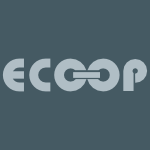 ECOOP-2009-HeydarnooriCB #automation #framework
ECOOP-2009-HeydarnooriCB #automation #framework- Supporting Framework Use via Automatically Extracted Concept-Implementation Templates (AH, KC, TTB), pp. 344–368.
 AdaEurope-2009-PorsG #modelling #requirements
AdaEurope-2009-PorsG #modelling #requirements- Conceptual Modeling for System Requirements Enhancement (ELP, OG), pp. 251–265.
 SIGAda-2009-Sward #architecture #implementation
SIGAda-2009-Sward #architecture #implementation- Service oriented architecture (SOA) concepts and implementations (RES), pp. 15–16.
 ESEC-FSE-2009-Schafer #navigation
ESEC-FSE-2009-Schafer #navigation- IQ routes and HD traffic: technology insights about tomtom’s time-dynamic navigation concept (RPS), pp. 171–172.
 SAC-2009-EstevesRFO #framework #implementation #platform #simulation
SAC-2009-EstevesRFO #framework #implementation #platform #simulation- Conceptualization and implementation of a microscopic pedestrian simulation platform (EFE, RJFR, PAFF, ECO), pp. 2105–2106.
 SAC-2009-LeS #detection #performance #visual notation
SAC-2009-LeS #detection #performance #visual notation- Efficient concept detection by fusing simple visual features (DDL, SS), pp. 1839–1840.
 SAC-2009-ShenU #approximate #composition #matrix #multi
SAC-2009-ShenU #approximate #composition #matrix #multi- A class of multistep sparse matrix strategies for concept decomposition matrix approximation (CS, MU), pp. 1714–1718.
 GPCE-2009-BaggeDH #axiom #c++ #testing
GPCE-2009-BaggeDH #axiom #c++ #testing- The axioms strike back: testing with concepts and axioms in C++ (AHB, VD, MH), pp. 15–24.
 PDP-2009-DiazRRST #aspect-oriented #component
PDP-2009-DiazRRST #aspect-oriented #component- Adding Aspect-Oriented Concepts to the High-Performance Component Model of SBASCO (MD, SR, BR, ES, JMT), pp. 21–27.
 HT-2008-LakkarajuGS #distance #documentation #similarity
HT-2008-LakkarajuGS #distance #documentation #similarity- Document similarity based on concept tree distance (PL, SG, MS), pp. 127–132.
 VLDB-2008-LiuTG #documentation #named
VLDB-2008-LiuTG #documentation #named- ManyAspects: a system for highlighting diverse concepts in documents (KL, ET, TG), pp. 1444–1447.
 CSEET-2008-RootRT
CSEET-2008-RootRT - Exporting Studio: Critical Issues to Successfully Adopt the Software Studio Concept (DR, MRL, GT), pp. 41–48.
 CSEET-2008-WangOM #evaluation #game studies #mobile
CSEET-2008-WangOM #evaluation #game studies #mobile- An Evaluation of a Mobile Game Concept for Lectures (AIW, TØ, OKMS), pp. 197–204.
 EDM-2008-MathewsM #question #student
EDM-2008-MathewsM #question #student- Do Students Who See More Concepts in an ITS Learn More? (MM, TM), pp. 266–273.
 SIGITE-2008-RigbyDER #case study #comprehension
SIGITE-2008-RigbyDER #case study #comprehension- Measuring conceptual understanding: a case study (SR, MJD, JJE, MKR), pp. 11–16.
 SIGITE-2008-SchmalzC #education #multimodal
SIGITE-2008-SchmalzC #education #multimodal- It/cs workshop: multimodal, multimedia courseware for teaching technical concepts in humanistic context (MSS, LC), pp. 23–30.
 CSMR-2008-SpekKL #architecture #semantics #towards #using
CSMR-2008-SpekKL #architecture #semantics #towards #using- Towards Recovering Architectural Concepts Using Latent Semantic Indexing (PvdS, SK, PvdL), pp. 253–257.
 ICPC-2008-RatiuJ #api #representation
ICPC-2008-RatiuJ #api #representation- Evaluating the Reference and Representation of Domain Concepts in APIs (DR, JJ), pp. 242–247.
 ICSM-2008-SuttonM #automation #c++ #identification
ICSM-2008-SuttonM #automation #c++ #identification- Automatically identifying C++0x concepts in function templates (AS, JIM), pp. 57–66.
 WCRE-2008-GrantCS #analysis #automation #component #independence #using
WCRE-2008-GrantCS #analysis #automation #component #independence #using- Automated Concept Location Using Independent Component Analysis (SG, JRC, DBS), pp. 138–142.
 CHI-2008-FogartyTKW #image #interactive #learning #named
CHI-2008-FogartyTKW #image #interactive #learning #named- CueFlik: interactive concept learning in image search (JF, DST, AK, SAJW), pp. 29–38.
 CAiSE-2008-AnHS #maintenance
CAiSE-2008-AnHS #maintenance- Round-Trip Engineering for Maintaining Conceptual-Relational Mappings (YA, XH, IYS), pp. 296–311.
 CAiSE-2008-CostalGQT #contract
CAiSE-2008-CostalGQT #contract- Drawing Preconditions of Operation Contracts from Conceptual Schemas (DC, CG, AQ, ET), pp. 266–280.
 EDOC-2008-AlmeidaG #enterprise #modelling #semantics
EDOC-2008-AlmeidaG #enterprise #modelling #semantics- A Semantic Foundation for Role-Related Concepts in Enterprise Modelling (JPAA, GG), pp. 31–40.
 EDOC-2008-EngelsA #architecture #enterprise #evolution
EDOC-2008-EngelsA #architecture #enterprise #evolution- Service-Oriented Enterprise Architectures: Evolution of Concepts and Methods (GE, MA).
 EDOC-2008-WegmannKMRG #architecture #enterprise #framework
EDOC-2008-WegmannKMRG #architecture #enterprise #framework- Augmenting the Zachman Enterprise Architecture Framework with a Systemic Conceptualization (AW, AK, LM, GR, AG), pp. 3–13.
 ICEIS-AIDSS-2008-BurdescuML #student #using
ICEIS-AIDSS-2008-BurdescuML #student #using- Building a Decision Support System for Students by Using Concept Maps (DDB, MCM, BL), pp. 130–135.
 ICEIS-DISI-2008-Gorea #architecture #data mining #mining #modelling #named #web
ICEIS-DISI-2008-Gorea #architecture #data mining #mining #modelling #named #web- DeVisa — Concepts and Architecture of a Data Mining Models Scoring and Management Web System (DG), pp. 276–281.
 ICEIS-DISI-2008-KaranikolasSNY #database #enterprise #information management
ICEIS-DISI-2008-KaranikolasSNY #database #enterprise #information management- Conceptual Universal Database Language (CUDL) and Enterprise Medical Information Systems (NK, CS, MN, EJY), pp. 362–367.
 ICEIS-DISI-2008-LamolleZM #framework #xml
ICEIS-DISI-2008-LamolleZM #framework #xml- Conceptual Framework for XML Schema Mapping (ML, AZ, LM), pp. 85–90.
 ICEIS-DISI-2008-SalemGB #modelling #multi #specification #verification
ICEIS-DISI-2008-SalemGB #modelling #multi #specification #verification- Multi-Dimensional Modeling — Formal Specification and Verification of the Hierarchy Concept (AS, FG, HBA), pp. 317–322.
 ICEIS-HCI-2008-Perez-MarinPM #automation #interactive #modelling #natural language
ICEIS-HCI-2008-Perez-MarinPM #automation #interactive #modelling #natural language- Natural Language Interaction Based on Automatically Generated Conceptual Models (DRPM, IPN, PRM), pp. 5–12.
 ICEIS-HCI-2008-SapateiroVM #collaboration #documentation
ICEIS-HCI-2008-SapateiroVM #collaboration #documentation- Improving Organizational Collaboration Based on Document Tagging Concept (CS, BV, PM), pp. 210–214.
 ICEIS-ISAS1-2008-GullaBK #ontology #using
ICEIS-ISAS1-2008-GullaBK #ontology #using- Using Association Rules to Learn Concept Relationships in Ontologies (JAG, TB, GSK), pp. 58–65.
 ICEIS-ISAS1-2008-MoralesTPA #communication #composition #model checking #verification
ICEIS-ISAS1-2008-MoralesTPA #communication #composition #model checking #verification- A Conceptual Scheme for Compositional Model-Checking Verification of Critical Communicating Systems (LEMM, MICT, MAP, KBA), pp. 86–93.
 ICEIS-ISAS2-2008-BohmLH #evaluation #ontology #performance
ICEIS-ISAS2-2008-BohmLH #evaluation #ontology #performance- A Supply Chain Ontology Conceptualization with Focus on Performance Evaluation (ACB, HPL, GPH), pp. 402–409.
 ICEIS-ISAS2-2008-BreemenS #on the #process
ICEIS-ISAS2-2008-BreemenS #on the #process- On Conceptualization as a Systematic Process (AJJvB, JJS), pp. 37–42.
 ICEIS-ISAS2-2008-SchultK #adaptation #automation #data mining #enterprise #mining #self
ICEIS-ISAS2-2008-SchultK #adaptation #automation #data mining #enterprise #mining #self- Self-Adaptive Customizing with Data Mining Methods — A Concept for the Automatic Customizing of an ERP System with Data Mining Methods (RS, GK), pp. 70–75.
 ICEIS-SAIC-2008-AldeebCS #peer-to-peer #workflow
ICEIS-SAIC-2008-AldeebCS #peer-to-peer #workflow- An Inter-Organizational Peer-to-Peer Workflow Management System — P2P based Virtual Organization Concept (AA, KAC, MJS), pp. 85–92.
 ICEIS-SAIC-2008-DranilPHS #exclamation #integration #web #web service
ICEIS-SAIC-2008-DranilPHS #exclamation #integration #web #web service- Get Ready for Mashability! Concepts for Web 2.0 Service Integration (PD, TP, TH, MS), pp. 160–167.
 CIKM-2008-ChemuduguntaSS #modelling #statistics #topic
CIKM-2008-ChemuduguntaSS #modelling #statistics #topic- Combining concept hierarchies and statistical topic models (CC, PS, MS), pp. 1469–1470.
 CIKM-2008-ColucciSDT
CIKM-2008-ColucciSDT - Finding informative commonalities in concept collections (SC, EDS, FMD, ET), pp. 807–817.
 CIKM-2008-LinSK #network #people #process #social #summary
CIKM-2008-LinSK #network #people #process #social #summary- Summarization of social activity over time: people, actions and concepts in dynamic networks (YRL, HS, AK), pp. 1379–1380.
 ICPR-2008-KarnickMP #approach #classification #incremental #learning #multi #using
ICPR-2008-KarnickMP #approach #classification #incremental #learning #multi #using- Incremental learning in non-stationary environments with concept drift using a multiple classifier based approach (MTK, MM, RP), pp. 1–4.
 ICPR-2008-MaL08a #approach #detection #optimisation #performance #semantics
ICPR-2008-MaL08a #approach #detection #optimisation #performance #semantics- An efficient gradient computation approach to discriminative fusion optimization in semantic concept detection (CM, CHL), pp. 1–4.
 KDD-2008-ZhangZS #categorisation #data type #mining
KDD-2008-ZhangZS #categorisation #data type #mining- Categorizing and mining concept drifting data streams (PZ, XZ, YS), pp. 812–820.
 KR-2008-Halpern #equilibrium #nash
KR-2008-Halpern #equilibrium #nash- Beyond Nash Equilibrium: Solution Concepts for the 21st Century (JYH), pp. 6–15.
 SEKE-2008-SalvianoF #modelling #process
SEKE-2008-SalvianoF #modelling #process- Unified Basic Concepts for Process Capability Models (CFS, AMCMF), pp. 173–178.
 SIGIR-2008-BenderskyC #query
SIGIR-2008-BenderskyC #query- Discovering key concepts in verbose queries (MB, WBC), pp. 491–498.
 SIGIR-2008-MeijTRK #modelling
SIGIR-2008-MeijTRK #modelling- Parsimonious concept modeling (EM, DT, MdR, WK), pp. 815–816.
 SIGIR-2008-MurthyTFVYG #approach #implementation #information retrieval #tool support #visualisation
SIGIR-2008-MurthyTFVYG #approach #implementation #information retrieval #tool support #visualisation- From concepts to implementation and visualization: tools from a team-based approach to ir (UM, RdST, EAF, LV, SY, MAG), p. 889.
 SIGIR-2008-TrieschniggMRK #modelling #using
SIGIR-2008-TrieschniggMRK #modelling #using- Measuring concept relatedness using language models (DT, EM, MdR, WK), pp. 823–824.
 TOOLS-EUROPE-2008-StrommerW #framework #model transformation #tool support
TOOLS-EUROPE-2008-StrommerW #framework #model transformation #tool support- A Framework for Model Transformation By-Example: Concepts and Tool Support (MS, MW), pp. 372–391.
 SIGAda-2008-Sward #ada #architecture #implementation #named
SIGAda-2008-Sward #ada #architecture #implementation #named- SP1: service oriented architecture (SOA) concepts and implementations for Ada (RES), pp. 3–4.
 REFSQ-2008-Daneva #enterprise #estimation #simulation
REFSQ-2008-Daneva #enterprise #estimation #simulation- Integrating Portfolio Management and Simulation Concepts in the ERP Project Estimation Practice (MD), pp. 147–152.
 ICSE-2008-AlwisM #query
ICSE-2008-AlwisM #query- Answering conceptual queries with Ferret (BdA, GCM), pp. 21–30.
 ICSE-2008-SiebraCSS #network #process #testing
ICSE-2008-SiebraCSS #network #process #testing- Improving the handsets network test process via DMAIC concepts (CdS, PHRC, ALMS, FQBdS), pp. 733–740.
 SAC-2008-ItoMI #modelling #named
SAC-2008-ItoMI #modelling #named- CPRM: a chronic patient’s management model based on the concepts of customer’s relationship (MI, JSCM, LCI), pp. 1364–1368.
 SAC-2008-NecaskyP #design #semantics #using #web #web service
SAC-2008-NecaskyP #design #semantics #using #web #web service- Designing semantic web services using conceptual model (MN, JP), pp. 2243–2247.
 SAC-2008-PirkelbauerPMS #c++ #library #runtime #standard
SAC-2008-PirkelbauerPMS #c++ #library #runtime #standard- Runtime concepts for the C++ standard template library (PP, SP, MM, BS), pp. 171–177.
 SAC-2008-SpinosaCG #clustering #data type #detection #network #novel
SAC-2008-SpinosaCG #clustering #data type #detection #network #novel- Cluster-based novel concept detection in data streams applied to intrusion detection in computer networks (EJS, ACPLFdC, JG), pp. 976–980.
 SAC-2008-StojanovicSM #on the #refinement
SAC-2008-StojanovicSM #on the #refinement- On the conceptual tag refinement (NS, LS, JM), pp. 2331–2335.
 SAC-2008-SungCM #clustering #learning #lifecycle #ontology #performance #using #web
SAC-2008-SungCM #clustering #learning #lifecycle #ontology #performance #using #web- Efficient concept clustering for ontology learning using an event life cycle on the web (SS, SC, DM), pp. 2310–2314.
 SAC-2008-WangHVZ #multi #ontology #semantics #web #web service
SAC-2008-WangHVZ #multi #ontology #semantics #web #web service- Semantic web services selection improved by application ontology with multiple concept relations (XW, MH, TV, MZ), pp. 2237–2242.
 SAC-2008-ZhouZCZ #ontology #semantics
SAC-2008-ZhouZCZ #ontology #semantics- A method for semantics-based conceptual expansion of ontology (LZ, DZ, XC, CZ), pp. 1583–1587.
 GPCE-2008-GottschlingL #c++ #compilation #library #performance #reuse #robust #semantics #using
GPCE-2008-GottschlingL #c++ #compilation #library #performance #reuse #robust #semantics #using- Integrating semantics and compilation: using c++ concepts to develop robust and efficient reusable libraries (PG, AL), pp. 67–76.
 CASE-2008-KashimaI #navigation
CASE-2008-KashimaI #navigation- Conceptual menu navigation system to prevent lifestyle-related disease (TK, HI), pp. 633–637.
 ECSA-2007-NavasaPM #named
ECSA-2007-NavasaPM #named- AspectLEDA: Extending an ADL with Aspectual Concepts (ANM, MAP, JMM), pp. 330–334.
 WICSA-2007-GortonB #architecture #challenge #information management
WICSA-2007-GortonB #architecture #challenge #information management- Architecture Knowledge Management: Concepts, Technologies, Challenges (IG, MAB), p. 31.
 HT-2007-GodboleJMR #interactive #learning #towards
HT-2007-GodboleJMR #interactive #learning #towards- Toward interactive learning by concept ordering (SG, SJ, SM, GR), pp. 149–150.
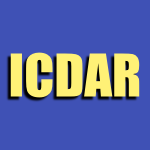 ICDAR-2007-BanerjeeHC #database #documentation #image #query #semantics #word
ICDAR-2007-BanerjeeHC #database #documentation #image #query #semantics #word- Word image based latent semantic indexing for conceptual querying in document image databases (SB, GH, SC), pp. 1208–1212.
 JCDL-2007-AhmadCBSM #automation #personalisation #tool support #towards
JCDL-2007-AhmadCBSM #automation #personalisation #tool support #towards- Towards automatic conceptual personalization tools (FA, SdlC, KRB, TS, JHM), pp. 452–461.
 CSEET-2007-RootRT #re-engineering #using
CSEET-2007-RootRT #re-engineering #using- Key Software Engineering Concepts for Project Success: The Use of “Boot Camp” to Establish Successful Software Projects (DR, MRL, GT), pp. 203–210.
 ITiCSE-2007-Bower #analysis #independence #online
ITiCSE-2007-Bower #analysis #independence #online- Independent, synchronous and asynchronous an analysis of approaches to online concept formation (MB), pp. 141–145.
 ITiCSE-2007-SandersT #object-oriented #source code
ITiCSE-2007-SandersT #object-oriented #source code- Checklists for grading object-oriented CS1 programs: concepts and misconceptions (KS, LT), pp. 166–170.
 ITiCSE-2007-VilnerZG #case study #object-oriented #paradigm
ITiCSE-2007-VilnerZG #case study #object-oriented #paradigm- Fundamental concepts of CS1: procedural vs. object oriented paradigm — a case study (TV, EZ, JGE), pp. 171–175.
 SIGITE-2007-GerdesT #network #overview
SIGITE-2007-GerdesT #network #overview- A conceptual overview of the virtual networking laboratory (JGJ, SRT), pp. 75–82.
 SIGITE-2007-MiertschinW #learning #using
SIGITE-2007-MiertschinW #learning #using- Using concept maps to navigate complex learning environments (SLM, CLW), pp. 175–184.
 CSMR-2007-SzegediGBGT #java #slicing #source code #verification
CSMR-2007-SzegediGBGT #java #slicing #source code #verification- Verifying the Concept of Union Slices on Java Programs (AS, TG, ÁB, TG, GT), pp. 233–242.
 ICPC-2007-CareyG #automation #identification #source code
ICPC-2007-CareyG #automation #identification #source code- Recovering Concepts from Source Code with Automated Concept Identification (MMC, GCG), pp. 27–36.
 ICSM-2007-Panchenko #comprehension
ICSM-2007-Panchenko #comprehension- Concept Location and Program Comprehension in Service-Oriented Software (OP), pp. 513–514.
 CIG-2007-KnittelBS #learning
CIG-2007-KnittelBS #learning- Concept Accessibility as Basis for Evolutionary Reinforcement Learning of Dots and Boxes (AK, TB, AS), pp. 140–145.
 DiGRA-2007-Calleja #analysis #game studies
DiGRA-2007-Calleja #analysis #game studies- Revising Immersion: A Conceptual Model for the Analysis of Digital Game Involvement (GC).
 DHM-2007-BeauregardC #experience #framework #metric #quality #user interface
DHM-2007-BeauregardC #experience #framework #metric #quality #user interface- User Experience Quality: A Conceptual Framework for Goal Setting and Measurement (RB, PC), pp. 325–332.
 HCI-AS-2007-ShenK #community #multi #online #social
HCI-AS-2007-ShenK #community #multi #online #social- Exploring Multi-dimensional Conceptualization of Social Presence in the Context of Online Communities (KNS, MK), pp. 999–1008.
 HCI-IDU-2007-AndoK #approach #research #towards #usability
HCI-IDU-2007-AndoK #approach #research #towards #usability- Long Term Usability; Its Concept and Research Approach — The Origin of the Positive Feeling Toward the Product (MA, MK), pp. 393–396.
 HCI-IDU-2007-Janlert #human-computer #interactive #interface
HCI-IDU-2007-Janlert #human-computer #interactive #interface- The Evasive Interface — The Changing Concept of Interface and the Varying Role of Symbols in Human-Computer Interaction (LEJ), pp. 117–126.
 HCI-IDU-2007-Kirlik #modelling
HCI-IDU-2007-Kirlik #modelling- Conceptual and Technical Issues in Extending Computational Cognitive Modeling to Aviation (AK), pp. 872–881.
 HCI-IDU-2007-Kurosu #revisited #usability
HCI-IDU-2007-Kurosu #revisited #usability- Concept of Usability Revisited (MK), pp. 579–586.
 HCI-IDU-2007-WongK #design #interface #visualisation
HCI-IDU-2007-WongK #design #interface #visualisation- Quantifying the Narration Board for Visualising Final Design Concepts by Interface Designers (CYW, CWK), pp. 273–282.
 HCI-IPT-2007-SuhLSJY #collaboration #design #evaluation #framework #interface
HCI-IPT-2007-SuhLSJY #collaboration #design #evaluation #framework #interface- An Evaluation Framework for the Design Concepts of Tangible Interface on New Collaborative Work Support System (YS, CL, JS, MJ, MHY), pp. 1210–1219.
 HCI-IPT-2007-TsaoCC #design #flexibility #research #smarttech #using
HCI-IPT-2007-TsaoCC #design #flexibility #research #smarttech #using- The Research of Using Image-Transformation to the Conceptual Design of Wearable Product with Flexible Display (YCT, LCC, SCC), pp. 1220–1229.
 HCI-IPT-2007-ZhouAXTD #collaboration #named
HCI-IPT-2007-ZhouAXTD #collaboration #named- CoConceptMap: A System for Collaborative Concept Mapping (MZ, XA, LX, FT, GD), pp. 207–213.
 HCI-MIE-2007-KopparapuSR #parsing
HCI-MIE-2007-KopparapuSR #parsing- Minimal Parsing Key Concept Based Question Answering System (SKK, AS, PVSR), pp. 104–113.
 HCI-MIE-2007-SimeoniEGPRMT #interactive #standard
HCI-MIE-2007-SimeoniEGPRMT #interactive #standard- Innovative TV: From an Old Standard to a New Concept of Interactive TV — An Italian Job (RS, LE, EG, MP, AR, RM, FT), pp. 971–980.
 HIMI-IIE-2007-IbrahimNM #framework #online #trust #web
HIMI-IIE-2007-IbrahimNM #framework #online #trust #web- “Seeing Is Not Believing But Interpreting”, Inducing Trust Through Institutional Symbolism: A Conceptual Framework for Online Trust Building in a Web Mediated Information Environment (ENMI, NLMN, SM), pp. 64–73.
 HIMI-IIE-2007-KomischkeH #industrial #process #user interface
HIMI-IIE-2007-KomischkeH #industrial #process #user interface- Coping with Information Input Overload: User Interface Concepts for Industrial Process Control (TK, LEH), pp. 918–928.
 HIMI-IIE-2007-WookS #design #interface
HIMI-IIE-2007-WookS #design #interface- A Conceptual Design for Children’s WebOPAC Interface: Graphic Design Issues (TSMTW, SSS), pp. 785–791.
 HIMI-MTT-2007-SatoKF #interface #precise #verification
HIMI-MTT-2007-SatoKF #interface #precise #verification- Basic Experimental Verification of Grasping Information Interface Concept, Grasping Force Increases in Precise Periods (SS, MK, YF), pp. 180–188.
 HIMI-MTT-2007-ShinKS
HIMI-MTT-2007-ShinKS - Concept-Based Question Answering System (SES, YHK, YHS), pp. 958–967.
 OCSC-2007-ChenZTM
OCSC-2007-ChenZTM - Tracing Conceptual and Geospatial Diffusion of Knowledge (CC, WZ, BMT, AMM), pp. 265–274.
 OCSC-2007-DayF #analysis #community #named #network #research
OCSC-2007-DayF #analysis #community #named #network #research- CNA2 — Communications and Community; Neighborhoods and Networks; Action and Analysis: Concepts and Methods for Community Technology Research (PD, CF), pp. 301–314.
 CAiSE-2007-HamadiPB #modelling #privacy #protocol #web #web service
CAiSE-2007-HamadiPB #modelling #privacy #protocol #web #web service- Conceptual Modeling of Privacy-Aware Web Service Protocols (RH, HYP, BB), pp. 233–248.
 CAiSE-2007-WeerdBV #empirical #evolution #incremental #requirements #validation
CAiSE-2007-WeerdBV #empirical #evolution #incremental #requirements #validation- Concepts for Incremental Method Evolution: Empirical Exploration and Validation in Requirements Management (IvdW, SB, JV), pp. 469–484.
 ICEIS-AIDSS-2007-FurstT #graph #ontology
ICEIS-AIDSS-2007-FurstT #graph #ontology- Heavyweight Ontology Matching — A Method and a Tool based on the Conceptual Graphs Model (FF, FT), pp. 265–270.
 ICEIS-AIDSS-2007-NiuLZ #framework #modelling
ICEIS-AIDSS-2007-NiuLZ #framework #modelling- Enriching Executives’ Situation Awareness and Mental Models — A Conceptual ESS Framework (LN, JL, GZ), pp. 510–516.
 ICEIS-AIDSS-2007-Sandkuhl
ICEIS-AIDSS-2007-Sandkuhl - Information logistics in networked organisations — issues, concepts and applications (KS), pp. 10–14.
 ICEIS-DISI-2007-Moller #framework #process #research #towards
ICEIS-DISI-2007-Moller #framework #process #research #towards- The conceptual framework for business process innovation: Towards a research program on global supply chain intelligence (CM), pp. 233–238.
 ICEIS-DISI-2007-Sandkuhl
ICEIS-DISI-2007-Sandkuhl - Information logistics in networked organisations — issues, concepts and applications (KS), pp. 10–14.
 ICEIS-EIS-2007-ErfurthRSHS #development #domain-specific language #modelling #representation
ICEIS-EIS-2007-ErfurthRSHS #development #domain-specific language #modelling #representation- Concepts of Model Driven Software Development in Practice — Generic Model Representation and DSL Interpretation (CE, WR, CS, DH, SS), pp. 278–286.
 ICEIS-EIS-2007-Sandkuhl
ICEIS-EIS-2007-Sandkuhl - Information logistics in networked organisations — issues, concepts and applications (KS), pp. 10–14.
 ICEIS-HCI-2007-Sandkuhl
ICEIS-HCI-2007-Sandkuhl - Information logistics in networked organisations — issues, concepts and applications (KS), pp. 10–14.
 ICEIS-J-2007-Sandkuhl07a
ICEIS-J-2007-Sandkuhl07a - Information Logistics in Networked Organizations: Selected Concepts and Applications (KS), pp. 43–54.
 ICEIS-SAIC-2007-Sandkuhl
ICEIS-SAIC-2007-Sandkuhl - Information logistics in networked organisations — issues, concepts and applications (KS), pp. 10–14.
 CIKM-2007-BreitmanBCF #modelling
CIKM-2007-BreitmanBCF #modelling- Conceptual modeling by analogy and metaphor (KKB, SDJB, MAC, ALF), pp. 865–868.
 CIKM-2007-ChevalletLL #multi
CIKM-2007-ChevalletLL #multi- Domain knowledge conceptual inter-media indexing: application to multilingual multimedia medical reports (JPC, JHL, DTHL), pp. 495–504.
 CIKM-2007-FanizzidE #clustering #induction #knowledge base #metric #random #semantics
CIKM-2007-FanizzidE #clustering #induction #knowledge base #metric #random #semantics- Randomized metric induction and evolutionary conceptual clustering for semantic knowledge bases (NF, Cd, FE), pp. 51–60.
 CIKM-2007-LvC #information retrieval #named #peer-to-peer #semantics
CIKM-2007-LvC #information retrieval #named #peer-to-peer #semantics- CTO: concept tree based semantic overlay for pure peer-to-peer information retrieval (JL, XC), pp. 931–934.
 KDD-2007-BeckerA #ranking #realtime #using
KDD-2007-BeckerA #ranking #realtime #using- Real-time ranking with concept drift using expert advice (HB, MA), pp. 86–94.
 KDD-2007-ShehataKK #categorisation
KDD-2007-ShehataKK #categorisation- A concept-based model for enhancing text categorization (SS, FK, MK), pp. 629–637.
 SEKE-2007-FarEHA #approach #learning #named #ontology #statistics
SEKE-2007-FarEHA #approach #learning #named #ontology #statistics- Adjudicator: A Statistical Approach for Learning Ontology Concepts from Peer Agents (BHF, AHE, NH, MA), p. 654–?.
 SEKE-2007-FeijoFMGH #modelling #named #query #xml
SEKE-2007-FeijoFMGH #modelling #named #query #xml- CXPath: a Query Language for Conceptual Models of Integrated XML Data (DdVF, CNF, ÁFM, RdMG, CAH), p. 592–?.
 SEKE-2007-SerranoRMTP #quality
SEKE-2007-SerranoRMTP #quality- A Proposal for a Conceptual Data Warehouse Quality Model (MAS, RR, JNM, JT, MP), pp. 477–482.
 SIGIR-2007-MetzlerC #markov #random #using
SIGIR-2007-MetzlerC #markov #random #using- Latent concept expansion using markov random fields (DM, WBC), pp. 311–318.
 SIGIR-2007-ZhouYSTH #retrieval
SIGIR-2007-ZhouYSTH #retrieval- Knowledge-intensive conceptual retrieval and passage extraction of biomedical literature (WZ, CTY, NRS, VIT, JH), pp. 655–662.
 RE-2007-CappelliLO #process
RE-2007-CappelliLO #process- Exploring Business Process Transparency Concepts (CC, JCSdPL, AdPAO), pp. 389–390.
 RE-2007-DelgadilloG #lightweight #named #requirements
RE-2007-DelgadilloG #lightweight #named #requirements- Story-Wall: A Concept for Lightweight Requirements Management (LD, OG), pp. 377–378.
 RE-2007-JiangTBM #database #design
RE-2007-JiangTBM #database #design- Goal-Oriented Conceptual Database Design (LJ, TT, AB, JM), pp. 195–204.
 RE-2007-SabetzadehNLEC #consistency #model merging #modelling
RE-2007-SabetzadehNLEC #consistency #model merging #modelling- Consistency Checking of Conceptual Models via Model Merging (MS, SN, SL, SME, MC), pp. 221–230.
 REFSQ-2007-AurumW #approach #requirements
REFSQ-2007-AurumW #approach #requirements- A Value-Based Approach in Requirements Engineering: Explaining Some of the Fundamental Concepts (AA, CW), pp. 109–115.
 ASE-2007-LagardeETG #design #domain model #modelling #uml
ASE-2007-LagardeETG #design #domain model #modelling #uml- Improving uml profile design practices by leveraging conceptual domain models (FL, HE, FT, SG), pp. 445–448.
 ASE-2007-LinsteadRBLB #mining #modelling #probability #topic
ASE-2007-LinsteadRBLB #mining #modelling #probability #topic- Mining concepts from code with probabilistic topic models (EL, PR, SKB, CVL, PB), pp. 461–464.
 ICSE-2007-MalekSRPM #architecture #embedded #product line
ICSE-2007-MalekSRPM #architecture #embedded #product line- Reconceptualizing a Family of Heterogeneous Embedded Systems via Explicit Architectural Support (SM, CS, SR, BP, NM), pp. 591–601.
 ICSE-2007-XieKS #comprehension #concurrent #design #diagrams #evaluation
ICSE-2007-XieKS #comprehension #concurrent #design #diagrams #evaluation- Design and Evaluation of a Diagrammatic Notation to Aid in the Understanding of Concurrency Concepts (SX, EK, REKS), pp. 727–731.
 SAC-2007-Al-MubaidN #distance #framework #semantics
SAC-2007-Al-MubaidN #distance #framework #semantics- Semantic distance of concepts within a unified framework in the biomedical domain (HAM, HAN), pp. 142–143.
 SAC-2007-HostL #assessment #risk management
SAC-2007-HostL #assessment #risk management- Different conceptions in software project risk assessment (MH, CL), pp. 1422–1426.
 SAC-2007-PintoG #incremental
SAC-2007-PintoG #incremental- Incremental discretization, application to data with concept drift (CP, JG), pp. 467–468.
 SAC-2007-RosenkranzH #modelling
SAC-2007-RosenkranzH #modelling- Combining cybernetics and conceptual modeling: the concept of variety in organizational engineering (CR, RH), pp. 1228–1233.
 SAC-2007-SpinosaCG #approach #clustering #data type #detection #named
SAC-2007-SpinosaCG #approach #clustering #data type #detection #named- OLINDDA: a cluster-based approach for detecting novelty and concept drift in data streams (EJS, ACPdLFdC, JG), pp. 448–452.
 GPCE-2007-JarviMS #adaptation #c++ #composition #library #using
GPCE-2007-JarviMS #adaptation #c++ #composition #library #using- Library composition and adaptation using c++ concepts (JJ, MAM, JNS), pp. 73–82.
 HPDC-2007-RidruejoMN #component #distributed #memory management #parallel #simulation
HPDC-2007-RidruejoMN #component #distributed #memory management #parallel #simulation- Concepts and components of full-system simulation of distributed memory parallel computers (FJRP, JMA, JN), pp. 225–226.
 ECDL-2006-AhmadGS #education #library #protocol #resource management
ECDL-2006-AhmadGS #education #library #protocol #resource management- Concept Space Interchange Protocol: A Protocol for Concept Map Based Resource Discovery in Educational Digital Libraries (FA, QG, TS), pp. 471–476.
 ECDL-2006-FreireB #metadata
ECDL-2006-FreireB #metadata- Metadata Spaces: The Concept and a Case with REPOX (NF, JLB), pp. 516–519.
 JCDL-2006-WhiteSL
JCDL-2006-WhiteSL - Concept maps to support oral history search and use (RWW, HS, JL), pp. 192–193.
 ITiCSE-2006-EckerdalMMRSZ #education
ITiCSE-2006-EckerdalMMRSZ #education- Putting threshold concepts into context in computer science education (AE, RM, JEM, MR, KS, CZ), pp. 103–107.
 ITiCSE-2006-Gomez-MartinG #development #performance
ITiCSE-2006-Gomez-MartinG #development #performance- Fast application development to demonstrate computer graphics concepts (PPGM, MAGM), pp. 250–254.
 ITiCSE-2006-PerrenetK #abstraction #algorithm #comprehension #perspective #student
ITiCSE-2006-PerrenetK #abstraction #algorithm #comprehension #perspective #student- Levels of abstraction in students’ understanding of the concept of algorithm: the qualitative perspective (JP, EK), pp. 270–274.
 SIGITE-2006-Leung #programming #visualisation
SIGITE-2006-Leung #programming #visualisation- Integrating visualization to make programming concepts concrete: dot net style (SL), pp. 149–156.
 ICSM-2006-GoldHLM #approach #bound #source code #using
ICSM-2006-GoldHLM #approach #bound #source code #using- Allowing Overlapping Boundaries in Source Code using a Search Based Approach to Concept Binding (NG, MH, ZL, KM), pp. 310–319.
 ICSM-2006-PoshyvanykM #metric #object-oriented
ICSM-2006-PoshyvanykM #metric #object-oriented- The Conceptual Coupling Metrics for Object-Oriented Systems (DP, AM), pp. 469–478.
 WCRE-2006-BinkleyGHLM #empirical #execution #slicing
WCRE-2006-BinkleyGHLM #empirical #execution #slicing- An Empirical Study of Executable Concept Slice Size (DB, NG, MH, ZL, KM), pp. 103–114.
 WCRE-2006-Ribic #decompiler #embedded #equivalence #execution #implementation #programming language
WCRE-2006-Ribic #decompiler #embedded #equivalence #execution #implementation #programming language- Concept and implementation of the programming language and translator, for embedded systems, based on machine code decompilation and equivalence between source and executable code (SR), pp. 307–308.
 CHI-2006-WrightSPSC #analysis
CHI-2006-WrightSPSC #analysis- The sandbox for analysis: concepts and Eevaluation (WW, DS, PP, AWS, BC), pp. 801–810.
 CSCW-2006-RollandHM #integration
CSCW-2006-RollandHM #integration- Conceptualizing common information spaces across heterogeneous contexts: mutable mobiles and side-effects of integration (KHR, VH, EM), pp. 493–500.
 CAiSE-2006-MalinowskiZ #representation
CAiSE-2006-MalinowskiZ #representation- Object-Relational Representation of a Conceptual Model for Temporal Data Warehouses (EM, EZ), pp. 96–110.
 CAiSE-2006-Sutcliffe #design #modelling #named #trust
CAiSE-2006-Sutcliffe #design #modelling #named #trust- Trust: From Cognition to Conceptual Models and Design (AGS), pp. 3–17.
 CAiSE-2006-VilzBREH #design
CAiSE-2006-VilzBREH #design- Data Conceptualisation for Web-Based Data-Centred Application Design (JV, AFB, RR, VE, JLH), pp. 205–219.
 EDOC-2006-DijkmanDQ #design #interactive #towards
EDOC-2006-DijkmanDQ #design #interactive #towards- Towards Advanced Interaction Design Concepts (RMD, TD, DACQ), pp. 331–344.
 EDOC-2006-QuartelSPS #framework #modelling
EDOC-2006-QuartelSPS #framework #modelling- A conceptual framework for service modelling (DACQ, MWAS, SP, MvS), pp. 319–330.
 ICEIS-AIDSS-2006-RokachRM #automation #identification
ICEIS-AIDSS-2006-RokachRM #automation #identification- Automatic Identification of Negated Concepts in Narrative Clinical Reports (LR, RR, OM), pp. 257–262.
 ICEIS-ISAS-2006-BainaPB #modelling
ICEIS-ISAS-2006-BainaPB #modelling- A Product Oriented Modelling Concept — Holons for Systems Synchronisation and Interoperability (SB, HP, KB), pp. 19–26.
 ICEIS-ISAS-2006-RizkC #research
ICEIS-ISAS-2006-RizkC #research- The Concept of Ethics in Electronic Qualitative Research (NJR, EMC), pp. 126–134.
 CIKM-2006-KimC #mining #named #similarity #taxonomy
CIKM-2006-KimC #mining #named #similarity #taxonomy- CP/CV: concept similarity mining without frequency information from domain describing taxonomies (JWK, KSC), pp. 483–492.
 CIKM-2006-ReeveHNYSB #summary
CIKM-2006-ReeveHNYSB #summary- Concept frequency distribution in biomedical text summarization (LHR, HH, SVN, JCY, TAS, ADB), pp. 604–611.
 CIKM-2006-YanSL #documentation #information retrieval #readability
CIKM-2006-YanSL #documentation #information retrieval #readability- Concept-based document readability in domain specific information retrieval (XY, DS, XL), pp. 540–549.
 ECIR-2006-ZhouZH #approach #information retrieval #modelling #using
ECIR-2006-ZhouZH #approach #information retrieval #modelling #using- Using Concept-Based Indexing to Improve Language Modeling Approach to Genomic IR (XZ, XZ, XH), pp. 444–455.
 ICML-2006-PandaCW #bound #detection
ICML-2006-PandaCW #bound #detection- Concept boundary detection for speeding up SVMs (NP, EYC, GW), pp. 681–688.
 ICPR-v3-2006-Haralick #testing
ICPR-v3-2006-Haralick #testing- Basic Concepts For Testing The Torah Code Hypothesis (RMH), pp. 104–109.
 KDD-2006-WangYPYY #data type #mining
KDD-2006-WangYPYY #data type #mining- Suppressing model overfitting in mining concept-drifting data streams (HW, JY, JP, PSY, JXY), pp. 736–741.
 KDD-2006-ZhangCWZ #clustering #identification
KDD-2006-ZhangCWZ #clustering #identification- Identifying bridging rules between conceptual clusters (SZ, FC, XW, CZ), pp. 815–820.
 KR-2006-CroitoruC #algorithm #composition #graph
KR-2006-CroitoruC #algorithm #composition #graph- A Tree Decomposition Algorithm for Conceptual Graph Projection (MC, EC), pp. 271–276.
 SEKE-2006-Chainbi #multi #ontology
SEKE-2006-Chainbi #multi #ontology- An Ontology Based Multi-Agent System Conceptual Model (WC), pp. 645–650.
 SEKE-2006-SartipiS #analysis #evaluation #execution #mining
SEKE-2006-SartipiS #analysis #evaluation #execution #mining- Application of Execution Pattern Mining and Concept Lattice Analysis on Software Structure Evaluation (KS, HS), pp. 302–308.
 SEKE-2006-SpinolaST #framework #towards #ubiquitous
SEKE-2006-SpinolaST #framework #towards #ubiquitous- Towards a Conceptual Framework to Classify Ubiquitous Software Projects (ROS, JLMdS, GHT), pp. 172–175.
 SEKE-2006-ZepedaC #design
SEKE-2006-ZepedaC #design- Applying MDA to the Conceptual Design of Data Warehouses (LZ, MC), pp. 156–161.
 SIGIR-2006-ChenHY #integration #on the #web
SIGIR-2006-ChenHY #integration #on the #web- On hierarchical web catalog integration with conceptual relationships in thesaurus (IXC, JCH, CZY), pp. 635–636.
 SIGIR-2006-Forman #induction
SIGIR-2006-Forman #induction- Tackling concept drift by temporal inductive transfer (GF), pp. 252–259.
 SIGIR-2006-LinD #case study #information management #retrieval
SIGIR-2006-LinD #case study #information management #retrieval- The role of knowledge in conceptual retrieval: a study in the domain of clinical medicine (JJL, DDF), pp. 99–106.
 SIGIR-2006-ZhongH #retrieval
SIGIR-2006-ZhongH #retrieval- Concept-based biomedical text retrieval (MZ, XH), pp. 723–724.
 SPLC-2006-AsikainenMS #feature model #modelling
SPLC-2006-AsikainenMS #feature model #modelling- A Unified Conceptual Foundation for Feature Modelling (TA, TM, TS), pp. 31–40.
 OOPSLA-2006-GregorJSSRL #c++ #named #programming
OOPSLA-2006-GregorJSSRL #c++ #named #programming- Concepts: linguistic support for generic programming in C++ (DG, JJ, JGS, BS, GDR, AL), pp. 291–310.
 POPL-2006-ReisS #c++ #specification
POPL-2006-ReisS #c++ #specification- Specifying C++ concepts (GDR, BS), pp. 295–308.
 ICSE-2006-LiuLY #modelling #xml
ICSE-2006-LiuLY #modelling #xml- XML conceptual modeling with XUML (HL, YL, QY), pp. 973–976.
 ICSE-2006-TanZZ #information management #modelling
ICSE-2006-TanZZ #information management #modelling- Estimating LOC for information systems from their conceptual data models (HBKT, YZ, HZ), pp. 321–330.
 ICSE-2006-XiePM #3d #source code #visualisation
ICSE-2006-XiePM #3d #source code #visualisation- 3D visualization for concept location in source code (XX, DP, AM), pp. 839–842.
 SAC-2006-Bollen #enterprise #information management #process
SAC-2006-Bollen #enterprise #information management #process- Conceptual process configurations in enterprise knowledge management systems (PB), pp. 1516–1523.
 SAC-2006-CombiO #modelling #xml
SAC-2006-CombiO #modelling #xml- Conceptual modeling of XML data (CC, BO), pp. 467–473.
 SAC-2006-dAmatoFE #difference
SAC-2006-dAmatoFE #difference- A dissimilarity measure for ALC concept descriptions (Cd, NF, FE), pp. 1695–1699.
 SAC-2006-ListK #evaluation #modelling #process
SAC-2006-ListK #evaluation #modelling #process- An evaluation of conceptual business process modelling languages (BL, BK), pp. 1532–1539.
 SAC-2006-MenezesW
SAC-2006-MenezesW - The fading concept in tuple-space systems (RM, AW), pp. 440–444.
 SAC-2006-Savinov
SAC-2006-Savinov - Grouping and aggregation in the concept-oriented data model (AAS), pp. 482–486.
 CASE-2006-EurschHSZMK #automation #multi
CASE-2006-EurschHSZMK #automation #multi- A Multilevel Automation Concept for the Target-Based Production of Radioisotopes for Cancer Treatment (AE, MH, MS, MFZ, JM, EK), pp. 51–56.
 DAC-2006-PakbazniaFP #analysis
DAC-2006-PakbazniaFP #analysis- Charge recycling in MTCMOS circuits: concept and analysis (EP, FF, MP), pp. 97–102.
 WICSA-2005-Abi-AntounAGSN #architecture #automation #implementation #incremental
WICSA-2005-Abi-AntounAGSN #architecture #automation #implementation #incremental- Semi-Automated Incremental Synchronization between Conceptual and Implementation Level Architectures (MAA, JA, DG, BRS, NHN), pp. 265–268.
 HT-2005-BurgerGG #multi
HT-2005-BurgerGG #multi- Smart content factory: assisting search for digital objects by generic linking concepts to multimedia content (TB, EG, GG), pp. 286–287.
 HT-2005-FalquetNZ #integration
HT-2005-FalquetNZ #integration- Augmented hyperbooks through conceptual integration (GF, LN, JCZ), pp. 132–134.
 JCDL-2005-RichardsonF #library #resource management #using
JCDL-2005-RichardsonF #library #resource management #using- Using concept maps in digital libraries as a cross-language resource discovery tool (RR, EAF), pp. 256–257.
 SIGMOD-2005-PapadiasMH #clustering #monitoring #nearest neighbour #performance
SIGMOD-2005-PapadiasMH #clustering #monitoring #nearest neighbour #performance- Conceptual Partitioning: An Efficient Method for Continuous Nearest Neighbor Monitoring (KM, MH, DP), pp. 634–645.
 VLDB-2005-KoudasS #approximate
VLDB-2005-KoudasS #approximate- Approximate Joins: Concepts and Techniques (NK, DS), p. 1363.
 ITiCSE-2005-EckerdalT #java
ITiCSE-2005-EckerdalT #java- Novice Java programmers’ conceptions of “object” and “class”, and variation theory (AE, MT), pp. 89–93.
 ITiCSE-2005-Granger #collaboration #communication #learning
ITiCSE-2005-Granger #collaboration #communication #learning- Learning technical concepts with collaboration and communication skills (MJG), p. 391.
 ITiCSE-2005-HoodH #education #programming #using
ITiCSE-2005-HoodH #education #programming #using- Teaching programming and language concepts using LEGOs (CSH, DJH), pp. 19–23.
 ITiCSE-2005-HoodH05a #education #towards
ITiCSE-2005-HoodH05a #education #towards- Toward integrating computing concepts into the K-12 curriculum (CSH, DJH), p. 375.
 ITiCSE-2005-PerrenetGK #abstraction #algorithm #comprehension #student
ITiCSE-2005-PerrenetGK #abstraction #algorithm #comprehension #student- Exploring students’ understanding of the concept of algorithm: levels of abstraction (JP, JFG, EK), pp. 64–68.
 ITiCSE-2005-XinogalosS #object-oriented #process #student #using
ITiCSE-2005-XinogalosS #object-oriented #process #student #using- Using hands-on activities for motivating students with OOP concepts before they are asked to implement them (SX, MS), p. 380.
 SIGITE-2005-LeungJ #approach
SIGITE-2005-LeungJ #approach- Computational concepts in IT: a new approach to IT mathematics (SL, CJ), pp. 37–42.
 SIGITE-2005-WagnerBKKB
SIGITE-2005-WagnerBKKB - Cross-functional concentrations merge IT and business concepts (JMW, DB, JPK, JK, PB), pp. 179–184.
 ICSM-2005-MarcusP
ICSM-2005-MarcusP - The Conceptual Cohesion of Classes (AM, DP), pp. 133–142.
 ICSM-2005-MarcusR #identification #source code
ICSM-2005-MarcusR #identification #source code- Identifications of Concepts, Features, and Concerns in Source Code (AM, VR), p. 718.
 IWPC-2005-MarcusRBPS #object-oriented
IWPC-2005-MarcusRBPS #object-oriented- Static Techniques for Concept Location in Object-Oriented Code (AM, VR, JB, MP, AS), pp. 33–42.
 MSR-2005-OhbaG #identifier #keyword #mining #scalability #towards
MSR-2005-OhbaG #identifier #keyword #mining #scalability #towards- Toward mining “concept keywords” from identifiers in large software projects (MO, KG), pp. 11–15.
 SCAM-2005-Singer #code generation #debugging
SCAM-2005-Singer #code generation #debugging- Concept Assignment as a Debugging Technique for Code Generators (JS), pp. 75–86.
 DiGRA-2005-Arbiser #game studies #towards #unification
DiGRA-2005-Arbiser #game studies #towards #unification- Towards the unification of intuitive and formal game concepts with applications to computer chess (AA).
 DiGRA-2005-PaulHT #communication #simulation #student
DiGRA-2005-PaulHT #communication #simulation #student- Modding NeverWinter Nights: a Simulation for Reinforcing Information Seeking Concepts for Mass Communication Students (NP, KH, MT).
 DiGRA-2005-Spierling #approach #hybrid #interactive #towards
DiGRA-2005-Spierling #approach #hybrid #interactive #towards- Interactive Digital Storytelling: Towards a Hybrid Conceptual Approach (US).
 CHI-2005-LeeWB #gesture #modelling
CHI-2005-LeeWB #gesture #modelling- Improving orchestral conducting systems in public spaces: examining the temporal characteristics and conceptual models of conducting gestures (EL, MW, JOB), pp. 731–740.
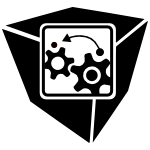 SOFTVIS-2005-BaloianBL #algorithm #using #visualisation
SOFTVIS-2005-BaloianBL #algorithm #using #visualisation- Algorithm visualization using concept keyboards (NAB, HB, WL), pp. 7–16.
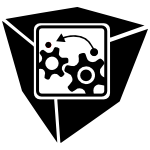 VISSOFT-2005-XiePM #3d
VISSOFT-2005-XiePM #3d- Support for Static Concept Location with sv3D (XX, DP, AM), pp. 102–107.
 CAiSE-2005-Evermann #analysis #modelling #ontology #using
CAiSE-2005-Evermann #analysis #modelling #ontology #using- The Association Construct in Conceptual Modelling — An Analysis Using the Bunge Ontological Model (JE), pp. 33–47.
 CAiSE-2005-Olive #challenge #development #information management #research
CAiSE-2005-Olive #challenge #development #information management #research- Conceptual Schema-Centric Development: A Grand Challenge for Information Systems Research (AO), pp. 1–15.
 CAiSE-2005-RizopoulosM #approach #generative #model transformation
CAiSE-2005-RizopoulosM #approach #generative #model transformation- A General Approach to the Generation of Conceptual Model Transformations (NR, PM), pp. 326–341.
 ICEIS-v3-2005-CallejasCC #optimisation #process
ICEIS-v3-2005-CallejasCC #optimisation #process- Conceptual Optimisation in Business Process Management (YC, JLC, MC), pp. 233–239.
 ICEIS-v5-2005-RuschelIRF #analysis #design #framework #process
ICEIS-v5-2005-RuschelIRF #analysis #design #framework #process- Designing Geographic Analysis Processes on the Basis of the Conceptual Framework Geoframe (CR, CI, LVdR, JLF), pp. 91–97.
 CIKM-2005-BotWCL #automation #classification #documentation #generative #using
CIKM-2005-BotWCL #automation #classification #documentation #generative #using- Generating better concept hierarchies using automatic document classification (RSB, YfBW, XC, QL), pp. 281–282.
 CIKM-2005-FonsecaGPRZ #interactive #query
CIKM-2005-FonsecaGPRZ #interactive #query- Concept-based interactive query expansion (BMF, PBG, BP, BARN, NZ), pp. 696–703.
 CIKM-2005-GuppenbergerF #evaluation #implementation #information management
CIKM-2005-GuppenbergerF #evaluation #implementation #information management- Intelligent creation of notification events in information systems: concept, implementation and evaluation (MG, BF), pp. 52–59.
 CIKM-2005-SrihariLB #approach #graph
CIKM-2005-SrihariLB #approach #graph- Unapparent information revelation: a concept chain graph approach (RKS, SL, AB), pp. 329–330.
 ECIR-2005-DingCZ #analysis #clustering #detection #video
ECIR-2005-DingCZ #analysis #clustering #detection #video- Temporal Shot Clustering Analysis for Video Concept Detection (DD, LC, BZ), pp. 558–560.
 ECIR-2005-SuomelaK #case study #ontology #query
ECIR-2005-SuomelaK #case study #ontology #query- Ontology as a Search-Tool: A Study of Real Users’ Query Formulation With and Without Conceptual Support (SS, JK), pp. 315–329.
 ICML-2005-Ho #data type #detection #framework
ICML-2005-Ho #data type #detection #framework- A martingale framework for concept change detection in time-varying data streams (SSH), pp. 321–327.
 ICML-2005-KolterM #using
ICML-2005-KolterM #using- Using additive expert ensembles to cope with concept drift (JZK, MAM), pp. 449–456.
 MLDM-2005-BichindaritzA #mining
MLDM-2005-BichindaritzA #mining- Concept Mining for Indexing Medical Literature (IB, SA), pp. 682–691.
 MLDM-2005-JanichenP #clustering
MLDM-2005-JanichenP #clustering- Acquisition of Concept Descriptions by Conceptual Clustering (SJ, PP), pp. 153–162.
 SEKE-2005-KrishnaG #diagrams #modelling #sequence chart #uml
SEKE-2005-KrishnaG #diagrams #modelling #sequence chart #uml- Combining Agent-oriented Conceptual Modelling and the UML Sequence Diagram (AK, AKG), pp. 205–210.
 SEKE-2005-KrishnaGV #consistency #modelling #specification
SEKE-2005-KrishnaGV #consistency #modelling #specification- Loosely-coupled Consistency between Agent-oriented Conceptual Models and Z Specifications (AK, AKG, SAV), pp. 455–460.
 SIGIR-2005-MagalhaesR #incremental #information management #mining #multi
SIGIR-2005-MagalhaesR #incremental #information management #mining #multi- Mining multimedia salient concepts for incremental information extraction (JM, SMR), pp. 641–642.
 MoDELS-2005-AtkinsonK #architecture #modelling
MoDELS-2005-AtkinsonK #architecture #modelling- Concepts for Comparing Modeling Tool Architectures (CA, TK), pp. 398–413.
 MoDELS-2005-QuartelDS
MoDELS-2005-QuartelDS - Extending Profiles with Stereotypes for Composite Concepts (DACQ, RMD, MvS), pp. 232–247.
 MoDELS-2005-AtkinsonK #architecture #modelling
MoDELS-2005-AtkinsonK #architecture #modelling- Concepts for Comparing Modeling Tool Architectures (CA, TK), pp. 398–413.
 MoDELS-2005-QuartelDS
MoDELS-2005-QuartelDS - Extending Profiles with Stereotypes for Composite Concepts (DACQ, RMD, MvS), pp. 232–247.
 RE-2005-EasterbrookYAFHLQ #case study #modelling
RE-2005-EasterbrookYAFHLQ #case study #modelling- Do Viewpoints Lead to Better Conceptual Models? An Exploratory Case Study (SME, ESKY, JA, YF, JH, ML, RAQ), pp. 199–208.
 RE-2005-SvetinovicBG #analysis #identification #object-oriented #student #why
RE-2005-SvetinovicBG #analysis #identification #object-oriented #student #why- Concept Identification in Object-Oriented Domain Analysis: Why Some Students Just Don’t Get It (DS, DMB, MWG), pp. 189–198.
 SAC-2005-AleksyKS #corba
SAC-2005-AleksyKS #corba- Realizing the leasing concept in CORBA-based applications (MA, AK, MS), pp. 706–712.
 SAC-2005-BoninoCP #automation #learning #network
SAC-2005-BoninoCP #automation #learning #network- Automatic learning of text-to-concept mappings exploiting WordNet-like lexical networks (DB, FC, FP), pp. 1639–1644.
 SAC-2005-XuMY #database #information management #mining #scalability
SAC-2005-XuMY #database #information management #mining #scalability- Mining concept associations for knowledge discovery in large textual databases (XX, MM, NY), pp. 549–550.
 CBSE-2004-CervantesH #adaptation #case study #component #experience #framework
CBSE-2004-CervantesH #adaptation #case study #component #experience #framework- A Framework for Constructing Adaptive Component-Based Applications: Concepts and Experiences (HC, RSH), pp. 130–137.
 DocEng-2004-SilvaRSM #composition #xml
DocEng-2004-SilvaRSM #composition #xml- NCL 2.0: integrating new concepts to XML modular languages (HVOS, RFR, LFGS, DCMS), pp. 188–197.
 JCDL-2004-FanLXW #classification #nondeterminism #semantics #set #video
JCDL-2004-FanLXW #classification #nondeterminism #semantics #set #video- Semantic video classification and feature subset selection under context and concept uncertainty (JF, HL, JX, LW), pp. 192–201.
 JCDL-2004-MarshallM
JCDL-2004-MarshallM - Element matching in concept maps (BM, TM), pp. 186–187.
 VLDB-2004-Fan #classification #data type #named
VLDB-2004-Fan #classification #data type #named- StreamMiner: A Classifier Ensemble-based Engine to Mine Concept-drifting Data Streams (WF), pp. 1257–1260.
 VLDB-2004-GraupmannBZZBTW #html #named #web #xml
VLDB-2004-GraupmannBZZBTW #html #named #web #xml- COMPASS: A Concept-based Web Search Engine for HTML, XML, and Deep Web Data (JG, MB, CZ, PZ, MB, MT, GW), pp. 1313–1316.
 ITiCSE-2004-LeskaR #game studies #learning #using
ITiCSE-2004-LeskaR #game studies #learning #using- Learning O-O concepts in CS I using game projects (CL, JRR), p. 237.
 ITiCSE-2004-McKennaL #learning
ITiCSE-2004-McKennaL #learning- Constructivist or instructivist: pedagogical concepts practically applied to a computer learning environment (PM, BL), pp. 166–170.
 ITiCSE-2004-PazL #automation #functional #programming
ITiCSE-2004-PazL #automation #functional #programming- Emergence of automated assignment conceptions in a functional programming course (TP, TL), pp. 181–185.
 ITiCSE-WGR-2004-NairM #approach #data type
ITiCSE-WGR-2004-NairM #approach #data type- Conceptualizing data structures: a pedagogic approach (ASN, TM), pp. 97–100.
 SIGITE-2004-Klassen #approach #education #programming
SIGITE-2004-Klassen #approach #education #programming- Another approach to teaching programming concept course with object first (MK), p. 277.
 CSMR-2004-Al-EkramK #composition #slicing #source code #using
CSMR-2004-Al-EkramK #composition #slicing #source code #using- Source Code Modularization Using Lattice of Concept Slices (RAE, KK), pp. 195–203.
 ICSM-2004-MohanGL #approach #complexity #comprehension #using
ICSM-2004-MohanGL #approach #complexity #comprehension #using- An Approach to Understanding Program Comprehensibility Using Spatial Complexity, Concept Assignment and Typographical Style (AM, NG, PJL), p. 530.
 WCRE-2004-MarcusSRM #approach #information retrieval #source code
WCRE-2004-MarcusSRM #approach #information retrieval #source code- An Information Retrieval Approach to Concept Location in Source Code (AM, AS, VR, JIM), pp. 214–223.
 WCRE-2004-MohanGL #approach #complexity #using
WCRE-2004-MohanGL #approach #complexity #using- An Initial Approach to Assessing Program Comprehensibility Using Spatial Complexity, Number of Concepts and Typographical Style (AM, NG, PJL), pp. 246–255.
 ICGT-2004-BohlenR #graph transformation #specification
ICGT-2004-BohlenR #graph transformation #specification- Concepts for Specifying Complex Graph Transformation Systems (BB, UR), pp. 96–111.
 CSCW-2004-WangB #collaboration #design #industrial
CSCW-2004-WangB #collaboration #design #industrial- Concepts that support collocated collaborative work inspired by the specific context of industrial designers (HW, EB), pp. 546–549.
 CAiSE-2004-GuizzardiWGMR #modelling #uml
CAiSE-2004-GuizzardiWGMR #modelling #uml- An Ontologically Well-Founded Profile for UML Conceptual Models (GG, GW, NG, MvS), pp. 112–126.
 CAiSE-2004-Henderson-SellersDT
CAiSE-2004-Henderson-SellersDT - Adding Agent-Oriented Concepts Derived from Gaia to Agent OPEN (BHS, JKD, QNNT), pp. 98–111.
 CAiSE-2004-MalinowskiZ #perspective
CAiSE-2004-MalinowskiZ #perspective- OLAP Hierarchies: A Conceptual Perspective (EM, EZ), pp. 477–491.
 CAiSE-2004-Patig #modelling
CAiSE-2004-Patig #modelling- Measuring Expressiveness in Conceptual Modeling (SP), pp. 127–141.
 CAiSE-2004-SerranoCTLP #empirical #metric #modelling #validation
CAiSE-2004-SerranoCTLP #empirical #metric #modelling #validation- Empirical Validation of Metrics for Conceptual Models of Data Warehouses (MAS, CC, JT, SLM, MP), pp. 506–520.
 ICEIS-v1-2004-BebelKMW #transaction
ICEIS-v1-2004-BebelKMW #transaction- Transaction Concepts for Supporting Changes in Data Warehouses (BB, ZK, TM, RW), pp. 290–297.
 ICEIS-v1-2004-DelgadoM #architecture #database #integration #semantics #semistructured data #towards
ICEIS-v1-2004-DelgadoM #architecture #database #integration #semantics #semistructured data #towards- Towards Conceptual Mediation: A Semantic Architecture For Dynamic Integration of Heterogeneous Databases (IND, JFAM), pp. 169–176.
 ICEIS-v1-2004-DimassiSR #implementation
ICEIS-v1-2004-DimassiSR #implementation- The Concept and Implementation of the Market Place E-Utilities*COM (JD, CS, CR), pp. 337–347.
 ICEIS-v1-2004-MagnussonNC #enterprise #framework #implementation #towards
ICEIS-v1-2004-MagnussonNC #enterprise #framework #implementation #towards- A Conceptual Framework for Forecasting ERP Implementation Success — A First Step Towards the Creation of an Implementation Support Tool (JM, AN, FC), pp. 447–453.
 ICEIS-v2-2004-BangDHD #data mining #effectiveness #framework #knowledge base #mining #segmentation
ICEIS-v2-2004-BangDHD #data mining #effectiveness #framework #knowledge base #mining #segmentation- Data Mining of CRM Knowledge Bases for Effective Market Segmentation: A Conceptual Framework (JB, ND, LH, RRD), pp. 335–342.
 ICEIS-v3-2004-Hair #analysis #design #named #process
ICEIS-v3-2004-Hair #analysis #design #named #process- U_VBOOM: Unified Analysis and Design Process Based on the Viewpoint Concept (AH), pp. 217–224.
 ICEIS-v3-2004-Hiramatsu #modelling #ontology #taxonomy #using
ICEIS-v3-2004-Hiramatsu #modelling #ontology #taxonomy #using- Ontology Modeling Tool Using Concept Dictionary and Inference (YH), pp. 225–230.
 ICEIS-v3-2004-HuijsenDJ
ICEIS-v3-2004-HuijsenDJ - Explicit Conceptualizations for Knowledge Mapping (WOH, SD, JJ), pp. 231–236.
 ICEIS-v3-2004-IacobL #architecture #enterprise #framework #prototype #visualisation
ICEIS-v3-2004-IacobL #architecture #enterprise #framework #prototype #visualisation- View Visualisation for Enterprise Architecture — from Conceptual Framework to Prototype (MEI, DvL), pp. 629–634.
 ICEIS-v4-2004-BalatosPIJL #design #e-commerce #framework
ICEIS-v4-2004-BalatosPIJL #design #e-commerce #framework- Introducing an Operational and Techonological E-Commerce Framework for European SMEs: Designing Regional and Interegional E-Commerce Zones for SMEs in Four Less Favoured European Regions (LFRS) Based on Request Based Virtual Organisation (RBVO) Concept (AB, KP, II, VJ, ML), pp. 309–315.
 CIKM-2004-RavindranG
CIKM-2004-RavindranG - Exploiting hierarchical relationships in conceptual search (DR, SG), pp. 238–239.
 ECIR-2004-BelkhatirMC #automation #image #multi #retrieval
ECIR-2004-BelkhatirMC #automation #image #multi #retrieval- Integrating Perceptual Signal Features within a Multi-facetted Conceptual Model for Automatic Image Retrieval (MB, PM, YC), pp. 267–282.
 ECIR-2004-JohoSB #case study #interactive #query
ECIR-2004-JohoSB #case study #interactive #query- A Study of User Interaction with a Concept-Based Interactive Query Expansion Support Tool (HJ, MS, MB), pp. 42–56.
 ICPR-v2-2004-BouchaffraT #design #mining
ICPR-v2-2004-BouchaffraT #design #mining- Introduction to the Concept of Structural HMM: Application to Mining Customers’ Preferences in Automotive Design (DB, JT), pp. 493–496.
 ICPR-v2-2004-OudotPMM #adaptation #online #recognition #self #using
ICPR-v2-2004-OudotPMM #adaptation #online #recognition #self #using- Self-Supervised Writer Adaptation using Perceptive Concepts: Application to On-Line Text Recognition (LO, LP, AM, MM), pp. 598–601.
 ICPR-v2-2004-ZhangZ #automation #framework #image
ICPR-v2-2004-ZhangZ #automation #framework #image- A Bayesian Framework for Automatic Concept Discovery in Image Collections (RZ, Z(Z), pp. 973–976.
 KDD-2004-Fan #data type
KDD-2004-Fan #data type- Systematic data selection to mine concept-drifting data streams (WF), pp. 128–137.
 KDD-2004-PopesculU #clustering #learning #relational #statistics
KDD-2004-PopesculU #clustering #learning #relational #statistics- Cluster-based concept invention for statistical relational learning (AP, LHU), pp. 665–670.
 KR-2004-Baget #algorithm #graph
KR-2004-Baget #algorithm #graph- Improving the Forward Chaining Algorithm for Conceptual Graphs Rules (JFB), pp. 407–414.
 KR-2004-Eschenbach #how
KR-2004-Eschenbach #how- How to Interweave Knowledge about Object Structure and Concepts (CE), pp. 300–310.
 KR-2004-Park #named #ontology
KR-2004-Park #named #ontology- GlossOnt: A Concept-focused Ontology Building Tool (YP), pp. 498–506.
 KR-2004-SchulzH
KR-2004-SchulzH - Parthood as Spatial Inclusion — Evidence from biomedical Conceptualizations (SS, UH), pp. 55–63.
 SEKE-2004-Flake #constraints #ocl
SEKE-2004-Flake #constraints #ocl- Enhancing the Message Concept of the Object Constraint Language (SF), pp. 161–166.
 SIGIR-2004-FanGLX #automation #image #representation #using
SIGIR-2004-FanGLX #automation #image #representation #using- Automatic image annotation by using concept-sensitive salient objects for image content representation (JF, YG, HL, GX), pp. 361–368.
 SIGIR-2004-XuG #clustering #documentation
SIGIR-2004-XuG #clustering #documentation- Document clustering by concept factorization (WX, YG), pp. 202–209.
 AdaEurope-2004-Olive #development #information management #on the
AdaEurope-2004-Olive #development #information management #on the- On the Role of Conceptual Schemas in Information Systems Development (AO), pp. 16–34.
 ICSE-2004-Zschaler #component #non-functional #research #semantics #specification
ICSE-2004-Zschaler #component #non-functional #research #semantics #specification- Research Abstract: Semantic Concepts for the Specification of Non-Functional Properties of Component-Based Software (SZ), pp. 51–53.
 SAC-2004-Cebulla #architecture #modelling #using
SAC-2004-Cebulla #architecture #modelling #using- Modeling sociotechnical specifics using architectural concepts (MC), pp. 1559–1563.
 SAC-2004-DerntlM #case study #evaluation #experience #learning
SAC-2004-DerntlM #case study #evaluation #experience #learning- Patterns for blended, Person-Centered learning: strategy, concepts, experiences, and evaluation (MD, RMP), pp. 916–923.
 SAC-2004-LechnerS #modelling #named #reuse #web
SAC-2004-LechnerS #modelling #named #reuse #web- Trasformers-by-example: pushing reuse in conceptual web application modelling (SL, MS), pp. 1654–1661.
 DAC-2004-KahngR #feedback
DAC-2004-KahngR #feedback- Placement feedback: a concept and method for better min-cut placements (ABK, SR), pp. 357–362.
 DATE-v2-2004-YooYBJD #design #multi #using
DATE-v2-2004-YooYBJD #design #multi #using- Multi-Processor SoC Design Methodology Using a Concept of Two-Layer Hardware-Dependent Software (SY, MWY, AB, AAJ, MDN), pp. 1382–1383.
 PDP-2004-Kumova #design #distributed #kernel #simulation
PDP-2004-Kumova #design #distributed #kernel #simulation- Software Design Concepts of a Distributed Simulation Kernel (BIK), pp. 34–39.
 ECDL-2003-SmithABFHNTU #learning
ECDL-2003-SmithABFHNTU #learning- The ADEPT Concept-Based Digital Learning Environment (TRS, DA, OAB, MF, WH, RN, TT, AU), pp. 300–312.
 ICDAR-2003-JagerN
ICDAR-2003-JagerN - The Callpaper Concept: Turning Paper into Computer Terminals (SJ, MN), pp. 1065–1069.
 JCDL-2003-SumnerBAG #design #interface #library
JCDL-2003-SumnerBAG #design #interface #library- Designing a Language for Creating Conceptual Browsing Interfaces for Digital Libraries (TS, SB, FA, QG), pp. 258–260.
 ITiCSE-2003-Allert #approach #visualisation
ITiCSE-2003-Allert #approach #visualisation- A companion technology approach to CS1: handheld computers with concept visualization software (JDA), pp. 134–138.
 ITiCSE-2003-Cizmar #development #multi #re-engineering
ITiCSE-2003-Cizmar #development #multi #re-engineering- Software engineering concepts for multimedia development (DC), p. 230.
 ITiCSE-2003-HabermanLL #comprehension #education #research #student
ITiCSE-2003-HabermanLL #comprehension #education #research #student- Action research as a tool for promoting teacher awareness of students’ conceptual understanding (BH, EL, DL), pp. 144–148.
 ITiCSE-2003-Hazzan03a #student
ITiCSE-2003-Hazzan03a #student- Computer science students’ conception of the relationship between reward (grade) and cooperation (OH), pp. 178–182.
 ITiCSE-2003-SchwarmV #assessment #elicitation #information management #student #using
ITiCSE-2003-SchwarmV #assessment #elicitation #information management #student #using- Making connections: using classroom assessment to elicit students’ prior knowledge and construction of concepts (SES, TV), pp. 65–69.
 ITiCSE-2003-Trakhtenbrot #analysis #how
ITiCSE-2003-Trakhtenbrot #analysis #how- Analysis of typical misconceptions in a theoretical CS course, and how to address them in e-learning (MBT), p. 241.
 CSMR-2003-JinCD #adaptation #integration #reverse engineering #tool support #transaction #using
CSMR-2003-JinCD #adaptation #integration #reverse engineering #tool support #transaction #using- Transparent Reverse Engineering Tool Integration Using a Conceptual Transaction Adapter (DJ, JRC, TRD), pp. 399–408.
 ICSM-2003-GoldM #comprehension #evolution #framework #source code
ICSM-2003-GoldM #comprehension #evolution #framework #source code- A Framework for Understanding Conceptual Changes in Evolving Source Code (NG, AM), pp. 431–439.
 ICSM-2003-LimpiyakornB #comprehension
ICSM-2003-LimpiyakornB #comprehension- Applying the Signature Concept to Plan-Based Program Understanding (YL, IB), p. 325–?.
 WCRE-2003-DekelG
WCRE-2003-DekelG - Revealing Class Structure with Concept Lattices (UD, JYG), pp. 353–365.
 WCRE-2003-HsiPM #ontology
WCRE-2003-HsiPM #ontology- Ontological Excavation: Unearthing the core concepts of the application (IH, CP, MMM), pp. 345–352.
 AGTIVE-2003-Kraft #design #tool support
AGTIVE-2003-Kraft #design #tool support- Conceptual Design Tools for Civil Engineering (BK), pp. 434–439.
 AGTIVE-2003-KraftN #design #specification #tool support
AGTIVE-2003-KraftN #design #specification #tool support- Parameterized Specification of Conceptual Design Tools in Civil Engineering (BK, MN), pp. 90–105.
 AGTIVE-2003-SzubaOS #design #graph #on the
AGTIVE-2003-SzubaOS #design #graph #on the- On Graphs in Conceptual Engineering Design (JS, AO, AS), pp. 75–89.
 CHI-2003-LuchiniQS #case study #design
CHI-2003-LuchiniQS #case study #design- Pocket PiCoMap: a case study in designing and assessing a handheld concept mapping tool for learners (KL, CQ, ES), pp. 321–328.
 CAiSE-2003-BenatallahCTH #modelling #web #web service
CAiSE-2003-BenatallahCTH #modelling #web #web service- Conceptual Modeling of Web Service Conversations (BB, FC, FT, RH), pp. 449–467.
 CAiSE-2003-Olive #modelling #object-oriented
CAiSE-2003-Olive #modelling #object-oriented- Derivation Rules in Object-Oriented Conceptual Modeling Languages (AO), pp. 404–420.
 EDOC-2003-AlmeidaSPQ #approach #design #independence #platform
EDOC-2003-AlmeidaSPQ #approach #design #independence #platform- A Systematic Approach to Platform-Independent Design Based on the Service Concept (JPAA, MvS, LFP, DACQ), pp. 112–123.
 ICEIS-v1-2003-HeuvelT #design #enterprise #legacy #modelling
ICEIS-v1-2003-HeuvelT #design #enterprise #legacy #modelling- A Methodology for Designing Federated Enterprise Models with Conceptualized Legacy Wrappers (WJvdH, PT), pp. 353–358.
 ICEIS-v2-2003-KloptchenkoECB #multi
ICEIS-v2-2003-KloptchenkoECB #multi- A Conceptual Model for a Multiagent Knowledge Building System (AK, TE, AC, BB), pp. 223–228.
 ICEIS-v2-2003-RajR #database #documentation #retrieval
ICEIS-v2-2003-RajR #database #documentation #retrieval- Mapping Documents Onto Concept Databases for Threshold-Based Retrieval (PCRR, SR), pp. 336–343.
 ICEIS-v3-2003-AgerfalkW #analysis #development #framework
ICEIS-v3-2003-AgerfalkW #analysis #development #framework- Systems Development Method Rationale: A Conceptual Framework for Analysis (PJÅ, KW), pp. 185–190.
 ICEIS-v3-2003-BalabkoW #modelling #synthesis
ICEIS-v3-2003-BalabkoW #modelling #synthesis- A Synthesis of Business Role Models: Conceptual Tool for Business Innovations (PB, AW), pp. 211–220.
 ICEIS-v3-2003-ChangDC #enterprise #information management #lifecycle
ICEIS-v3-2003-ChangDC #enterprise #information management #lifecycle- A New Look At the Enterprise Information System Life Cycle — Introducing the Concept of Generational Change (EC, JD, SKC), pp. 40–50.
 ICEIS-v3-2003-Poels #functional #metric #modelling
ICEIS-v3-2003-Poels #functional #metric #modelling- Functional Size Measurement of Layered Conceptual Models (GP), pp. 411–416.
 ICML-2003-Jaeger #classification #probability
ICML-2003-Jaeger #classification #probability- Probabilistic Classifiers and the Concepts They Recognize (MJ), pp. 266–273.
 KDD-2003-PerlichP #relational
KDD-2003-PerlichP #relational- Aggregation-based feature invention and relational concept classes (CP, FJP), pp. 167–176.
 KDD-2003-PrattT #visualisation
KDD-2003-PrattT #visualisation- Visualizing concept drift (KBP, GT), pp. 735–740.
 KDD-2003-WangFYH #classification #data type #mining #using
KDD-2003-WangFYH #classification #data type #mining #using- Mining concept-drifting data streams using ensemble classifiers (HW, WF, PSY, JH), pp. 226–235.
 SEKE-2003-Agren #database #named #performance
SEKE-2003-Agren #database #named #performance- CHiC: A Fast Concept Hierarchy Constructor for Discrete or Mixed Mode Databases (OÅ), pp. 250–258.
 SEKE-2003-ColeT #analysis
SEKE-2003-ColeT #analysis- Conceptual Analysis of Software Structure (RC, TT), pp. 726–733.
 SIGIR-2003-CaiH #automation #categorisation
SIGIR-2003-CaiH #automation #categorisation- Text categorization by boosting automatically extracted concepts (LC, TH), pp. 182–189.
 SIGIR-2003-ChoiK #topic #using
SIGIR-2003-ChoiK #topic #using- Topic distillation using hierarchy concept tree (IC, MK), pp. 371–372.
 SIGIR-2003-Dupret #analysis #orthogonal #semantics
SIGIR-2003-Dupret #analysis #orthogonal #semantics- Latent concepts and the number orthogonal factors in latent semantic analysis (GD), pp. 221–226.
 SIGIR-2003-NanasUR #representation
SIGIR-2003-NanasUR #representation- Building and applying a concept hierarchy representation of a user profile (NN, VSU, ANDR), pp. 198–204.
 ICSE-2003-EbertS #product line
ICSE-2003-EbertS #product line- Tricks and Traps of Initiating a Product Line Concept in Existing Product (CE, MS), pp. 520–527.
 ICSE-2003-MoodySBS #empirical #framework #modelling #quality #testing
ICSE-2003-MoodySBS #empirical #framework #modelling #quality #testing- Evaluating the Quality of Information Models: Empirical Testing of a Conceptual Model Quality Framework (DLM, GS, TB, AS), pp. 295–307.
 ICSE-2003-Ross #contract #education #programming
ICSE-2003-Ross #contract #education #programming- Teaching Contract Programming Concepts to Future Software Engineers (DFR), p. 647.
 GPCE-2003-JarviWL #morphism #polymorphism
GPCE-2003-JarviWL #morphism #polymorphism- Concept-Controlled Polymorphism (JJ, JW, AL), pp. 228–244.
 DAC-2003-Hayes #named #quantum #tutorial
DAC-2003-Hayes #named #quantum #tutorial- Tutorial: basic concepts in quantum circuits (JPH), p. 893.
 DATE-2003-LindwerMBZMJC
DATE-2003-LindwerMBZMJC - Ambient Intelligence Visions and Achievements: Linking Abstract Ideas to Real-World Concepts (ML, DM, TB, RZ, RM, SJ, EC), pp. 10010–10017.
 HT-2002-GronbaekVO #hypermedia #implementation #prototype #towards
HT-2002-GronbaekVO #hypermedia #implementation #prototype #towards- Towards geo-spatial hypermedia: Concepts and prototype implementation (KG, PPV, PØ), pp. 117–126.
 HT-2002-TataGW #hypermedia #implementation #policy #prototype
HT-2002-TataGW #hypermedia #implementation #policy #prototype- Policies for cooperative hypermedia systems: concepts and prototype implementation (ST, CG, UKW), pp. 140–141.
 ITiCSE-2002-Hazzan #abstraction #learning
ITiCSE-2002-Hazzan #abstraction #learning- Reducing abstraction level when learning computability theory concepts (OH), pp. 156–160.
 ITiCSE-2002-RichardsW #network
ITiCSE-2002-RichardsW #network- Illustrating networking concepts with wireless handheld devices (BR, NW), pp. 29–33.
 CSMR-2002-JahnkeWZ #design #tool support
CSMR-2002-JahnkeWZ #design #tool support- A History Concept for Design Recovery Tools (JHJ, JPW, AZ), pp. 37–46.
 ICSM-2002-DengK
ICSM-2002-DengK - Recovering Conceptual Roles of Data in a Program (YD, SCK), pp. 342–350.
 ICSM-2002-Pizka #evolution #named
ICSM-2002-Pizka #evolution #named- STA — A Conceptual Model for System Evolution (MP), pp. 462–468.
 ICSM-2002-SilvaRC #algorithm
ICSM-2002-SilvaRC #algorithm- An Algorithm to Compare OO-Conceptual Schemas (JS, IR, JÁC), pp. 351–358.
 IWPC-2002-RajlichW #comprehension
IWPC-2002-RajlichW #comprehension- The Role of Concepts in Program Comprehension (VR, NW), pp. 271–278.
 WCRE-2002-DengK #comprehension #using
WCRE-2002-DengK #comprehension #using- Using Conceptual Roles of Data for Enhanced Program Comprehension (YD, SCK), pp. 119–127.
 WCRE-2002-HarmanGHB #algorithm #slicing
WCRE-2002-HarmanGHB #algorithm #slicing- Code Extraction Algorithms which Unify Slicing and Concept Assignment (MH, NG, RMH, DB), pp. 11–21.
 DLT-2002-Svozil #automaton #finite #modelling
DLT-2002-Svozil #automaton #finite #modelling- Finite Automata Models of Quantized Systems: Conceptual Status and Outlook (KS), pp. 93–102.
 ICGT-2002-SzubaSB #design #graph #named
ICGT-2002-SzubaSB #design #graph #named- GraCAD — Graph-Based Tool for Conceptual Design (JS, AS, AB), pp. 363–377.
 CSCW-2002-Tuikka #design #perspective #process
CSCW-2002-Tuikka #design #perspective #process- Remote concept design from an activity theory perspective (TT), pp. 186–195.
 VISSOFT-2002-RillingSB #analysis #complexity #source code #visualisation
VISSOFT-2002-RillingSB #analysis #complexity #source code #visualisation- The CONCEPT Project — Applying Source Code Analysis to Reduce Information Complexity of Static and Dynamic Visualization Techniques (JR, AS, CB), p. 90.
 CAiSE-2002-BrasethvikG #approach #documentation #modelling #retrieval #semantics
CAiSE-2002-BrasethvikG #approach #documentation #modelling #retrieval #semantics- A Conceptual Modeling Approach to Semantic Document Retrieval (TB, JAG), pp. 167–182.
 CAiSE-2002-GeneroPP #metric #quality #validation
CAiSE-2002-GeneroPP #metric #quality #validation- Defining and Validating Measures for Conceptual Data Model Quality (MG, GP, MP), pp. 724–727.
 CAiSE-2002-GomezO #evolution #uml
CAiSE-2002-GomezO #evolution #uml- Evolving Partitions in Conceptual Schemas in the UML (CG, AO), pp. 467–483.
 CAiSE-2002-Olive #modelling #representation
CAiSE-2002-Olive #modelling #representation- Representation of Generic Relationship Types in Conceptual Modeling (AO), pp. 675–691.
 CAiSE-2002-Welty #modelling
CAiSE-2002-Welty #modelling- Ontology-Driven Conceptual Modeling (CAW), p. 3.
 CAiSE-2002-WetzelK #architecture #process #workflow
CAiSE-2002-WetzelK #architecture #process #workflow- Serviceflow Beyond Workflow? Concepts and Architectures for Supporting Inter-organizational Service Processes (IW, RK), pp. 500–515.
 ICEIS-2002-GarciaRPP #architecture #maintenance
ICEIS-2002-GarciaRPP #architecture #maintenance- Conceptual Architecture for the Assessme NT and Improvement of Software Maintenance (FG, FR, MP, MP), pp. 610–617.
 ICEIS-2002-NovaisBN
ICEIS-2002-NovaisBN - The Concepts of Gratitude, Delegation and Agreement in Ecenvironments (PN, LB, JN), pp. 1103–1106.
 ICEIS-2002-Olive #modelling
ICEIS-2002-Olive #modelling- Specific Relationship Types in Conceptual Modeling: The Cases of Generic and with Common Participants (AO), p. 9.
 ICEIS-2002-PelechanoACP #automation #code generation #object-oriented
ICEIS-2002-PelechanoACP #automation #code generation #object-oriented- Automating the Code Generation of Role Classes in OO Conceptual Schemas (VP, MA, EC, OP), pp. 658–666.
 ICEIS-2002-Srinivas #java #network #security
ICEIS-2002-Srinivas #java #network #security- Network Security Concepts and Java (RS), p. 23.
 CIKM-2002-Blake #data transformation #distributed #using
CIKM-2002-Blake #data transformation #distributed #using- Using specification-driven concepts for distributed data management and dissemination (MBB), pp. 629–631.
 CIKM-2002-RajaramanT #approach #graph #information management
CIKM-2002-RajaramanT #approach #graph #information management- Knowledge discovery from texts: a concept frame graph approach (KR, AHT), pp. 669–671.
 ECIR-2002-RajapakseD #adaptation #encoding #information retrieval #representation #using
ECIR-2002-RajapakseD #adaptation #encoding #information retrieval #representation #using- Concept Based Adaptive IR Model Using FCA-BAM Combination for Concept Representation and Encoding (RKR, MJD), pp. 150–168.
 ICML-2002-BianchettiRS #constraints #learning #relational
ICML-2002-BianchettiRS #constraints #learning #relational- Constraint-based Learning of Long Relational Concepts (JAB, CR, MS), pp. 35–42.
 ICML-2002-BockhorstC
ICML-2002-BockhorstC - Exploiting Relations Among Concepts to Acquire Weakly Labeled Training Data (JB, MC), pp. 43–50.
 ICML-2002-GonzalezHC #graph #learning #relational
ICML-2002-GonzalezHC #graph #learning #relational- Graph-Based Relational Concept Learning (JAG, LBH, DJC), pp. 219–226.
 ICPR-v2-2002-LiuB #learning #semantics #video #visual notation
ICPR-v2-2002-LiuB #learning #semantics #video #visual notation- Learning Semantic Visual Concepts from Video (JL, BB), pp. 1061–1064.
 KR-2002-Gardenfors #higher-order #induction #similarity
KR-2002-Gardenfors #higher-order #induction #similarity- The Role of Higher Order Similarity in Induction and Concept Formation (PG), p. 629.
 LSO-2002-HenningerM #agile #development #learning #question
LSO-2002-HenningerM #agile #development #learning #question- Learning Software Organizations and Agile Software Development: Complementary or Contradictory Concepts? (SH, FM), pp. 1–3.
 SEKE-2002-Becker-KornstaedtR #experience #maintenance #process
SEKE-2002-Becker-KornstaedtR #experience #maintenance #process- A concept to support process model maintenance through systematic experience capture (UBK, RR), pp. 465–468.
 SIGIR-2002-HardySSTZW #classification #summary
SIGIR-2002-HardySSTZW #classification #summary- Cross-document summarization by concept classification (HH, NS, TS, TL, XZ, GBW), pp. 121–128.
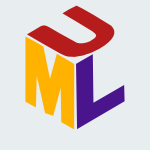 UML-2002-AnidoCRS #corba
UML-2002-AnidoCRS #corba- Applying MDA Concepts to Develop a Domain CORBA Facility for E-learning (LEAR, MC, JSR, JMS), pp. 321–335.
 SAC-2002-BrommeKEK #algorithm #authentication #framework #operating system #testing
SAC-2002-BrommeKEK #algorithm #authentication #framework #operating system #testing- A conceptual framework for testing biometric algorithms within operating systems’ authentication (AB, MK, OE, OK), pp. 273–280.
 SAC-2002-ChanLMLHL #documentation #mobile #multi #navigation #summary #using
SAC-2002-ChanLMLHL #documentation #mobile #multi #navigation #summary #using- Multiple related document summary and navigation using concept hierarchies for mobile clients (DLC, RWPL, WKM, HVL, EKSH, QL), pp. 627–632.
 DAC-2002-AmickGL #interface #megamodelling
DAC-2002-AmickGL #interface #megamodelling- Macro-modeling concepts for the chip electrical interface (BWA, CRG, DL), pp. 391–394.
 DAC-2002-FoltinFT #abstraction #independence #modelling #performance
DAC-2002-FoltinFT #abstraction #independence #modelling #performance- Efficient stimulus independent timing abstraction model based on a new concept of circuit block transparency (MF, BF, ST), pp. 158–163.
 DAC-2002-WongMP #synthesis
DAC-2002-WongMP #synthesis- Forward-looking objective functions: concept & applications in high level synthesis (JLW, SM, MP), pp. 904–909.
 DATE-2002-BuchenriederPS #design
DATE-2002-BuchenriederPS #design- A Powerful System Design Methodology Combining OCAPI and Handel-C for Concept Engineering (KB, AP, AS), pp. 870–874.
 FASE-2002-NavarroFFS #hypermedia #prototype
FASE-2002-NavarroFFS #hypermedia #prototype- Formal-Driven Conceptualization and Prototyping of Hypermedia Applications (AN, BFM, AFV, JLS), pp. 308–322.
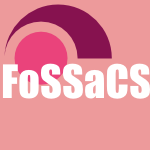 FoSSaCS-2002-Abraham-MummBRS #java #multi #thread #verification
FoSSaCS-2002-Abraham-MummBRS #java #multi #thread #verification- Verification for Java’s Reentrant Multithreading Concept (EÁM, FSdB, WPdR, MS), pp. 5–20.
 FoSSaCS-2002-BidoitH #integration #on the #reachability
FoSSaCS-2002-BidoitH #integration #on the #reachability- On the Integration of Observability and Reachability Concepts (MB, RH), pp. 21–36.
 HT-2001-WeinreichOL #user interface
HT-2001-WeinreichOL #user interface- The look of the link — concepts for the user interface of extended hyperlinks (HW, HO, WL), pp. 19–28.
 ITiCSE-2001-Fone #network #spreadsheet #using
ITiCSE-2001-Fone #network #spreadsheet #using- Using a familiar package to demonstrate a difficult concept: using an excel spreadsheet model to explain the concepts of neural networks to undergraduates (WF), pp. 165–168.
 ITiCSE-2001-HabermanK #black box #education
ITiCSE-2001-HabermanK #black box #education- Activating “black boxes” instead of opening “zipper” — a method of teaching novices basic CS concepts (BH, YBDK), pp. 41–44.
 ITiCSE-2001-KarvonenRTT #web
ITiCSE-2001-KarvonenRTT #web- Versatile concept map viewing on the Web (AK, ER, JT, JT), pp. 105–108.
 ITiCSE-2001-KorhonenMS #algorithm #animation #matrix #named #simulation
ITiCSE-2001-KorhonenMS #algorithm #animation #matrix #named #simulation- Matrix — concept animation and algorithm simulation system (AK, LM, RS), p. 180.
 ICSM-2001-Gold #maintenance
ICSM-2001-Gold #maintenance- Hypothesis-Based Concept Assignment to Support Software Maintenance (NG), pp. 545–548.
 IWPC-2001-GoldB #flexibility #segmentation
IWPC-2001-GoldB #flexibility #segmentation- A Flexible Method for Segmentation in Concept Assignmen (NG, KHB), pp. 135–144.
 IWPC-2001-LiY #comprehension #named
IWPC-2001-LiY #comprehension #named- Simplicity: A Key Engineering Concept for Program Understanding (YL, HY), pp. 98–107.
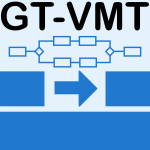 GT-VMT-2001-EhrigO #data type #framework #integration #modelling #process
GT-VMT-2001-EhrigO #data type #framework #integration #modelling #process- A Conceptual and Formal Framework for the Integration of Data Type and Process Modeling Techniques (HE, FO), pp. 199–226.
 GT-VMT-2001-Pfaltz #approach #empirical #graph #induction
GT-VMT-2001-Pfaltz #approach #empirical #graph #induction- Transformations of Concept Graphs: An Approach to Empirical Induction (JLP), pp. 318–324.
 CAiSE-2001-LaleauP #information management #metamodelling #modelling #uml
CAiSE-2001-LaleauP #information management #metamodelling #modelling #uml- A Rigorous Metamodel for UML Static Conceptual Modelling of Information Systems (RL, FP), pp. 402–416.
 CAiSE-2001-Olive #modelling #taxonomy
CAiSE-2001-Olive #modelling #taxonomy- Taxonomies and Derivation Rules in Conceptual Modeling (AO), pp. 417–432.
 EDOC-2001-WegmannN #modelling #ontology #using
EDOC-2001-WegmannN #modelling #ontology #using- Conceptual Modeling of Complex Systems Using an RM-ODP Based Ontology (AW, AN), pp. 200–211.
 ICEIS-v1-2001-GoswamiP #database #fuzzy #modelling #object-oriented
ICEIS-v1-2001-GoswamiP #database #fuzzy #modelling #object-oriented- Conceptual Modeling of Fuzzy Object-Oriented Database Systems (AG, PKP), pp. 287–294.
 ICEIS-v1-2001-Lancieri
ICEIS-v1-2001-Lancieri - The Concept of Information Ecology (LL), pp. 188–193.
 ICEIS-v1-2001-Smirnov #constraints #information management #network
ICEIS-v1-2001-Smirnov #constraints #information management #network- Ontology-Drive Virtual Production Network Configuration: A Concept and Constraint-Object-Oriented Knowledge Management (AVS), pp. 345–352.
 ICEIS-v2-2001-PetitD #integration #modelling
ICEIS-v2-2001-PetitD #integration #modelling- O.C.: A New Concept for Modelling and Information Integration (CP, CD), pp. 888–892.
 KDD-2001-AggarwalP #mining #re-engineering #semistructured data #set
KDD-2001-AggarwalP #mining #re-engineering #semistructured data #set- Mining massively incomplete data sets by conceptual reconstruction (CCA, SP), pp. 227–232.
 MLDM-2001-BhanuD #clustering #feedback #fuzzy #learning
MLDM-2001-BhanuD #clustering #feedback #fuzzy #learning- Concepts Learning with Fuzzy Clustering and Relevance Feedback (BB, AD), pp. 102–116.
 MLDM-2001-TrinidadS #algorithm #clustering #named
MLDM-2001-TrinidadS #algorithm #clustering #named- LC: A Conceptual Clustering Algorithm (JFMT, GSD), pp. 117–127.
 SEKE-2001-Basili #experience #implementation #set
SEKE-2001-Basili #experience #implementation #set- Implementing the Experience Factory concepts as a set of Experience Bases (VRB), pp. 102–109.
 SEKE-2001-CarpaniR #constraints #multi
SEKE-2001-CarpaniR #constraints #multi- An Integrity Constraints Language for a Conceptual Multidimensional Data Model (FC, RR), pp. 220–227.
 SEKE-2001-Tubio #independence #modelling
SEKE-2001-Tubio #independence #modelling- Development-Paradigm Independent Conceptual Models (ÓDT), pp. 137–144.
 SIGIR-2001-HenstockLWP #information retrieval #towards
SIGIR-2001-HenstockLWP #information retrieval #towards- Toward an Improved Concept-Based Information Retrieval System (PVH, YSL, CJW, DJP), pp. 384–385.
 SIGIR-2001-SongB #data flow #information management #using
SIGIR-2001-SongB #data flow #information management #using- Discovering Information Flow Using a High Dimensional Conceptual Space (DS, PB), pp. 327–333.
 TOOLS-EUROPE-2001-SnoeckD #modelling #object-oriented
TOOLS-EUROPE-2001-SnoeckD #modelling #object-oriented- Core Modelling Concepts in Object-Oriented Conceptual Modelling (MS, GD), pp. 167–169.
 TOOLS-EUROPE-2001-SnoeckD01a #modelling #object-oriented
TOOLS-EUROPE-2001-SnoeckD01a #modelling #object-oriented- Core Modelling Concepts in Object-Oriented Conceptual Modelling (MS, GD), pp. 170–179.
 TOOLS-USA-2001-McBreen #object-oriented #ruby
TOOLS-USA-2001-McBreen #object-oriented #ruby- Introducing OO Concepts with Ruby (PM), p. 379.
 TOOLS-USA-2001-McKeeFS #composition #object-oriented
TOOLS-USA-2001-McKeeFS #composition #object-oriented- Object-Oriented Concepts for Modular Robotics Systems (GTM, JAF, PSS), pp. 229–239.
 RE-2001-DelugachL #graph #requirements
RE-2001-DelugachL #graph #requirements- Acquiring Software Requirements As Conceptual Graphs (HSD, BEL), pp. 296–297.
 ASE-2001-MarcusM #identification #source code
ASE-2001-MarcusM #identification #source code- Identification of High-Level Concept Clones in Source Code (AM, JIM), pp. 107–114.
 ESEC-FSE-2001-AbererH #information management #modelling #peer-to-peer #state of the art
ESEC-FSE-2001-AbererH #information management #modelling #peer-to-peer #state of the art- Peer-to-peer information systems: concepts and models, state-of-the-art, and future systems (KA, MH), pp. 326–327.
 ESEC-FSE-2001-Ran #architecture
ESEC-FSE-2001-Ran #architecture- Fundamental concepts for practical software architecture (AR), pp. 328–329.
 ESEC-FSE-2001-WallnauHS #component #experience #re-engineering #tutorial
ESEC-FSE-2001-WallnauHS #component #experience #re-engineering #tutorial- Half day tutorial in methods of component-based software engineering essential concepts and classroom experience (KCW, SAH, RCS), pp. 314–315.
 ICSE-2001-Abrahamsson #development #process
ICSE-2001-Abrahamsson #development #process- Commitment Development in Software Process Improvement: Critical Misconceptions (PA), pp. 71–80.
 ICSE-2001-OvermyerLR #analysis #modelling #using
ICSE-2001-OvermyerLR #analysis #modelling #using- Conceptual Modeling through Linguistic Analysis Using LIDA (SPO, BL, OR), pp. 401–410.
 ICSE-2001-Ran #architecture #tutorial
ICSE-2001-Ran #architecture #tutorial- Tutorial on Fundamental Concepts for Practical Software Architecture (AR), pp. 722–723.
 ICSE-2001-Wallnau #component #experience #re-engineering
ICSE-2001-Wallnau #component #experience #re-engineering- Methods of Component-Based Software Engineering: Essential Concepts and Classroom Experience (KCW), pp. 709–710.
 SAC-2001-BinhT #modelling #multi #object-oriented
SAC-2001-BinhT #modelling #multi #object-oriented- Conceptual multidimensional data model based on object oriented metacube (BTN, AMT), pp. 295–300.
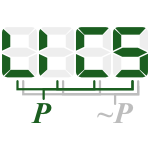 LICS-2001-Ganzinger #decidability #problem #semantics #word
LICS-2001-Ganzinger #decidability #problem #semantics #word- Relating Semantic and Proof-Theoretic Concepts for Polynominal Time Decidability of Uniform Word Problems (HG), pp. 81–90.
 ECDL-2000-ShiratuddinL
ECDL-2000-ShiratuddinL - Conceptual Model of Children’s Electronic Textbook (NS, ML), pp. 485–489.
 HT-2000-CrampesR #navigation #web
HT-2000-CrampesR #navigation #web- Ontology-supported and ontology-driven conceptual navigation on the World Wide Web (MC, SR), pp. 191–199.
 HT-2000-TzagarakisKCR #hypermedia
HT-2000-TzagarakisKCR #hypermedia- Naming as a fundamental concept of open hypermedia systems (MT, NK, DC, SR), pp. 103–112.
 SIGMOD-2000-JarkeQCLFLVV #design
SIGMOD-2000-JarkeQCLFLVV #design- Concept Based Design of Data Warehouses: The DWQ Demonstrators (MJ, CQ, DC, ML, EF, SL, PV, YV), p. 591.
 CSEET-2000-KorneckiZE #learning #programming #realtime
CSEET-2000-KorneckiZE #learning #programming #realtime- Learning Real-Time Programming Concepts through VxWorks Lab Experiments (AJK, JZ, DE), p. 294–?.
 CSMR-2000-Snelting #re-engineering
CSMR-2000-Snelting #re-engineering- Software Reengineering Based on Concept Lattices (GS), pp. 3–10.
 IWPC-2000-Anquetil #comparison #graph #reverse engineering
IWPC-2000-Anquetil #comparison #graph #reverse engineering- A Comparison of Graphs of Concept for Reverse Engineering (NA), pp. 231–240.
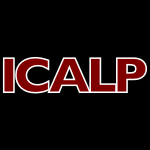 ICALP-2000-EngelsH #evolution #framework #graph transformation #modelling
ICALP-2000-EngelsH #evolution #framework #graph transformation #modelling- Graph Transformation as a Conceptual and Formal Framework for System Modeling and Model Evolution (GE, RH), pp. 127–150.
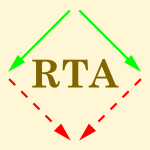 RTA-2000-Meseguer #logic #maude
RTA-2000-Meseguer #logic #maude- Rewriting Logic and Maude: Concepts and Applications (JM), pp. 1–26.
 CHI-2000-GaverM #design #named
CHI-2000-GaverM #design #named- Alternatives: exploring information appliances through conceptual design proposals (WWG, HM), pp. 209–216.
 CAiSE-2000-GomezCP #approach #design #modelling #web
CAiSE-2000-GomezCP #approach #design #modelling #web- Extending a Conceptual Modelling Approach to Web Application Design (JG, CC, OP), pp. 79–93.
 CAiSE-2000-LopezO #evolution #framework #information management
CAiSE-2000-LopezO #evolution #framework #information management- A Framework for the Evolution of Temporal Conceptual Schemas of Information Systems (JRL, AO), pp. 369–386.
 CAiSE-2000-Wohed #analysis #information management #reuse
CAiSE-2000-Wohed #analysis #information management #reuse- Conceptual Patterns for Reuse in Information Systems Analysis (PW), pp. 157–175.
 EDOC-2000-GenilloudW #modelling
EDOC-2000-GenilloudW #modelling- A Foundation for the Concept of Role in Object Modelling (GG, AW), pp. 76–85.
 EDOC-2000-LupuSDD #enterprise #named
EDOC-2000-LupuSDD #enterprise #named- Ponder: Realising Enterprise Viewpoint Concepts (EL, MS, ND, ND), pp. 66–75.
 ICEIS-2000-PiresEAL #case study #framework
ICEIS-2000-PiresEAL #case study #framework- Conception of a Framework for Electronic Commerce-Case Study: RURALNET (JAGP, JLPE, AAGA, ALFL), pp. 472–477.
 ICML-2000-Cohen #automation #learning #web
ICML-2000-Cohen #automation #learning #web- Automatically Extracting Features for Concept Learning from the Web (WWC), pp. 159–166.
 ICML-2000-ColtonBW #automation #identification
ICML-2000-ColtonBW #automation #identification- Automatic Identification of Mathematical Concepts (SC, AB, TW), pp. 183–190.
 ICML-2000-KlinkenbergJ #detection
ICML-2000-KlinkenbergJ #detection- Detecting Concept Drift with Support Vector Machines (RK, TJ), pp. 487–494.
 ICML-2000-PaccanaroH #distributed #learning #linear
ICML-2000-PaccanaroH #distributed #learning #linear- Learning Distributed Representations by Mapping Concepts and Relations into a Linear Space (AP, GEH), pp. 711–718.
 ICML-2000-Talavera #feature model #incremental #learning #probability
ICML-2000-Talavera #feature model #incremental #learning #probability- Feature Selection and Incremental Learning of Probabilistic Concept Hierarchies (LT), pp. 951–958.
 ICML-2000-ZupanBBD #induction #semistructured data
ICML-2000-ZupanBBD #induction #semistructured data- Induction of Concept Hierarchies from Noisy Data (BZ, IB, MB, JD), pp. 1199–1206.
 KR-2000-BaaderK #strict
KR-2000-BaaderK #strict- Matching Concept Descriptions with Existential Restrictions (FB, RK), pp. 261–272.
 KR-2000-BaaderKM #using
KR-2000-BaaderKM #using- Rewriting Concepts Using Terminologies (FB, RK, RM), pp. 297–308.
 KR-2000-MartinG #learning #policy #using
KR-2000-MartinG #learning #policy #using- Learning Generalized Policies in Planning Using Concept Languages (MM, HG), pp. 667–677.
 SPLC-2000-PasettiP #development #novel #product line
SPLC-2000-PasettiP #development #novel #product line- Two Novel Concepts for systematic product line development (AP, WP), pp. 249–270.
 UML-2000-AmyotM #case study #on the #uml
UML-2000-AmyotM #case study #on the #uml- On the Extension of UML with Use Case Maps Concepts (DA, GM), pp. 16–31.
 UML-2000-BarrosDLMRW #architecture #enterprise #process #uml
UML-2000-BarrosDLMRW #architecture #enterprise #process #uml- Processes, Roles, and Events: UML Concepts for Enterprise Architecture (APB, KD, ML, ZM, KR, AW), pp. 62–77.
 UML-2000-Steimann #uml
UML-2000-Steimann #uml- A Radical Revision of UML’s Role Concept (FS), pp. 194–209.
 ASE-2000-Lecoeuche
ASE-2000-Lecoeuche - Finding Comparatively Important Concepts between Texts (RL), p. 55–?.
 ICSE-2000-AndersonGW #architecture #implementation #interactive #multi #named
ICSE-2000-AndersonGW #architecture #implementation #interactive #multi #named- Dragonfly: linking conceptual and implementation architectures of multiuser interactive systems (GEA, TCNG, TNW), pp. 252–261.
 ICSE-2000-LittlewoodS #assessment #reliability #tutorial
ICSE-2000-LittlewoodS #assessment #reliability #tutorial- Software reliability (tutorial session): basic concepts and assessment methods (BL, LS), p. 831.
 ICSE-2000-SchmidBKB #modelling
ICSE-2000-SchmidBKB #modelling- Introducng a software modeling concept in a medium-sized company (KS, UBK, PK, FB), pp. 558–567.
 SAC-2000-PedryczVG #information management
SAC-2000-PedryczVG #information management- Information Granulation for Concept Formation (WP, AVV, AG), pp. 484–489.
 SAC-2000-Psaila #documentation #named #xml
SAC-2000-Psaila #documentation #named #xml- ERX: A Conceptual Model for XML Documents (GP), pp. 898–903.
 SAC-2000-TryfonaJ #abstraction #modelling #using
SAC-2000-TryfonaJ #abstraction #modelling #using- Using Abstractions for Spatio-Temporal Conceptual Modeling (NT, CSJ), pp. 313–322.
 DATE-2000-ZuoD #design
DATE-2000-ZuoD #design- An Integrated Design Environment for Early Stage Conceptual Design (JZ, SWD), p. 754.
 CSL-2000-BorgerS #composition
CSL-2000-BorgerS #composition- Composition and Submachine Concepts for Sequential ASMs (EB, JS), pp. 41–60.
 WICSA-1999-PreeK #architecture #case study #legacy
WICSA-1999-PreeK #architecture #case study #legacy- Rearchitecting Legacy System — Concepts and Case Study (WP, KK), pp. 51–64.
 ADL-1999-HollfelderET #library #video
ADL-1999-HollfelderET #library #video- Concept-Based Browsing in Video Libraries (SH, AE, UT), pp. 105–115.
 ADL-1999-HoriiIC #information retrieval #library
ADL-1999-HoriiIC #information retrieval #library- Conceptual Information Retrieval of Technical Papers for Digital Libraries (CH, MI, KC), pp. 171–178.
 ITiCSE-1999-ChiuHCL #collaboration #interactive #network #process
ITiCSE-1999-ChiuHCL #collaboration #interactive #network #process- Interaction processes in network supported collaborative concept mapping (CHC, CCH, WTC, THL), pp. 75–78.
 ITiCSE-1999-Clear #collaboration #education #interactive #learning
ITiCSE-1999-Clear #collaboration #education #interactive #learning- A collaborative learning trial between New Zealand and Sweden-using Lotus Notes Domino in teaching the concepts of Human Computer Interaction (TC), pp. 111–114.
 ITiCSE-1999-McCrackenNC #design
ITiCSE-1999-McCrackenNC #design- Misconceptions of designing: a descriptive study (MM, WN, JC), pp. 48–51.
 ICSM-1999-Kajko-Mattsson99a #maintenance
ICSM-1999-Kajko-Mattsson99a #maintenance- Common Concept Apparatus Within Corrective Software Maintenance (MKM), pp. 287–296.
 CHI-1999-GaverD #design
CHI-1999-GaverD #design- Projected Realities: Conceptual Design for Cultural Effect (WWG, AD), pp. 600–607.
 HCI-CCAD-1999-Keenan
HCI-CCAD-1999-Keenan - Systems of intellectual capital in collectivities from work organizations to human settlements: Some conceptualizations (JJK), pp. 397–401.
 HCI-CCAD-1999-Machate #interactive #multimodal #smarttech #using
HCI-CCAD-1999-Machate #interactive #multimodal #smarttech #using- Being natural — on the use of multimodal interaction concepts in smart homes (JM), pp. 937–941.
 HCI-CCAD-1999-MesserS #distributed #operating system
HCI-CCAD-1999-MesserS #distributed #operating system- Concepts for distributed groupware operating systems (BM, KS), pp. 308–312.
 HCI-CCAD-1999-StahreJ #information management #smarttech
HCI-CCAD-1999-StahreJ #information management #smarttech- The super operator concept — wearable information system for manufacturing system personnel (JS, AJ), pp. 192–196.
 HCI-CCAD-1999-VossNJS #documentation #information management
HCI-CCAD-1999-VossNJS #documentation #information management- Concepts as handles for sharing knowledge from documents (AV, KN, MJ, TS), pp. 432–436.
 HCI-EI-1999-FringsW #development
HCI-EI-1999-FringsW #development- Role Concept in Software Development (SF, AW), pp. 1189–1193.
 HCI-EI-1999-Kitamura #design #interactive #usability
HCI-EI-1999-Kitamura #design #interactive #usability- Creativity and Usability Concepts in Designing Human Computer Interaction for Management of Complex Dynamic Systems (MK), pp. 431–435.
 HCI-EI-1999-ScharKK #learning #multi #named
HCI-EI-1999-ScharKK #learning #multi #named- Multimedia: the Effect of Picture, Voice & Text for the Learning of Concepts and Principles (SGS, JK, HK), pp. 456–460.
 HCI-EI-1999-Stroem #design
HCI-EI-1999-Stroem #design- Inattentive Use: A New design Concept (GS), pp. 1153–1157.
 HCI-EI-1999-ThissenS #design #internet #learning #student
HCI-EI-1999-ThissenS #design #internet #learning #student- A New Concept for Designing Internet Learning Applications for Students of Electrical Engineering (DT, BS), pp. 590–594.
 CAiSE-1999-Wedemeijer #design #flexibility #maintenance
CAiSE-1999-Wedemeijer #design #flexibility #maintenance- Design the Flexibility, Maintain the Stability of Conceptual Schemas (LW), pp. 467–471.
 EDOC-1999-BlancGD #enterprise #uml #using
EDOC-1999-BlancGD #enterprise #uml #using- Using the UML language to express the ODP enterprise concepts (XB, MPG, RLD), pp. 50–59.
 ICEIS-1999-GomesF #architecture #modelling
ICEIS-1999-GomesF #architecture #modelling- Business Objects in Conceptual Information Architecture Modelling (RG, ADdF), pp. 419–426.
 ICEIS-1999-KotowiczB #enterprise #formal method #information management #multi
ICEIS-1999-KotowiczB #enterprise #formal method #information management #multi- Linguistic Engineering for Conception of Multi-Agents Systems-Application to the Formalisation of Enterprise Information Systems (JPK, XB), pp. 248–255.
 ACIR-1999-DoanB #documentation
ACIR-1999-DoanB #documentation- Virtual WWW Documents: a Concept to Explicit the Structure of WWW Sites (BLD, MB).
 ICML-1999-AbeL #learning #linear #probability #using
ICML-1999-AbeL #learning #linear #probability #using- Associative Reinforcement Learning using Linear Probabilistic Concepts (NA, PML), pp. 3–11.
 KDD-1999-SyedLS99a #incremental #learning
KDD-1999-SyedLS99a #incremental #learning- Handling Concept Drifts in Incremental Learning with Support Vector Machines (NAS, HL, KKS), pp. 317–321.
 SIGIR-1999-SandersonC
SIGIR-1999-SandersonC - Deriving Concept Hierarchies from Text (MS, WBC), pp. 206–213.
 OOPSLA-1999-France #analysis #modelling #problem #requirements #uml
OOPSLA-1999-France #analysis #modelling #problem #requirements #uml- A Problem-Oriented Analysis of Basic UML Static Requirements Modeling Concepts (RBF), pp. 57–69.
 TOOLS-EUROPE-1999-WoodmanGHRM
TOOLS-EUROPE-1999-WoodmanGHRM - Employing Object Technology to Expose Fundamental Object Concepts (MW, RG, SH, HR, MM), pp. 371–383.
 TOOLS-USA-1999-AltmannP #development #tool support
TOOLS-USA-1999-AltmannP #development #tool support- Cooperative Software Development: Concepts, Model and Tools (JA, GP), p. 194–?.
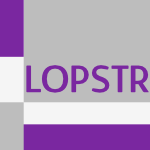 LOPSTR-1999-Kulas #prolog #runtime
LOPSTR-1999-Kulas #prolog #runtime- Annotations for Prolog — A Concept and Runtime Handling (MK), pp. 234–254.
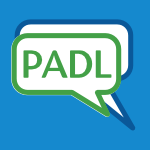 PADL-1999-Kahl #combinator #documentation #pretty-printing
PADL-1999-Kahl #combinator #documentation #pretty-printing- Beyond Pretty-Printing: Galley Concepts in Document Formatting Combinators (WK), pp. 76–90.
 RE-1999-Crawford
RE-1999-Crawford - Advancing Business Concepts in a JAD Workshop Setting (TC), p. 31–?.
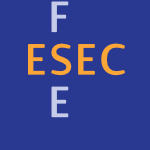 ESEC-FSE-1999-Ball #dynamic analysis
ESEC-FSE-1999-Ball #dynamic analysis- The Concept of Dynamic Analysis (TB), pp. 216–234.
 DATE-1999-JantschKH #analysis #case study #modelling #synthesis
DATE-1999-JantschKH #analysis #case study #modelling #synthesis- The Rugby Model: A Conceptual Frame for the Study of Modelling, Analysis and Synthesis Concepts of Electronic Systems (AJ, SK, AH), pp. 256–262.
 HPDC-1999-VogelsRB #distributed #reliability
HPDC-1999-VogelsRB #distributed #reliability- Six Misconceptions about Reliable Distributed Computing (WV, RvR, KPB), pp. 213–215.
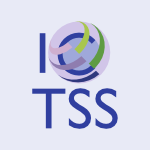 IWTCS-1999-ArtychB #consistency #requirements #tool support
IWTCS-1999-ArtychB #consistency #requirements #tool support- External Conformance Requirements: Concepts, Methods and Tools (RA, KMB), pp. 363–378.
 ADL-1998-DjerabaBB #information management #query #visual notation
ADL-1998-DjerabaBB #information management #query #visual notation- Concept-Based Query in Visual Information Systems (CD, MB, HB), pp. 299–308.
 ECDL-1998-KawasakiSS #image #information retrieval #internet #library #tool support #video
ECDL-1998-KawasakiSS #image #information retrieval #internet #library #tool support #video- NAIST Digital Video Library: Tools for Restructuring Video Data for the Content Based Information Retrieval — A Representative Image of Shot Concept for the Internet (YK, RS, HS), pp. 645–646.
 TAGT-1998-BardohlE #editing #visual notation
TAGT-1998-BardohlE #editing #visual notation- Conceptual Model of the Graphical Editor GENGED for the Visual Definition of Visual Languages (RB, HE), pp. 252–266.
 CHI-1998-SumnerS #documentation
CHI-1998-SumnerS #documentation- From Documents to Discourse: Shifting Conceptions of Scholarly Publishing (TS, SBS), pp. 95–102.
 ACIR-1998-OunisP #effectiveness #graph #performance #query #relational #using
ACIR-1998-OunisP #effectiveness #graph #performance #query #relational #using- Effective and Efficient Relational Query Processing Using Conceptual Graphs (IO, MP).
 CIKM-1998-SpaccapietraPZ #modelling #perspective
CIKM-1998-SpaccapietraPZ #modelling #perspective- Modeling Time from a Conceptual Perspective (SS, CP, EZ), pp. 432–440.
 ICML-1998-AnglanoGBS #evaluation #learning
ICML-1998-AnglanoGBS #evaluation #learning- An Experimental Evaluation of Coevolutive Concept Learning (CA, AG, GLB, LS), pp. 19–27.
 ICPR-1998-DutaJ #image #learning
ICPR-1998-DutaJ #image #learning- Learning the human face concept in black and white images (ND, AKJ), pp. 1365–1367.
 KDD-1998-LaneB #identification #learning #online #security
KDD-1998-LaneB #identification #learning #online #security- Approaches to Online Learning and Concept Drift for User Identification in Computer Security (TL, CEB), pp. 259–263.
 KR-1998-Bennett #knowledge base #semantics
KR-1998-Bennett #knowledge base #semantics- Modal Semantics for Knowledge Bases Dealing with Vague Concepts (BB), pp. 234–244.
 UML-1998-Atkinson #framework #uml
UML-1998-Atkinson #framework #uml- Supporting and Applying the UML Conceptual Framework (CA), pp. 21–36.
 UML-1998-Desfray #automation #design pattern #tool support
UML-1998-Desfray #automation #design pattern #tool support- Automation of Design Pattern: Concepts, Tools and Practices (PD), pp. 120–131.
 ICRE-1998-MayrK #design #requirements
ICRE-1998-MayrK #design #requirements- Conceptual Predesign — Bridging the Gap between Requirements and Conceptual Design (HCM, CK), p. 90–?.
 REFSQ-1998-HaumerPW #abstraction #modelling
REFSQ-1998-HaumerPW #abstraction #modelling- Abstraction Guides: Interrelating Conceptual Models with Real World Scenes (PH, KP, KW), pp. 23–32.
 ASE-1998-BernerJGA #modelling #visualisation
ASE-1998-BernerJGA #modelling #visualisation- A Visualization Concept for Hierarchical Object Models (SB, SJ, MG, MA), p. 225–?.
 ASE-1998-HaebererM #architecture #development #idea #paradigm
ASE-1998-HaebererM #architecture #development #idea #paradigm- The Very Idea of Software Development Environments: A Conceptual Architecture for the ARTS Environment Paradigm (AMH, TSEM), pp. 260–271.
 FSE-1998-KontioGL #case study #experience #process #risk management #using
FSE-1998-KontioGL #case study #experience #process #risk management #using- Experiences in Improving Risk Management Processes Using the Concepts of the Riskit Method (JK, GG, DL), pp. 163–172.
 ICSE-1998-AnquetilL #clustering
ICSE-1998-AnquetilL #clustering- Extracting Concepts from File Names: A New File Clustering Criterion (NA, TCL), pp. 84–93.
 ICSE-1998-BaniassadM #query #re-engineering
ICSE-1998-BaniassadM #query #re-engineering- Conceptual Module Querying for Software Reengineering (ELAB, GCM), pp. 64–73.
 ICSE-1998-HerbslebG #case study #complexity #metric
ICSE-1998-HerbslebG #case study #complexity #metric- Conceptual Simplicity Meets Organizational Complexity: Case Study of a Corporate Metrics Program (JDH, REG), pp. 271–280.
 ICSE-1998-Kajko-Mattsson #maintenance
ICSE-1998-Kajko-Mattsson #maintenance- A Conceptual Model of Software Maintenance (MKM), pp. 422–425.
 SAC-1998-JungW #automation #development #integration #novel #tool support #towards #web
SAC-1998-JungW #automation #development #integration #novel #tool support #towards #web- CASE for Web sites: towards an integration of traditional case concepts and novel development tools (RJ, RW), pp. 726–731.
 DATE-1998-SongSZ #clustering #effectiveness
DATE-1998-SongSZ #clustering #effectiveness- An Effective General Connectivity Concept for Clustering (JS, ZS, WZ), pp. 398–405.
 PDP-1998-MesserS #framework #platform
PDP-1998-MesserS #framework #platform- Work platforms: basic infrastructure for groupware-a conceptual framework (BM, KS), pp. 309–317.
 FASE-1998-Lechner #concurrent #object-oriented #reuse
FASE-1998-Lechner #concurrent #object-oriented #reuse- Constructs, Concepts and Criteria for Reuse in Concurrent Object-Oriented languages (UL), pp. 171–187.
 CAV-1998-HardinWG #design #proving #theorem proving
CAV-1998-HardinWG #design #proving #theorem proving- Transforming the Theorem Prover into a Digital Design Tool: From Concept Car to Off-Road Vehicle (DSH, MW, DAG), pp. 39–44.
- DL-1997-Crampes #adaptation
- Auto-adaptive Illustration through Conceptual Evocation (MC), pp. 247–254.
- DL-1997-ThompsonSV #automation #knowledge base
- Evaluating Dewey Concepts as a Knowledge Base for Automatic Subject Assignment (RT, KS, DVG), pp. 37–46.
 HT-1997-BullockG #hypermedia #named
HT-1997-BullockG #hypermedia #named- TourisT — Conceptual Hypermedia Tourist Information (JCB, CAG), pp. 228–229.
 CSMR-1997-KutschaHK #approach #maintenance #re-engineering
CSMR-1997-KutschaHK #approach #maintenance #re-engineering- The Task Artifact Cycle: a Conceptual Approach to Maintenance and Reengineering (SK, KH, HK), pp. 17–19.
 WCRE-1997-Balmas #framework #source code #towards
WCRE-1997-Balmas #framework #source code #towards- Toward a Framework for Conceptual and Formal Outlines of Programs (FB), pp. 226–235.
 GG-Handbook-Vol1-CorradiniMREHL #algebra #approach #category theory #graph transformation
GG-Handbook-Vol1-CorradiniMREHL #algebra #approach #category theory #graph transformation- Algebraic Approaches to Graph Transformation — Part I: Basic Concepts and Double Pushout Approach (AC, UM, FR, HE, RH, ML), pp. 163–246.
 CHI-1997-KominekK #clustering #multi
CHI-1997-KominekK #clustering #multi- Accessing Multimedia through Concept Clustering (JK, RK), pp. 19–26.
 HCI-CC-1997-PaulD #design #multi #privacy
HCI-CC-1997-PaulD #design #multi #privacy- Privacy and Acting in Groups-Key Concepts in Designing Multimedia-Supported Cooperative Work (HP, SD), pp. 281–284.
 HCI-CC-1997-Schmidt #design #towards
HCI-CC-1997-Schmidt #design #towards- Cooperative Work: Towards a Conceptual Foundation for CSCW Systems Design (KS), pp. 57–60.
 HCI-CC-1997-StrohmU #analysis #people
HCI-CC-1997-StrohmU #analysis #people- Sociotechnical Analysis According to the Concept of People, Technology, Organization (OS, EU), pp. 241–244.
 HCI-SEC-1997-KohnoA #named
HCI-SEC-1997-KohnoA #named- ROIS: A New Concept to Change into Safe and Comfortable World (MK, YA), pp. 205–208.
 HCI-SEC-1997-KondoSYN #detection #difference #information management #interactive #interface
HCI-SEC-1997-KondoSYN #detection #difference #information management #interactive #interface- Interactive Interfaces to Detect Conceptual Difference for Knowledge Acquisition (TK, NS, TY, SN), pp. 303–306.
 HCI-SEC-1997-TanoNSTA #architecture #design #user interface
HCI-SEC-1997-TanoNSTA #architecture #design #user interface- Design Concept Based on Real-Virtual-Intelligent User Interface and its Software Architecture (ST, YN, HS, TT, HA), pp. 901–904.
 HCI-SEC-1997-Ujigawa #design #framework
HCI-SEC-1997-Ujigawa #design #framework- The Conceptual Framework of Preference-Based Design (MU), pp. 467–470.
 HCI-SEC-1997-Yamaoka #design
HCI-SEC-1997-Yamaoka #design- A New Design Concept and Method Based on Ergonomics and Kansei Engineering and So On (TY), pp. 547–550.
 CAiSE-1997-DominguezZR #approach #metamodelling
CAiSE-1997-DominguezZR #approach #metamodelling- A Conceptual Approach to Meta-Modelling (ED, MAZ, JR), pp. 319–332.
 CAiSE-1997-RuggiaA #modelling #reuse #tool support
CAiSE-1997-RuggiaA #modelling #reuse #tool support- A Toolkit for Reuse in Conceptual Modelling (RR, APA), pp. 173–186.
 CAiSE-1997-TagashiraAAK #representation
CAiSE-1997-TagashiraAAK #representation- Interval-Based Representation of Spatio-Temporal Concepts (TT, TA, MA, YK), pp. 231–244.
 CIKM-1997-SinghSC #documentation #generative #using
CIKM-1997-SinghSC #documentation #generative #using- Generating Association Rules from Semi-Structured Documents Using an Extended Concept Hierarchy (LS, PS, BC), pp. 193–200.
 ICML-1997-DevaneyR #clustering #feature model #performance
ICML-1997-DevaneyR #clustering #feature model #performance- Efficient Feature Selection in Conceptual Clustering (MD, AR), pp. 92–97.
 KDD-1997-Hekanaho #learning
KDD-1997-Hekanaho #learning- GA-Based Rule Enhancement in Concept Learning (JH), pp. 183–186.
 KDD-1997-Zytkow #equation
KDD-1997-Zytkow #equation- Knowledge = Concepts: A Harmful Equation (JMZ), pp. 104–109.
 UML-1997-Kern-BauschJ #semantics #uml
UML-1997-Kern-BauschJ #semantics #uml- From a Semantically Irreducible Formulated Conceptual Schema to an UML Model (LKB, MJ), pp. 32–44.
 UML-1997-SchurrW #uml
UML-1997-SchurrW #uml- Formal Definition of UML’s Package Concept (AS, AJW), pp. 144–159.
 UML-1997-WeberM #diagrams #implementation #modelling #reuse #uml #using
UML-1997-WeberM #diagrams #implementation #modelling #reuse #uml #using- Reuse of Models and Diagrams of the UML and Implementation Concepts Regarding Dynamic Modeling (WW, PM), pp. 190–203.
 TOOLS-ASIA-1997-SheardH #c++ #case study #education #experience #object-oriented #programming #student #using
TOOLS-ASIA-1997-SheardH #c++ #case study #education #experience #object-oriented #programming #student #using- Experiences with Teaching Object-Oriented Concepts to Introductory Programming Students Using C++ (JS, DH), pp. 310–319.
 TOOLS-USA-1997-Borron97a #mixin #multi
TOOLS-USA-1997-Borron97a #mixin #multi- Extending the Concept of Mixin to Multidimensional Objects (HJB), p. 215–?.
 RE-1997-DanoBB #approach #case study #object-oriented #specification
RE-1997-DanoBB #approach #case study #object-oriented #specification- An Approach Based on the Concept of Use Case to Produce Dynamic Object-Oriented Specifications (BD, HB, FB), pp. 54–64.
 ASE-1997-SahraouiMLD #identification
ASE-1997-SahraouiMLD #identification- Applying Concept Formation Methods to Object Identification in Procedural Code (HAS, WLM, HL, FD), pp. 210–218.
 SAC-1997-ChengKK #assessment #fuzzy #representation #using
SAC-1997-ChengKK #assessment #fuzzy #representation #using- Knowledge assessment using fuzzy conceptual representation (PC, DK, GK), pp. 3–9.
 SAC-1997-TheobaldWB #design #matrix
SAC-1997-TheobaldWB #design #matrix- Design concepts for matrices and lattices in LiDIA (PT, SW, WB), pp. 532–536.
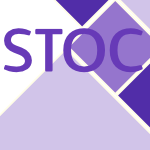 STOC-1997-Ben-DavidBK #algorithm #composition #geometry #learning #theorem
STOC-1997-Ben-DavidBK #algorithm #composition #geometry #learning #theorem- A Composition Theorem for Learning Algorithms with Applications to Geometric Concept Classes (SBD, NHB, EK), pp. 324–333.
 ITiCSE-1996-LinWC #development
ITiCSE-1996-LinWC #development- Critical concepts in the development of courseware for CS closed laboratories (JMCL, CCW, GFC), pp. 14–19.
 CSCW-1996-SatoGS #framework #named #video
CSCW-1996-SatoGS #framework #named #video- Prairie: A Conceptual Framework for a Virtual Organization (Video Program) (SHS, AG, KSS), p. 8.
 CAiSE-1996-CostalTUF #validation
CAiSE-1996-CostalTUF #validation- Handling Conceptual Model Validation by Planning (DC, ET, TU, CF), pp. 255–271.
 CIKM-1996-Fuhr #database #design #information retrieval #object-oriented
CIKM-1996-Fuhr #database #design #information retrieval #object-oriented- Object-Oriented and Database Concepts for the Design of Networked Information Retrieval Systems (NF), pp. 164–172.
 ICML-1996-GeibelW #learning #relational
ICML-1996-GeibelW #learning #relational- Learning Relational Concepts with Decision Trees (PG, FW), pp. 166–174.
 ICML-1996-Hekanaho #learning
ICML-1996-Hekanaho #learning- Background Knowledge in GA-based Concept Learning (JH), pp. 234–242.
 ICML-1996-PerezR #learning
ICML-1996-PerezR #learning- Learning Despite Concept Variation by Finding Structure in Attribute-based Data (EP, LAR), pp. 391–399.
 ICPR-1996-NolleS #image #parallel
ICPR-1996-NolleS #image #parallel- Data distribution concepts for parallel image processing (MN, GS), pp. 728–733.
 KDD-1996-KnorrN #proximity
KDD-1996-KnorrN #proximity- Extraction of Spatial Proximity Patterns by Concept Generalization (EMK, RTN), pp. 347–350.
 SEKE-1996-Balmas #named #programming
SEKE-1996-Balmas #named #programming- ACL: a Tool for Conceptual Programming (FB), pp. 198–205.
 SEKE-1996-CanforaCL #cobol
SEKE-1996-CanforaCL #cobol- Recovering a Conceptual Data Model from COBOL Code (GC, AC, GADL), pp. 277–284.
 ECOOP-1996-SilvaC #database #design #diagrams #multi #object-oriented #using
ECOOP-1996-SilvaC #database #design #diagrams #multi #object-oriented #using- Conceptual Design of Active Object-Oriented Database Applications Using Multi-level Diagrams (MJVS, CRC), pp. 366–397.
 ICRE-1996-CatledgeP #collaboration #design
ICRE-1996-CatledgeP #collaboration #design- Collaboration during conceptual design (LDC, CP), pp. 182–189.
 ICRE-1996-NissenJJZH #analysis #case study #experience #modelling #multi #requirements
ICRE-1996-NissenJJZH #analysis #case study #experience #modelling #multi #requirements- Requirements Analysis from Multiple Perspectives: Experiences with Conceptual Modeling Technology (HWN, MAJ, MJ, GVZ, HH), p. 217.
 FSE-1996-Petroski
FSE-1996-Petroski - Engineering Bridges: From Concept to Reality (HP), p. 1.
 ICSE-1996-BaumerBLZ #experience #prototype #tool support #user interface
ICSE-1996-BaumerBLZ #experience #prototype #tool support #user interface- User Interface Prototyping — Concepts, Tools, and Experience (DB, WRB, HL, HZ), pp. 532–541.
 ICSE-1996-GibbsB #challenge #multi #programming #scalability
ICSE-1996-GibbsB #challenge #multi #programming #scalability- Large, Multimedia Programming — Concepts and Challenges (SJG, CB), pp. 439–440.
 SAC-1996-HerrmannHS #fuzzy
SAC-1996-HerrmannHS #fuzzy- Fuzzy conceptual knowledge processing (CSH, SH, AS), pp. 628–632.
 SAC-1996-JazayeriT #design
SAC-1996-JazayeriT #design- Design concepts as basis for organizing software catalogs (MJ, GT), pp. 558–564.
 SAC-1996-PizanoH #multi
SAC-1996-PizanoH #multi- Integrated multimedia messaging concepts and applications (AP, TYH), pp. 12–16.
 DAC-1996-WunderLM #layout #modelling #named #simulation
DAC-1996-WunderLM #layout #modelling #named #simulation- VAMP: A VHDL-Based Concept for Accurate Modeling and Post Layout Timing Simulation of Electronic Systems (BW, GL, KDMG), pp. 119–124.
 STOC-1996-BshoutyGMST #geometry #learning
STOC-1996-BshoutyGMST #geometry #learning- Noise-Tolerant Distribution-Free Learning of General Geometric Concepts (NHB, SAG, HDM, SS, HT), pp. 151–160.
 JICSLP-1996-LeuschelSW #deduction #integration #towards
JICSLP-1996-LeuschelSW #deduction #integration #towards- A Conceptual Embedding of Folding into Partial Deduction: Towards a Maximal Integration (ML, DDS, DAdW), pp. 319–332.
 ICDAR-v2-1995-KiseYTF #diagrams #string
ICDAR-v2-1995-KiseYTF #diagrams #string- Interpretation of conceptual diagrams from line segments and strings (KK, NY, ST, KF), pp. 960–963.
 ICDAR-v2-1995-YangC #automation #generative #graph #hypermedia
ICDAR-v2-1995-YangC #automation #generative #graph #hypermedia- Automatic hypertext link generation based on conceptual graphs (GCY, KSC), pp. 702–705.
 VLDB-1995-Korth #abstraction #evolution #transaction
VLDB-1995-Korth #abstraction #evolution #transaction- The Double Life of the Transaction Abstraction: Fundamental Principle and Evolving System Concept (HFK), pp. 2–6.
 FPLE-1995-Burton #recursion
FPLE-1995-Burton #recursion- Conceptual Structures for Recursion (CTPB), pp. 179–193.
 WCRE-1995-KontogiannisDBGM #design #locality #pattern matching
WCRE-1995-KontogiannisDBGM #design #locality #pattern matching- Pattern Matching for Design Concept Localization (KK, RdM, MB, MG, EM).
 RTA-1995-Gehrke #category theory #monad #problem
RTA-1995-Gehrke #category theory #monad #problem- Problems in Rewriting Applied to Categorical Concepts by the Example of a Computational Comonad (WG), pp. 210–224.
 CHI-1995-HixTJ #interactive #testing
CHI-1995-HixTJ #interactive #testing- Pre-Screen Projection: From Concept to Testing of a New Interaction Technique (DH, JNT, RJKJ), pp. 226–233.
 CAiSE-1995-OliveS #behaviour #modelling
CAiSE-1995-OliveS #behaviour #modelling- A Method for Explaining the Behaviour of Conceptual Models (AO, MRS), pp. 12–25.
 CAiSE-1995-Pastor-ColladoO #design #information management #modelling #transaction
CAiSE-1995-Pastor-ColladoO #design #information management #modelling #transaction- Supporting Transaction Design in Conceptual Modelling of Information Systems (JAP, AO), pp. 40–53.
 CAiSE-1995-Pettersson #design #user interface
CAiSE-1995-Pettersson #design #user interface- Designing the User Interface on Top of a Conceptual Model (MP), pp. 231–242.
 CAiSE-1995-SiauWB #using
CAiSE-1995-SiauWB #using- A Psychological Study on the Use of Relationship Concept — Some Preliminary Findings (KS, YW, IB), pp. 341–354.
 CIKM-1995-Han #mining #multi
CIKM-1995-Han #mining #multi- Mining Knowledge at Multiple Concept Levels (JH), pp. 19–24.
 CIKM-1995-TangV #transaction
CIKM-1995-TangV #transaction- Transaction-oriented Work-flow Concepts in Inter-Organizational Environments (JT, JV), pp. 250–259.
 ICML-1995-DattaK #learning #prototype
ICML-1995-DattaK #learning #prototype- Learning Prototypical Concept Descriptions (PD, DFK), pp. 158–166.
 ICML-1995-Hekanaho #learning #multimodal
ICML-1995-Hekanaho #learning #multimodal- Symbiosis in Multimodal Concept Learning (JH), pp. 278–285.
 KDD-1995-KetterlinGK #approach #clustering #database
KDD-1995-KetterlinGK #approach #clustering #database- Conceptual Clustering in Structured Databases: A Practical Approach (AK, PG, JJK), pp. 180–185.
 SEKE-1995-ChangDL #knowledge base #logic #object-oriented #relational
SEKE-1995-ChangDL #knowledge base #logic #object-oriented #relational- Knowledge Based System for Transforming an Object Oriented Conceptual Model into a Relational Logical Model (EC, TSD, AL), pp. 374–382.
 SEKE-1995-ConstantinidisZ #database #design #using
SEKE-1995-ConstantinidisZ #database #design #using- Engineering an Ingres Active Database using Conceptual Design Knowledge Elements (VC, ABZ), pp. 158–160.
 SEKE-1995-JiangC #evolution
SEKE-1995-JiangC #evolution- Class Transmutation and other Evolution Concepts (HJ, XC), pp. 72–79.
 SEKE-1995-SchwerKB
SEKE-1995-SchwerKB - The Temporal Dimension of Conceptual Dimension Objects (SRS, NK, JB), pp. 98–102.
 SAC-1995-Sateesh #perspective #realtime
SAC-1995-Sateesh #perspective #realtime- Conceptual model of real-time systems: a perspective (TKS), pp. 206–209.
 SAC-1995-StearnsC #machine learning #rule-based
SAC-1995-StearnsC #machine learning #rule-based- Rule-based machine learning of spatial data concepts (SS, DCSC), pp. 242–247.
 HT-ECHT-1994-TaylorTB #hypermedia #representation
HT-ECHT-1994-TaylorTB #hypermedia #representation- Representation and Manipulation of Conceptual, Temporal and Geographical Knowledge in a Museum Hypermedia System (CT, DT, PBD), pp. 239–244.
 PODS-1994-FaloutsosK #analysis #independence #using
PODS-1994-FaloutsosK #analysis #independence #using- Beyond Uniformity and Independence: Analysis of R-trees Using the Concept of Fractal Dimension (CF, IK), pp. 4–13.
 SIGMOD-1994-MissikoffT #agile #database #modelling #named #object-oriented #prototype
SIGMOD-1994-MissikoffT #agile #database #modelling #named #object-oriented #prototype- MOSAICO — A System for Conceptual Modeling and Rapid Prototyping of Object-Oriented Database Application (MM, MT), p. 508.
 ICSM-1994-KontogiannisDBM #design #legacy #locality
ICSM-1994-KontogiannisDBM #design #legacy #locality- Localization of Design Concepts in Legacy Systems (KK, RdM, MB, EM), pp. 414–423.
 FME-1994-PaechR #automaton #behaviour #modelling #refinement
FME-1994-PaechR #automaton #behaviour #modelling #refinement- A new Concept of Refinement used for Behaviour Modelling with Automata (BP, BR), pp. 154–174.
 TAGT-1994-EhrigE #aspect-oriented #graph transformation #semantics
TAGT-1994-EhrigE #aspect-oriented #graph transformation #semantics- Pragmatic and Semantic Aspects of a Module Concept for Graph Transformation Systems (HE, GE), pp. 137–154.
 CSCW-1994-EllisW
CSCW-1994-EllisW - A Conceptual Model of Groupware (CAE, JW), pp. 79–88.
 CSCW-1994-Schmidt
CSCW-1994-Schmidt - The Organization of Cooperative Work: Beyond the “Leviathan” Conception of the Organization of Cooperative Work (KS), pp. 101–112.
 CAiSE-1994-BonjourF #information management #integration
CAiSE-1994-BonjourF #information management #integration- Concept Bases: A Support to Information Systems Integration (MB, GF), pp. 242–255.
 CAiSE-1994-CauvetS #abstraction #locality #modelling #object-oriented
CAiSE-1994-CauvetS #abstraction #locality #modelling #object-oriented- Abstraction Forms in Object-Oriented Conceptual Modeling: Localization, Aggregation and Generalization Extensions (CC, FS), pp. 149–171.
 CAiSE-1994-SanchoO #deduction #information management #modelling #specification #transaction
CAiSE-1994-SanchoO #deduction #information management #modelling #specification #transaction- Deriving Transaction Specifications from Deductive Conceptual Models of Information Systems (MRS, AO), pp. 311–324.
 CIKM-1994-Ambrosio #reuse #semantics
CIKM-1994-Ambrosio #reuse #semantics- Introducing Semantics in Conceptual Schema Reuse (APA), pp. 50–56.
 ICML-1994-GiordanaSZ #algorithm #learning #search-based
ICML-1994-GiordanaSZ #algorithm #learning #search-based- Learning Disjunctive Concepts by Means of Genetic Algorithms (AG, LS, FZ), pp. 96–104.
 ICML-1994-ZuckerG #learning
ICML-1994-ZuckerG #learning- Selective Reformulation of Examples in Concept Learning (JDZ, JGG), pp. 352–360.
 KDD-1994-ChuC #abstraction #database
KDD-1994-ChuC #abstraction #database- Abstraction of High Level Concepts from Numerical Values in Databases (WWC, KC), pp. 133–144.
 KDD-1994-Furnkranz #comparison #learning #relational
KDD-1994-Furnkranz #comparison #learning #relational- A Comparison of Pruning Methods for Relational Concept Learning (JF), pp. 371–382.
 KDD-1994-HanF #database #generative #information management #refinement
KDD-1994-HanF #database #generative #information management #refinement- Dynamic Generation and Refinement of Concept Hierarchies for Knowledge Discovery in Databases (JH, YF), pp. 157–168.
 KDD-1994-TroxelSZZ
KDD-1994-TroxelSZZ - From Law-Like Knowledge to Concept Hierarchies in Data (MT, KS, RZ, JMZ), pp. 193–204.
 TRI-Ada-1994-BellBHKKLMOSTWZ #design #reliability #reuse
TRI-Ada-1994-BellBHKKLMOSTWZ #design #reliability #reuse- Software design for reliability and reuse: a proof-of-concept demonstration (JMB, FB, JH, RBK, AK, JL, LM, DO, TS, LT, LW, TZ), pp. 396–404.
 ICRE-1994-FairleyTB #requirements #specification
ICRE-1994-FairleyTB #requirements #specification- The concept of operations: the bridge from operational requirements to technical specifications (REF, RHT, PB), pp. 40–47.
 ICRE-1994-GullaWLS #modelling
ICRE-1994-GullaWLS #modelling- Executing, viewing and explaining conceptual models (JAG, GW, OIL, AS), pp. 166–175.
 ICRE-1994-Soares #process #specification
ICRE-1994-Soares #process #specification- Underlying concepts in process specification (JOPS), pp. 48–52.
 KBSE-1994-Balmas #pattern matching #source code
KBSE-1994-Balmas #pattern matching #source code- An Augmented Pattern Matcher as a Tool to Synthesize Conceptual Descriptions of Programs (FB), pp. 150–157.
 SAC-1994-KumarH #fuzzy #logic #reduction #using
SAC-1994-KumarH #fuzzy #logic #reduction #using- Reduction of communications in a MasPar computer using fuzzy logic concepts (AGK, JH), pp. 351–356.
 DAC-1994-TeraiGNSO #automation #design #performance
DAC-1994-TeraiGNSO #automation #design #performance- Basic Concept of Cooperative Timing-driven Design Automation Technology for High-speed RISC Processor HARP-1 (HT, KG, YN, YS, YO), pp. 262–269.
 SIGMOD-1993-Schaller #industrial #integration #multi
SIGMOD-1993-Schaller #industrial #integration #multi- The INterset Concept for Multidatabase System Integration in the Pharmaceutical Industry (TS), pp. 502–504.
 VLDB-1993-ThomasD
VLDB-1993-ThomasD - A Plan-Operator Concept for Client-Based Knowledge Progressing (JT, SD), pp. 555–566.
 CSM-1993-CimitileFM #re-engineering #reuse #validation
CSM-1993-CimitileFM #re-engineering #reuse #validation- Reuse Reengineering and Validation via Concept Assignment (AC, ARF, PM), pp. 216–225.
 HCI-SHI-1993-BarfieldW #framework
HCI-SHI-1993-BarfieldW #framework- The Sense of Presence within Virtual Environments: A Conceptual Framework (WB, SW), pp. 699–704.
 HCI-SHI-1993-EdmondsC #design
HCI-SHI-1993-EdmondsC #design- Knowledge Support Systems for Conceptual Design: The Amplification of Creativity (EAE, LC), pp. 350–355.
 HCI-SHI-1993-GodbertPS #constraints #interface #natural language #specification #using
HCI-SHI-1993-GodbertPS #constraints #interface #natural language #specification #using- Natural Language Interfaces: Specifying and Using Conceptual Constraints (EG, RP, PS), pp. 385–390.
 HCI-SHI-1993-KoubekS #requirements
HCI-SHI-1993-KoubekS #requirements- A Conceptual Model of Human Skill Requirements for Advanced Manufacturing Settings (RJK, GS), pp. 356–361.
 HCI-SHI-1993-MoriyaT
HCI-SHI-1993-MoriyaT - Concept of Minute Operation and its Application to Pen-Based Computers (SM, HT), pp. 1034–1039.
 INTERCHI-1993-KuuttiB #interface
INTERCHI-1993-KuuttiB #interface- Searching for unity among diversity: exploring the “interface” concept (KK, LJB), pp. 263–268.
 CAiSE-1993-Andonoff #normalisation #object-oriented
CAiSE-1993-Andonoff #normalisation #object-oriented- Normalization of Object-Oriented Conceptual Schemes (EA), pp. 449–462.
 CAiSE-1993-LindlandK #modelling #prototype #validation
CAiSE-1993-LindlandK #modelling #prototype #validation- Validating Conceptual Models by Transformational Prototyping (OIL, JK), pp. 165–183.
 CAiSE-1993-McCormackHR #automation #relational
CAiSE-1993-McCormackHR #automation #relational- Automated Mapping of Conceptual Schemas to Relational Schemas (JIM, TAH, PRR), pp. 432–448.
 CAiSE-1993-OpdahlS #modelling
CAiSE-1993-OpdahlS #modelling- Concepts for Real-World Modelling (ALO, GS), pp. 309–327.
 CAiSE-1993-QuerO #deduction #interactive #modelling #object-oriented
CAiSE-1993-QuerO #deduction #interactive #modelling #object-oriented- Object Interaction in Object-Oriented Deductive Conceptual Models (CQ, AO), pp. 374–396.
 CAiSE-1993-SpanoudakisC #approach #modelling #reuse #similarity
CAiSE-1993-SpanoudakisC #approach #modelling #reuse #similarity- Similarity for Analogical Software Reuse: A Conceptual Modelling Approach (GS, PC), pp. 483–503.
 CIKM-1993-AzarbodP #incremental #integration #using
CIKM-1993-AzarbodP #incremental #integration #using- Building Concept Hierarchies for Schema Integration in HDDBS Using Incremental Concept Formation (CA, WP), pp. 732–734.
 CIKM-1993-Tari #logic #modelling #paradigm
CIKM-1993-Tari #logic #modelling #paradigm- ERC++: A Conceptual Data Model Based on Object and Logic Paradigms (ZT), pp. 625–634.
 ICML-1993-CarpinetoR #approach #clustering #named
ICML-1993-CarpinetoR #approach #clustering #named- GALOIS: An Order-Theoretic Approach to Conceptual Clustering (CC, GR), pp. 33–40.
 ICML-1993-Connolly #clustering #network
ICML-1993-Connolly #clustering #network- Constructing Hidden Variables in Bayesian Networks via Conceptual Clustering (DC), pp. 65–72.
 ICML-1993-DattaK #learning #multi
ICML-1993-DattaK #learning #multi- Concept Sharing: A Means to Improve Multi-Concept Learning (PD, DFK), pp. 89–96.
 ICML-1993-Mladenic #combinator #induction #learning #optimisation
ICML-1993-Mladenic #combinator #induction #learning #optimisation- Combinatorial Optimization in Inductive Concept Learning (DM), pp. 205–211.
 ICML-1993-RagavanR #learning #lookahead
ICML-1993-RagavanR #learning #lookahead- Lookahead Feature Construction for Learning Hard Concepts (HR, LAR), pp. 252–259.
 SEKE-1993-AbbattistaLV #modelling
SEKE-1993-AbbattistaLV #modelling- Recovering Conceptual Data Models is Human-Intensive (FA, FL, GV), pp. 534–543.
 SEKE-1993-LaleauF #modelling #semantics
SEKE-1993-LaleauF #modelling #semantics- Modeling Semantic Data Concepts with VDM (RL, PF), pp. 228–230.
 SEKE-1993-MineauGM #clustering #induction #modelling
SEKE-1993-MineauGM #clustering #induction #modelling- Induction of Generic Data Models by Conceptual Clustering (GWM, RG, RM), pp. 554–564.
 SIGIR-1993-PaiceJ #identification
SIGIR-1993-PaiceJ #identification- The Identification of Important Concepts in Highly Structured Technical Papers (CDP, PAJ), pp. 69–78.
 SIGIR-1993-QiuF #query
SIGIR-1993-QiuF #query- Concept Based Query Expansion (YQ, HPF), pp. 160–169.
 TOOLS-EUROPE-1993-Sylla #modelling
TOOLS-EUROPE-1993-Sylla #modelling- Associated Paper: Modeling Concepts used by Professionals (KHS), pp. 255–258.
 TOOLS-PACIFIC-1993-Dew #agile #object-oriented #prototype #realtime #using
TOOLS-PACIFIC-1993-Dew #agile #object-oriented #prototype #realtime #using- A Rapid Prototyping System for Real-time Systems Using Object-oriented Concepts (RAD), pp. 279–291.
 TOOLS-PACIFIC-1993-Jentzsch #approach
TOOLS-PACIFIC-1993-Jentzsch #approach- Deriving a Conceptual Model: a Business Forms Approach (RJ), pp. 7–19.
 TOOLS-PACIFIC-1993-Murphy #database #object-oriented
TOOLS-PACIFIC-1993-Murphy #database #object-oriented- Object-Oriented Databases: Concepts and Commercial Offerings (JM), p. 312.
 TOOLS-USA-1993-Sarris #object-oriented #paradigm
TOOLS-USA-1993-Sarris #object-oriented #paradigm- Role of Conceptual Schema in Object-Oriented Paradigm (AS), pp. 471–485.
 TOOLS-USA-1993-SinghG #object-oriented #scalability
TOOLS-USA-1993-SinghG #object-oriented #scalability- Extending Object-Oriented Concepts to Support Large Scale Business Systems (MSS, NNG), pp. 501–507.
 RE-1993-CastanoA #reuse #specification #using
RE-1993-CastanoA #reuse #specification #using- Reuse of conceptual requirement specifications (SC, VDA), pp. 121–124.
 RE-1993-LeiteF
RE-1993-LeiteF - A strategy for conceptual model acquisition (JCSdPL, APMF), pp. 243–246.
 RE-1993-RyanM #graph #requirements
RE-1993-RyanM #graph #requirements- Matching conceptual graphs as an aid to requirements re-use (KR, BM), pp. 112–120.
 ICSE-1993-BiggerstaffMW #comprehension #problem
ICSE-1993-BiggerstaffMW #comprehension #problem- The Concept Assignment Problem in Program Understanding (TJB, BGM, DEW), pp. 482–498.
 SAC-1993-KountanisS #graph #learning
SAC-1993-KountanisS #graph #learning- Graphs as a Language to Describe Learning System Concepts (DIK, ES), pp. 469–475.
 SAC-1993-YangO #graph #information management #retrieval
SAC-1993-YangO #graph #information management #retrieval- Knowledge Acquisition and Retrieval Based on Conceptual Graphs (GCY, JO), pp. 476–481.
 SIGMOD-1992-CelentanoFP #documentation #retrieval
SIGMOD-1992-CelentanoFP #documentation #retrieval- Conceptual Document Browsing and Retrieval in Kabiria (AC, MGF, SP), p. 3.
 VLDB-1992-LiS #clustering #database
VLDB-1992-LiS #clustering #database- A Conceptual Model for Dynamic Clustering in Object Databases (QL, JLS), pp. 457–468.
 CSCW-1992-DubsH #distributed #question
CSCW-1992-DubsH #distributed #question- Distributed Facilitation: A Concept Whose Time Has Come? (SD, SCH), pp. 314–321.
 CSCW-1992-KuuttiA #identification #process
CSCW-1992-KuuttiA #identification #process- Identifying Potential CSCW Applications by Means of Activity Theory Concepts: A Case Example (KK, TA), pp. 233–240.
 CAiSE-1992-CasanovaHF #declarative #modelling
CAiSE-1992-CasanovaHF #declarative #modelling- A Declarative Conceptual Modelling Language: Description and Example Applications (MAC, ASH, ALF), pp. 589–611.
 CAiSE-1992-CostalO #deduction #information management #modelling #reasoning
CAiSE-1992-CostalO #deduction #information management #modelling #reasoning- A Method for Reasoning About Deductive Conceptual Models of Information Systems (DC, AO), pp. 612–631.
 CAiSE-1992-Dalianis #generative #natural language #validation
CAiSE-1992-Dalianis #generative #natural language #validation- A Method for Validating a Conceptual Model by Natural Language Discourse Generation (HD), pp. 425–444.
 CAiSE-1992-GhoshW #database #deduction #framework #graph #object-oriented
CAiSE-1992-GhoshW #database #deduction #framework #graph #object-oriented- Conceptual Graphs as a Framework for Deductive Object-Oriented Databases (BCG, VW), pp. 147–163.
 CAiSE-1992-HalpinM #automation #constraints #validation
CAiSE-1992-HalpinM #automation #constraints #validation- Automated Validation of Conceptual Schema Constraints (TAH, JIM), pp. 445–462.
 CIKM-1992-Semmel
CIKM-1992-Semmel - Discovering Context in a Conceptual Schema (RDS), pp. 1–15.
 KR-1992-CadoliS #approximate
KR-1992-CadoliS #approximate- Approximation in Concept Description Languages (MC, MS), pp. 330–341.
 KR-1992-DoniniLNSN
KR-1992-DoniniLNSN - Adding Epistemic Operators to Concept Languages (FMD, ML, DN, AS, WN), pp. 342–353.
 KR-1992-Hanschke #interactive #specification
KR-1992-Hanschke #interactive #specification- Specifying Role Interaction in Concept Languages (PH), pp. 318–329.
 ML-1992-AlmuallimD #learning #on the
ML-1992-AlmuallimD #learning #on the- On Learning More Concepts (HA, TGD), pp. 11–19.
 ML-1992-GiordanaS #algorithm #learning #search-based #using
ML-1992-GiordanaS #algorithm #learning #search-based #using- Learning Structured Concepts Using Genetic Algorithms (AG, CS), pp. 169–178.
 ML-1992-HirschbergP #analysis #learning
ML-1992-HirschbergP #analysis #learning- Average Case Analysis of Learning κ-CNF Concepts (DSH, MJP), pp. 206–211.
 ML-1992-Markov #approach #learning
ML-1992-Markov #approach #learning- An Approach to Concept Learning Based on Term Generalization (ZM), pp. 310–315.
 ML-1992-Merckt #flexibility #named
ML-1992-Merckt #flexibility #named- NFDT: A System that Learns Flexible Concepts Based on Decision Trees for Numerical Attributes (TVdM), pp. 322–331.
 ML-1992-TangkitvanichS #fault #multi #relational
ML-1992-TangkitvanichS #fault #multi #relational- Refining a Relational Theory with Multiple Faults in the Concept and Subconcepts (ST, MS), pp. 436–444.
 ML-1992-WeinbergBK #clustering
ML-1992-WeinbergBK #clustering- Conceptual Clustering with Systematic Missing Values (JBW, GB, GRK), pp. 464–469.
 SEKE-1992-Hayes-RothETH #distributed #tool support
SEKE-1992-Hayes-RothETH #distributed #tool support- Distributed Intelligent Control and Management: Concepts, Methods and Tools for Developing DICAM Applications (FHR, LDE, AT, BHR), pp. 235–244.
 SEKE-1992-KraiemB #object-oriented #source code #specification
SEKE-1992-KraiemB #object-oriented #source code #specification- Mapping of Conceptual Specifications into Object-Oriented Programs (NK, JB), pp. 624–639.
 OOPSLA-1992-WanglerH #interactive #visualisation
OOPSLA-1992-WanglerH #interactive #visualisation- Visualizing Objects: Methods for Exploring Human Computer Interaction Concepts (MFW, PH), pp. 146–153.
 OOPSLA-1992-Yokote #implementation #operating system
OOPSLA-1992-Yokote #implementation #operating system- The Apertos Reflective Operating System: The Concept and its Implementation (YY), pp. 414–434.
 TOOLS-PACIFIC-1992-Pree #clustering #development #object-oriented
TOOLS-PACIFIC-1992-Pree #clustering #development #object-oriented- Object-Oriented Software Development Based On Clusters: Concepts, Consequences and Examples (WP), pp. 111–117.
 TOOLS-PACIFIC-1992-Ratjens92a #object-oriented
TOOLS-PACIFIC-1992-Ratjens92a #object-oriented- Introduction to Object-Oriented Concepts (MR), p. 235.
 TRI-Ada-C-1992-Crespi-ReghizziMP #ada #behaviour #experience #implementation #inheritance
TRI-Ada-C-1992-Crespi-ReghizziMP #ada #behaviour #experience #implementation #inheritance- Behavioral Inheritance: Concepts, Ada Implementation and Experience (SCR, MDM, SP), pp. 200–210.
 TRI-Ada-C-1992-HartDDEKKOO #process #summary
TRI-Ada-C-1992-HartDDEKKOO #process #summary- STARS Process Concepts Summary (HH, JD, DD, WHE, JK, HK, LO, JO), pp. 570–594.
 ICSE-1992-PeuschelS #implementation #process #rule-based
ICSE-1992-PeuschelS #implementation #process #rule-based- Concepts and Implementation of a Rule-Based Process Engine (BP, WS), pp. 262–279.
 KBSE-1992-KozaczynskiNS #recognition
KBSE-1992-KozaczynskiNS #recognition- Program Concept Recognition (WK, JN, TS), p. 33.
 VLDB-1991-Eick #design
VLDB-1991-Eick #design- A Methodology for the Design and Transformation of Conceptual Schemas (CFE), pp. 25–34.
 CHI-1991-MorchG #named
CHI-1991-MorchG #named- JANUS: basic concepts and sample dialog (AIM, AG), pp. 457–458.
 CAiSE-1991-Kalman #algorithm #database #implementation #relational
CAiSE-1991-Kalman #algorithm #database #implementation #relational- Implementation and Critique of an Algorithm which Maps a Relational Database to a Conceptual Model (KK), pp. 393–415.
 CAiSE-1991-Troyer #object-oriented
CAiSE-1991-Troyer #object-oriented- The OO-Binary Relationship Model: A Truly Object Oriented Conceptual Model (ODT), pp. 561–578.
 KR-1991-DoniniLNN #complexity
KR-1991-DoniniLNN #complexity- The Complexity of Concept Languages (FMD, ML, DN, WN), pp. 151–162.
 KR-1991-HollunderB #strict
KR-1991-HollunderB #strict- Qualifying Number Restrictions in Concept Languages (BH, FB), pp. 335–346.
 ML-1991-AllenT #probability #relational
ML-1991-AllenT #probability #relational- Probabilistic Concept Formation in Relational Domains (JAA, KT), pp. 375–379.
 ML-1991-BiswasWYK #clustering #data analysis
ML-1991-BiswasWYK #clustering #data analysis- Conceptual Clustering and Exploratory Data Analysis (GB, JBW, QY, GRK), pp. 591–595.
 ML-1991-BrunkP #algorithm #learning #relational
ML-1991-BrunkP #algorithm #learning #relational- An Investigation of Noise-Tolerant Relational Concept Learning Algorithms (CB, MJP), pp. 389–393.
 ML-1991-GiordanaSR
ML-1991-GiordanaSR - Abstracting Concepts with Inverse Resolution (AG, LS, DR), pp. 142–146.
 ML-1991-Kadie91a #learning #set
ML-1991-Kadie91a #learning #set- Continous Conceptual Set Covering: Learning Robot Operators From Examples (CMK), pp. 615–619.
 ML-1991-Maza #learning #prototype
ML-1991-Maza #learning #prototype- A Prototype Based Symbolic Concept Learning System (MdlM), pp. 41–45.
 ML-1991-OliveiraS #learning #network
ML-1991-OliveiraS #learning #network- Learning Concepts by Synthesizing Minimal Threshold Gate Networks (ALO, ALSV), pp. 193–197.
 ML-1991-PachowiczB #effectiveness #recognition
ML-1991-PachowiczB #effectiveness #recognition- Improving Recognition Effectiveness of Noisy Texture Concepts (PP, JWB), pp. 625–629.
 ML-1991-PazzaniBS #approach #learning #relational
ML-1991-PazzaniBS #approach #learning #relational- A Knowledge-intensive Approach to Learning Relational Concepts (MJP, CB, GS), pp. 432–436.
 ML-1991-QianI #axiom #consistency
ML-1991-QianI #axiom #consistency- The Consistent Concept Axiom (ZQ, KBI), pp. 437–441.
 ML-1991-RaedtBM #constraints #interactive
ML-1991-RaedtBM #constraints #interactive- Integrity Constraints and Interactive Concept-Learning (LDR, MB, BM), pp. 394–398.
 ML-1991-ThompsonLI #using
ML-1991-ThompsonLI #using- Using Background Knowledge in Concept Formation (KT, PL, WI), pp. 554–558.
 SIGIR-1991-Mauldin #information retrieval #performance
SIGIR-1991-Mauldin #information retrieval #performance- Performance in FERRET: A Conceptual Information Retrieval System (MLM), pp. 347–355.
 TOOLS-USA-1991-RosuelGD #c++ #re-engineering
TOOLS-USA-1991-RosuelGD #c++ #re-engineering- C++ Adequacy for Software Engineering Concepts (GR, JLG, AD), pp. 141–152.
 PLILP-1991-Ferenczi #composition #distributed #prolog
PLILP-1991-Ferenczi #composition #distributed #prolog- Concepts for a Modular and Distributed Prolog Language (SF), pp. 159–170.
 ESEC-1991-Fernstrom
ESEC-1991-Fernstrom - The Eureka Software Factory: Concepts and Accomplishments (CF), pp. 23–36.
 KBSE-1991-CabralD
KBSE-1991-CabralD - Domain-Specific Representations in the KBSA Concept Demo (GC, MD), pp. 97–106.
 DAC-1991-TeraiGWKEHH #automation #design
DAC-1991-TeraiGWKEHH #automation #design- Basic Concepts of Timing-oriented Design Automation for High-performance Mainframe Computers (HT, FG, KW, TK, ME, SH, MH), pp. 193–198.
 ICLP-1991-Ferrand #logic programming #prolog
ICLP-1991-Ferrand #logic programming #prolog- Basic Concepts of Logic Programming and Prolog (GF), p. 942.
 IWPTS-1991-HordiesS #testing
IWPTS-1991-HordiesS #testing- OPEN ITS: An Advanced Concept of an Open Test Environment for the Testing of OSI-based Products (MH, SS), pp. 179–193.
 VLDB-1990-CatarciDL #modelling #statistics
VLDB-1990-CatarciDL #modelling #statistics- Concept Description Language for Statistical Data Modeling (TC, GD, ML), pp. 722–729.
 SEI-1990-Scoy #ada #re-engineering
SEI-1990-Scoy #ada #re-engineering- Introduction of Software Engineering Concepts in an Ada-Based Introductory Computer Science Course (FLVS), pp. 67–76.
 CHI-1990-YoungW #analysis #fault #predict #using
CHI-1990-YoungW #analysis #fault #predict #using- Using a knowledge analysis to predict conceptual errors in text-editor usage (RMY, JW), pp. 91–98.
 CAiSE-1990-BrinkkemperH #development #requirements #specification
CAiSE-1990-BrinkkemperH #development #requirements #specification- The Conceptual Task Model: a Specification Technique between Requirements Engineering and Program Development (SB, AHMtH), pp. 228–250.
 CAiSE-1990-Dietz #approach #communication #information management #modelling
CAiSE-1990-Dietz #approach #communication #information management #modelling- A Communication Oriented Approach to Conceptual Modelling of Information Systems (JLGD), pp. 134–151.
 CAiSE-1990-DunnO #interpreter #natural language
CAiSE-1990-DunnO #interpreter #natural language- A Natural Language Interpreter for Construction of Conceptual Schemas (LD, MEO), pp. 175–194.
 CAiSE-1990-SouveyetR
CAiSE-1990-SouveyetR - Correction of Conceptual Schemas (CS, CR), pp. 152–174.
 ML-1990-CarlsonWF #induction
ML-1990-CarlsonWF #induction- Search Control, Utility, and Concept Induction (BMC, JBW, DHF), pp. 85–92.
 ML-1990-Cohen #analysis #learning #representation
ML-1990-Cohen #analysis #learning #representation- An Analysis of Representation Shift in Concept Learning (WWC), pp. 104–112.
 ML-1990-Kadie #algorithm #set
ML-1990-Kadie #algorithm #set- Conceptual Set Covering: Improving Fit-And-Split Algorithms (CMK), pp. 40–48.
 SEKE-1990-ChengH #development #object-oriented #programming
SEKE-1990-ChengH #development #object-oriented #programming- Conceptual Structores ot Object-Oriented Programming for Application Development (KYC, MSH), pp. 45–50.
 SIGIR-1990-FungCAT #architecture #information retrieval #probability
SIGIR-1990-FungCAT #architecture #information retrieval #probability- An Architecture for Probabilistic Concept-Based Information Retrieval (RMF, SLC, LAA, RMT), pp. 455–467.
 ICSE-1990-Biggerstaff #abstraction #re-engineering
ICSE-1990-Biggerstaff #abstraction #re-engineering- Human-Oriented Conceptual Abstractions in the Re-engineering of Software (TJB), p. 120.
 CADE-1990-MullerBNNS #reasoning #representation #tutorial
CADE-1990-MullerBNNS #reasoning #representation #tutorial- Tutorial on Reasoning and Representation with Concept Languages (JM, FB, BN, WN, GS), p. 681.
 VLDB-1989-Creasy #named
VLDB-1989-Creasy #named- ENIAM: A More Complete Conceptual Schema Language (PNC), pp. 107–114.
 VLDB-1989-Olive #deduction #design #implementation #information management #modelling #on the
VLDB-1989-Olive #deduction #design #implementation #information management #modelling #on the- On the design and implementation of information systems from deductive conceptual models (AO), pp. 3–11.
 CAiSE-1989-Hemingstam #documentation #named
CAiSE-1989-Hemingstam #documentation #named- FRAME: A Concept for Documentation at ABB Data (LH).
 CAiSE-1989-Kangassalo #modelling #named
CAiSE-1989-Kangassalo #modelling #named- COMIC: A System for Conceptual Modelling and Information Construction (HK).
 CAiSE-1989-LausenNOSS #approach #information management #modelling #prototype
CAiSE-1989-LausenNOSS #approach #information management #modelling #prototype- The INCOME Approach for Conceptual Modelling and Prototyping of Information Systems (GL, TN, AO, FS, WS).
 CAiSE-1989-Lindgreen
CAiSE-1989-Lindgreen - The Concepts Behind A Systemateque (PL).
 KR-1989-Leishman #graph
KR-1989-Leishman #graph- Analogy as a Constrained Partial Correspondence Over Conceptual Graphs (DL), pp. 223–234.
 ML-1989-Aha #incremental #independence #learning
ML-1989-Aha #incremental #independence #learning- Incremental, Instance-Based Learning of Independent and Graded Concept Descriptions (DWA), pp. 387–391.
 ML-1989-AllenL #using
ML-1989-AllenL #using- Using Concept Hierarchies to Organize Plan Knowledge (JAA, PL), pp. 229–231.
 ML-1989-Gennari
ML-1989-Gennari - Focused Concept Formation (JHG), pp. 379–382.
 ML-1989-Kokar #embedded
ML-1989-Kokar #embedded- Concept Discovery Through Utilization of Invariance Embedded in the Description Language (MMK), pp. 478–479.
 ML-1989-LambertTL #algorithm #hybrid #learning #recursion
ML-1989-LambertTL #algorithm #hybrid #learning #recursion- Generalized Recursive Splitting Algorithms for Learning Hybrid Concepts (BLL, DKT, SCYL), pp. 496–498.
 ML-1989-MooneyO #aspect-oriented #induction #learning
ML-1989-MooneyO #aspect-oriented #induction #learning- Induction Over the Unexplained: Integrated Learning of Concepts with Both Explainable and Conventional Aspects (RJM, DO), pp. 5–7.
 ML-1989-MorkK #approach #clustering
ML-1989-MorkK #approach #clustering- A Bootstrapping Approach to Concept Clustering (KM, JUK), pp. 503–504.
 ML-1989-RasZ #learning
ML-1989-RasZ #learning- Imprecise Concept Learning within a Growing Language (ZWR, MZ), pp. 314–319.
 ML-1989-TanS #approach #learning #recognition
ML-1989-TanS #approach #learning #recognition- Cost-Sensitive Concept Learning of Sensor Use in Approach ad Recognition (MT, JCS), pp. 392–395.
 ML-1989-ThompsonL #incremental
ML-1989-ThompsonL #incremental- Incremental Concept Formation with Composite Objects (KT, PL), pp. 371–374.
 ML-1989-YangF #clustering
ML-1989-YangF #clustering- Conceptual Clustering of Mean-Ends Plans (HY, DHF), pp. 232–234.
 ML-1989-YooF #clustering
ML-1989-YooF #clustering- Conceptual Clustering of Explanations (JPY, DHF), pp. 8–10.
 SEKE-1989-PanYC #modelling #requirements
SEKE-1989-PanYC #modelling #requirements- Conceptual Modeling of Software Requirements (MJP, CCY, PLC), pp. 128–133.
 SEKE-1989-WeideD #process #re-engineering
SEKE-1989-WeideD #process #re-engineering- Conceptualizing the Software Engineering Process (BWW, SD), p. 172–?.
 CSL-1989-Gradel #complexity #logic #on the
CSL-1989-Gradel #complexity #logic #on the- On Logical Descriptions of Some Concepts in Structural Complexity Theory (EG), pp. 163–175.
 PODS-1988-Batory #compilation #database
PODS-1988-Batory #compilation #database- Concepts for a Database System Compiler (DSB), pp. 184–192.
 SIGMOD-1988-SellisLR #algorithm #implementation #scalability
SIGMOD-1988-SellisLR #algorithm #implementation #scalability- Implementing Large Production Systems in a DBMS Environment: Concepts and Algorithms (TKS, CCL, LR), pp. 404–412.
 CSCW-1988-Mantei #case study #design
CSCW-1988-Mantei #case study #design- Capturing the Capture Concepts: A Case Study in the Design of Computer-Supported Meeting Environments (MMM), pp. 257–270.
 ML-1988-BergadanoG #approach #induction
ML-1988-BergadanoG #approach #induction- A Knowledge Intensive Approach to Concept Induction (FB, AG), pp. 305–317.
 ML-1988-FisherS #predict
ML-1988-FisherS #predict- Concept Simplification and Prediction Accuracy (DHF, JCS), pp. 22–28.
 ML-1988-Gross #incremental #learning #multi #using
ML-1988-Gross #incremental #learning #multi #using- Incremental Multiple Concept Learning Using Experiments (KPG), pp. 65–72.
 ML-1988-IbaWL #incremental #learning
ML-1988-IbaWL #incremental #learning- Trading Off Simplicity and Coverage in Incremental concept Learning (WI, JW, PL), pp. 73–79.
 ML-1988-Segen88a
ML-1988-Segen88a - Conceptual Clumping of Binary Vectors with Occam’s Razor (JS), pp. 47–53.
 SIGIR-1988-BrachmanM #information management #representation #retrieval
SIGIR-1988-BrachmanM #information management #representation #retrieval- Knowledge Representation, Connectionism, and Conceptual Retrieval (RJB, DLM), pp. 161–174.
 SIGIR-1988-BrajnikGT #information retrieval #interactive
SIGIR-1988-BrajnikGT #information retrieval #interactive- IR-NLI II: Applying Man-Machine Interaction and Artificial Intelligence Concepts to Information Retrieval (GB, GG, CT), pp. 387–399.
 SIGIR-1988-FoxNL
SIGIR-1988-FoxNL - Coefficients for Combining Concept Classes in a Collection (EAF, GLN, WCL), pp. 291–307.
 SIGIR-1988-Giger #information retrieval
SIGIR-1988-Giger #information retrieval- Concept Based Retrieval in Classical IR Systems (HPG), pp. 275–289.
 SIGIR-1988-Ledwith #database #development #information retrieval #scalability
SIGIR-1988-Ledwith #database #development #information retrieval #scalability- Development of a Large, Concept-Oriented Database for Information Retrieval (RHL), pp. 651–661.
 SIGIR-1988-Zarri #information retrieval #knowledge base #representation
SIGIR-1988-Zarri #information retrieval #knowledge base #representation- Conceptual Representation for Knowledge Bases and “Intelligent” Information Retrieval Systems (GPZ), pp. 551–565.
 ECOOP-1988-LinsjornS #database #object-oriented #perspective
ECOOP-1988-LinsjornS #database #object-oriented #perspective- Database Concepts Discussed in Object-Oriented Perspective (YL, DIKS), pp. 300–318.
 OOPSLA-1988-Beech #database
OOPSLA-1988-Beech #database- Intensional Concepts in an Object Database Model (DB), pp. 164–175.
 SIGMOD-1987-HarderR #transaction
SIGMOD-1987-HarderR #transaction- Concepts for Transaction Recovery in Nested Transactions (TH, KR), pp. 239–248.
 HCI-CE-1987-Ulich #difference #human-computer #interactive #research
HCI-CE-1987-Ulich #difference #human-computer #interactive #research- Individual Differences in Human-Computer Interaction: Concepts and Research Findings (EU), pp. 29–36.
 HCI-SES-1987-Frese #human-computer #interactive #performance
HCI-SES-1987-Frese #human-computer #interactive #performance- A Concept of Control: Implications for Stress and Performance in Human-Computer Interaction (MF), pp. 43–50.
 HCI-SES-1987-Litewka #human-computer #interactive #research
HCI-SES-1987-Litewka #human-computer #interactive #research- Questionable Assumptions and Misconceptions in Ergonomic Research on Human-Computer Interaction: A Discussion (JL), pp. 337–344.
 SIGIR-1987-KantorBDS #clustering #retrieval
SIGIR-1987-KantorBDS #clustering #retrieval- Clustering of Concepts for Optimal Retrieval (PBK, AB, MD, TS), p. 316.
 SIGIR-1987-Schauble
SIGIR-1987-Schauble - Thesaurus Based Concept Spaces (PS), pp. 254–262.
 SIGIR-1987-TongAAC #information retrieval #using
SIGIR-1987-TongAAC #information retrieval #using- Conceptual Information Retrieval Using RUBRIC (RMT, LAA, VNA, JFC), pp. 247–253.
 ECOOP-1987-LoomisSR #design #modelling
ECOOP-1987-LoomisSR #design #modelling- An Object Modelling Technique for Conceptual Design (MESL, AVS, JER), pp. 192–202.
 OOPSLA-1987-Maes
OOPSLA-1987-Maes - Concepts and Experiments in Computational Reflection (PM), pp. 147–155.
 ICSE-1987-Reiss #programming
ICSE-1987-Reiss #programming- A Conceptual Programming Environment (SPR), pp. 225–237.
 ICSE-1987-Royce #development #scalability
ICSE-1987-Royce #development #scalability- Managing the Development of Large Software Systems: Concepts and Techniques (WWR), pp. 328–339.
 DAC-1987-LeungS #design #framework #hardware
DAC-1987-LeungS #design #framework #hardware- A Conceptual Framework for Designing ASIC Hardware (SSL, MAS), pp. 592–595.
 SIGMOD-1986-KatzCB #database #design #modelling
SIGMOD-1986-KatzCB #database #design #modelling- Version Modeling Concepts for Computer-Aided Design Databases (RHK, EEC, RB), pp. 379–386.
 CSCW-1986-DelisleS #clustering #hypermedia #named
CSCW-1986-DelisleS #clustering #hypermedia #named- Contexts: a partitioning concept for hypertext (NMD, MDS), pp. 147–152.
 SIGIR-1986-BenignoCd #named #retrieval
SIGIR-1986-BenignoCd #named #retrieval- COREL — A Conceptual Retrieval System (MKDB, GRC, Cd), pp. 144–148.
 OOPSLA-1986-Olthoff #data type #experience #object-oriented #programming #type system
OOPSLA-1986-Olthoff #data type #experience #object-oriented #programming #type system- Augmentation of Object-Oriented Programming by Concepts of Abstract Data Type Theory: The ModPascal Experience (WGO), pp. 429–443.
 DAC-1986-Gonzalez-SustaetaB #automation #database #design #using
DAC-1986-Gonzalez-SustaetaB #automation #database #design #using- An automated database design tool using the ELKA conceptual model (JGS, APB), pp. 752–759.
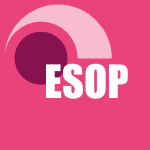 ESOP-1986-Stark #proving #specification
ESOP-1986-Stark #proving #specification- Proving Entailment Between Conceptual State Specifications (EWS), pp. 197–209.
 STOC-1986-BlumerEHW #geometry
STOC-1986-BlumerEHW #geometry- Classifying Learnable Geometric Concepts with the Vapnik-Chervonenkis Dimension (AB, AE, DH, MKW), pp. 273–282.
 PODS-1985-AusielloDM #graph #modelling #semantics
PODS-1985-AusielloDM #graph #modelling #semantics- Chordality Properties on Graphs and Minimal Conceptual Connections in Semantic Data Models (GA, AD, MM), pp. 164–170.
 SIGMOD-1985-BatoryK #modelling
SIGMOD-1985-BatoryK #modelling- Modeling Concepts for VLSI CAD Objects (DSB, WK), p. 446.
 VLDB-1985-BarbicR #documentation #retrieval
VLDB-1985-BarbicR #documentation #retrieval- The Type Concept in Office Document Retrieval (FB, FR), pp. 34–48.
 VLDB-1985-RamakrishnanS #database #design #diagrams
VLDB-1985-RamakrishnanS #database #design #diagrams- The MR Diagram — A Model for Conceptual Database Design (RR, AS), pp. 376–393.
 SIGIR-1985-CanasSC #documentation #how #people
SIGIR-1985-CanasSC #documentation #how #people- A Conceptual Model aod Experiments on How People Classify and Retrieve Documents (AJC, FRS, DWC), pp. 282–287.
 SIGIR-1985-CanO #clustering
SIGIR-1985-CanO #clustering- Concepts of the Cover-Coefficient-Based Clustering Methodology (FC, EAO), pp. 204–211.
 PODS-1984-Batory #database
PODS-1984-Batory #database- Conceptual-To-Internal Mappings in Commercial Database Systems (DSB), pp. 70–78.
 ICSE-1984-Studer #modelling
ICSE-1984-Studer #modelling- Abstract Models of Dialogue Concepts (RS), pp. 420–429.
 SLP-1984-SubrahmanyamY84 #evaluation #functional #logic programming
SLP-1984-SubrahmanyamY84 #evaluation #functional #logic programming- Conceptual Basis and Evaluation Strategies for Integrating Functional and Logic Programming (PAS, JHY), pp. 144–153.
 VLDB-1983-AlbanoCOO #composition #modelling
VLDB-1983-AlbanoCOO #composition #modelling- A Modularization Mechanism for Conceptual Modeling (AA, MC, MEO, RO), pp. 232–240.
 VLDB-1983-IbarakiKM
VLDB-1983-IbarakiKM - Disjoint-Interval Topological Sort: A Useful Concept in Serializability Theory (TI, TK, TM), pp. 89–91.
 VLDB-1983-KlopproggeL #database #modelling
VLDB-1983-KlopproggeL #database #modelling- Modelling Information Preserving Databases: Consequences of the Concept of Time (MRK, PCL), pp. 399–416.
 VLDB-1983-MeierL #database
VLDB-1983-MeierL #database- A Surrogate Concept for Engineering Databases (AM, RAL), pp. 30–32.
 DAC-1983-BatiniC #database #design #visual notation
DAC-1983-BatiniC #database #design #visual notation- A graphical tool for conceptual design of data base applications (CB, CC), pp. 762–773.
 DAC-1983-KatzW
DAC-1983-KatzW - Chip assemblers: Concepts and capabilities (RHK, SW), pp. 25–30.
 SIGMOD-1982-KowarskiL #database #documentation
SIGMOD-1982-KowarskiL #database #documentation- The Document Concept in a Data Base (IK, ML), pp. 276–283.
 VLDB-1981-Gray #transaction
VLDB-1981-Gray #transaction- The Transaction Concept: Virtues and Limitations (JG), pp. 144–154.
 VLDB-1981-Muraszkiewicz #array #sorting
VLDB-1981-Muraszkiewicz #array #sorting- Concepts of Sorting and Projection in a Cellular Array (MM), pp. 76–80.
 VLDB-1981-Sakai #design #transaction
VLDB-1981-Sakai #design #transaction- A Method for Defining Information Structures and Transactions in Conceptual Schema Design (HS), pp. 225–234.
 SIGIR-1981-Shoval #network #retrieval #semantics
SIGIR-1981-Shoval #network #retrieval #semantics- Expert/Consultation System for a Retrieval Data-Base with Semantic Network of Concepts (PS), pp. 145–149.
 DAC-1981-BatiniL #database #design #interactive #named
DAC-1981-BatiniL #database #design #interactive #named- INCOD: A system for Interactive Conceptual Data Base Design (CB, ML), pp. 546–554.
 SIGMOD-1980-Sakai #approach #design
SIGMOD-1980-Sakai #approach #design- Entity-Relationship Approach to the Conceptual Schema Design (HS), pp. 1–8.
 VLDB-1980-Brodie #abstraction #database #modelling
VLDB-1980-Brodie #abstraction #database #modelling- Data Abstraction, Databases and Conceptual Modelling (MLB), pp. 105–108.
 VLDB-1980-Kent
VLDB-1980-Kent - Splitting the Conceptual Schema (WK), pp. 10–14.
 VLDB-1980-Wilson #semantics
VLDB-1980-Wilson #semantics- A Conceptual Model for Semantic Integrity Checking (GAW), pp. 111–125.
 ICALP-1980-EhrigKP #algebra #correctness #data type #implementation #semantics #syntax
ICALP-1980-EhrigKP #algebra #correctness #data type #implementation #semantics #syntax- Algebraic Implementation of Abstract Data Types: Concept, Syntax, Semantics and Correctness (HE, HJK, PP), pp. 142–156.
 SIGIR-1980-Koll #design #information retrieval
SIGIR-1980-Koll #design #information retrieval- Information Retrieval Theory and Design Based on a Model of the User’s Concept Relations (MBK), pp. 77–93.
 SIGIR-1980-SchankKD #information retrieval
SIGIR-1980-SchankKD #information retrieval- Conceptual Information Retrieval (RCS, JLK, GD), pp. 94–116.
 VLDB-1979-Bubenko #comprehension #design #modelling #on the
VLDB-1979-Bubenko #comprehension #design #modelling #on the- On the Role of “Understanding Models” in Conceptual Schema Design (JABJ), pp. 129–139.
 VLDB-1979-OrenA #database #design #logic #statistics
VLDB-1979-OrenA #database #design #logic #statistics- Statistice for the Usage of a Conceptual Data Model as a Basis for Logical Data Base Design (OO, FA), pp. 140–145.
 DAC-1979-Chu #design
DAC-1979-Chu #design- Concepts of a microcomputer design language (YC), pp. 45–52.
 SIGMOD-1978-Olle
SIGMOD-1978-Olle - The Conceptual Schema Controversy (TWO), p. 88.
 VLDB-1978-FoucautR #design #information management
VLDB-1978-FoucautR #design #information management- Concepts for Design of an Information System Conceptual Schema and its Utilization in the REMORA Project (OF, CR), pp. 342–350.
 VLDB-1978-Gerritsen
VLDB-1978-Gerritsen - Conceptual and Internal Schemas in CODASYL (RG), p. 131.
 GG-1978-Sowa #graph
GG-1978-Sowa #graph- Definitional Mechanisms for Conceptual Graphs (JFS), pp. 426–439.
 SIGIR-1978-Koll1 #approach #information retrieval #named
SIGIR-1978-Koll1 #approach #information retrieval #named- WEIRD: An Approach to Concept-Based Information Retrieval (MBK), p. 1.
 SIGIR-1978-Koll2 #approach #information retrieval #named
SIGIR-1978-Koll2 #approach #information retrieval #named- WEIRD: An Approach to Concept-Based Information Retrieval (MBK), p. 180.
 DAC-1978-DavidV #design #named
DAC-1978-DavidV #design #named- SIGMA-CAD: Some new concepts in design of general purpose CAD systems (BTD, GV), pp. 321–325.
 SIGMOD-1977-Bubenko #approach #design #modelling #named
SIGMOD-1977-Bubenko #approach #design #modelling #named- IAM: An Inferential Abstract Modeling Approach to Design of Conceptual Schema (JABJ), pp. 62–74.
 SIGMOD-1977-Scheuermann #database #simulation
SIGMOD-1977-Scheuermann #database #simulation- Concepts of a Data Base Simulation Language (PS), pp. 144–156.
 VLDB-1977-BachmanD #modelling
VLDB-1977-BachmanD #modelling- The Role Concept in Data Models (CWB, MD), pp. 464–476.
 VLDB-1977-HakozakiMMUH #database #design
VLDB-1977-HakozakiMMUH #database #design- A Conceptual Design of a Generalized Database Subsystem (KH, TM, MM, MU, SH), pp. 246–253.
 DAC-1977-Rammig #automation #editing #hardware
DAC-1977-Rammig #automation #editing #hardware- A concept for the editing of hardware resulting in an automatic hardware-editor (FJR), pp. 187–193.
 VLDB-1976-Kent
VLDB-1976-Kent - New Criteria for the Conceptual Model (WK), pp. 1–12.
 VLDB-1976-Meltzer #database #scalability
VLDB-1976-Meltzer #database #scalability- Structure and Redundancy in the Conceptual Schema in the Administration of Very Large Data Bases (HSM), pp. 13–25.
 DAC-1976-CiampiN #database
DAC-1976-CiampiN #database- Concepts in CAD data base structures (PLC, JDN), pp. 290–294.
 DAC-1976-PaulT #evaluation #fault tolerance #named #simulation
DAC-1976-PaulT #evaluation #fault tolerance #named #simulation- SEGMA — A simulation package for conception aid and fault tolerance evaluation of computing systems (JLP, RT), pp. 278–284.
 VLDB-1975-Tsichritzis
VLDB-1975-Tsichritzis - Features of a Conceptual Schema (DT), pp. 532–534.
 STOC-1975-EgliC #programming language #semantics
STOC-1975-EgliC #programming language #semantics- Computability Concepts for Programming Language Semantics (HE, RLC), pp. 98–106.
 DAC-1974-BreuerF #automation #design
DAC-1974-BreuerF #automation #design- Initial design concepts for an advanced design automation system (MAB, ADF), pp. 366–371.
 SIGFIDET-1972-AstrahanAFS #independence
SIGFIDET-1972-AstrahanAFS #independence- Concepts of a Data Independent Accessing Model (MMA, EBA, PLF, MES), pp. 349–362.
 SIGFIDET-1972-PlagmanA #database
SIGFIDET-1972-PlagmanA #database- An Integrated Corporate Data Base Concept and Its Application (BKP, GA), pp. 395–420.
 SIGFIDET-1972-Raichelson #information management
SIGFIDET-1972-Raichelson #information management- A Concept Paper on “Host” vs. “Own” Data Manipulation Languages in Military Information Systems (ER), pp. 67–75.
 DAC-1972-Albert #automation #design
DAC-1972-Albert #automation #design- Concept communications with design automation systems (DJA), pp. 11–14.
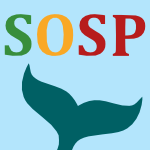 SOSP-J-1973-Gaines72 #operating system
SOSP-J-1973-Gaines72 #operating system- An Operating System Based on the Concept of a Supervisory Computer (RSG), pp. 150–156.
 SOSP-1971-Gaines #operating system
SOSP-1971-Gaines #operating system- An Operating System Based on the Concept of a Supervisory Computer (RSG), pp. 17–23.
 SHARE-1966-LyonsM #automation #design
SHARE-1966-LyonsM #automation #design- Concepts of building a design automation system (DL, MM).
 EDM-2019-AiCGZWFW #learning #online #recommendation
EDM-2019-AiCGZWFW #learning #online #recommendation EDM-2019-KolbFP
EDM-2019-KolbFP  EDM-2019-LiangYZPG #case study #learning #partial order #strict
EDM-2019-LiangYZPG #case study #learning #partial order #strict EDM-2019-Venantd #complexity #graph #predict #semantics #towards
EDM-2019-Venantd #complexity #graph #predict #semantics #towards EDM-2019-WileyBPL
EDM-2019-WileyBPL  EDM-2019-WileyBPL19a
EDM-2019-WileyBPL19a  MSR-2019-LeSB #assessment #automation
MSR-2019-LeSB #assessment #automation FM-2019-Eschbach #data analysis #industrial #monitoring
FM-2019-Eschbach #data analysis #industrial #monitoring CoG-2019-NygrenD #case study #game studies #self #using
CoG-2019-NygrenD #case study #game studies #self #using FDG-2019-JemmaliKBARE #design #game studies #learning #programming #using
FDG-2019-JemmaliKBARE #design #game studies #learning #programming #using FDG-2019-ZhuAFNCSVO #education #game studies #how #parallel #programming
FDG-2019-ZhuAFNCSVO #education #game studies #how #parallel #programming VS-Games-2019-Gabriel #design #game studies #using
VS-Games-2019-Gabriel #design #game studies #using CIKM-2019-GozuacikBBC #classification #detection
CIKM-2019-GozuacikBBC #classification #detection CIKM-2019-LuoYZGY #e-commerce
CIKM-2019-LuoYZGY #e-commerce CIKM-2019-TianKA0C #adaptation #detection #health #monitoring #online
CIKM-2019-TianKA0C #adaptation #detection #health #monitoring #online ICML-2019-KaplanMMS #geometry #learning
ICML-2019-KaplanMMS #geometry #learning KDD-2019-HaoCYSW #knowledge base #learning #ontology #representation
KDD-2019-HaoCYSW #knowledge base #learning #ontology #representation KDD-2019-JhaXWZ #co-evolution #generative
KDD-2019-JhaXWZ #co-evolution #generative KDD-2019-LiuGNWXLLX #comprehension #documentation #mining #query
KDD-2019-LiuGNWXLLX #comprehension #documentation #mining #query Onward-2019-Rosso0ALM #assembly #declarative #web
Onward-2019-Rosso0ALM #assembly #declarative #web ESEC-FSE-2019-WidderHKV #integration #replication
ESEC-FSE-2019-WidderHKV #integration #replication EDM-2018-AlsaadBGSZ #dependence #graph #mining
EDM-2018-AlsaadBGSZ #dependence #graph #mining EDM-2018-Perez-LemoncheD #mining #student
EDM-2018-Perez-LemoncheD #mining #student ICSME-2018-WangK #debugging #open source #replication
ICSME-2018-WangK #debugging #open source #replication AIIDE-2018-GuzdialR #automation #design #game studies
AIIDE-2018-GuzdialR #automation #design #game studies DiGRA-2018-BoonenCISN #game studies
DiGRA-2018-BoonenCISN #game studies DiGRA-2018-FerriHHS #design #game studies
DiGRA-2018-FerriHHS #design #game studies ECIR-2018-Abdulahhad #information retrieval
ECIR-2018-Abdulahhad #information retrieval ICML-2018-KimWGCWVS #testing
ICML-2018-KimWGCWVS #testing ICPR-2018-RosenfeldU #classification
ICPR-2018-RosenfeldU #classification KDD-2018-JhaXWGZ #evolution #named
KDD-2018-JhaXWGZ #evolution #named ESEC-FSE-2018-Meijer #framework #learning #programming language
ESEC-FSE-2018-Meijer #framework #learning #programming language CASE-2018-HuaH #induction #learning #logic programming #semantics
CASE-2018-HuaH #induction #learning #logic programming #semantics CASE-2018-WangKZY #data type #detection #learning #multi
CASE-2018-WangKZY #data type #detection #learning #multi CSL-2018-GradelH #dependence #equivalence
CSL-2018-GradelH #dependence #equivalence CSEET-2017-DaunBOPMSR #education #feedback #modelling #online
CSEET-2017-DaunBOPMSR #education #feedback #modelling #online EDM-2017-MichalenkoLWGB
EDM-2017-MichalenkoLWGB  MSR-2017-Patil #classification #fault
MSR-2017-Patil #classification #fault SANER-2017-RahmanR #identification #information retrieval #named #strict
SANER-2017-RahmanR #identification #information retrieval #named #strict AFL-2017-NagyPS #automaton
AFL-2017-NagyPS #automaton CIKM-2017-Duong-TrungS #documentation #on the #topic
CIKM-2017-Duong-TrungS #documentation #on the #topic CIKM-2017-KrishnanSZ0 #categorisation #documentation
CIKM-2017-KrishnanSZ0 #categorisation #documentation CIKM-2017-OsickaT #composition #matrix
CIKM-2017-OsickaT #composition #matrix KDD-2017-LiHG #enterprise #spreadsheet #using
KDD-2017-LiHG #enterprise #spreadsheet #using ASE-2017-LinZZX #retrieval #source code #using
ASE-2017-LinZZX #retrieval #source code #using ASE-2017-RahmanR #documentation #query #using
ASE-2017-RahmanR #documentation #query #using CASE-2017-WakabayashiKKK #named #process
CASE-2017-WakabayashiKKK #named #process ECSA-2016-AbukwaikAR #analysis #api #automation #constraints #documentation #identification #towards
ECSA-2016-AbukwaikAR #analysis #api #automation #constraints #documentation #identification #towards CSEET-2016-WeiDCS #education #framework #graph #modelling #requirements #uml
CSEET-2016-WeiDCS #education #framework #graph #modelling #requirements #uml EDM-2016-JiangLZL #generative #semantics
EDM-2016-JiangLZL #generative #semantics EDM-2016-Rau #learning #mining #physics #social
EDM-2016-Rau #learning #mining #physics #social EDM-2016-Wang #design #interactive #learning #personalisation
EDM-2016-Wang #design #interactive #learning #personalisation EDM-2016-ZhengKTG #clustering #physics #using
EDM-2016-ZhengKTG #clustering #physics #using ICSME-2016-StanciulescuBWW
ICSME-2016-StanciulescuBWW  SANER-2016-FontanaDWYZ #classification #smell
SANER-2016-FontanaDWYZ #classification #smell SCAM-2016-LossingGI #c #compilation #dependence #graph #text-to-text
SCAM-2016-LossingGI #c #compilation #dependence #graph #text-to-text CIKM-2016-Balaneshinkordan #graph #query #using
CIKM-2016-Balaneshinkordan #graph #query #using CIKM-2016-PiaoB #modelling #personalisation #recommendation #twitter
CIKM-2016-PiaoB #modelling #personalisation #recommendation #twitter CIKM-2016-TutekGSMB #detection #knowledge base #ranking #using
CIKM-2016-TutekGSMB #detection #knowledge base #ranking #using CIKM-2016-WangOWWLPG #using
CIKM-2016-WangOWWLPG #using ECIR-2016-TamineS #collaboration #evaluation #information retrieval #modelling
ECIR-2016-TamineS #collaboration #evaluation #information retrieval #modelling ICPR-2016-KaremF #learning #multi
ICPR-2016-KaremF #learning #multi KDD-2016-ChoiBSCTBTS #learning #multi #representation
KDD-2016-ChoiBSCTBTS #learning #multi #representation SKY-2016-Exman #composition #matrix
SKY-2016-Exman #composition #matrix SKY-2016-Exman16a #overview #perspective
SKY-2016-Exman16a #overview #perspective SKY-2016-ExmanK #analysis #named
SKY-2016-ExmanK #analysis #named SKY-2016-Martins #assessment #modelling #quality
SKY-2016-Martins #assessment #modelling #quality SKY-2016-Speicher
SKY-2016-Speicher  ECMFA-2016-ZhangSAYON #comprehension #cyber-physical #nondeterminism
ECMFA-2016-ZhangSAYON #comprehension #cyber-physical #nondeterminism MoDELS-2016-Kuhne #modelling #ontology #towards
MoDELS-2016-Kuhne #modelling #ontology #towards OOPSLA-2016-RossoJ #git
OOPSLA-2016-RossoJ #git ASE-2016-RahmanR #automation #crowdsourcing #named #query #using
ASE-2016-RahmanR #automation #crowdsourcing #named #query #using CASE-2016-StenzelL #distributed #mobile
CASE-2016-StenzelL #distributed #mobile WICSA-2015-AbukwaikNR #analysis
WICSA-2015-AbukwaikNR #analysis WICSA-2015-BarnettVT #architecture #mobile
WICSA-2015-BarnettVT #architecture #mobile DocEng-2015-WangLWWPBSWBG
DocEng-2015-WangLWWPBSWBG  DRR-2015-LamiroyBBCGHL #documentation #parametricity
DRR-2015-LamiroyBBCGHL #documentation #parametricity HT-2015-AhlersM #challenge #collaboration #network #semantics
HT-2015-AhlersM #challenge #collaboration #network #semantics VLDB-2015-SeahBS #image #named #social #summary
VLDB-2015-SeahBS #image #named #social #summary EDM-2015-BoseDB
EDM-2015-BoseDB  EDM-2015-BumbacherSWB #behaviour #comprehension #development #how #learning #physics
EDM-2015-BumbacherSWB #behaviour #comprehension #development #how #learning #physics ITiCSE-2015-AtapattuFF #adaptation #online
ITiCSE-2015-AtapattuFF #adaptation #online ITiCSE-2015-MartinezGB #comparison #framework #learning #multi #platform #programming
ITiCSE-2015-MartinezGB #comparison #framework #learning #multi #platform #programming SANER-2015-NagyMC #approach #query #sql
SANER-2015-NagyMC #approach #query #sql FM-2015-SchutsH #development #formal method
FM-2015-SchutsH #development #formal method CHI-PLAY-2015-ZendleCK #game studies #video #visual notation
CHI-PLAY-2015-ZendleCK #game studies #video #visual notation DiGRA-2015-Friman #game studies #gender #research
DiGRA-2015-Friman #game studies #gender #research FDG-2015-ChauNSP #api #education #game studies #programming
FDG-2015-ChauNSP #api #education #game studies #programming FDG-2015-TanenbaumT15a #future of #game studies #modelling #smarttech
FDG-2015-TanenbaumT15a #future of #game studies #modelling #smarttech CHI-2015-Baumer #design
CHI-2015-Baumer #design CHI-2015-CartwrightP #named #sketching
CHI-2015-CartwrightP #named #sketching CHI-2015-MayerHJ #challenge #design #social
CHI-2015-MayerHJ #challenge #design #social CHI-2015-VigoJS #authoring #ontology #process
CHI-2015-VigoJS #authoring #ontology #process CSCW-2015-LeeP #coordination #framework #matrix
CSCW-2015-LeeP #coordination #framework #matrix DUXU-DD-2015-HakkilaCIAR
DUXU-DD-2015-HakkilaCIAR  DUXU-IXD-2015-Ovesleova #adaptation #motivation #online #platform #student #user interface
DUXU-IXD-2015-Ovesleova #adaptation #motivation #online #platform #student #user interface DUXU-UI-2015-AmaralBBM #human-computer #women
DUXU-UI-2015-AmaralBBM #human-computer #women HCI-DE-2015-BoscarioliBSB #challenge #education #how #human-computer #industrial
HCI-DE-2015-BoscarioliBSB #challenge #education #how #human-computer #industrial HCI-DE-2015-StopkaPF #requirements
HCI-DE-2015-StopkaPF #requirements HCI-IT-2015-ZhaoH #game studies #online
HCI-IT-2015-ZhaoH #game studies #online HCI-UC-2015-GandyBLLMCS
HCI-UC-2015-GandyBLLMCS  HCI-UC-2015-ZhaoH15a #assessment #enterprise
HCI-UC-2015-ZhaoH15a #assessment #enterprise HIMI-IKC-2015-HayashiH #analysis #learning #process
HIMI-IKC-2015-HayashiH #analysis #learning #process HIMI-IKC-2015-HoriguchiTH #comprehension #physics #problem #sequence #student
HIMI-IKC-2015-HoriguchiTH #comprehension #physics #problem #sequence #student HIMI-IKC-2015-SouzaBSBCA #framework
HIMI-IKC-2015-SouzaBSBCA #framework HIMI-IKD-2015-KaoW #interface #web
HIMI-IKD-2015-KaoW #interface #web HIMI-IKD-2015-ProssHTH #interactive #visualisation
HIMI-IKD-2015-ProssHTH #interactive #visualisation LCT-2015-Alvarez-Montero #feedback #overview #perspective #tool support
LCT-2015-Alvarez-Montero #feedback #overview #perspective #tool support LCT-2015-KlockCCRAG #adaptation #gamification #student
LCT-2015-KlockCCRAG #adaptation #gamification #student ICEIS-v1-2015-KnoblauchB #framework
ICEIS-v1-2015-KnoblauchB #framework ICEIS-v1-2015-Roos-FrantzBFSF #integration #modelling #petri net #simulation #using
ICEIS-v1-2015-Roos-FrantzBFSF #integration #modelling #petri net #simulation #using ICEIS-v1-2015-YanguiNG #design #multi #network #social #towards
ICEIS-v1-2015-YanguiNG #design #multi #network #social #towards ICEIS-v2-2015-CuencaBBT #case study #development #framework #multi
ICEIS-v2-2015-CuencaBBT #case study #development #framework #multi CIKM-2015-WangA #information retrieval #modelling #semantics
CIKM-2015-WangA #information retrieval #modelling #semantics ECIR-2015-SaracIGD #classification #flexibility #framework #named
ECIR-2015-SaracIGD #classification #flexibility #framework #named SIGIR-2015-ParkC #retrieval #using
SIGIR-2015-ParkC #retrieval #using SKY-2015-Exman #composition #design #matrix
SKY-2015-Exman #composition #design #matrix SKY-2015-ExmanS #game studies
SKY-2015-ExmanS #game studies ICMT-2015-HilkenNGW #modelling #ocl #uml #validation #verification
ICMT-2015-HilkenNGW #modelling #ocl #uml #validation #verification SPLC-2015-FontAHC #product line
SPLC-2015-FontAHC #product line Onward-2015-Jackson #design #formal method #towards
Onward-2015-Jackson #design #formal method #towards AdaEurope-2015-PerezGTT #clustering #manycore #safety
AdaEurope-2015-PerezGTT #clustering #manycore #safety ASE-2015-Greene #framework #re-engineering
ASE-2015-Greene #framework #re-engineering ESEC-FSE-2015-JohnsonPMH #adaptation #developer #tool support
ESEC-FSE-2015-JohnsonPMH #adaptation #developer #tool support ICSE-v2-2015-AnvariRHB #design #effectiveness
ICSE-v2-2015-AnvariRHB #design #effectiveness SAC-2015-NwokejiCBK #enterprise #framework
SAC-2015-NwokejiCBK #enterprise #framework SAC-2015-StracciaM #estimation #fuzzy #learning #named #owl #probability #using
SAC-2015-StracciaM #estimation #fuzzy #learning #named #owl #probability #using SAC-2015-ZhangYLC #debugging #mining #predict #repository
SAC-2015-ZhangYLC #debugging #mining #predict #repository DAC-2015-MiuraFNHHA
DAC-2015-MiuraFNHHA  DATE-2015-KanounS #big data #data type #detection #learning #online #scheduling #streaming
DATE-2015-KanounS #big data #data type #detection #learning #online #scheduling #streaming DATE-2015-ShulakerWSWWM #3d #integration
DATE-2015-ShulakerWSWWM #3d #integration TACAS-2015-KumarSK #scalability #slicing
TACAS-2015-KumarSK #scalability #slicing CADE-2015-AlamaOZ #automation
CADE-2015-AlamaOZ #automation ICST-2015-AlegrothGOM #component #empirical #evaluation #testing #user interface #visual notation
ICST-2015-AlegrothGOM #component #empirical #evaluation #testing #user interface #visual notation DocEng-2014-NourashrafeddinMA #approach #clustering #documentation #using #wiki
DocEng-2014-NourashrafeddinMA #approach #clustering #documentation #using #wiki JCDL-2014-GonanoTMVP #formal method #linked data #open data
JCDL-2014-GonanoTMVP #formal method #linked data #open data JCDL-2014-SultanBS #automation #education #identification #towards
JCDL-2014-SultanBS #automation #education #identification #towards SIGMOD-2014-TermehchyVCW #question
SIGMOD-2014-TermehchyVCW #question ITiCSE-2014-FeasterAZH #education
ITiCSE-2014-FeasterAZH #education ITiCSE-2014-Hidalgo-CespedesRL #design #game studies #learning #programming #video
ITiCSE-2014-Hidalgo-CespedesRL #design #game studies #learning #programming #video ITiCSE-2014-MagnenatSRSB #education
ITiCSE-2014-MagnenatSRSB #education ITiCSE-2014-PorterTW #development #flexibility #open source
ITiCSE-2014-PorterTW #development #flexibility #open source ITiCSE-2014-TedreBMC #classification #education #identification #towards
ITiCSE-2014-TedreBMC #classification #education #identification #towards ITiCSE-2014-Tirronen #case study #type system
ITiCSE-2014-Tirronen #case study #type system SIGITE-2014-Kussmaul #process #student
SIGITE-2014-Kussmaul #process #student SFM-2014-AlbertAGR #concurrent #execution #generative #symbolic computation #testing
SFM-2014-AlbertAGR #concurrent #execution #generative #symbolic computation #testing CHI-PLAY-2014-ApkenHM #ad hoc #game studies
CHI-PLAY-2014-ApkenHM #ad hoc #game studies CHI-PLAY-2014-ChenBRGM #education #float #interactive #simulation
CHI-PLAY-2014-ChenBRGM #education #float #interactive #simulation DiGRA-2014-OlssonBD #comprehension #design #game studies
DiGRA-2014-OlssonBD #comprehension #design #game studies CHI-2014-BetzW #communication #named
CHI-2014-BetzW #communication #named CHI-2014-DalsgardD #human-computer #research #theory and practice
CHI-2014-DalsgardD #human-computer #research #theory and practice CHI-2014-KuleszaACFC #evolution #machine learning
CHI-2014-KuleszaACFC #evolution #machine learning CHI-2014-LieberBM #programming #visualisation
CHI-2014-LieberBM #programming #visualisation CHI-2014-NancelC #interactive #named
CHI-2014-NancelC #interactive #named DHM-2014-GoreW #process
DHM-2014-GoreW #process DUXU-DI-2014-MushtahaT #design #locality
DUXU-DI-2014-MushtahaT #design #locality DUXU-DP-2014-SilvaPS #analysis #using
DUXU-DP-2014-SilvaPS #analysis #using HCI-AIMT-2014-MeyerBDS #development #human-computer #information management #interactive
HCI-AIMT-2014-MeyerBDS #development #human-computer #information management #interactive HCI-AIMT-2014-RederMFK #arduino #human-computer #interactive #interface #proving
HCI-AIMT-2014-RederMFK #arduino #human-computer #interactive #interface #proving HCI-TMT-2014-PereiraB #comprehension #design
HCI-TMT-2014-PereiraB #comprehension #design HIMI-AS-2014-HaysahiH #collaboration
HIMI-AS-2014-HaysahiH #collaboration HIMI-AS-2014-KhaoulaOSO
HIMI-AS-2014-KhaoulaOSO  HIMI-AS-2014-SeigerSMS #cyber-physical #interactive #process
HIMI-AS-2014-SeigerSMS #cyber-physical #interactive #process HIMI-DE-2014-ZimmerKS #mobile #visualisation
HIMI-DE-2014-ZimmerKS #mobile #visualisation LCT-NLE-2014-YusoffS #framework #overview #tool support
LCT-NLE-2014-YusoffS #framework #overview #tool support CAiSE-2014-EngelsmanW #architecture #enterprise #requirements
CAiSE-2014-EngelsmanW #architecture #enterprise #requirements CAiSE-2014-NeumayrJSS #implementation
CAiSE-2014-NeumayrJSS #implementation ICEIS-v1-2014-Olive #agile #development #information management #modelling
ICEIS-v1-2014-Olive #agile #development #information management #modelling ICEIS-v1-2014-SoaresA #information management
ICEIS-v1-2014-SoaresA #information management ICEIS-v2-2014-FonsecaC #reuse #using
ICEIS-v2-2014-FonsecaC #reuse #using ICEIS-v3-2014-RohlfsGP #architecture #comprehension #enterprise
ICEIS-v3-2014-RohlfsGP #architecture #comprehension #enterprise ICEIS-v3-2014-WissotzkiK #architecture #enterprise #evaluation
ICEIS-v3-2014-WissotzkiK #architecture #enterprise #evaluation CIKM-2014-AgrawalGKK #graph #similarity #using
CIKM-2014-AgrawalGKK #graph #similarity #using CIKM-2014-WangWLW #classification #ranking
CIKM-2014-WangWLW #classification #ranking ECIR-2014-GrausTBR #generative #predict #pseudo #social
ECIR-2014-GrausTBR #generative #predict #pseudo #social ICML-c2-2014-HarelMEC #detection
ICML-c2-2014-HarelMEC #detection KDD-2014-ShaoAK #data type #learning #prototype
KDD-2014-ShaoAK #data type #learning #prototype KDIR-2014-AlahmadiJM #classification #representation #using
KDIR-2014-AlahmadiJM #classification #representation #using KEOD-2014-ChamekhTB #multi #ontology
KEOD-2014-ChamekhTB #multi #ontology KEOD-2014-Grabska #approach #ontology #process
KEOD-2014-Grabska #approach #ontology #process KEOD-2014-KarkalasS #learning #modelling #student
KEOD-2014-KarkalasS #learning #modelling #student KMIS-2014-ThomasN #process
KMIS-2014-ThomasN #process KMIS-2014-Wagner #memory management
KMIS-2014-Wagner #memory management KR-2014-DistelAB #difference
KR-2014-DistelAB #difference KR-2014-EckePT #query #similarity
KR-2014-EckePT #query #similarity KR-2014-Morgenstern #reasoning #representation
KR-2014-Morgenstern #reasoning #representation MLDM-2014-WaiyamaiKSR #classification #data type #named
MLDM-2014-WaiyamaiKSR #classification #data type #named SEKE-2014-DaubalDDA
SEKE-2014-DaubalDDA  SIGIR-2014-SeahBS #image #named #social #summary
SIGIR-2014-SeahBS #image #named #social #summary PPDP-2014-Karczmarczuk #declarative #on the #quantum
PPDP-2014-Karczmarczuk #declarative #on the #quantum ASE-2014-Kleffmann #design #evaluation #interactive #named
ASE-2014-Kleffmann #design #evaluation #interactive #named FSE-2014-GreeneF #named
FSE-2014-GreeneF #named SAC-2014-BarddalGE #classification #named #network #social
SAC-2014-BarddalGE #classification #named #network #social SAC-2014-EngielCL #approach #elicitation #using
SAC-2014-EngielCL #approach #elicitation #using SLE-J-2012-GuizzardiZ #modelling #ontology #using
SLE-J-2012-GuizzardiZ #modelling #ontology #using DAC-2014-ShankarSWP #analysis #design #specification
DAC-2014-ShankarSWP #analysis #design #specification PDP-2014-TradowskyGBSMB #adaptation #locality #named #power management
PDP-2014-TradowskyGBSMB #adaptation #locality #named #power management DocEng-2013-YelogluMZ #clustering #documentation #wiki
DocEng-2013-YelogluMZ #clustering #documentation #wiki TPDL-2013-Chowdhury #library
TPDL-2013-Chowdhury #library VLDB-2013-DengJLLY #knowledge base #scalability #using #web
VLDB-2013-DengJLLY #knowledge base #scalability #using #web ITiCSE-2013-BeltranGP #architecture #in the cloud #using
ITiCSE-2013-BeltranGP #architecture #in the cloud #using ITiCSE-2013-BergesH #game studies #specification
ITiCSE-2013-BergesH #game studies #specification ITiCSE-2013-Gordon #mobile #programming
ITiCSE-2013-Gordon #mobile #programming ITiCSE-2013-PorterGTZ #architecture #comprehension #student
ITiCSE-2013-PorterGTZ #architecture #comprehension #student ITiCSE-2013-Rodriguez-CerezoGS #compilation #comprehension #education #interactive #simulation
ITiCSE-2013-Rodriguez-CerezoGS #compilation #comprehension #education #interactive #simulation ITiCSE-2013-SabitzerS #education #programming
ITiCSE-2013-SabitzerS #education #programming ITiCSE-2013-Trakhtenbrot #algorithm #analysis #complexity #problem #student
ITiCSE-2013-Trakhtenbrot #algorithm #analysis #complexity #problem #student SIGITE-2013-HelpsP #cyber-physical #student
SIGITE-2013-HelpsP #cyber-physical #student CIAA-2013-DemailleDLS #implementation
CIAA-2013-DemailleDLS #implementation DiGRA-2013-Conde-Pumpido #case study #game studies #persuasion
DiGRA-2013-Conde-Pumpido #case study #game studies #persuasion FDG-2013-Karhulahti #framework #game studies
FDG-2013-Karhulahti #framework #game studies FDG-2013-VoulgariK
FDG-2013-VoulgariK  CHI-2013-Feinberg13a #human-computer #physics
CHI-2013-Feinberg13a #human-computer #physics DUXU-PMT-2013-LuhCK #design #development #process
DUXU-PMT-2013-LuhCK #design #development #process DUXU-WM-2013-GotzeCKSB #evaluation
DUXU-WM-2013-GotzeCKSB #evaluation DUXU-WM-2013-InoueHSAFY #design #interface #process
DUXU-WM-2013-InoueHSAFY #design #interface #process DUXU-WM-2013-SchneidermeierMS #approach #communication
DUXU-WM-2013-SchneidermeierMS #approach #communication HCI-AMTE-2013-Kurosu #experience
HCI-AMTE-2013-Kurosu #experience HCI-AS-2013-KalwarHP #internet #named
HCI-AS-2013-KalwarHP #internet #named HCI-AS-2013-SanchezE #design #game studies
HCI-AS-2013-SanchezE #design #game studies HCI-III-2013-BlezingerSH #human-computer
HCI-III-2013-BlezingerSH #human-computer HCI-III-2013-FunkeBKS #interactive #ontology
HCI-III-2013-FunkeBKS #interactive #ontology HCI-IMT-2013-KuhnLS #interactive #mobile
HCI-IMT-2013-KuhnLS #interactive #mobile HCI-IMT-2013-OblaenderE #3d #interactive
HCI-IMT-2013-OblaenderE #3d #interactive HCI-UC-2013-HermannSTKS #distributed #multi #network #social #user interface
HCI-UC-2013-HermannSTKS #distributed #multi #network #social #user interface HIMI-D-2013-LiaoLH #modelling #ontology #perspective #security #towards
HIMI-D-2013-LiaoLH #modelling #ontology #perspective #security #towards HIMI-LCCB-2013-YoshidaOSNSH #assessment #comprehension #using
HIMI-LCCB-2013-YoshidaOSNSH #assessment #comprehension #using CAiSE-2013-AguileraGO #development #ide #quality
CAiSE-2013-AguileraGO #development #ide #quality EDOC-2013-BraunE #network #online #overview #risk management #social #towards
EDOC-2013-BraunE #network #online #overview #risk management #social #towards ICEIS-v1-2013-FominaEV #induction #modelling
ICEIS-v1-2013-FominaEV #induction #modelling ICEIS-v1-2013-KozminaNG #requirements
ICEIS-v1-2013-KozminaNG #requirements ICEIS-v1-2013-LaurierP #representation
ICEIS-v1-2013-LaurierP #representation ICEIS-v2-2013-EldinMHZ #effectiveness #information management
ICEIS-v2-2013-EldinMHZ #effectiveness #information management ICEIS-v2-2013-KandjaniMAS #framework #information management
ICEIS-v2-2013-KandjaniMAS #framework #information management ICEIS-v2-2013-RibeiroSFO #constraints #ocl #validation
ICEIS-v2-2013-RibeiroSFO #constraints #ocl #validation ICEIS-v2-2013-TrindadeGG #collaboration #community #design #framework
ICEIS-v2-2013-TrindadeGG #collaboration #community #design #framework ICEIS-v3-2013-LambeckG #complexity #enterprise #scalability #user interface
ICEIS-v3-2013-LambeckG #complexity #enterprise #scalability #user interface ICEIS-v3-2013-MarciniakO #grid #usability
ICEIS-v3-2013-MarciniakO #grid #usability ECIR-2013-CarpinetoR #graph #query #semantics
ECIR-2013-CarpinetoR #graph #query #semantics ECIR-2013-PatilDV
ECIR-2013-PatilDV  KDD-2013-RautiainenSHYK #mining #online
KDD-2013-RautiainenSHYK #mining #online KDIR-KMIS-2013-Aveiro #case study #enterprise #ontology
KDIR-KMIS-2013-Aveiro #case study #enterprise #ontology KDIR-KMIS-2013-CostaS #assessment #enterprise #security #using
KDIR-KMIS-2013-CostaS #assessment #enterprise #security #using KDIR-KMIS-2013-LaneL #prototype
KDIR-KMIS-2013-LaneL #prototype KDIR-KMIS-2013-OliveiraCL #analysis
KDIR-KMIS-2013-OliveiraCL #analysis KEOD-2013-FrancescomarinoGK #modelling #ontology
KEOD-2013-FrancescomarinoGK #modelling #ontology KEOD-2013-Liang #collaboration #design #framework #ontology
KEOD-2013-Liang #collaboration #design #framework #ontology MLDM-2013-ZhaiHOHH
MLDM-2013-ZhaiHOHH  SEKE-2013-Alegroth #proving #random #testing #user interface #visual notation
SEKE-2013-Alegroth #proving #random #testing #user interface #visual notation SEKE-2013-ShahinLL #architecture #documentation #using
SEKE-2013-ShahinLL #architecture #documentation #using SIGIR-2013-MahdabiGHC #ambiguity #proximity #query #retrieval #using
SIGIR-2013-MahdabiGHC #ambiguity #proximity #query #retrieval #using MoDELS-2013-HamannG #metamodelling #semantics #uml
MoDELS-2013-HamannG #metamodelling #semantics #uml Onward-2013-RossoJ #analysis #design #git #what
Onward-2013-RossoJ #analysis #design #git #what HILT-2013-BolengS #architecture #implementation
HILT-2013-BolengS #architecture #implementation SAS-2013-0001GHAN #geometry #learning #verification
SAS-2013-0001GHAN #geometry #learning #verification ICSE-2013-Carvalho #comprehension #ontology #problem #tool support
ICSE-2013-Carvalho #comprehension #ontology #problem #tool support SAC-2013-BucchiaroneMMP #adaptation #framework
SAC-2013-BucchiaroneMMP #adaptation #framework SAC-2013-MeloAOAMB #analysis #approach #visual notation
SAC-2013-MeloAOAMB #analysis #approach #visual notation CASE-2013-RossanoMHMF #industrial #perspective #programming
CASE-2013-RossanoMHMF #industrial #perspective #programming DATE-2013-KappelHHHHH #energy #power management #self
DATE-2013-KappelHHHHH #energy #power management #self JCDL-2012-FosterSDOS #education #identification
JCDL-2012-FosterSDOS #education #identification JCDL-2012-Watrous-deVersterreWS
JCDL-2012-Watrous-deVersterreWS  CSEET-2012-BollinHS #education #experience #project management #simulation #using
CSEET-2012-BollinHS #education #experience #project management #simulation #using ITiCSE-2012-AsadB #aspect-oriented #image #learning
ITiCSE-2012-AsadB #aspect-oriented #image #learning ITiCSE-2012-MussaiL #animation #learning #object-oriented
ITiCSE-2012-MussaiL #animation #learning #object-oriented SIGITE-2012-EavesS #as a service #proving
SIGITE-2012-EavesS #as a service #proving CSMR-2012-OlszakJ #composition #how #legacy #question
CSMR-2012-OlszakJ #composition #how #legacy #question ICPC-2012-RajlichW #comprehension
ICPC-2012-RajlichW #comprehension ICSM-2012-BinkleyLU #normalisation
ICSM-2012-BinkleyLU #normalisation SCAM-2012-GethersAP #database #dependence #detection
SCAM-2012-GethersAP #database #dependence #detection ICGT-2012-Golas #modelling
ICGT-2012-Golas #modelling CHI-2012-VinesBLDMO #design
CHI-2012-VinesBLDMO #design CAiSE-2012-Guizzardi12a #modelling #ontology
CAiSE-2012-Guizzardi12a #modelling #ontology CAiSE-2012-Kabicher-FuchsR #experience #metric
CAiSE-2012-Kabicher-FuchsR #experience #metric ICEIS-J-2012-BonacinHRPB12a #aspect-oriented #collaboration #framework #problem #towards
ICEIS-J-2012-BonacinHRPB12a #aspect-oriented #collaboration #framework #problem #towards ICEIS-v1-2012-LambeckSAG #enterprise #realtime
ICEIS-v1-2012-LambeckSAG #enterprise #realtime ICEIS-v2-2012-NishiokaO #enterprise #information management #integration #process
ICEIS-v2-2012-NishiokaO #enterprise #information management #integration #process ICEIS-v2-2012-SousaPS #approach
ICEIS-v2-2012-SousaPS #approach CIKM-2012-BambaSGBF #recommendation #scalability #using
CIKM-2012-BambaSGBF #recommendation #scalability #using CIKM-2012-JeongWL #towards
CIKM-2012-JeongWL #towards CIKM-2012-KoopmanZBSL #evaluation #information retrieval #metric #similarity
CIKM-2012-KoopmanZBSL #evaluation #information retrieval #metric #similarity CIKM-2012-ZhengFY
CIKM-2012-ZhengFY  ICPR-2012-FengB #detection #image #semantics
ICPR-2012-FengB #detection #image #semantics ICPR-2012-SjobergKIL #classification #detection #linear #realtime #scalability #visual notation
ICPR-2012-SjobergKIL #classification #detection #linear #realtime #scalability #visual notation ICPR-2012-TurkovKM #pattern matching #pattern recognition #problem #recognition
ICPR-2012-TurkovKM #pattern matching #pattern recognition #problem #recognition KEOD-2012-AliG #named #novel
KEOD-2012-AliG #named #novel KEOD-2012-Exman
KEOD-2012-Exman  KEOD-2012-FrixioneL #prototype #representation
KEOD-2012-FrixioneL #prototype #representation KEOD-2012-GhezaielLA #documentation #ontology
KEOD-2012-GhezaielLA #documentation #ontology KMIS-2012-SaadKAR #information management
KMIS-2012-SaadKAR #information management KMIS-2012-Vaiyavuth #approach #challenge #energy #framework #how #modelling
KMIS-2012-Vaiyavuth #approach #challenge #energy #framework #how #modelling MLDM-2012-TurkovKM #approach #pattern matching #pattern recognition #problem #recognition
MLDM-2012-TurkovKM #approach #pattern matching #pattern recognition #problem #recognition MLDM-2012-XuCG #learning #multi #using
MLDM-2012-XuCG #learning #multi #using SEKE-2012-BhattiAHD #re-engineering
SEKE-2012-BhattiAHD #re-engineering SEKE-2012-CookN #aspect-oriented #programming #towards
SEKE-2012-CookN #aspect-oriented #programming #towards SEKE-2012-El-SherifFE #learning #multi #network #social #using
SEKE-2012-El-SherifFE #learning #multi #network #social #using SEKE-2012-HossianG #process #requirements
SEKE-2012-HossianG #process #requirements SIGIR-2012-AdeyanjuSAKRF #adaptation #query #recommendation
SIGIR-2012-AdeyanjuSAKRF #adaptation #query #recommendation SIGIR-2012-Eickhoff #multi
SIGIR-2012-Eickhoff #multi SIGIR-2012-MahdabiAKC #automation #predict #query #refinement #using
SIGIR-2012-MahdabiAKC #automation #predict #query #refinement #using SIGIR-2012-ShenPWY #modelling #music #scalability
SIGIR-2012-ShenPWY #modelling #music #scalability AdaEurope-2012-Tempelmeier #ada #education #programming language
AdaEurope-2012-Tempelmeier #ada #education #programming language HILT-2012-SwardB #architecture #implementation
HILT-2012-SwardB #architecture #implementation FSE-2012-DiGiuseppeJ12a #clustering
FSE-2012-DiGiuseppeJ12a #clustering ICSE-2012-Dilshener #information retrieval #using
ICSE-2012-Dilshener #information retrieval #using ICSE-2012-UddinDR #analysis #api
ICSE-2012-UddinDR #analysis #api SAC-2012-MinervinidF #learning #logic #probability
SAC-2012-MinervinidF #learning #logic #probability LDTA-2012-LinckeS #higher-order #object-oriented
LDTA-2012-LinckeS #higher-order #object-oriented SLE-2012-GuizzardiZ #modelling
SLE-2012-GuizzardiZ #modelling DAC-2012-SinhaVVXZ #statistics
DAC-2012-SinhaVVXZ #statistics FASE-2012-BruniCGLV #adaptation #framework
FASE-2012-BruniCGLV #adaptation #framework CSL-2012-Kuroda #axiom #bound #proving
CSL-2012-Kuroda #axiom #bound #proving ECSA-2011-OrlicDML #architecture #component #configuration management #framework #resource management
ECSA-2011-OrlicDML #architecture #component #configuration management #framework #resource management JCDL-2011-HaqueG #topic
JCDL-2011-HaqueG #topic ITiCSE-2011-EckerdalLLS #perspective #programming
ITiCSE-2011-EckerdalLLS #perspective #programming ITiCSE-2011-MselleM #education #memory management #programming
ITiCSE-2011-MselleM #education #memory management #programming SIGITE-2011-Li #framework #open source #using
SIGITE-2011-Li #framework #open source #using ICPC-2011-HaiducM #on the #query
ICPC-2011-HaiducM #on the #query ICPC-2011-Medini #automation #execution #mining #scalability
ICPC-2011-Medini #automation #execution #mining #scalability ICPC-2011-OhlemacherM #automation #benchmark #metric #towards
ICPC-2011-OhlemacherM #automation #benchmark #metric #towards ICPC-2011-PirzadehSHM #execution
ICPC-2011-PirzadehSHM #execution ICPC-2011-ScannielloM #clustering #source code
ICPC-2011-ScannielloM #clustering #source code ICSM-2011-DilshenerW #developer
ICSM-2011-DilshenerW #developer ICSM-2011-QusefBOLB #named #slicing #traceability #using
ICSM-2011-QusefBOLB #named #slicing #traceability #using SCAM-2011-AbebeHTM #smell #source code
SCAM-2011-AbebeHTM #smell #source code WCRE-2011-AbebeT #identifier #towards
WCRE-2011-AbebeT #identifier #towards WCRE-2011-GrantCS #analysis #reverse engineering #source code #using
WCRE-2011-GrantCS #analysis #reverse engineering #source code #using WCRE-2011-Qusef #slicing #traceability
WCRE-2011-Qusef #slicing #traceability DLT-2011-Yoshinaka #context-free grammar #learning #towards
DLT-2011-Yoshinaka #context-free grammar #learning #towards AIIDE-2011-MagerkoDD #fuzzy
AIIDE-2011-MagerkoDD #fuzzy DiGRA-2011-Brown #game studies
DiGRA-2011-Brown #game studies DiGRA-2011-Lenhart #design #named
DiGRA-2011-Lenhart #design #named FDG-2011-FowlerC #game studies #learning #motivation #programming
FDG-2011-FowlerC #game studies #learning #motivation #programming AGTIVE-2011-GreenyerR #automaton #diagrams #game studies #graph grammar #sequence chart #specification
AGTIVE-2011-GreenyerR #automaton #diagrams #game studies #graph grammar #sequence chart #specification AGTIVE-2011-MantzJT #consistency #evolution #graph transformation #metamodelling #migration
AGTIVE-2011-MantzJT #consistency #evolution #graph transformation #metamodelling #migration CHI-2011-GerkenJZMR #api #usability
CHI-2011-GerkenJZMR #api #usability CHI-2011-HowisonTRA #interactive #learning
CHI-2011-HowisonTRA #interactive #learning DUXU-v1-2011-LeeR #architecture #collaboration #learning #mobile
DUXU-v1-2011-LeeR #architecture #collaboration #learning #mobile DUXU-v1-2011-Liem #approach #design #development #user interface
DUXU-v1-2011-Liem #approach #design #development #user interface DUXU-v2-2011-KimJH #design #experience #implementation #user interface
DUXU-v2-2011-KimJH #design #experience #implementation #user interface DUXU-v2-2011-TengC #design
DUXU-v2-2011-TengC #design HCI-DDA-2011-EstevesA #agile #design #development #interactive
HCI-DDA-2011-EstevesA #agile #design #development #interactive HCI-DDA-2011-HornungB #design #framework #interactive #towards #web
HCI-DDA-2011-HornungB #design #framework #interactive #towards #web HCI-DDA-2011-SchlegelK #interactive #modelling #ubiquitous
HCI-DDA-2011-SchlegelK #interactive #modelling #ubiquitous HCI-ITE-2011-SpiesBLWBH #development #industrial #metric
HCI-ITE-2011-SpiesBLWBH #development #industrial #metric HCI-UA-2011-HymelLBSB #interactive
HCI-UA-2011-HymelLBSB #interactive HIMI-v1-2011-GuoPS #axiom #evaluation #usability
HIMI-v1-2011-GuoPS #axiom #evaluation #usability HIMI-v2-2011-SutoS #communication
HIMI-v2-2011-SutoS #communication CAiSE-2011-BoseAZP #mining #process
CAiSE-2011-BoseAZP #mining #process CAiSE-2011-Guizzardi #ontology
CAiSE-2011-Guizzardi #ontology CAiSE-2011-VicenteS
CAiSE-2011-VicenteS  EDOC-2011-Halpin #logic
EDOC-2011-Halpin #logic ICEIS-J-2011-LezocheAP #information management #model transformation #semantics
ICEIS-J-2011-LezocheAP #information management #model transformation #semantics ICEIS-v1-2011-LezochePA #approach #information management
ICEIS-v1-2011-LezochePA #approach #information management CIKM-2011-JiangLN #personalisation
CIKM-2011-JiangLN #personalisation CIKM-2011-WuXPZHL #wiki
CIKM-2011-WuXPZHL #wiki KDD-2011-JiangBSZL #adaptation #learning #ontology
KDD-2011-JiangBSZL #adaptation #learning #ontology KDIR-2011-ArmanoGV #semantics #using
KDIR-2011-ArmanoGV #semantics #using KDIR-2011-CamelinDHQL #comprehension
KDIR-2011-CamelinDHQL #comprehension KEOD-2011-GaignardMWG #parametricity #runtime #semantics
KEOD-2011-GaignardMWG #parametricity #runtime #semantics KEOD-2011-Grabska #design #ontology #visual notation
KEOD-2011-Grabska #design #ontology #visual notation KEOD-2011-Karbe #formal method #implementation #information management #representation
KEOD-2011-Karbe #formal method #implementation #information management #representation KEOD-2011-NousiainenK #education #information management #physics #student
KEOD-2011-NousiainenK #education #information management #physics #student KEOD-2011-OkumuraH #using
KEOD-2011-OkumuraH #using KEOD-2011-OmraneNS #ontology #process
KEOD-2011-OmraneNS #ontology #process KEOD-2011-OtcenaskovaBC #health #modelling
KEOD-2011-OtcenaskovaBC #health #modelling KMIS-2011-Silva #approach #learning
KMIS-2011-Silva #approach #learning SIGIR-2011-BenderskyMC #query
SIGIR-2011-BenderskyMC #query SIGIR-2011-Carterette #effectiveness #framework #modelling
SIGIR-2011-Carterette #effectiveness #framework #modelling SIGIR-2011-LiDS #recommendation #semantics #using
SIGIR-2011-LiDS #recommendation #semantics #using BX-2011-Kindler #graph grammar #implementation
BX-2011-Kindler #graph grammar #implementation ECMFA-2011-BehjatiYNBS #architecture #modelling
ECMFA-2011-BehjatiYNBS #architecture #modelling MoDELS-2011-KainzBK #automation #metamodelling #model transformation
MoDELS-2011-KainzBK #automation #metamodelling #model transformation SIGAda-2011-SwardB #architecture #implementation
SIGAda-2011-SwardB #architecture #implementation ASE-2011-Haiduc #automation #detection #quality #query
ASE-2011-Haiduc #automation #detection #quality #query SAC-2011-DinhT #order #word
SAC-2011-DinhT #order #word SAC-2011-GomesRS #data type #learning
SAC-2011-GomesRS #data type #learning SAC-2011-SpoelstraIS #agile #development #reuse
SAC-2011-SpoelstraIS #agile #development #reuse SAC-2011-ZouaqGH #graph #using
SAC-2011-ZouaqGH #graph #using SLE-2011-SuttonS #c++ #design #library
SLE-2011-SuttonS #c++ #design #library DATE-2011-KernST #automation #data type #embedded #migration
DATE-2011-KernST #automation #data type #embedded #migration DATE-2011-LukasiewyczCM #network #scheduling
DATE-2011-LukasiewyczCM #network #scheduling CADE-2011-BaaderBBM #logic #unification
CADE-2011-BaaderBBM #logic #unification ISSTA-2011-McGillDS #analysis #modelling #scalability
ISSTA-2011-McGillDS #analysis #modelling #scalability JCDL-2010-EckertNNBAS #assembly #crowdsourcing
JCDL-2010-EckertNNBAS #assembly #crowdsourcing JCDL-2010-PopescuG #wiki
JCDL-2010-PopescuG #wiki VLDB-2010-GunnemannFKS #clustering #interactive #named
VLDB-2010-GunnemannFKS #clustering #interactive #named VLDB-2010-ParameswaranGR #dataset #scalability #towards #web
VLDB-2010-ParameswaranGR #dataset #scalability #towards #web EDM-2010-MozinaGSGKB #student
EDM-2010-MozinaGSGKB #student CSMR-2010-AsadiPAG #approach #execution #heuristic #identification
CSMR-2010-AsadiPAG #approach #execution #heuristic #identification ICPC-2010-AbebeT #natural language #parsing
ICPC-2010-AbebeT #natural language #parsing ICSM-2010-ArnaoudovaEOGA #fault #identifier #metric #physics
ICSM-2010-ArnaoudovaEOGA #fault #identifier #metric #physics ICSM-2010-Wilson #ontology #using
ICSM-2010-Wilson #ontology #using SCAM-2010-GrantC #analysis #source code
SCAM-2010-GrantC #analysis #source code SCAM-2010-UjhaziFPG #metric #object-oriented
SCAM-2010-UjhaziFPG #metric #object-oriented WCRE-2010-Guerrouj #analysis #automation #identifier #source code
WCRE-2010-Guerrouj #analysis #automation #identifier #source code WCRE-2010-KagdiGPC #impact analysis #source code
WCRE-2010-KagdiGPC #impact analysis #source code ICGT-2010-JurackT #component #graph #inheritance
ICGT-2010-JurackT #component #graph #inheritance CHI-2010-AmershiFKT #interactive #learning #modelling #multi
CHI-2010-AmershiFKT #interactive #learning #modelling #multi CHI-2010-WangC #evaluation #multi #prototype
CHI-2010-WangC #evaluation #multi #prototype CAiSE-2010-KohlbornLKFRRK #approach #bottom-up
CAiSE-2010-KohlbornLKFRRK #approach #bottom-up CAiSE-2010-RamdoyalCH #analysis #database #interactive #reverse engineering #user interface
CAiSE-2010-RamdoyalCH #analysis #database #interactive #reverse engineering #user interface CAiSE-2010-SidorovaST #correctness #workflow
CAiSE-2010-SidorovaST #correctness #workflow ICEIS-AIDSS-2010-SantosBC #composition #named #ontology #plugin
ICEIS-AIDSS-2010-SantosBC #composition #named #ontology #plugin ICEIS-DISI-2010-BarczynskiFBS #adaptation #information management #modelling #named #using
ICEIS-DISI-2010-BarczynskiFBS #adaptation #information management #modelling #named #using ICEIS-DISI-2010-HernandesSF #named #ontology #process
ICEIS-DISI-2010-HernandesSF #named #ontology #process ICEIS-DISI-2010-MoraesZF #algorithm #distributed
ICEIS-DISI-2010-MoraesZF #algorithm #distributed ICEIS-ISAS-2010-LopesSVS #development #framework
ICEIS-ISAS-2010-LopesSVS #development #framework ICEIS-ISAS-2010-Tagg #modelling #ontology #towards
ICEIS-ISAS-2010-Tagg #modelling #ontology #towards ICEIS-J-2010-HernandesSF10a #collaboration #ontology #taxonomy #using #visualisation
ICEIS-J-2010-HernandesSF10a #collaboration #ontology #taxonomy #using #visualisation ICEIS-J-2010-PreisslerHL10a #execution #process #streaming #xml
ICEIS-J-2010-PreisslerHL10a #execution #process #streaming #xml CIKM-2010-JinW #ranking
CIKM-2010-JinW #ranking CIKM-2010-LangMWL #markov #random #using
CIKM-2010-LangMWL #markov #random #using CIKM-2010-MelliE #identification #ontology
CIKM-2010-MelliE #identification #ontology CIKM-2010-SzumlanskiG #automation #network #semantics
CIKM-2010-SzumlanskiG #automation #network #semantics CIKM-2010-WoodLH #image #using
CIKM-2010-WoodLH #image #using CIKM-2010-XiaoLC #bound
CIKM-2010-XiaoLC #bound CIKM-2010-ZhangZTG #data type #framework #named
CIKM-2010-ZhangZTG #data type #framework #named ECIR-2010-AlyDHS #modelling #retrieval #using
ECIR-2010-AlyDHS #modelling #retrieval #using ICPR-2010-HanCR10a #interactive #learning #recognition #semantics
ICPR-2010-HanCR10a #interactive #learning #recognition #semantics ICPR-2010-SuXCWM #identification
ICPR-2010-SuXCWM #identification ICPR-2010-TahirYBAMK #detection #visual notation
ICPR-2010-TahirYBAMK #detection #visual notation ICPR-2010-TaxHVP #clustering #detection #learning #multi #using
ICPR-2010-TaxHVP #clustering #detection #learning #multi #using KDD-2010-LiLZ #algorithm #collaboration #correlation
KDD-2010-LiLZ #algorithm #collaboration #correlation KDIR-2010-Pastor #challenge #modelling
KDIR-2010-Pastor #challenge #modelling KDIR-2010-Pavlovic-LazeticG #classification #documentation
KDIR-2010-Pavlovic-LazeticG #classification #documentation KDIR-2010-WangSFR
KDIR-2010-WangSFR  KEOD-2010-BoinskiOSK #design #ontology
KEOD-2010-BoinskiOSK #design #ontology KEOD-2010-FrixioneL #ontology #representation
KEOD-2010-FrixioneL #ontology #representation KEOD-2010-LeraJP #algorithm #ambiguity #ontology #semantics
KEOD-2010-LeraJP #algorithm #ambiguity #ontology #semantics KEOD-2010-LettnerHFD #architecture #evolution #integration #metadata #modelling
KEOD-2010-LettnerHFD #architecture #evolution #integration #metadata #modelling SEKE-2010-ChavesHVS #development #distributed
SEKE-2010-ChavesHVS #development #distributed SIGIR-2010-RudinacLH #query #retrieval #visual notation
SIGIR-2010-RudinacLH #query #retrieval #visual notation SIGIR-2010-XuWHL #image
SIGIR-2010-XuWHL #image MoDELS-v1-2010-ArendtBJKT #emf #model transformation #named #tool support
MoDELS-v1-2010-ArendtBJKT #emf #model transformation #named #tool support MoDELS-v1-2010-LaraG #metamodelling #mixin
MoDELS-v1-2010-LaraG #metamodelling #mixin SPLC-2010-CarbonM
SPLC-2010-CarbonM  OOPSLA-2010-OssherBSAACDVFK #analysis #architecture #challenge #flexibility #modelling #research #tool support
OOPSLA-2010-OssherBSAACDVFK #analysis #architecture #challenge #flexibility #modelling #research #tool support RE-2010-LockerbieBMBE #analysis #modelling #simulation #using
RE-2010-LockerbieBMBE #analysis #modelling #simulation #using SAC-OOPS-J-2008-PirkelbauerPMS10 #algorithm #runtime
SAC-OOPS-J-2008-PirkelbauerPMS10 #algorithm #runtime ICSE-2010-Brondum #architecture #detection
ICSE-2010-Brondum #architecture #detection ICSE-2010-GorschekTA #empirical #object-oriented #scalability #using
ICSE-2010-GorschekTA #empirical #object-oriented #scalability #using SAC-2010-DrumondG #logic #markov #ontology #using
SAC-2010-DrumondG #logic #markov #ontology #using SAC-2010-FrantiKTS #architecture #prototype
SAC-2010-FrantiKTS #architecture #prototype SAC-2010-Makela #array
SAC-2010-Makela #array SAC-2010-TangJ #c++ #optimisation
SAC-2010-TangJ #c++ #optimisation GPCE-J-2007-JarviMS10 #c++ #programming
GPCE-J-2007-JarviMS10 #c++ #programming LDTA-2009-BaggeH10 #matter #why
LDTA-2009-BaggeH10 #matter #why LDTA-2009-HerrmannsdorferH10 #library #reuse
LDTA-2009-HerrmannsdorferH10 #library #reuse PDP-2010-GrossBS #parallel #persistent
PDP-2010-GrossBS #parallel #persistent ICST-2010-Laurent #formal method #process #testing #using #validation #verification
ICST-2010-Laurent #formal method #process #testing #using #validation #verification ICST-2010-Panesar-WalawegeSBC #modelling #safety #standard
ICST-2010-Panesar-WalawegeSBC #modelling #safety #standard WICSA-ECSA-2009-AboudAFHTUV #architecture #automation #classification #component #using
WICSA-ECSA-2009-AboudAFHTUV #architecture #automation #classification #component #using WICSA-ECSA-2009-Konemann #modelling #tool support #uml
WICSA-ECSA-2009-Konemann #modelling #tool support #uml DRR-2009-HalimaA #recognition #segmentation #using
DRR-2009-HalimaA #recognition #segmentation #using ECDL-2009-DammKFC #library #multimodal #music #query #using
ECDL-2009-DammKFC #library #multimodal #music #query #using ECDL-2009-SuttonG #education #learning
ECDL-2009-SuttonG #education #learning PODS-2009-DalviKPRTBKM #web
PODS-2009-DalviKPRTBKM #web EDM-2009-SimkoB #adaptation #automation
EDM-2009-SimkoB #adaptation #automation ITiCSE-2009-MiuraSK #interactive #object-oriented #programming language
ITiCSE-2009-MiuraSK #interactive #object-oriented #programming language ITiCSE-2009-WiesnerB #how #learning #question
ITiCSE-2009-WiesnerB #how #learning #question SIGITE-2009-RigbyDER
SIGITE-2009-RigbyDER  SIGITE-2009-SmarkuskyT #approach
SIGITE-2009-SmarkuskyT #approach ICPC-2009-SchauerK #source code
ICPC-2009-SchauerK #source code ICSM-2009-GayHMM #feedback #on the #using
ICSM-2009-GayHMM #feedback #on the #using MSR-2009-EkanayakeTGB #fault #predict #quality #using
MSR-2009-EkanayakeTGB #fault #predict #quality #using SCAM-2009-DavidH
SCAM-2009-DavidH  AIIDE-2009-VelsenWV #interactive
AIIDE-2009-VelsenWV #interactive HCD-2009-GuessardPBMS #approach
HCD-2009-GuessardPBMS #approach HCD-2009-Kushi #case study #design #interface #process #research #student #video #visualisation
HCD-2009-Kushi #case study #design #interface #process #research #student #video #visualisation HCD-2009-LiuLCLW #design #development #mobile #research
HCD-2009-LiuLCLW #design #development #mobile #research HCD-2009-MejiaMFOP #communication #design #development #evaluation
HCD-2009-MejiaMFOP #communication #design #development #evaluation HCD-2009-MerlinHR #evolution #multi
HCD-2009-MerlinHR #evolution #multi HCD-2009-NaumannWS #difference #experience #industrial #metric #usability #user interface
HCD-2009-NaumannWS #difference #experience #industrial #metric #usability #user interface HCD-2009-NieminenT #development #problem
HCD-2009-NieminenT #development #problem HCD-2009-PalviainenV #automation #design #experience #user interface
HCD-2009-PalviainenV #automation #design #experience #user interface HCD-2009-RomeroCAMVC #development
HCD-2009-RomeroCAMVC #development HCD-2009-RunonenM #development #research #tool support
HCD-2009-RunonenM #development #research #tool support HCI-AUII-2009-BekiarisKMP #paradigm #smarttech
HCI-AUII-2009-BekiarisKMP #paradigm #smarttech HCI-AUII-2009-PaelkeN #agile #design #navigation #user interface
HCI-AUII-2009-PaelkeN #agile #design #navigation #user interface HCI-NIMT-2009-SchreiberWB #interactive #using
HCI-NIMT-2009-SchreiberWB #interactive #using HCI-NT-2009-Wang09a #design
HCI-NT-2009-Wang09a #design HCI-VAD-2009-MitsuishiKHG #distance #interactive #realtime
HCI-VAD-2009-MitsuishiKHG #distance #interactive #realtime HCI-VAD-2009-ThiesK #implementation #interactive
HCI-VAD-2009-ThiesK #implementation #interactive HIMI-II-2009-DwyerL #assurance #generative
HIMI-II-2009-DwyerL #assurance #generative HIMI-II-2009-HoMBB #requirements
HIMI-II-2009-HoMBB #requirements OCSC-2009-WangWLWC #case study #design #network #social #user study
OCSC-2009-WangWLWC #case study #design #network #social #user study CAiSE-2009-Guizzardi #modelling #problem #revisited #transitive
CAiSE-2009-Guizzardi #modelling #problem #revisited #transitive CAiSE-2009-Haller #implementation #migration #standard #towards
CAiSE-2009-Haller #implementation #migration #standard #towards CAiSE-2009-QueraltT #reasoning #uml
CAiSE-2009-QueraltT #reasoning #uml ICEIS-AIDSS-2009-CastroAP #approach #implementation #metadata #named #using
ICEIS-AIDSS-2009-CastroAP #approach #implementation #metadata #named #using ICEIS-DISI-2009-ReyesOPGMD #quality #towards
ICEIS-DISI-2009-ReyesOPGMD #quality #towards ICEIS-DISI-2009-StempliucFAB #modelling #network
ICEIS-DISI-2009-StempliucFAB #modelling #network ICEIS-ISAS-2009-PereiraSS #approach #process #scalability #semantics
ICEIS-ISAS-2009-PereiraSS #approach #process #scalability #semantics ICEIS-J-2009-BenevidesG #modelling #ontology
ICEIS-J-2009-BenevidesG #modelling #ontology ICEIS-J-2009-FritzscheML #analysis #data mining #design #industrial #interactive #mining #quality
ICEIS-J-2009-FritzscheML #analysis #data mining #design #industrial #interactive #mining #quality ICEIS-J-2009-NollR #traceability #using
ICEIS-J-2009-NollR #traceability #using CIKM-2009-GunnemannMFS #detection #orthogonal
CIKM-2009-GunnemannMFS #detection #orthogonal ECIR-2009-MaisonnasseGC #modelling
ECIR-2009-MaisonnasseGC #modelling ECIR-2009-TollariDMFAG #image #retrieval #visual notation
ECIR-2009-TollariDMFAG #image #retrieval #visual notation KDD-2009-ChenLTW #adaptation #mining
KDD-2009-ChenLTW #adaptation #mining KDIR-2009-Chmielewski #3d #interactive #interface #metadata
KDIR-2009-Chmielewski #3d #interactive #interface #metadata KDIR-2009-FatemiPRS #mining #retrieval #semantics #using #video
KDIR-2009-FatemiPRS #mining #retrieval #semantics #using #video KDIR-2009-KulkarniC #semantics #using #word
KDIR-2009-KulkarniC #semantics #using #word KEOD-2009-Kop #ontology #owl #question #what
KEOD-2009-Kop #ontology #owl #question #what KEOD-2009-Zarri #industrial #knowledge base
KEOD-2009-Zarri #industrial #knowledge base KMIS-2009-BuchnerMN #analysis #enterprise #open source #tool support
KMIS-2009-BuchnerMN #analysis #enterprise #open source #tool support KMIS-2009-MichelP #education #information management #project management
KMIS-2009-MichelP #education #information management #project management MLDM-2009-BouthinonSV #ambiguity #learning
MLDM-2009-BouthinonSV #ambiguity #learning MLDM-2009-LiHLG #detection #random #streaming
MLDM-2009-LiHLG #detection #random #streaming MLDM-2009-OkuboH #pseudo
MLDM-2009-OkuboH #pseudo RecSys-2009-PudhiyaveetilGLE #recommendation
RecSys-2009-PudhiyaveetilGLE #recommendation SEKE-2009-FarZYA #documentation #learning #semantics #using
SEKE-2009-FarZYA #documentation #learning #semantics #using SEKE-2009-KumeS #comprehension #interactive #object-oriented
SEKE-2009-KumeS #comprehension #interactive #object-oriented SEKE-2009-LudwigTA #analysis #database #deduction #performance #reasoning #semantics #web
SEKE-2009-LudwigTA #analysis #database #deduction #performance #reasoning #semantics #web SEKE-2009-RachevaD #agile #development #perspective #requirements #towards
SEKE-2009-RachevaD #agile #development #perspective #requirements #towards SEKE-2009-SarkarCCB #graph #multi #specification
SEKE-2009-SarkarCCB #graph #multi #specification SIGIR-2009-PascaA #information retrieval #web
SIGIR-2009-PascaA #information retrieval #web SIGIR-2009-WangSH #representation #video
SIGIR-2009-WangSH #representation #video MoDELS-2009-JurackT #distributed #graph transformation #model transformation #towards #using
MoDELS-2009-JurackT #distributed #graph transformation #model transformation #towards #using MoDELS-2009-YueBL #analysis #approach #case study #empirical #evaluation #modelling #towards
MoDELS-2009-YueBL #analysis #approach #case study #empirical #evaluation #modelling #towards MoDELS-2009-JurackT #distributed #graph transformation #model transformation #towards #using
MoDELS-2009-JurackT #distributed #graph transformation #model transformation #towards #using MoDELS-2009-YueBL #analysis #approach #case study #empirical #evaluation #modelling #towards
MoDELS-2009-YueBL #analysis #approach #case study #empirical #evaluation #modelling #towards ECOOP-2009-HeydarnooriCB #automation #framework
ECOOP-2009-HeydarnooriCB #automation #framework AdaEurope-2009-PorsG #modelling #requirements
AdaEurope-2009-PorsG #modelling #requirements SIGAda-2009-Sward #architecture #implementation
SIGAda-2009-Sward #architecture #implementation ESEC-FSE-2009-Schafer #navigation
ESEC-FSE-2009-Schafer #navigation SAC-2009-EstevesRFO #framework #implementation #platform #simulation
SAC-2009-EstevesRFO #framework #implementation #platform #simulation SAC-2009-LeS #detection #performance #visual notation
SAC-2009-LeS #detection #performance #visual notation SAC-2009-ShenU #approximate #composition #matrix #multi
SAC-2009-ShenU #approximate #composition #matrix #multi GPCE-2009-BaggeDH #axiom #c++ #testing
GPCE-2009-BaggeDH #axiom #c++ #testing PDP-2009-DiazRRST #aspect-oriented #component
PDP-2009-DiazRRST #aspect-oriented #component HT-2008-LakkarajuGS #distance #documentation #similarity
HT-2008-LakkarajuGS #distance #documentation #similarity VLDB-2008-LiuTG #documentation #named
VLDB-2008-LiuTG #documentation #named CSEET-2008-RootRT
CSEET-2008-RootRT  CSEET-2008-WangOM #evaluation #game studies #mobile
CSEET-2008-WangOM #evaluation #game studies #mobile EDM-2008-MathewsM #question #student
EDM-2008-MathewsM #question #student SIGITE-2008-RigbyDER #case study #comprehension
SIGITE-2008-RigbyDER #case study #comprehension SIGITE-2008-SchmalzC #education #multimodal
SIGITE-2008-SchmalzC #education #multimodal CSMR-2008-SpekKL #architecture #semantics #towards #using
CSMR-2008-SpekKL #architecture #semantics #towards #using ICPC-2008-RatiuJ #api #representation
ICPC-2008-RatiuJ #api #representation ICSM-2008-SuttonM #automation #c++ #identification
ICSM-2008-SuttonM #automation #c++ #identification WCRE-2008-GrantCS #analysis #automation #component #independence #using
WCRE-2008-GrantCS #analysis #automation #component #independence #using CHI-2008-FogartyTKW #image #interactive #learning #named
CHI-2008-FogartyTKW #image #interactive #learning #named CAiSE-2008-AnHS #maintenance
CAiSE-2008-AnHS #maintenance CAiSE-2008-CostalGQT #contract
CAiSE-2008-CostalGQT #contract EDOC-2008-AlmeidaG #enterprise #modelling #semantics
EDOC-2008-AlmeidaG #enterprise #modelling #semantics EDOC-2008-EngelsA #architecture #enterprise #evolution
EDOC-2008-EngelsA #architecture #enterprise #evolution EDOC-2008-WegmannKMRG #architecture #enterprise #framework
EDOC-2008-WegmannKMRG #architecture #enterprise #framework ICEIS-AIDSS-2008-BurdescuML #student #using
ICEIS-AIDSS-2008-BurdescuML #student #using ICEIS-DISI-2008-Gorea #architecture #data mining #mining #modelling #named #web
ICEIS-DISI-2008-Gorea #architecture #data mining #mining #modelling #named #web ICEIS-DISI-2008-KaranikolasSNY #database #enterprise #information management
ICEIS-DISI-2008-KaranikolasSNY #database #enterprise #information management ICEIS-DISI-2008-LamolleZM #framework #xml
ICEIS-DISI-2008-LamolleZM #framework #xml ICEIS-DISI-2008-SalemGB #modelling #multi #specification #verification
ICEIS-DISI-2008-SalemGB #modelling #multi #specification #verification ICEIS-HCI-2008-Perez-MarinPM #automation #interactive #modelling #natural language
ICEIS-HCI-2008-Perez-MarinPM #automation #interactive #modelling #natural language ICEIS-HCI-2008-SapateiroVM #collaboration #documentation
ICEIS-HCI-2008-SapateiroVM #collaboration #documentation ICEIS-ISAS1-2008-GullaBK #ontology #using
ICEIS-ISAS1-2008-GullaBK #ontology #using ICEIS-ISAS1-2008-MoralesTPA #communication #composition #model checking #verification
ICEIS-ISAS1-2008-MoralesTPA #communication #composition #model checking #verification ICEIS-ISAS2-2008-BohmLH #evaluation #ontology #performance
ICEIS-ISAS2-2008-BohmLH #evaluation #ontology #performance ICEIS-ISAS2-2008-BreemenS #on the #process
ICEIS-ISAS2-2008-BreemenS #on the #process ICEIS-ISAS2-2008-SchultK #adaptation #automation #data mining #enterprise #mining #self
ICEIS-ISAS2-2008-SchultK #adaptation #automation #data mining #enterprise #mining #self ICEIS-SAIC-2008-AldeebCS #peer-to-peer #workflow
ICEIS-SAIC-2008-AldeebCS #peer-to-peer #workflow ICEIS-SAIC-2008-DranilPHS #exclamation #integration #web #web service
ICEIS-SAIC-2008-DranilPHS #exclamation #integration #web #web service CIKM-2008-ChemuduguntaSS #modelling #statistics #topic
CIKM-2008-ChemuduguntaSS #modelling #statistics #topic CIKM-2008-ColucciSDT
CIKM-2008-ColucciSDT  CIKM-2008-LinSK #network #people #process #social #summary
CIKM-2008-LinSK #network #people #process #social #summary ICPR-2008-KarnickMP #approach #classification #incremental #learning #multi #using
ICPR-2008-KarnickMP #approach #classification #incremental #learning #multi #using ICPR-2008-MaL08a #approach #detection #optimisation #performance #semantics
ICPR-2008-MaL08a #approach #detection #optimisation #performance #semantics KDD-2008-ZhangZS #categorisation #data type #mining
KDD-2008-ZhangZS #categorisation #data type #mining KR-2008-Halpern #equilibrium #nash
KR-2008-Halpern #equilibrium #nash SEKE-2008-SalvianoF #modelling #process
SEKE-2008-SalvianoF #modelling #process SIGIR-2008-BenderskyC #query
SIGIR-2008-BenderskyC #query SIGIR-2008-MeijTRK #modelling
SIGIR-2008-MeijTRK #modelling SIGIR-2008-MurthyTFVYG #approach #implementation #information retrieval #tool support #visualisation
SIGIR-2008-MurthyTFVYG #approach #implementation #information retrieval #tool support #visualisation SIGIR-2008-TrieschniggMRK #modelling #using
SIGIR-2008-TrieschniggMRK #modelling #using TOOLS-EUROPE-2008-StrommerW #framework #model transformation #tool support
TOOLS-EUROPE-2008-StrommerW #framework #model transformation #tool support SIGAda-2008-Sward #ada #architecture #implementation #named
SIGAda-2008-Sward #ada #architecture #implementation #named REFSQ-2008-Daneva #enterprise #estimation #simulation
REFSQ-2008-Daneva #enterprise #estimation #simulation ICSE-2008-AlwisM #query
ICSE-2008-AlwisM #query ICSE-2008-SiebraCSS #network #process #testing
ICSE-2008-SiebraCSS #network #process #testing SAC-2008-ItoMI #modelling #named
SAC-2008-ItoMI #modelling #named SAC-2008-NecaskyP #design #semantics #using #web #web service
SAC-2008-NecaskyP #design #semantics #using #web #web service SAC-2008-PirkelbauerPMS #c++ #library #runtime #standard
SAC-2008-PirkelbauerPMS #c++ #library #runtime #standard SAC-2008-SpinosaCG #clustering #data type #detection #network #novel
SAC-2008-SpinosaCG #clustering #data type #detection #network #novel SAC-2008-StojanovicSM #on the #refinement
SAC-2008-StojanovicSM #on the #refinement SAC-2008-SungCM #clustering #learning #lifecycle #ontology #performance #using #web
SAC-2008-SungCM #clustering #learning #lifecycle #ontology #performance #using #web SAC-2008-WangHVZ #multi #ontology #semantics #web #web service
SAC-2008-WangHVZ #multi #ontology #semantics #web #web service SAC-2008-ZhouZCZ #ontology #semantics
SAC-2008-ZhouZCZ #ontology #semantics GPCE-2008-GottschlingL #c++ #compilation #library #performance #reuse #robust #semantics #using
GPCE-2008-GottschlingL #c++ #compilation #library #performance #reuse #robust #semantics #using CASE-2008-KashimaI #navigation
CASE-2008-KashimaI #navigation ECSA-2007-NavasaPM #named
ECSA-2007-NavasaPM #named WICSA-2007-GortonB #architecture #challenge #information management
WICSA-2007-GortonB #architecture #challenge #information management HT-2007-GodboleJMR #interactive #learning #towards
HT-2007-GodboleJMR #interactive #learning #towards ICDAR-2007-BanerjeeHC #database #documentation #image #query #semantics #word
ICDAR-2007-BanerjeeHC #database #documentation #image #query #semantics #word JCDL-2007-AhmadCBSM #automation #personalisation #tool support #towards
JCDL-2007-AhmadCBSM #automation #personalisation #tool support #towards CSEET-2007-RootRT #re-engineering #using
CSEET-2007-RootRT #re-engineering #using ITiCSE-2007-Bower #analysis #independence #online
ITiCSE-2007-Bower #analysis #independence #online ITiCSE-2007-SandersT #object-oriented #source code
ITiCSE-2007-SandersT #object-oriented #source code ITiCSE-2007-VilnerZG #case study #object-oriented #paradigm
ITiCSE-2007-VilnerZG #case study #object-oriented #paradigm SIGITE-2007-GerdesT #network #overview
SIGITE-2007-GerdesT #network #overview SIGITE-2007-MiertschinW #learning #using
SIGITE-2007-MiertschinW #learning #using CSMR-2007-SzegediGBGT #java #slicing #source code #verification
CSMR-2007-SzegediGBGT #java #slicing #source code #verification ICPC-2007-CareyG #automation #identification #source code
ICPC-2007-CareyG #automation #identification #source code ICSM-2007-Panchenko #comprehension
ICSM-2007-Panchenko #comprehension CIG-2007-KnittelBS #learning
CIG-2007-KnittelBS #learning DiGRA-2007-Calleja #analysis #game studies
DiGRA-2007-Calleja #analysis #game studies DHM-2007-BeauregardC #experience #framework #metric #quality #user interface
DHM-2007-BeauregardC #experience #framework #metric #quality #user interface HCI-AS-2007-ShenK #community #multi #online #social
HCI-AS-2007-ShenK #community #multi #online #social HCI-IDU-2007-AndoK #approach #research #towards #usability
HCI-IDU-2007-AndoK #approach #research #towards #usability HCI-IDU-2007-Janlert #human-computer #interactive #interface
HCI-IDU-2007-Janlert #human-computer #interactive #interface HCI-IDU-2007-Kirlik #modelling
HCI-IDU-2007-Kirlik #modelling HCI-IDU-2007-Kurosu #revisited #usability
HCI-IDU-2007-Kurosu #revisited #usability HCI-IDU-2007-WongK #design #interface #visualisation
HCI-IDU-2007-WongK #design #interface #visualisation HCI-IPT-2007-SuhLSJY #collaboration #design #evaluation #framework #interface
HCI-IPT-2007-SuhLSJY #collaboration #design #evaluation #framework #interface HCI-IPT-2007-TsaoCC #design #flexibility #research #smarttech #using
HCI-IPT-2007-TsaoCC #design #flexibility #research #smarttech #using HCI-IPT-2007-ZhouAXTD #collaboration #named
HCI-IPT-2007-ZhouAXTD #collaboration #named HCI-MIE-2007-KopparapuSR #parsing
HCI-MIE-2007-KopparapuSR #parsing HCI-MIE-2007-SimeoniEGPRMT #interactive #standard
HCI-MIE-2007-SimeoniEGPRMT #interactive #standard HIMI-IIE-2007-IbrahimNM #framework #online #trust #web
HIMI-IIE-2007-IbrahimNM #framework #online #trust #web HIMI-IIE-2007-KomischkeH #industrial #process #user interface
HIMI-IIE-2007-KomischkeH #industrial #process #user interface HIMI-IIE-2007-WookS #design #interface
HIMI-IIE-2007-WookS #design #interface HIMI-MTT-2007-SatoKF #interface #precise #verification
HIMI-MTT-2007-SatoKF #interface #precise #verification HIMI-MTT-2007-ShinKS
HIMI-MTT-2007-ShinKS  OCSC-2007-ChenZTM
OCSC-2007-ChenZTM  OCSC-2007-DayF #analysis #community #named #network #research
OCSC-2007-DayF #analysis #community #named #network #research CAiSE-2007-HamadiPB #modelling #privacy #protocol #web #web service
CAiSE-2007-HamadiPB #modelling #privacy #protocol #web #web service CAiSE-2007-WeerdBV #empirical #evolution #incremental #requirements #validation
CAiSE-2007-WeerdBV #empirical #evolution #incremental #requirements #validation ICEIS-AIDSS-2007-FurstT #graph #ontology
ICEIS-AIDSS-2007-FurstT #graph #ontology ICEIS-AIDSS-2007-NiuLZ #framework #modelling
ICEIS-AIDSS-2007-NiuLZ #framework #modelling ICEIS-AIDSS-2007-Sandkuhl
ICEIS-AIDSS-2007-Sandkuhl  ICEIS-DISI-2007-Moller #framework #process #research #towards
ICEIS-DISI-2007-Moller #framework #process #research #towards ICEIS-DISI-2007-Sandkuhl
ICEIS-DISI-2007-Sandkuhl  ICEIS-EIS-2007-ErfurthRSHS #development #domain-specific language #modelling #representation
ICEIS-EIS-2007-ErfurthRSHS #development #domain-specific language #modelling #representation ICEIS-EIS-2007-Sandkuhl
ICEIS-EIS-2007-Sandkuhl  ICEIS-HCI-2007-Sandkuhl
ICEIS-HCI-2007-Sandkuhl  ICEIS-J-2007-Sandkuhl07a
ICEIS-J-2007-Sandkuhl07a  ICEIS-SAIC-2007-Sandkuhl
ICEIS-SAIC-2007-Sandkuhl  CIKM-2007-BreitmanBCF #modelling
CIKM-2007-BreitmanBCF #modelling CIKM-2007-ChevalletLL #multi
CIKM-2007-ChevalletLL #multi CIKM-2007-FanizzidE #clustering #induction #knowledge base #metric #random #semantics
CIKM-2007-FanizzidE #clustering #induction #knowledge base #metric #random #semantics CIKM-2007-LvC #information retrieval #named #peer-to-peer #semantics
CIKM-2007-LvC #information retrieval #named #peer-to-peer #semantics KDD-2007-BeckerA #ranking #realtime #using
KDD-2007-BeckerA #ranking #realtime #using KDD-2007-ShehataKK #categorisation
KDD-2007-ShehataKK #categorisation SEKE-2007-FarEHA #approach #learning #named #ontology #statistics
SEKE-2007-FarEHA #approach #learning #named #ontology #statistics SEKE-2007-FeijoFMGH #modelling #named #query #xml
SEKE-2007-FeijoFMGH #modelling #named #query #xml SEKE-2007-SerranoRMTP #quality
SEKE-2007-SerranoRMTP #quality SIGIR-2007-MetzlerC #markov #random #using
SIGIR-2007-MetzlerC #markov #random #using SIGIR-2007-ZhouYSTH #retrieval
SIGIR-2007-ZhouYSTH #retrieval RE-2007-CappelliLO #process
RE-2007-CappelliLO #process RE-2007-DelgadilloG #lightweight #named #requirements
RE-2007-DelgadilloG #lightweight #named #requirements RE-2007-JiangTBM #database #design
RE-2007-JiangTBM #database #design RE-2007-SabetzadehNLEC #consistency #model merging #modelling
RE-2007-SabetzadehNLEC #consistency #model merging #modelling REFSQ-2007-AurumW #approach #requirements
REFSQ-2007-AurumW #approach #requirements ASE-2007-LagardeETG #design #domain model #modelling #uml
ASE-2007-LagardeETG #design #domain model #modelling #uml ASE-2007-LinsteadRBLB #mining #modelling #probability #topic
ASE-2007-LinsteadRBLB #mining #modelling #probability #topic ICSE-2007-MalekSRPM #architecture #embedded #product line
ICSE-2007-MalekSRPM #architecture #embedded #product line ICSE-2007-XieKS #comprehension #concurrent #design #diagrams #evaluation
ICSE-2007-XieKS #comprehension #concurrent #design #diagrams #evaluation SAC-2007-Al-MubaidN #distance #framework #semantics
SAC-2007-Al-MubaidN #distance #framework #semantics SAC-2007-HostL #assessment #risk management
SAC-2007-HostL #assessment #risk management SAC-2007-PintoG #incremental
SAC-2007-PintoG #incremental SAC-2007-RosenkranzH #modelling
SAC-2007-RosenkranzH #modelling SAC-2007-SpinosaCG #approach #clustering #data type #detection #named
SAC-2007-SpinosaCG #approach #clustering #data type #detection #named GPCE-2007-JarviMS #adaptation #c++ #composition #library #using
GPCE-2007-JarviMS #adaptation #c++ #composition #library #using HPDC-2007-RidruejoMN #component #distributed #memory management #parallel #simulation
HPDC-2007-RidruejoMN #component #distributed #memory management #parallel #simulation ECDL-2006-AhmadGS #education #library #protocol #resource management
ECDL-2006-AhmadGS #education #library #protocol #resource management ECDL-2006-FreireB #metadata
ECDL-2006-FreireB #metadata JCDL-2006-WhiteSL
JCDL-2006-WhiteSL  ITiCSE-2006-EckerdalMMRSZ #education
ITiCSE-2006-EckerdalMMRSZ #education ITiCSE-2006-Gomez-MartinG #development #performance
ITiCSE-2006-Gomez-MartinG #development #performance ITiCSE-2006-PerrenetK #abstraction #algorithm #comprehension #perspective #student
ITiCSE-2006-PerrenetK #abstraction #algorithm #comprehension #perspective #student SIGITE-2006-Leung #programming #visualisation
SIGITE-2006-Leung #programming #visualisation ICSM-2006-GoldHLM #approach #bound #source code #using
ICSM-2006-GoldHLM #approach #bound #source code #using ICSM-2006-PoshyvanykM #metric #object-oriented
ICSM-2006-PoshyvanykM #metric #object-oriented WCRE-2006-BinkleyGHLM #empirical #execution #slicing
WCRE-2006-BinkleyGHLM #empirical #execution #slicing WCRE-2006-Ribic #decompiler #embedded #equivalence #execution #implementation #programming language
WCRE-2006-Ribic #decompiler #embedded #equivalence #execution #implementation #programming language CHI-2006-WrightSPSC #analysis
CHI-2006-WrightSPSC #analysis CSCW-2006-RollandHM #integration
CSCW-2006-RollandHM #integration CAiSE-2006-MalinowskiZ #representation
CAiSE-2006-MalinowskiZ #representation CAiSE-2006-Sutcliffe #design #modelling #named #trust
CAiSE-2006-Sutcliffe #design #modelling #named #trust CAiSE-2006-VilzBREH #design
CAiSE-2006-VilzBREH #design EDOC-2006-DijkmanDQ #design #interactive #towards
EDOC-2006-DijkmanDQ #design #interactive #towards EDOC-2006-QuartelSPS #framework #modelling
EDOC-2006-QuartelSPS #framework #modelling ICEIS-AIDSS-2006-RokachRM #automation #identification
ICEIS-AIDSS-2006-RokachRM #automation #identification ICEIS-ISAS-2006-BainaPB #modelling
ICEIS-ISAS-2006-BainaPB #modelling ICEIS-ISAS-2006-RizkC #research
ICEIS-ISAS-2006-RizkC #research CIKM-2006-KimC #mining #named #similarity #taxonomy
CIKM-2006-KimC #mining #named #similarity #taxonomy CIKM-2006-ReeveHNYSB #summary
CIKM-2006-ReeveHNYSB #summary CIKM-2006-YanSL #documentation #information retrieval #readability
CIKM-2006-YanSL #documentation #information retrieval #readability ECIR-2006-ZhouZH #approach #information retrieval #modelling #using
ECIR-2006-ZhouZH #approach #information retrieval #modelling #using ICML-2006-PandaCW #bound #detection
ICML-2006-PandaCW #bound #detection ICPR-v3-2006-Haralick #testing
ICPR-v3-2006-Haralick #testing KDD-2006-WangYPYY #data type #mining
KDD-2006-WangYPYY #data type #mining KDD-2006-ZhangCWZ #clustering #identification
KDD-2006-ZhangCWZ #clustering #identification KR-2006-CroitoruC #algorithm #composition #graph
KR-2006-CroitoruC #algorithm #composition #graph SEKE-2006-Chainbi #multi #ontology
SEKE-2006-Chainbi #multi #ontology SEKE-2006-SartipiS #analysis #evaluation #execution #mining
SEKE-2006-SartipiS #analysis #evaluation #execution #mining SEKE-2006-SpinolaST #framework #towards #ubiquitous
SEKE-2006-SpinolaST #framework #towards #ubiquitous SEKE-2006-ZepedaC #design
SEKE-2006-ZepedaC #design SIGIR-2006-ChenHY #integration #on the #web
SIGIR-2006-ChenHY #integration #on the #web SIGIR-2006-Forman #induction
SIGIR-2006-Forman #induction SIGIR-2006-LinD #case study #information management #retrieval
SIGIR-2006-LinD #case study #information management #retrieval SIGIR-2006-ZhongH #retrieval
SIGIR-2006-ZhongH #retrieval SPLC-2006-AsikainenMS #feature model #modelling
SPLC-2006-AsikainenMS #feature model #modelling OOPSLA-2006-GregorJSSRL #c++ #named #programming
OOPSLA-2006-GregorJSSRL #c++ #named #programming POPL-2006-ReisS #c++ #specification
POPL-2006-ReisS #c++ #specification ICSE-2006-LiuLY #modelling #xml
ICSE-2006-LiuLY #modelling #xml ICSE-2006-TanZZ #information management #modelling
ICSE-2006-TanZZ #information management #modelling ICSE-2006-XiePM #3d #source code #visualisation
ICSE-2006-XiePM #3d #source code #visualisation SAC-2006-Bollen #enterprise #information management #process
SAC-2006-Bollen #enterprise #information management #process SAC-2006-CombiO #modelling #xml
SAC-2006-CombiO #modelling #xml SAC-2006-dAmatoFE #difference
SAC-2006-dAmatoFE #difference SAC-2006-ListK #evaluation #modelling #process
SAC-2006-ListK #evaluation #modelling #process SAC-2006-MenezesW
SAC-2006-MenezesW  SAC-2006-Savinov
SAC-2006-Savinov  CASE-2006-EurschHSZMK #automation #multi
CASE-2006-EurschHSZMK #automation #multi DAC-2006-PakbazniaFP #analysis
DAC-2006-PakbazniaFP #analysis WICSA-2005-Abi-AntounAGSN #architecture #automation #implementation #incremental
WICSA-2005-Abi-AntounAGSN #architecture #automation #implementation #incremental HT-2005-BurgerGG #multi
HT-2005-BurgerGG #multi HT-2005-FalquetNZ #integration
HT-2005-FalquetNZ #integration JCDL-2005-RichardsonF #library #resource management #using
JCDL-2005-RichardsonF #library #resource management #using SIGMOD-2005-PapadiasMH #clustering #monitoring #nearest neighbour #performance
SIGMOD-2005-PapadiasMH #clustering #monitoring #nearest neighbour #performance VLDB-2005-KoudasS #approximate
VLDB-2005-KoudasS #approximate ITiCSE-2005-EckerdalT #java
ITiCSE-2005-EckerdalT #java ITiCSE-2005-Granger #collaboration #communication #learning
ITiCSE-2005-Granger #collaboration #communication #learning ITiCSE-2005-HoodH #education #programming #using
ITiCSE-2005-HoodH #education #programming #using ITiCSE-2005-HoodH05a #education #towards
ITiCSE-2005-HoodH05a #education #towards ITiCSE-2005-PerrenetGK #abstraction #algorithm #comprehension #student
ITiCSE-2005-PerrenetGK #abstraction #algorithm #comprehension #student ITiCSE-2005-XinogalosS #object-oriented #process #student #using
ITiCSE-2005-XinogalosS #object-oriented #process #student #using SIGITE-2005-LeungJ #approach
SIGITE-2005-LeungJ #approach SIGITE-2005-WagnerBKKB
SIGITE-2005-WagnerBKKB  ICSM-2005-MarcusP
ICSM-2005-MarcusP  ICSM-2005-MarcusR #identification #source code
ICSM-2005-MarcusR #identification #source code IWPC-2005-MarcusRBPS #object-oriented
IWPC-2005-MarcusRBPS #object-oriented MSR-2005-OhbaG #identifier #keyword #mining #scalability #towards
MSR-2005-OhbaG #identifier #keyword #mining #scalability #towards SCAM-2005-Singer #code generation #debugging
SCAM-2005-Singer #code generation #debugging DiGRA-2005-Arbiser #game studies #towards #unification
DiGRA-2005-Arbiser #game studies #towards #unification DiGRA-2005-PaulHT #communication #simulation #student
DiGRA-2005-PaulHT #communication #simulation #student DiGRA-2005-Spierling #approach #hybrid #interactive #towards
DiGRA-2005-Spierling #approach #hybrid #interactive #towards CHI-2005-LeeWB #gesture #modelling
CHI-2005-LeeWB #gesture #modelling SOFTVIS-2005-BaloianBL #algorithm #using #visualisation
SOFTVIS-2005-BaloianBL #algorithm #using #visualisation VISSOFT-2005-XiePM #3d
VISSOFT-2005-XiePM #3d CAiSE-2005-Evermann #analysis #modelling #ontology #using
CAiSE-2005-Evermann #analysis #modelling #ontology #using CAiSE-2005-Olive #challenge #development #information management #research
CAiSE-2005-Olive #challenge #development #information management #research CAiSE-2005-RizopoulosM #approach #generative #model transformation
CAiSE-2005-RizopoulosM #approach #generative #model transformation ICEIS-v3-2005-CallejasCC #optimisation #process
ICEIS-v3-2005-CallejasCC #optimisation #process ICEIS-v5-2005-RuschelIRF #analysis #design #framework #process
ICEIS-v5-2005-RuschelIRF #analysis #design #framework #process CIKM-2005-BotWCL #automation #classification #documentation #generative #using
CIKM-2005-BotWCL #automation #classification #documentation #generative #using CIKM-2005-FonsecaGPRZ #interactive #query
CIKM-2005-FonsecaGPRZ #interactive #query CIKM-2005-GuppenbergerF #evaluation #implementation #information management
CIKM-2005-GuppenbergerF #evaluation #implementation #information management CIKM-2005-SrihariLB #approach #graph
CIKM-2005-SrihariLB #approach #graph ECIR-2005-DingCZ #analysis #clustering #detection #video
ECIR-2005-DingCZ #analysis #clustering #detection #video ECIR-2005-SuomelaK #case study #ontology #query
ECIR-2005-SuomelaK #case study #ontology #query ICML-2005-Ho #data type #detection #framework
ICML-2005-Ho #data type #detection #framework ICML-2005-KolterM #using
ICML-2005-KolterM #using MLDM-2005-BichindaritzA #mining
MLDM-2005-BichindaritzA #mining MLDM-2005-JanichenP #clustering
MLDM-2005-JanichenP #clustering SEKE-2005-KrishnaG #diagrams #modelling #sequence chart #uml
SEKE-2005-KrishnaG #diagrams #modelling #sequence chart #uml SEKE-2005-KrishnaGV #consistency #modelling #specification
SEKE-2005-KrishnaGV #consistency #modelling #specification SIGIR-2005-MagalhaesR #incremental #information management #mining #multi
SIGIR-2005-MagalhaesR #incremental #information management #mining #multi MoDELS-2005-AtkinsonK #architecture #modelling
MoDELS-2005-AtkinsonK #architecture #modelling MoDELS-2005-QuartelDS
MoDELS-2005-QuartelDS  MoDELS-2005-AtkinsonK #architecture #modelling
MoDELS-2005-AtkinsonK #architecture #modelling MoDELS-2005-QuartelDS
MoDELS-2005-QuartelDS  RE-2005-EasterbrookYAFHLQ #case study #modelling
RE-2005-EasterbrookYAFHLQ #case study #modelling RE-2005-SvetinovicBG #analysis #identification #object-oriented #student #why
RE-2005-SvetinovicBG #analysis #identification #object-oriented #student #why SAC-2005-AleksyKS #corba
SAC-2005-AleksyKS #corba SAC-2005-BoninoCP #automation #learning #network
SAC-2005-BoninoCP #automation #learning #network SAC-2005-XuMY #database #information management #mining #scalability
SAC-2005-XuMY #database #information management #mining #scalability CBSE-2004-CervantesH #adaptation #case study #component #experience #framework
CBSE-2004-CervantesH #adaptation #case study #component #experience #framework DocEng-2004-SilvaRSM #composition #xml
DocEng-2004-SilvaRSM #composition #xml JCDL-2004-FanLXW #classification #nondeterminism #semantics #set #video
JCDL-2004-FanLXW #classification #nondeterminism #semantics #set #video JCDL-2004-MarshallM
JCDL-2004-MarshallM  VLDB-2004-Fan #classification #data type #named
VLDB-2004-Fan #classification #data type #named VLDB-2004-GraupmannBZZBTW #html #named #web #xml
VLDB-2004-GraupmannBZZBTW #html #named #web #xml ITiCSE-2004-LeskaR #game studies #learning #using
ITiCSE-2004-LeskaR #game studies #learning #using ITiCSE-2004-McKennaL #learning
ITiCSE-2004-McKennaL #learning ITiCSE-2004-PazL #automation #functional #programming
ITiCSE-2004-PazL #automation #functional #programming ITiCSE-WGR-2004-NairM #approach #data type
ITiCSE-WGR-2004-NairM #approach #data type SIGITE-2004-Klassen #approach #education #programming
SIGITE-2004-Klassen #approach #education #programming CSMR-2004-Al-EkramK #composition #slicing #source code #using
CSMR-2004-Al-EkramK #composition #slicing #source code #using ICSM-2004-MohanGL #approach #complexity #comprehension #using
ICSM-2004-MohanGL #approach #complexity #comprehension #using WCRE-2004-MarcusSRM #approach #information retrieval #source code
WCRE-2004-MarcusSRM #approach #information retrieval #source code WCRE-2004-MohanGL #approach #complexity #using
WCRE-2004-MohanGL #approach #complexity #using ICGT-2004-BohlenR #graph transformation #specification
ICGT-2004-BohlenR #graph transformation #specification CSCW-2004-WangB #collaboration #design #industrial
CSCW-2004-WangB #collaboration #design #industrial CAiSE-2004-GuizzardiWGMR #modelling #uml
CAiSE-2004-GuizzardiWGMR #modelling #uml CAiSE-2004-Henderson-SellersDT
CAiSE-2004-Henderson-SellersDT  CAiSE-2004-MalinowskiZ #perspective
CAiSE-2004-MalinowskiZ #perspective CAiSE-2004-Patig #modelling
CAiSE-2004-Patig #modelling CAiSE-2004-SerranoCTLP #empirical #metric #modelling #validation
CAiSE-2004-SerranoCTLP #empirical #metric #modelling #validation ICEIS-v1-2004-BebelKMW #transaction
ICEIS-v1-2004-BebelKMW #transaction ICEIS-v1-2004-DelgadoM #architecture #database #integration #semantics #semistructured data #towards
ICEIS-v1-2004-DelgadoM #architecture #database #integration #semantics #semistructured data #towards ICEIS-v1-2004-DimassiSR #implementation
ICEIS-v1-2004-DimassiSR #implementation ICEIS-v1-2004-MagnussonNC #enterprise #framework #implementation #towards
ICEIS-v1-2004-MagnussonNC #enterprise #framework #implementation #towards ICEIS-v2-2004-BangDHD #data mining #effectiveness #framework #knowledge base #mining #segmentation
ICEIS-v2-2004-BangDHD #data mining #effectiveness #framework #knowledge base #mining #segmentation ICEIS-v3-2004-Hair #analysis #design #named #process
ICEIS-v3-2004-Hair #analysis #design #named #process ICEIS-v3-2004-Hiramatsu #modelling #ontology #taxonomy #using
ICEIS-v3-2004-Hiramatsu #modelling #ontology #taxonomy #using ICEIS-v3-2004-HuijsenDJ
ICEIS-v3-2004-HuijsenDJ  ICEIS-v3-2004-IacobL #architecture #enterprise #framework #prototype #visualisation
ICEIS-v3-2004-IacobL #architecture #enterprise #framework #prototype #visualisation ICEIS-v4-2004-BalatosPIJL #design #e-commerce #framework
ICEIS-v4-2004-BalatosPIJL #design #e-commerce #framework CIKM-2004-RavindranG
CIKM-2004-RavindranG  ECIR-2004-BelkhatirMC #automation #image #multi #retrieval
ECIR-2004-BelkhatirMC #automation #image #multi #retrieval ECIR-2004-JohoSB #case study #interactive #query
ECIR-2004-JohoSB #case study #interactive #query ICPR-v2-2004-BouchaffraT #design #mining
ICPR-v2-2004-BouchaffraT #design #mining ICPR-v2-2004-OudotPMM #adaptation #online #recognition #self #using
ICPR-v2-2004-OudotPMM #adaptation #online #recognition #self #using ICPR-v2-2004-ZhangZ #automation #framework #image
ICPR-v2-2004-ZhangZ #automation #framework #image KDD-2004-Fan #data type
KDD-2004-Fan #data type KDD-2004-PopesculU #clustering #learning #relational #statistics
KDD-2004-PopesculU #clustering #learning #relational #statistics KR-2004-Baget #algorithm #graph
KR-2004-Baget #algorithm #graph KR-2004-Eschenbach #how
KR-2004-Eschenbach #how KR-2004-Park #named #ontology
KR-2004-Park #named #ontology KR-2004-SchulzH
KR-2004-SchulzH  SEKE-2004-Flake #constraints #ocl
SEKE-2004-Flake #constraints #ocl SIGIR-2004-FanGLX #automation #image #representation #using
SIGIR-2004-FanGLX #automation #image #representation #using SIGIR-2004-XuG #clustering #documentation
SIGIR-2004-XuG #clustering #documentation AdaEurope-2004-Olive #development #information management #on the
AdaEurope-2004-Olive #development #information management #on the ICSE-2004-Zschaler #component #non-functional #research #semantics #specification
ICSE-2004-Zschaler #component #non-functional #research #semantics #specification SAC-2004-Cebulla #architecture #modelling #using
SAC-2004-Cebulla #architecture #modelling #using SAC-2004-DerntlM #case study #evaluation #experience #learning
SAC-2004-DerntlM #case study #evaluation #experience #learning SAC-2004-LechnerS #modelling #named #reuse #web
SAC-2004-LechnerS #modelling #named #reuse #web DAC-2004-KahngR #feedback
DAC-2004-KahngR #feedback DATE-v2-2004-YooYBJD #design #multi #using
DATE-v2-2004-YooYBJD #design #multi #using PDP-2004-Kumova #design #distributed #kernel #simulation
PDP-2004-Kumova #design #distributed #kernel #simulation ECDL-2003-SmithABFHNTU #learning
ECDL-2003-SmithABFHNTU #learning ICDAR-2003-JagerN
ICDAR-2003-JagerN  JCDL-2003-SumnerBAG #design #interface #library
JCDL-2003-SumnerBAG #design #interface #library ITiCSE-2003-Allert #approach #visualisation
ITiCSE-2003-Allert #approach #visualisation ITiCSE-2003-Cizmar #development #multi #re-engineering
ITiCSE-2003-Cizmar #development #multi #re-engineering ITiCSE-2003-HabermanLL #comprehension #education #research #student
ITiCSE-2003-HabermanLL #comprehension #education #research #student ITiCSE-2003-Hazzan03a #student
ITiCSE-2003-Hazzan03a #student ITiCSE-2003-SchwarmV #assessment #elicitation #information management #student #using
ITiCSE-2003-SchwarmV #assessment #elicitation #information management #student #using ITiCSE-2003-Trakhtenbrot #analysis #how
ITiCSE-2003-Trakhtenbrot #analysis #how CSMR-2003-JinCD #adaptation #integration #reverse engineering #tool support #transaction #using
CSMR-2003-JinCD #adaptation #integration #reverse engineering #tool support #transaction #using ICSM-2003-GoldM #comprehension #evolution #framework #source code
ICSM-2003-GoldM #comprehension #evolution #framework #source code ICSM-2003-LimpiyakornB #comprehension
ICSM-2003-LimpiyakornB #comprehension WCRE-2003-DekelG
WCRE-2003-DekelG  WCRE-2003-HsiPM #ontology
WCRE-2003-HsiPM #ontology AGTIVE-2003-Kraft #design #tool support
AGTIVE-2003-Kraft #design #tool support AGTIVE-2003-KraftN #design #specification #tool support
AGTIVE-2003-KraftN #design #specification #tool support AGTIVE-2003-SzubaOS #design #graph #on the
AGTIVE-2003-SzubaOS #design #graph #on the CHI-2003-LuchiniQS #case study #design
CHI-2003-LuchiniQS #case study #design CAiSE-2003-BenatallahCTH #modelling #web #web service
CAiSE-2003-BenatallahCTH #modelling #web #web service CAiSE-2003-Olive #modelling #object-oriented
CAiSE-2003-Olive #modelling #object-oriented EDOC-2003-AlmeidaSPQ #approach #design #independence #platform
EDOC-2003-AlmeidaSPQ #approach #design #independence #platform ICEIS-v1-2003-HeuvelT #design #enterprise #legacy #modelling
ICEIS-v1-2003-HeuvelT #design #enterprise #legacy #modelling ICEIS-v2-2003-KloptchenkoECB #multi
ICEIS-v2-2003-KloptchenkoECB #multi ICEIS-v2-2003-RajR #database #documentation #retrieval
ICEIS-v2-2003-RajR #database #documentation #retrieval ICEIS-v3-2003-AgerfalkW #analysis #development #framework
ICEIS-v3-2003-AgerfalkW #analysis #development #framework ICEIS-v3-2003-BalabkoW #modelling #synthesis
ICEIS-v3-2003-BalabkoW #modelling #synthesis ICEIS-v3-2003-ChangDC #enterprise #information management #lifecycle
ICEIS-v3-2003-ChangDC #enterprise #information management #lifecycle ICEIS-v3-2003-Poels #functional #metric #modelling
ICEIS-v3-2003-Poels #functional #metric #modelling ICML-2003-Jaeger #classification #probability
ICML-2003-Jaeger #classification #probability KDD-2003-PerlichP #relational
KDD-2003-PerlichP #relational KDD-2003-PrattT #visualisation
KDD-2003-PrattT #visualisation KDD-2003-WangFYH #classification #data type #mining #using
KDD-2003-WangFYH #classification #data type #mining #using SEKE-2003-Agren #database #named #performance
SEKE-2003-Agren #database #named #performance SEKE-2003-ColeT #analysis
SEKE-2003-ColeT #analysis SIGIR-2003-CaiH #automation #categorisation
SIGIR-2003-CaiH #automation #categorisation SIGIR-2003-ChoiK #topic #using
SIGIR-2003-ChoiK #topic #using SIGIR-2003-Dupret #analysis #orthogonal #semantics
SIGIR-2003-Dupret #analysis #orthogonal #semantics SIGIR-2003-NanasUR #representation
SIGIR-2003-NanasUR #representation ICSE-2003-EbertS #product line
ICSE-2003-EbertS #product line ICSE-2003-MoodySBS #empirical #framework #modelling #quality #testing
ICSE-2003-MoodySBS #empirical #framework #modelling #quality #testing ICSE-2003-Ross #contract #education #programming
ICSE-2003-Ross #contract #education #programming GPCE-2003-JarviWL #morphism #polymorphism
GPCE-2003-JarviWL #morphism #polymorphism DAC-2003-Hayes #named #quantum #tutorial
DAC-2003-Hayes #named #quantum #tutorial DATE-2003-LindwerMBZMJC
DATE-2003-LindwerMBZMJC  HT-2002-GronbaekVO #hypermedia #implementation #prototype #towards
HT-2002-GronbaekVO #hypermedia #implementation #prototype #towards HT-2002-TataGW #hypermedia #implementation #policy #prototype
HT-2002-TataGW #hypermedia #implementation #policy #prototype ITiCSE-2002-Hazzan #abstraction #learning
ITiCSE-2002-Hazzan #abstraction #learning ITiCSE-2002-RichardsW #network
ITiCSE-2002-RichardsW #network CSMR-2002-JahnkeWZ #design #tool support
CSMR-2002-JahnkeWZ #design #tool support ICSM-2002-DengK
ICSM-2002-DengK  ICSM-2002-Pizka #evolution #named
ICSM-2002-Pizka #evolution #named ICSM-2002-SilvaRC #algorithm
ICSM-2002-SilvaRC #algorithm IWPC-2002-RajlichW #comprehension
IWPC-2002-RajlichW #comprehension WCRE-2002-DengK #comprehension #using
WCRE-2002-DengK #comprehension #using WCRE-2002-HarmanGHB #algorithm #slicing
WCRE-2002-HarmanGHB #algorithm #slicing DLT-2002-Svozil #automaton #finite #modelling
DLT-2002-Svozil #automaton #finite #modelling ICGT-2002-SzubaSB #design #graph #named
ICGT-2002-SzubaSB #design #graph #named CSCW-2002-Tuikka #design #perspective #process
CSCW-2002-Tuikka #design #perspective #process VISSOFT-2002-RillingSB #analysis #complexity #source code #visualisation
VISSOFT-2002-RillingSB #analysis #complexity #source code #visualisation CAiSE-2002-BrasethvikG #approach #documentation #modelling #retrieval #semantics
CAiSE-2002-BrasethvikG #approach #documentation #modelling #retrieval #semantics CAiSE-2002-GeneroPP #metric #quality #validation
CAiSE-2002-GeneroPP #metric #quality #validation CAiSE-2002-GomezO #evolution #uml
CAiSE-2002-GomezO #evolution #uml CAiSE-2002-Olive #modelling #representation
CAiSE-2002-Olive #modelling #representation CAiSE-2002-Welty #modelling
CAiSE-2002-Welty #modelling CAiSE-2002-WetzelK #architecture #process #workflow
CAiSE-2002-WetzelK #architecture #process #workflow ICEIS-2002-GarciaRPP #architecture #maintenance
ICEIS-2002-GarciaRPP #architecture #maintenance ICEIS-2002-NovaisBN
ICEIS-2002-NovaisBN  ICEIS-2002-Olive #modelling
ICEIS-2002-Olive #modelling ICEIS-2002-PelechanoACP #automation #code generation #object-oriented
ICEIS-2002-PelechanoACP #automation #code generation #object-oriented ICEIS-2002-Srinivas #java #network #security
ICEIS-2002-Srinivas #java #network #security CIKM-2002-Blake #data transformation #distributed #using
CIKM-2002-Blake #data transformation #distributed #using CIKM-2002-RajaramanT #approach #graph #information management
CIKM-2002-RajaramanT #approach #graph #information management ECIR-2002-RajapakseD #adaptation #encoding #information retrieval #representation #using
ECIR-2002-RajapakseD #adaptation #encoding #information retrieval #representation #using ICML-2002-BianchettiRS #constraints #learning #relational
ICML-2002-BianchettiRS #constraints #learning #relational ICML-2002-BockhorstC
ICML-2002-BockhorstC  ICML-2002-GonzalezHC #graph #learning #relational
ICML-2002-GonzalezHC #graph #learning #relational ICPR-v2-2002-LiuB #learning #semantics #video #visual notation
ICPR-v2-2002-LiuB #learning #semantics #video #visual notation KR-2002-Gardenfors #higher-order #induction #similarity
KR-2002-Gardenfors #higher-order #induction #similarity LSO-2002-HenningerM #agile #development #learning #question
LSO-2002-HenningerM #agile #development #learning #question SEKE-2002-Becker-KornstaedtR #experience #maintenance #process
SEKE-2002-Becker-KornstaedtR #experience #maintenance #process SIGIR-2002-HardySSTZW #classification #summary
SIGIR-2002-HardySSTZW #classification #summary UML-2002-AnidoCRS #corba
UML-2002-AnidoCRS #corba SAC-2002-BrommeKEK #algorithm #authentication #framework #operating system #testing
SAC-2002-BrommeKEK #algorithm #authentication #framework #operating system #testing SAC-2002-ChanLMLHL #documentation #mobile #multi #navigation #summary #using
SAC-2002-ChanLMLHL #documentation #mobile #multi #navigation #summary #using DAC-2002-AmickGL #interface #megamodelling
DAC-2002-AmickGL #interface #megamodelling DAC-2002-FoltinFT #abstraction #independence #modelling #performance
DAC-2002-FoltinFT #abstraction #independence #modelling #performance DAC-2002-WongMP #synthesis
DAC-2002-WongMP #synthesis DATE-2002-BuchenriederPS #design
DATE-2002-BuchenriederPS #design FASE-2002-NavarroFFS #hypermedia #prototype
FASE-2002-NavarroFFS #hypermedia #prototype FoSSaCS-2002-Abraham-MummBRS #java #multi #thread #verification
FoSSaCS-2002-Abraham-MummBRS #java #multi #thread #verification FoSSaCS-2002-BidoitH #integration #on the #reachability
FoSSaCS-2002-BidoitH #integration #on the #reachability HT-2001-WeinreichOL #user interface
HT-2001-WeinreichOL #user interface ITiCSE-2001-Fone #network #spreadsheet #using
ITiCSE-2001-Fone #network #spreadsheet #using ITiCSE-2001-HabermanK #black box #education
ITiCSE-2001-HabermanK #black box #education ITiCSE-2001-KarvonenRTT #web
ITiCSE-2001-KarvonenRTT #web ITiCSE-2001-KorhonenMS #algorithm #animation #matrix #named #simulation
ITiCSE-2001-KorhonenMS #algorithm #animation #matrix #named #simulation ICSM-2001-Gold #maintenance
ICSM-2001-Gold #maintenance IWPC-2001-GoldB #flexibility #segmentation
IWPC-2001-GoldB #flexibility #segmentation IWPC-2001-LiY #comprehension #named
IWPC-2001-LiY #comprehension #named GT-VMT-2001-EhrigO #data type #framework #integration #modelling #process
GT-VMT-2001-EhrigO #data type #framework #integration #modelling #process GT-VMT-2001-Pfaltz #approach #empirical #graph #induction
GT-VMT-2001-Pfaltz #approach #empirical #graph #induction CAiSE-2001-LaleauP #information management #metamodelling #modelling #uml
CAiSE-2001-LaleauP #information management #metamodelling #modelling #uml CAiSE-2001-Olive #modelling #taxonomy
CAiSE-2001-Olive #modelling #taxonomy EDOC-2001-WegmannN #modelling #ontology #using
EDOC-2001-WegmannN #modelling #ontology #using ICEIS-v1-2001-GoswamiP #database #fuzzy #modelling #object-oriented
ICEIS-v1-2001-GoswamiP #database #fuzzy #modelling #object-oriented ICEIS-v1-2001-Lancieri
ICEIS-v1-2001-Lancieri  ICEIS-v1-2001-Smirnov #constraints #information management #network
ICEIS-v1-2001-Smirnov #constraints #information management #network ICEIS-v2-2001-PetitD #integration #modelling
ICEIS-v2-2001-PetitD #integration #modelling KDD-2001-AggarwalP #mining #re-engineering #semistructured data #set
KDD-2001-AggarwalP #mining #re-engineering #semistructured data #set MLDM-2001-BhanuD #clustering #feedback #fuzzy #learning
MLDM-2001-BhanuD #clustering #feedback #fuzzy #learning MLDM-2001-TrinidadS #algorithm #clustering #named
MLDM-2001-TrinidadS #algorithm #clustering #named SEKE-2001-Basili #experience #implementation #set
SEKE-2001-Basili #experience #implementation #set SEKE-2001-CarpaniR #constraints #multi
SEKE-2001-CarpaniR #constraints #multi SEKE-2001-Tubio #independence #modelling
SEKE-2001-Tubio #independence #modelling SIGIR-2001-HenstockLWP #information retrieval #towards
SIGIR-2001-HenstockLWP #information retrieval #towards SIGIR-2001-SongB #data flow #information management #using
SIGIR-2001-SongB #data flow #information management #using TOOLS-EUROPE-2001-SnoeckD #modelling #object-oriented
TOOLS-EUROPE-2001-SnoeckD #modelling #object-oriented TOOLS-EUROPE-2001-SnoeckD01a #modelling #object-oriented
TOOLS-EUROPE-2001-SnoeckD01a #modelling #object-oriented TOOLS-USA-2001-McBreen #object-oriented #ruby
TOOLS-USA-2001-McBreen #object-oriented #ruby TOOLS-USA-2001-McKeeFS #composition #object-oriented
TOOLS-USA-2001-McKeeFS #composition #object-oriented RE-2001-DelugachL #graph #requirements
RE-2001-DelugachL #graph #requirements ASE-2001-MarcusM #identification #source code
ASE-2001-MarcusM #identification #source code ESEC-FSE-2001-AbererH #information management #modelling #peer-to-peer #state of the art
ESEC-FSE-2001-AbererH #information management #modelling #peer-to-peer #state of the art ESEC-FSE-2001-Ran #architecture
ESEC-FSE-2001-Ran #architecture ESEC-FSE-2001-WallnauHS #component #experience #re-engineering #tutorial
ESEC-FSE-2001-WallnauHS #component #experience #re-engineering #tutorial ICSE-2001-Abrahamsson #development #process
ICSE-2001-Abrahamsson #development #process ICSE-2001-OvermyerLR #analysis #modelling #using
ICSE-2001-OvermyerLR #analysis #modelling #using ICSE-2001-Ran #architecture #tutorial
ICSE-2001-Ran #architecture #tutorial ICSE-2001-Wallnau #component #experience #re-engineering
ICSE-2001-Wallnau #component #experience #re-engineering SAC-2001-BinhT #modelling #multi #object-oriented
SAC-2001-BinhT #modelling #multi #object-oriented LICS-2001-Ganzinger #decidability #problem #semantics #word
LICS-2001-Ganzinger #decidability #problem #semantics #word ECDL-2000-ShiratuddinL
ECDL-2000-ShiratuddinL  HT-2000-CrampesR #navigation #web
HT-2000-CrampesR #navigation #web HT-2000-TzagarakisKCR #hypermedia
HT-2000-TzagarakisKCR #hypermedia SIGMOD-2000-JarkeQCLFLVV #design
SIGMOD-2000-JarkeQCLFLVV #design CSEET-2000-KorneckiZE #learning #programming #realtime
CSEET-2000-KorneckiZE #learning #programming #realtime CSMR-2000-Snelting #re-engineering
CSMR-2000-Snelting #re-engineering IWPC-2000-Anquetil #comparison #graph #reverse engineering
IWPC-2000-Anquetil #comparison #graph #reverse engineering ICALP-2000-EngelsH #evolution #framework #graph transformation #modelling
ICALP-2000-EngelsH #evolution #framework #graph transformation #modelling RTA-2000-Meseguer #logic #maude
RTA-2000-Meseguer #logic #maude CHI-2000-GaverM #design #named
CHI-2000-GaverM #design #named CAiSE-2000-GomezCP #approach #design #modelling #web
CAiSE-2000-GomezCP #approach #design #modelling #web CAiSE-2000-LopezO #evolution #framework #information management
CAiSE-2000-LopezO #evolution #framework #information management CAiSE-2000-Wohed #analysis #information management #reuse
CAiSE-2000-Wohed #analysis #information management #reuse EDOC-2000-GenilloudW #modelling
EDOC-2000-GenilloudW #modelling EDOC-2000-LupuSDD #enterprise #named
EDOC-2000-LupuSDD #enterprise #named ICEIS-2000-PiresEAL #case study #framework
ICEIS-2000-PiresEAL #case study #framework ICML-2000-Cohen #automation #learning #web
ICML-2000-Cohen #automation #learning #web ICML-2000-ColtonBW #automation #identification
ICML-2000-ColtonBW #automation #identification ICML-2000-KlinkenbergJ #detection
ICML-2000-KlinkenbergJ #detection ICML-2000-PaccanaroH #distributed #learning #linear
ICML-2000-PaccanaroH #distributed #learning #linear ICML-2000-Talavera #feature model #incremental #learning #probability
ICML-2000-Talavera #feature model #incremental #learning #probability ICML-2000-ZupanBBD #induction #semistructured data
ICML-2000-ZupanBBD #induction #semistructured data KR-2000-BaaderK #strict
KR-2000-BaaderK #strict KR-2000-BaaderKM #using
KR-2000-BaaderKM #using KR-2000-MartinG #learning #policy #using
KR-2000-MartinG #learning #policy #using SPLC-2000-PasettiP #development #novel #product line
SPLC-2000-PasettiP #development #novel #product line UML-2000-AmyotM #case study #on the #uml
UML-2000-AmyotM #case study #on the #uml UML-2000-BarrosDLMRW #architecture #enterprise #process #uml
UML-2000-BarrosDLMRW #architecture #enterprise #process #uml UML-2000-Steimann #uml
UML-2000-Steimann #uml ASE-2000-Lecoeuche
ASE-2000-Lecoeuche  ICSE-2000-AndersonGW #architecture #implementation #interactive #multi #named
ICSE-2000-AndersonGW #architecture #implementation #interactive #multi #named ICSE-2000-LittlewoodS #assessment #reliability #tutorial
ICSE-2000-LittlewoodS #assessment #reliability #tutorial ICSE-2000-SchmidBKB #modelling
ICSE-2000-SchmidBKB #modelling SAC-2000-PedryczVG #information management
SAC-2000-PedryczVG #information management SAC-2000-Psaila #documentation #named #xml
SAC-2000-Psaila #documentation #named #xml SAC-2000-TryfonaJ #abstraction #modelling #using
SAC-2000-TryfonaJ #abstraction #modelling #using DATE-2000-ZuoD #design
DATE-2000-ZuoD #design CSL-2000-BorgerS #composition
CSL-2000-BorgerS #composition WICSA-1999-PreeK #architecture #case study #legacy
WICSA-1999-PreeK #architecture #case study #legacy ADL-1999-HollfelderET #library #video
ADL-1999-HollfelderET #library #video ADL-1999-HoriiIC #information retrieval #library
ADL-1999-HoriiIC #information retrieval #library ITiCSE-1999-ChiuHCL #collaboration #interactive #network #process
ITiCSE-1999-ChiuHCL #collaboration #interactive #network #process ITiCSE-1999-Clear #collaboration #education #interactive #learning
ITiCSE-1999-Clear #collaboration #education #interactive #learning ITiCSE-1999-McCrackenNC #design
ITiCSE-1999-McCrackenNC #design ICSM-1999-Kajko-Mattsson99a #maintenance
ICSM-1999-Kajko-Mattsson99a #maintenance CHI-1999-GaverD #design
CHI-1999-GaverD #design HCI-CCAD-1999-Keenan
HCI-CCAD-1999-Keenan  HCI-CCAD-1999-Machate #interactive #multimodal #smarttech #using
HCI-CCAD-1999-Machate #interactive #multimodal #smarttech #using HCI-CCAD-1999-MesserS #distributed #operating system
HCI-CCAD-1999-MesserS #distributed #operating system HCI-CCAD-1999-StahreJ #information management #smarttech
HCI-CCAD-1999-StahreJ #information management #smarttech HCI-CCAD-1999-VossNJS #documentation #information management
HCI-CCAD-1999-VossNJS #documentation #information management HCI-EI-1999-FringsW #development
HCI-EI-1999-FringsW #development HCI-EI-1999-Kitamura #design #interactive #usability
HCI-EI-1999-Kitamura #design #interactive #usability HCI-EI-1999-ScharKK #learning #multi #named
HCI-EI-1999-ScharKK #learning #multi #named HCI-EI-1999-Stroem #design
HCI-EI-1999-Stroem #design HCI-EI-1999-ThissenS #design #internet #learning #student
HCI-EI-1999-ThissenS #design #internet #learning #student CAiSE-1999-Wedemeijer #design #flexibility #maintenance
CAiSE-1999-Wedemeijer #design #flexibility #maintenance EDOC-1999-BlancGD #enterprise #uml #using
EDOC-1999-BlancGD #enterprise #uml #using ICEIS-1999-GomesF #architecture #modelling
ICEIS-1999-GomesF #architecture #modelling ICEIS-1999-KotowiczB #enterprise #formal method #information management #multi
ICEIS-1999-KotowiczB #enterprise #formal method #information management #multi ACIR-1999-DoanB #documentation
ACIR-1999-DoanB #documentation ICML-1999-AbeL #learning #linear #probability #using
ICML-1999-AbeL #learning #linear #probability #using KDD-1999-SyedLS99a #incremental #learning
KDD-1999-SyedLS99a #incremental #learning SIGIR-1999-SandersonC
SIGIR-1999-SandersonC  OOPSLA-1999-France #analysis #modelling #problem #requirements #uml
OOPSLA-1999-France #analysis #modelling #problem #requirements #uml TOOLS-EUROPE-1999-WoodmanGHRM
TOOLS-EUROPE-1999-WoodmanGHRM  TOOLS-USA-1999-AltmannP #development #tool support
TOOLS-USA-1999-AltmannP #development #tool support LOPSTR-1999-Kulas #prolog #runtime
LOPSTR-1999-Kulas #prolog #runtime PADL-1999-Kahl #combinator #documentation #pretty-printing
PADL-1999-Kahl #combinator #documentation #pretty-printing RE-1999-Crawford
RE-1999-Crawford  ESEC-FSE-1999-Ball #dynamic analysis
ESEC-FSE-1999-Ball #dynamic analysis DATE-1999-JantschKH #analysis #case study #modelling #synthesis
DATE-1999-JantschKH #analysis #case study #modelling #synthesis HPDC-1999-VogelsRB #distributed #reliability
HPDC-1999-VogelsRB #distributed #reliability IWTCS-1999-ArtychB #consistency #requirements #tool support
IWTCS-1999-ArtychB #consistency #requirements #tool support ADL-1998-DjerabaBB #information management #query #visual notation
ADL-1998-DjerabaBB #information management #query #visual notation ECDL-1998-KawasakiSS #image #information retrieval #internet #library #tool support #video
ECDL-1998-KawasakiSS #image #information retrieval #internet #library #tool support #video TAGT-1998-BardohlE #editing #visual notation
TAGT-1998-BardohlE #editing #visual notation CHI-1998-SumnerS #documentation
CHI-1998-SumnerS #documentation ACIR-1998-OunisP #effectiveness #graph #performance #query #relational #using
ACIR-1998-OunisP #effectiveness #graph #performance #query #relational #using CIKM-1998-SpaccapietraPZ #modelling #perspective
CIKM-1998-SpaccapietraPZ #modelling #perspective ICML-1998-AnglanoGBS #evaluation #learning
ICML-1998-AnglanoGBS #evaluation #learning ICPR-1998-DutaJ #image #learning
ICPR-1998-DutaJ #image #learning KDD-1998-LaneB #identification #learning #online #security
KDD-1998-LaneB #identification #learning #online #security KR-1998-Bennett #knowledge base #semantics
KR-1998-Bennett #knowledge base #semantics UML-1998-Atkinson #framework #uml
UML-1998-Atkinson #framework #uml UML-1998-Desfray #automation #design pattern #tool support
UML-1998-Desfray #automation #design pattern #tool support ICRE-1998-MayrK #design #requirements
ICRE-1998-MayrK #design #requirements REFSQ-1998-HaumerPW #abstraction #modelling
REFSQ-1998-HaumerPW #abstraction #modelling ASE-1998-BernerJGA #modelling #visualisation
ASE-1998-BernerJGA #modelling #visualisation ASE-1998-HaebererM #architecture #development #idea #paradigm
ASE-1998-HaebererM #architecture #development #idea #paradigm FSE-1998-KontioGL #case study #experience #process #risk management #using
FSE-1998-KontioGL #case study #experience #process #risk management #using ICSE-1998-AnquetilL #clustering
ICSE-1998-AnquetilL #clustering ICSE-1998-BaniassadM #query #re-engineering
ICSE-1998-BaniassadM #query #re-engineering ICSE-1998-HerbslebG #case study #complexity #metric
ICSE-1998-HerbslebG #case study #complexity #metric ICSE-1998-Kajko-Mattsson #maintenance
ICSE-1998-Kajko-Mattsson #maintenance SAC-1998-JungW #automation #development #integration #novel #tool support #towards #web
SAC-1998-JungW #automation #development #integration #novel #tool support #towards #web DATE-1998-SongSZ #clustering #effectiveness
DATE-1998-SongSZ #clustering #effectiveness PDP-1998-MesserS #framework #platform
PDP-1998-MesserS #framework #platform FASE-1998-Lechner #concurrent #object-oriented #reuse
FASE-1998-Lechner #concurrent #object-oriented #reuse CAV-1998-HardinWG #design #proving #theorem proving
CAV-1998-HardinWG #design #proving #theorem proving HT-1997-BullockG #hypermedia #named
HT-1997-BullockG #hypermedia #named CSMR-1997-KutschaHK #approach #maintenance #re-engineering
CSMR-1997-KutschaHK #approach #maintenance #re-engineering WCRE-1997-Balmas #framework #source code #towards
WCRE-1997-Balmas #framework #source code #towards GG-Handbook-Vol1-CorradiniMREHL #algebra #approach #category theory #graph transformation
GG-Handbook-Vol1-CorradiniMREHL #algebra #approach #category theory #graph transformation CHI-1997-KominekK #clustering #multi
CHI-1997-KominekK #clustering #multi HCI-CC-1997-PaulD #design #multi #privacy
HCI-CC-1997-PaulD #design #multi #privacy HCI-CC-1997-Schmidt #design #towards
HCI-CC-1997-Schmidt #design #towards HCI-CC-1997-StrohmU #analysis #people
HCI-CC-1997-StrohmU #analysis #people HCI-SEC-1997-KohnoA #named
HCI-SEC-1997-KohnoA #named HCI-SEC-1997-KondoSYN #detection #difference #information management #interactive #interface
HCI-SEC-1997-KondoSYN #detection #difference #information management #interactive #interface HCI-SEC-1997-TanoNSTA #architecture #design #user interface
HCI-SEC-1997-TanoNSTA #architecture #design #user interface HCI-SEC-1997-Ujigawa #design #framework
HCI-SEC-1997-Ujigawa #design #framework HCI-SEC-1997-Yamaoka #design
HCI-SEC-1997-Yamaoka #design CAiSE-1997-DominguezZR #approach #metamodelling
CAiSE-1997-DominguezZR #approach #metamodelling CAiSE-1997-RuggiaA #modelling #reuse #tool support
CAiSE-1997-RuggiaA #modelling #reuse #tool support CAiSE-1997-TagashiraAAK #representation
CAiSE-1997-TagashiraAAK #representation CIKM-1997-SinghSC #documentation #generative #using
CIKM-1997-SinghSC #documentation #generative #using ICML-1997-DevaneyR #clustering #feature model #performance
ICML-1997-DevaneyR #clustering #feature model #performance KDD-1997-Hekanaho #learning
KDD-1997-Hekanaho #learning KDD-1997-Zytkow #equation
KDD-1997-Zytkow #equation UML-1997-Kern-BauschJ #semantics #uml
UML-1997-Kern-BauschJ #semantics #uml UML-1997-SchurrW #uml
UML-1997-SchurrW #uml UML-1997-WeberM #diagrams #implementation #modelling #reuse #uml #using
UML-1997-WeberM #diagrams #implementation #modelling #reuse #uml #using TOOLS-ASIA-1997-SheardH #c++ #case study #education #experience #object-oriented #programming #student #using
TOOLS-ASIA-1997-SheardH #c++ #case study #education #experience #object-oriented #programming #student #using TOOLS-USA-1997-Borron97a #mixin #multi
TOOLS-USA-1997-Borron97a #mixin #multi RE-1997-DanoBB #approach #case study #object-oriented #specification
RE-1997-DanoBB #approach #case study #object-oriented #specification ASE-1997-SahraouiMLD #identification
ASE-1997-SahraouiMLD #identification SAC-1997-ChengKK #assessment #fuzzy #representation #using
SAC-1997-ChengKK #assessment #fuzzy #representation #using SAC-1997-TheobaldWB #design #matrix
SAC-1997-TheobaldWB #design #matrix STOC-1997-Ben-DavidBK #algorithm #composition #geometry #learning #theorem
STOC-1997-Ben-DavidBK #algorithm #composition #geometry #learning #theorem ITiCSE-1996-LinWC #development
ITiCSE-1996-LinWC #development CSCW-1996-SatoGS #framework #named #video
CSCW-1996-SatoGS #framework #named #video CAiSE-1996-CostalTUF #validation
CAiSE-1996-CostalTUF #validation CIKM-1996-Fuhr #database #design #information retrieval #object-oriented
CIKM-1996-Fuhr #database #design #information retrieval #object-oriented ICML-1996-GeibelW #learning #relational
ICML-1996-GeibelW #learning #relational ICML-1996-Hekanaho #learning
ICML-1996-Hekanaho #learning ICML-1996-PerezR #learning
ICML-1996-PerezR #learning ICPR-1996-NolleS #image #parallel
ICPR-1996-NolleS #image #parallel KDD-1996-KnorrN #proximity
KDD-1996-KnorrN #proximity SEKE-1996-Balmas #named #programming
SEKE-1996-Balmas #named #programming SEKE-1996-CanforaCL #cobol
SEKE-1996-CanforaCL #cobol ECOOP-1996-SilvaC #database #design #diagrams #multi #object-oriented #using
ECOOP-1996-SilvaC #database #design #diagrams #multi #object-oriented #using ICRE-1996-CatledgeP #collaboration #design
ICRE-1996-CatledgeP #collaboration #design ICRE-1996-NissenJJZH #analysis #case study #experience #modelling #multi #requirements
ICRE-1996-NissenJJZH #analysis #case study #experience #modelling #multi #requirements FSE-1996-Petroski
FSE-1996-Petroski  ICSE-1996-BaumerBLZ #experience #prototype #tool support #user interface
ICSE-1996-BaumerBLZ #experience #prototype #tool support #user interface ICSE-1996-GibbsB #challenge #multi #programming #scalability
ICSE-1996-GibbsB #challenge #multi #programming #scalability SAC-1996-HerrmannHS #fuzzy
SAC-1996-HerrmannHS #fuzzy SAC-1996-JazayeriT #design
SAC-1996-JazayeriT #design SAC-1996-PizanoH #multi
SAC-1996-PizanoH #multi DAC-1996-WunderLM #layout #modelling #named #simulation
DAC-1996-WunderLM #layout #modelling #named #simulation STOC-1996-BshoutyGMST #geometry #learning
STOC-1996-BshoutyGMST #geometry #learning JICSLP-1996-LeuschelSW #deduction #integration #towards
JICSLP-1996-LeuschelSW #deduction #integration #towards ICDAR-v2-1995-KiseYTF #diagrams #string
ICDAR-v2-1995-KiseYTF #diagrams #string ICDAR-v2-1995-YangC #automation #generative #graph #hypermedia
ICDAR-v2-1995-YangC #automation #generative #graph #hypermedia VLDB-1995-Korth #abstraction #evolution #transaction
VLDB-1995-Korth #abstraction #evolution #transaction FPLE-1995-Burton #recursion
FPLE-1995-Burton #recursion WCRE-1995-KontogiannisDBGM #design #locality #pattern matching
WCRE-1995-KontogiannisDBGM #design #locality #pattern matching RTA-1995-Gehrke #category theory #monad #problem
RTA-1995-Gehrke #category theory #monad #problem CHI-1995-HixTJ #interactive #testing
CHI-1995-HixTJ #interactive #testing CAiSE-1995-OliveS #behaviour #modelling
CAiSE-1995-OliveS #behaviour #modelling CAiSE-1995-Pastor-ColladoO #design #information management #modelling #transaction
CAiSE-1995-Pastor-ColladoO #design #information management #modelling #transaction CAiSE-1995-Pettersson #design #user interface
CAiSE-1995-Pettersson #design #user interface CAiSE-1995-SiauWB #using
CAiSE-1995-SiauWB #using CIKM-1995-Han #mining #multi
CIKM-1995-Han #mining #multi CIKM-1995-TangV #transaction
CIKM-1995-TangV #transaction ICML-1995-DattaK #learning #prototype
ICML-1995-DattaK #learning #prototype ICML-1995-Hekanaho #learning #multimodal
ICML-1995-Hekanaho #learning #multimodal KDD-1995-KetterlinGK #approach #clustering #database
KDD-1995-KetterlinGK #approach #clustering #database SEKE-1995-ChangDL #knowledge base #logic #object-oriented #relational
SEKE-1995-ChangDL #knowledge base #logic #object-oriented #relational SEKE-1995-ConstantinidisZ #database #design #using
SEKE-1995-ConstantinidisZ #database #design #using SEKE-1995-JiangC #evolution
SEKE-1995-JiangC #evolution SEKE-1995-SchwerKB
SEKE-1995-SchwerKB  SAC-1995-Sateesh #perspective #realtime
SAC-1995-Sateesh #perspective #realtime SAC-1995-StearnsC #machine learning #rule-based
SAC-1995-StearnsC #machine learning #rule-based HT-ECHT-1994-TaylorTB #hypermedia #representation
HT-ECHT-1994-TaylorTB #hypermedia #representation PODS-1994-FaloutsosK #analysis #independence #using
PODS-1994-FaloutsosK #analysis #independence #using SIGMOD-1994-MissikoffT #agile #database #modelling #named #object-oriented #prototype
SIGMOD-1994-MissikoffT #agile #database #modelling #named #object-oriented #prototype ICSM-1994-KontogiannisDBM #design #legacy #locality
ICSM-1994-KontogiannisDBM #design #legacy #locality FME-1994-PaechR #automaton #behaviour #modelling #refinement
FME-1994-PaechR #automaton #behaviour #modelling #refinement TAGT-1994-EhrigE #aspect-oriented #graph transformation #semantics
TAGT-1994-EhrigE #aspect-oriented #graph transformation #semantics CSCW-1994-EllisW
CSCW-1994-EllisW  CSCW-1994-Schmidt
CSCW-1994-Schmidt  CAiSE-1994-BonjourF #information management #integration
CAiSE-1994-BonjourF #information management #integration CAiSE-1994-CauvetS #abstraction #locality #modelling #object-oriented
CAiSE-1994-CauvetS #abstraction #locality #modelling #object-oriented CAiSE-1994-SanchoO #deduction #information management #modelling #specification #transaction
CAiSE-1994-SanchoO #deduction #information management #modelling #specification #transaction CIKM-1994-Ambrosio #reuse #semantics
CIKM-1994-Ambrosio #reuse #semantics ICML-1994-GiordanaSZ #algorithm #learning #search-based
ICML-1994-GiordanaSZ #algorithm #learning #search-based ICML-1994-ZuckerG #learning
ICML-1994-ZuckerG #learning KDD-1994-ChuC #abstraction #database
KDD-1994-ChuC #abstraction #database KDD-1994-Furnkranz #comparison #learning #relational
KDD-1994-Furnkranz #comparison #learning #relational KDD-1994-HanF #database #generative #information management #refinement
KDD-1994-HanF #database #generative #information management #refinement KDD-1994-TroxelSZZ
KDD-1994-TroxelSZZ  TRI-Ada-1994-BellBHKKLMOSTWZ #design #reliability #reuse
TRI-Ada-1994-BellBHKKLMOSTWZ #design #reliability #reuse ICRE-1994-FairleyTB #requirements #specification
ICRE-1994-FairleyTB #requirements #specification ICRE-1994-GullaWLS #modelling
ICRE-1994-GullaWLS #modelling ICRE-1994-Soares #process #specification
ICRE-1994-Soares #process #specification KBSE-1994-Balmas #pattern matching #source code
KBSE-1994-Balmas #pattern matching #source code SAC-1994-KumarH #fuzzy #logic #reduction #using
SAC-1994-KumarH #fuzzy #logic #reduction #using DAC-1994-TeraiGNSO #automation #design #performance
DAC-1994-TeraiGNSO #automation #design #performance SIGMOD-1993-Schaller #industrial #integration #multi
SIGMOD-1993-Schaller #industrial #integration #multi VLDB-1993-ThomasD
VLDB-1993-ThomasD  CSM-1993-CimitileFM #re-engineering #reuse #validation
CSM-1993-CimitileFM #re-engineering #reuse #validation HCI-SHI-1993-BarfieldW #framework
HCI-SHI-1993-BarfieldW #framework HCI-SHI-1993-EdmondsC #design
HCI-SHI-1993-EdmondsC #design HCI-SHI-1993-GodbertPS #constraints #interface #natural language #specification #using
HCI-SHI-1993-GodbertPS #constraints #interface #natural language #specification #using HCI-SHI-1993-KoubekS #requirements
HCI-SHI-1993-KoubekS #requirements HCI-SHI-1993-MoriyaT
HCI-SHI-1993-MoriyaT  INTERCHI-1993-KuuttiB #interface
INTERCHI-1993-KuuttiB #interface CAiSE-1993-Andonoff #normalisation #object-oriented
CAiSE-1993-Andonoff #normalisation #object-oriented CAiSE-1993-LindlandK #modelling #prototype #validation
CAiSE-1993-LindlandK #modelling #prototype #validation CAiSE-1993-McCormackHR #automation #relational
CAiSE-1993-McCormackHR #automation #relational CAiSE-1993-OpdahlS #modelling
CAiSE-1993-OpdahlS #modelling CAiSE-1993-QuerO #deduction #interactive #modelling #object-oriented
CAiSE-1993-QuerO #deduction #interactive #modelling #object-oriented CAiSE-1993-SpanoudakisC #approach #modelling #reuse #similarity
CAiSE-1993-SpanoudakisC #approach #modelling #reuse #similarity CIKM-1993-AzarbodP #incremental #integration #using
CIKM-1993-AzarbodP #incremental #integration #using CIKM-1993-Tari #logic #modelling #paradigm
CIKM-1993-Tari #logic #modelling #paradigm ICML-1993-CarpinetoR #approach #clustering #named
ICML-1993-CarpinetoR #approach #clustering #named ICML-1993-Connolly #clustering #network
ICML-1993-Connolly #clustering #network ICML-1993-DattaK #learning #multi
ICML-1993-DattaK #learning #multi ICML-1993-Mladenic #combinator #induction #learning #optimisation
ICML-1993-Mladenic #combinator #induction #learning #optimisation ICML-1993-RagavanR #learning #lookahead
ICML-1993-RagavanR #learning #lookahead SEKE-1993-AbbattistaLV #modelling
SEKE-1993-AbbattistaLV #modelling SEKE-1993-LaleauF #modelling #semantics
SEKE-1993-LaleauF #modelling #semantics SEKE-1993-MineauGM #clustering #induction #modelling
SEKE-1993-MineauGM #clustering #induction #modelling SIGIR-1993-PaiceJ #identification
SIGIR-1993-PaiceJ #identification SIGIR-1993-QiuF #query
SIGIR-1993-QiuF #query TOOLS-EUROPE-1993-Sylla #modelling
TOOLS-EUROPE-1993-Sylla #modelling TOOLS-PACIFIC-1993-Dew #agile #object-oriented #prototype #realtime #using
TOOLS-PACIFIC-1993-Dew #agile #object-oriented #prototype #realtime #using TOOLS-PACIFIC-1993-Jentzsch #approach
TOOLS-PACIFIC-1993-Jentzsch #approach TOOLS-PACIFIC-1993-Murphy #database #object-oriented
TOOLS-PACIFIC-1993-Murphy #database #object-oriented TOOLS-USA-1993-Sarris #object-oriented #paradigm
TOOLS-USA-1993-Sarris #object-oriented #paradigm TOOLS-USA-1993-SinghG #object-oriented #scalability
TOOLS-USA-1993-SinghG #object-oriented #scalability RE-1993-CastanoA #reuse #specification #using
RE-1993-CastanoA #reuse #specification #using RE-1993-LeiteF
RE-1993-LeiteF  RE-1993-RyanM #graph #requirements
RE-1993-RyanM #graph #requirements ICSE-1993-BiggerstaffMW #comprehension #problem
ICSE-1993-BiggerstaffMW #comprehension #problem SAC-1993-KountanisS #graph #learning
SAC-1993-KountanisS #graph #learning SAC-1993-YangO #graph #information management #retrieval
SAC-1993-YangO #graph #information management #retrieval SIGMOD-1992-CelentanoFP #documentation #retrieval
SIGMOD-1992-CelentanoFP #documentation #retrieval VLDB-1992-LiS #clustering #database
VLDB-1992-LiS #clustering #database CSCW-1992-DubsH #distributed #question
CSCW-1992-DubsH #distributed #question CSCW-1992-KuuttiA #identification #process
CSCW-1992-KuuttiA #identification #process CAiSE-1992-CasanovaHF #declarative #modelling
CAiSE-1992-CasanovaHF #declarative #modelling CAiSE-1992-CostalO #deduction #information management #modelling #reasoning
CAiSE-1992-CostalO #deduction #information management #modelling #reasoning CAiSE-1992-Dalianis #generative #natural language #validation
CAiSE-1992-Dalianis #generative #natural language #validation CAiSE-1992-GhoshW #database #deduction #framework #graph #object-oriented
CAiSE-1992-GhoshW #database #deduction #framework #graph #object-oriented CAiSE-1992-HalpinM #automation #constraints #validation
CAiSE-1992-HalpinM #automation #constraints #validation CIKM-1992-Semmel
CIKM-1992-Semmel  KR-1992-CadoliS #approximate
KR-1992-CadoliS #approximate KR-1992-DoniniLNSN
KR-1992-DoniniLNSN  KR-1992-Hanschke #interactive #specification
KR-1992-Hanschke #interactive #specification ML-1992-AlmuallimD #learning #on the
ML-1992-AlmuallimD #learning #on the ML-1992-GiordanaS #algorithm #learning #search-based #using
ML-1992-GiordanaS #algorithm #learning #search-based #using ML-1992-HirschbergP #analysis #learning
ML-1992-HirschbergP #analysis #learning ML-1992-Markov #approach #learning
ML-1992-Markov #approach #learning ML-1992-Merckt #flexibility #named
ML-1992-Merckt #flexibility #named ML-1992-TangkitvanichS #fault #multi #relational
ML-1992-TangkitvanichS #fault #multi #relational ML-1992-WeinbergBK #clustering
ML-1992-WeinbergBK #clustering SEKE-1992-Hayes-RothETH #distributed #tool support
SEKE-1992-Hayes-RothETH #distributed #tool support SEKE-1992-KraiemB #object-oriented #source code #specification
SEKE-1992-KraiemB #object-oriented #source code #specification OOPSLA-1992-WanglerH #interactive #visualisation
OOPSLA-1992-WanglerH #interactive #visualisation OOPSLA-1992-Yokote #implementation #operating system
OOPSLA-1992-Yokote #implementation #operating system TOOLS-PACIFIC-1992-Pree #clustering #development #object-oriented
TOOLS-PACIFIC-1992-Pree #clustering #development #object-oriented TOOLS-PACIFIC-1992-Ratjens92a #object-oriented
TOOLS-PACIFIC-1992-Ratjens92a #object-oriented TRI-Ada-C-1992-Crespi-ReghizziMP #ada #behaviour #experience #implementation #inheritance
TRI-Ada-C-1992-Crespi-ReghizziMP #ada #behaviour #experience #implementation #inheritance TRI-Ada-C-1992-HartDDEKKOO #process #summary
TRI-Ada-C-1992-HartDDEKKOO #process #summary ICSE-1992-PeuschelS #implementation #process #rule-based
ICSE-1992-PeuschelS #implementation #process #rule-based KBSE-1992-KozaczynskiNS #recognition
KBSE-1992-KozaczynskiNS #recognition VLDB-1991-Eick #design
VLDB-1991-Eick #design CHI-1991-MorchG #named
CHI-1991-MorchG #named CAiSE-1991-Kalman #algorithm #database #implementation #relational
CAiSE-1991-Kalman #algorithm #database #implementation #relational CAiSE-1991-Troyer #object-oriented
CAiSE-1991-Troyer #object-oriented KR-1991-DoniniLNN #complexity
KR-1991-DoniniLNN #complexity KR-1991-HollunderB #strict
KR-1991-HollunderB #strict ML-1991-AllenT #probability #relational
ML-1991-AllenT #probability #relational ML-1991-BiswasWYK #clustering #data analysis
ML-1991-BiswasWYK #clustering #data analysis ML-1991-BrunkP #algorithm #learning #relational
ML-1991-BrunkP #algorithm #learning #relational ML-1991-GiordanaSR
ML-1991-GiordanaSR  ML-1991-Kadie91a #learning #set
ML-1991-Kadie91a #learning #set ML-1991-Maza #learning #prototype
ML-1991-Maza #learning #prototype ML-1991-OliveiraS #learning #network
ML-1991-OliveiraS #learning #network ML-1991-PachowiczB #effectiveness #recognition
ML-1991-PachowiczB #effectiveness #recognition ML-1991-PazzaniBS #approach #learning #relational
ML-1991-PazzaniBS #approach #learning #relational ML-1991-QianI #axiom #consistency
ML-1991-QianI #axiom #consistency ML-1991-RaedtBM #constraints #interactive
ML-1991-RaedtBM #constraints #interactive ML-1991-ThompsonLI #using
ML-1991-ThompsonLI #using SIGIR-1991-Mauldin #information retrieval #performance
SIGIR-1991-Mauldin #information retrieval #performance TOOLS-USA-1991-RosuelGD #c++ #re-engineering
TOOLS-USA-1991-RosuelGD #c++ #re-engineering PLILP-1991-Ferenczi #composition #distributed #prolog
PLILP-1991-Ferenczi #composition #distributed #prolog ESEC-1991-Fernstrom
ESEC-1991-Fernstrom  KBSE-1991-CabralD
KBSE-1991-CabralD  DAC-1991-TeraiGWKEHH #automation #design
DAC-1991-TeraiGWKEHH #automation #design ICLP-1991-Ferrand #logic programming #prolog
ICLP-1991-Ferrand #logic programming #prolog IWPTS-1991-HordiesS #testing
IWPTS-1991-HordiesS #testing VLDB-1990-CatarciDL #modelling #statistics
VLDB-1990-CatarciDL #modelling #statistics SEI-1990-Scoy #ada #re-engineering
SEI-1990-Scoy #ada #re-engineering CHI-1990-YoungW #analysis #fault #predict #using
CHI-1990-YoungW #analysis #fault #predict #using CAiSE-1990-BrinkkemperH #development #requirements #specification
CAiSE-1990-BrinkkemperH #development #requirements #specification CAiSE-1990-Dietz #approach #communication #information management #modelling
CAiSE-1990-Dietz #approach #communication #information management #modelling CAiSE-1990-DunnO #interpreter #natural language
CAiSE-1990-DunnO #interpreter #natural language CAiSE-1990-SouveyetR
CAiSE-1990-SouveyetR  ML-1990-CarlsonWF #induction
ML-1990-CarlsonWF #induction ML-1990-Cohen #analysis #learning #representation
ML-1990-Cohen #analysis #learning #representation ML-1990-Kadie #algorithm #set
ML-1990-Kadie #algorithm #set SEKE-1990-ChengH #development #object-oriented #programming
SEKE-1990-ChengH #development #object-oriented #programming SIGIR-1990-FungCAT #architecture #information retrieval #probability
SIGIR-1990-FungCAT #architecture #information retrieval #probability ICSE-1990-Biggerstaff #abstraction #re-engineering
ICSE-1990-Biggerstaff #abstraction #re-engineering CADE-1990-MullerBNNS #reasoning #representation #tutorial
CADE-1990-MullerBNNS #reasoning #representation #tutorial VLDB-1989-Creasy #named
VLDB-1989-Creasy #named VLDB-1989-Olive #deduction #design #implementation #information management #modelling #on the
VLDB-1989-Olive #deduction #design #implementation #information management #modelling #on the CAiSE-1989-Hemingstam #documentation #named
CAiSE-1989-Hemingstam #documentation #named CAiSE-1989-Kangassalo #modelling #named
CAiSE-1989-Kangassalo #modelling #named CAiSE-1989-LausenNOSS #approach #information management #modelling #prototype
CAiSE-1989-LausenNOSS #approach #information management #modelling #prototype CAiSE-1989-Lindgreen
CAiSE-1989-Lindgreen  KR-1989-Leishman #graph
KR-1989-Leishman #graph ML-1989-Aha #incremental #independence #learning
ML-1989-Aha #incremental #independence #learning ML-1989-AllenL #using
ML-1989-AllenL #using ML-1989-Gennari
ML-1989-Gennari  ML-1989-Kokar #embedded
ML-1989-Kokar #embedded ML-1989-LambertTL #algorithm #hybrid #learning #recursion
ML-1989-LambertTL #algorithm #hybrid #learning #recursion ML-1989-MooneyO #aspect-oriented #induction #learning
ML-1989-MooneyO #aspect-oriented #induction #learning ML-1989-MorkK #approach #clustering
ML-1989-MorkK #approach #clustering ML-1989-RasZ #learning
ML-1989-RasZ #learning ML-1989-TanS #approach #learning #recognition
ML-1989-TanS #approach #learning #recognition ML-1989-ThompsonL #incremental
ML-1989-ThompsonL #incremental ML-1989-YangF #clustering
ML-1989-YangF #clustering ML-1989-YooF #clustering
ML-1989-YooF #clustering SEKE-1989-PanYC #modelling #requirements
SEKE-1989-PanYC #modelling #requirements SEKE-1989-WeideD #process #re-engineering
SEKE-1989-WeideD #process #re-engineering CSL-1989-Gradel #complexity #logic #on the
CSL-1989-Gradel #complexity #logic #on the PODS-1988-Batory #compilation #database
PODS-1988-Batory #compilation #database SIGMOD-1988-SellisLR #algorithm #implementation #scalability
SIGMOD-1988-SellisLR #algorithm #implementation #scalability CSCW-1988-Mantei #case study #design
CSCW-1988-Mantei #case study #design ML-1988-BergadanoG #approach #induction
ML-1988-BergadanoG #approach #induction ML-1988-FisherS #predict
ML-1988-FisherS #predict ML-1988-Gross #incremental #learning #multi #using
ML-1988-Gross #incremental #learning #multi #using ML-1988-IbaWL #incremental #learning
ML-1988-IbaWL #incremental #learning ML-1988-Segen88a
ML-1988-Segen88a  SIGIR-1988-BrachmanM #information management #representation #retrieval
SIGIR-1988-BrachmanM #information management #representation #retrieval SIGIR-1988-BrajnikGT #information retrieval #interactive
SIGIR-1988-BrajnikGT #information retrieval #interactive SIGIR-1988-FoxNL
SIGIR-1988-FoxNL  SIGIR-1988-Giger #information retrieval
SIGIR-1988-Giger #information retrieval SIGIR-1988-Ledwith #database #development #information retrieval #scalability
SIGIR-1988-Ledwith #database #development #information retrieval #scalability SIGIR-1988-Zarri #information retrieval #knowledge base #representation
SIGIR-1988-Zarri #information retrieval #knowledge base #representation ECOOP-1988-LinsjornS #database #object-oriented #perspective
ECOOP-1988-LinsjornS #database #object-oriented #perspective OOPSLA-1988-Beech #database
OOPSLA-1988-Beech #database SIGMOD-1987-HarderR #transaction
SIGMOD-1987-HarderR #transaction HCI-CE-1987-Ulich #difference #human-computer #interactive #research
HCI-CE-1987-Ulich #difference #human-computer #interactive #research HCI-SES-1987-Frese #human-computer #interactive #performance
HCI-SES-1987-Frese #human-computer #interactive #performance HCI-SES-1987-Litewka #human-computer #interactive #research
HCI-SES-1987-Litewka #human-computer #interactive #research SIGIR-1987-KantorBDS #clustering #retrieval
SIGIR-1987-KantorBDS #clustering #retrieval SIGIR-1987-Schauble
SIGIR-1987-Schauble  SIGIR-1987-TongAAC #information retrieval #using
SIGIR-1987-TongAAC #information retrieval #using ECOOP-1987-LoomisSR #design #modelling
ECOOP-1987-LoomisSR #design #modelling OOPSLA-1987-Maes
OOPSLA-1987-Maes  ICSE-1987-Reiss #programming
ICSE-1987-Reiss #programming ICSE-1987-Royce #development #scalability
ICSE-1987-Royce #development #scalability DAC-1987-LeungS #design #framework #hardware
DAC-1987-LeungS #design #framework #hardware SIGMOD-1986-KatzCB #database #design #modelling
SIGMOD-1986-KatzCB #database #design #modelling CSCW-1986-DelisleS #clustering #hypermedia #named
CSCW-1986-DelisleS #clustering #hypermedia #named SIGIR-1986-BenignoCd #named #retrieval
SIGIR-1986-BenignoCd #named #retrieval OOPSLA-1986-Olthoff #data type #experience #object-oriented #programming #type system
OOPSLA-1986-Olthoff #data type #experience #object-oriented #programming #type system DAC-1986-Gonzalez-SustaetaB #automation #database #design #using
DAC-1986-Gonzalez-SustaetaB #automation #database #design #using ESOP-1986-Stark #proving #specification
ESOP-1986-Stark #proving #specification STOC-1986-BlumerEHW #geometry
STOC-1986-BlumerEHW #geometry PODS-1985-AusielloDM #graph #modelling #semantics
PODS-1985-AusielloDM #graph #modelling #semantics SIGMOD-1985-BatoryK #modelling
SIGMOD-1985-BatoryK #modelling VLDB-1985-BarbicR #documentation #retrieval
VLDB-1985-BarbicR #documentation #retrieval VLDB-1985-RamakrishnanS #database #design #diagrams
VLDB-1985-RamakrishnanS #database #design #diagrams SIGIR-1985-CanasSC #documentation #how #people
SIGIR-1985-CanasSC #documentation #how #people SIGIR-1985-CanO #clustering
SIGIR-1985-CanO #clustering PODS-1984-Batory #database
PODS-1984-Batory #database ICSE-1984-Studer #modelling
ICSE-1984-Studer #modelling SLP-1984-SubrahmanyamY84 #evaluation #functional #logic programming
SLP-1984-SubrahmanyamY84 #evaluation #functional #logic programming VLDB-1983-AlbanoCOO #composition #modelling
VLDB-1983-AlbanoCOO #composition #modelling VLDB-1983-IbarakiKM
VLDB-1983-IbarakiKM  VLDB-1983-KlopproggeL #database #modelling
VLDB-1983-KlopproggeL #database #modelling VLDB-1983-MeierL #database
VLDB-1983-MeierL #database DAC-1983-BatiniC #database #design #visual notation
DAC-1983-BatiniC #database #design #visual notation DAC-1983-KatzW
DAC-1983-KatzW  SIGMOD-1982-KowarskiL #database #documentation
SIGMOD-1982-KowarskiL #database #documentation VLDB-1981-Gray #transaction
VLDB-1981-Gray #transaction VLDB-1981-Muraszkiewicz #array #sorting
VLDB-1981-Muraszkiewicz #array #sorting VLDB-1981-Sakai #design #transaction
VLDB-1981-Sakai #design #transaction SIGIR-1981-Shoval #network #retrieval #semantics
SIGIR-1981-Shoval #network #retrieval #semantics DAC-1981-BatiniL #database #design #interactive #named
DAC-1981-BatiniL #database #design #interactive #named SIGMOD-1980-Sakai #approach #design
SIGMOD-1980-Sakai #approach #design VLDB-1980-Brodie #abstraction #database #modelling
VLDB-1980-Brodie #abstraction #database #modelling VLDB-1980-Kent
VLDB-1980-Kent  VLDB-1980-Wilson #semantics
VLDB-1980-Wilson #semantics ICALP-1980-EhrigKP #algebra #correctness #data type #implementation #semantics #syntax
ICALP-1980-EhrigKP #algebra #correctness #data type #implementation #semantics #syntax SIGIR-1980-Koll #design #information retrieval
SIGIR-1980-Koll #design #information retrieval SIGIR-1980-SchankKD #information retrieval
SIGIR-1980-SchankKD #information retrieval VLDB-1979-Bubenko #comprehension #design #modelling #on the
VLDB-1979-Bubenko #comprehension #design #modelling #on the VLDB-1979-OrenA #database #design #logic #statistics
VLDB-1979-OrenA #database #design #logic #statistics DAC-1979-Chu #design
DAC-1979-Chu #design SIGMOD-1978-Olle
SIGMOD-1978-Olle  VLDB-1978-FoucautR #design #information management
VLDB-1978-FoucautR #design #information management VLDB-1978-Gerritsen
VLDB-1978-Gerritsen  GG-1978-Sowa #graph
GG-1978-Sowa #graph SIGIR-1978-Koll1 #approach #information retrieval #named
SIGIR-1978-Koll1 #approach #information retrieval #named SIGIR-1978-Koll2 #approach #information retrieval #named
SIGIR-1978-Koll2 #approach #information retrieval #named DAC-1978-DavidV #design #named
DAC-1978-DavidV #design #named SIGMOD-1977-Bubenko #approach #design #modelling #named
SIGMOD-1977-Bubenko #approach #design #modelling #named SIGMOD-1977-Scheuermann #database #simulation
SIGMOD-1977-Scheuermann #database #simulation VLDB-1977-BachmanD #modelling
VLDB-1977-BachmanD #modelling VLDB-1977-HakozakiMMUH #database #design
VLDB-1977-HakozakiMMUH #database #design DAC-1977-Rammig #automation #editing #hardware
DAC-1977-Rammig #automation #editing #hardware VLDB-1976-Kent
VLDB-1976-Kent  VLDB-1976-Meltzer #database #scalability
VLDB-1976-Meltzer #database #scalability DAC-1976-CiampiN #database
DAC-1976-CiampiN #database DAC-1976-PaulT #evaluation #fault tolerance #named #simulation
DAC-1976-PaulT #evaluation #fault tolerance #named #simulation VLDB-1975-Tsichritzis
VLDB-1975-Tsichritzis  STOC-1975-EgliC #programming language #semantics
STOC-1975-EgliC #programming language #semantics DAC-1974-BreuerF #automation #design
DAC-1974-BreuerF #automation #design SIGFIDET-1972-AstrahanAFS #independence
SIGFIDET-1972-AstrahanAFS #independence SIGFIDET-1972-PlagmanA #database
SIGFIDET-1972-PlagmanA #database SIGFIDET-1972-Raichelson #information management
SIGFIDET-1972-Raichelson #information management DAC-1972-Albert #automation #design
DAC-1972-Albert #automation #design SOSP-J-1973-Gaines72 #operating system
SOSP-J-1973-Gaines72 #operating system SOSP-1971-Gaines #operating system
SOSP-1971-Gaines #operating system SHARE-1966-LyonsM #automation #design
SHARE-1966-LyonsM #automation #design











